
10 Most Dangerous Cities In Mexico
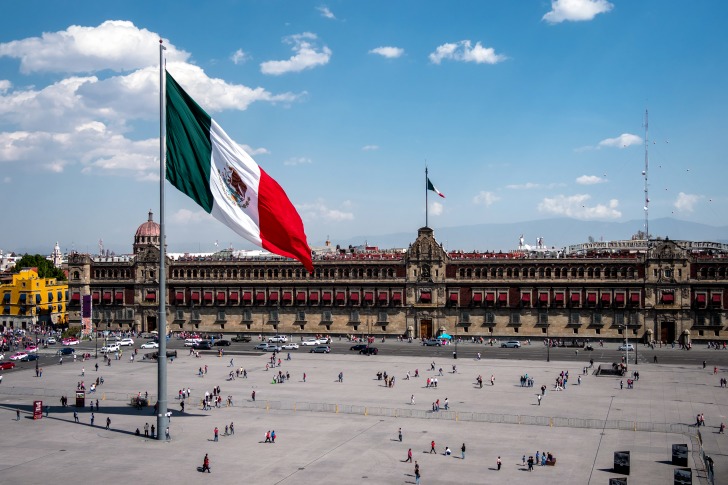
As you probably know, Mexico is a southern border country of the United States .
The Pacific Ocean lies to the west, and Guatemala to the south.
The current population of the country is about 129,830,000.
Mexico as a whole tends to get a bad rap.
However, for millions of us that have visited, we can attest that it’s not exactly what it’s made out to be.
From the beautiful resort areas of Cancun and Playa Grande to the amazing historical landmarks like the Tulon Ruins and the ancient Aztec Templo Mayor, Mexico has a lot of awesome qualities.
However, like every other country, Mexico does have a dark side.
Due largely to the drug cartels and organized crime (which includes human trafficking).
In 2021, there were over 43,900 murders and 625 kidnappings in the country.
Sadly, a recent Gallup poll revealed that only 48% of Mexican people feel safe at night in their neighborhoods.
Over the years, the United States has issued several warnings to Americans traveling to tourist destinations.
Just recently,(March of 2023), 4 American tourists were kidnapped, and 2 were found murdered.
Vacation seekers visiting Mexico are asked to use caution and common sense.
That being said, it’s probably a good idea to avoid the following 10 most dangerous cities in Mexico.
We’ve based our rankings on murder rate data, government advisories, and overall reports of crime by locals and visitors.
10. Obregon, Mexico
9. uruapan, mexico , 8. culiacan, mexico, 7. coatzacoalcos, mexico , 6. irapuato, mexico, 4. juarez, mexico , 3. victoria, mexico , 2. acapulco, mexico , 1. tijuana, mexico , 5 safety tips for traveling to mexico , mexico safety overview, when is the best time to travel to mexico, what languages are spoken in mexico, is the water safe to drink.
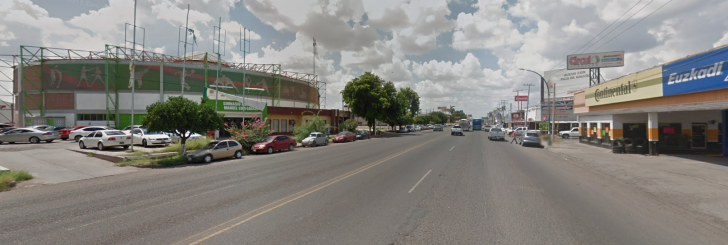
With a population of 436,400, Obregon is known for its lush mountains and food culture.
But the natural beauty and delicious food are unfortunately overshadowed by crime.
The overall rate of crime is 93 per 100,000 and includes a high number of muggings, carjackings, robberies, and drug dealing.
A poll conducted on local residents found that only 22% of people felt safe walking around during the day.

Uruapan is a large city with a population of just over 356,700 people.
Founded in 1533, this historic town is filled with beautiful architecture and several bodies of water.
People often visit just to see the cascading waterfalls.
However, tourists must also be on the lookout when coming to this bustling city.
The crime rate is 89 per 100,000 people.
There is a large amount of drug use and dealing that goes on within Uruapan.
This often leads to muggings, carjackings, and armed robberies.
Many of the businesses are also used by drug dealers as fronts, so even going to a bar or arcade can be dangerous.
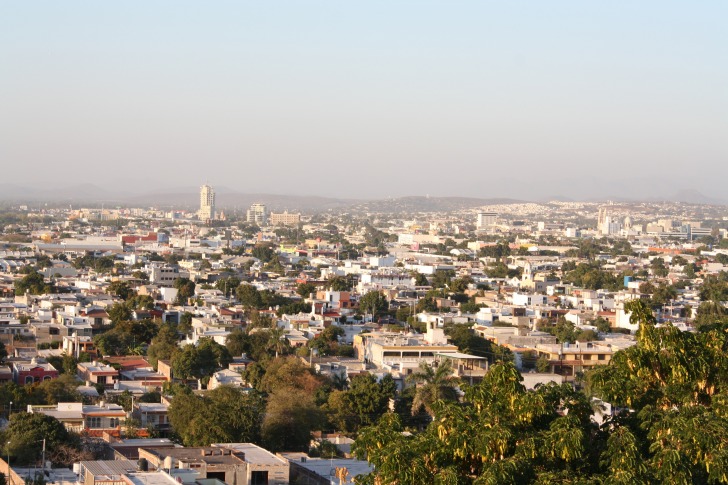
Once a low-level crime area, Culican crime rates have increased over the past 3 years.
The overall crime rate is 84 per 100,000 people.
The city has also become embroiled in cartel wars.
It was the site of a deadly turf battle that occurred after the arrest of Ovidio Guzman , son of the infamous organized crime leader, El Chapo.
The homicide rate in Culiacan is 61 per 100,000 people, making it an unstable place to live and visit.
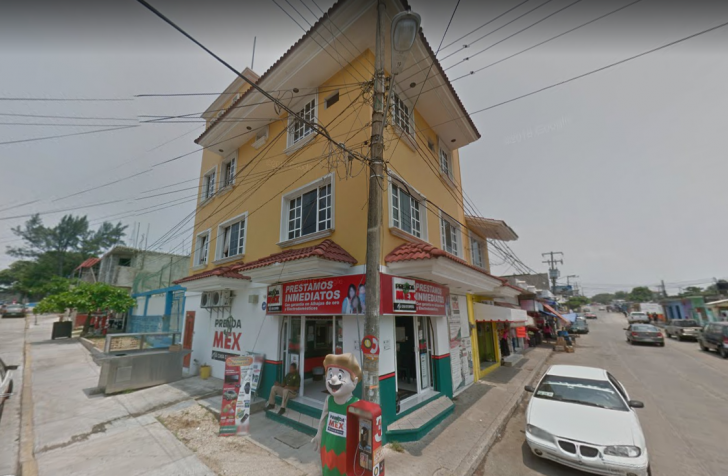
Coatzacoalcos is a major port city at the southern end of the Gulf Of Mexico.
Founded in the 1500s, it’s rich in history, from ancient architecture to cultural artifacts.
Sadly, it’s also got an overall crime rate of 92 per 100,000.
Though the murder rate is lower than in other places, there are very high rates of assaults, robberies, muggings, and drug dealing.
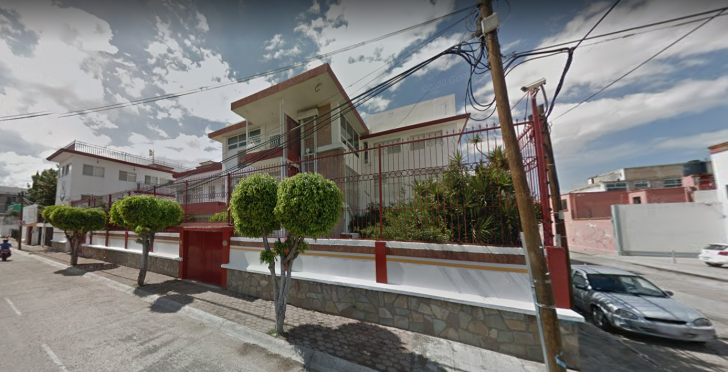
Known for its strawberry fields, as well as corn and chickpea crops, Irapuato is also a dangerous place for residents and visitors alike.
Last year, there were 81 homicides per 100,000 people.
The violence the drug cartels wage on each other often spills over onto innocent people.
Several disturbing videos have surfaced showing mass shootings occurring in bars and clubs.
The US government recommends not traveling to Irapuato, because tourists are often the victims of assault, armed robbery, and kidnapping.
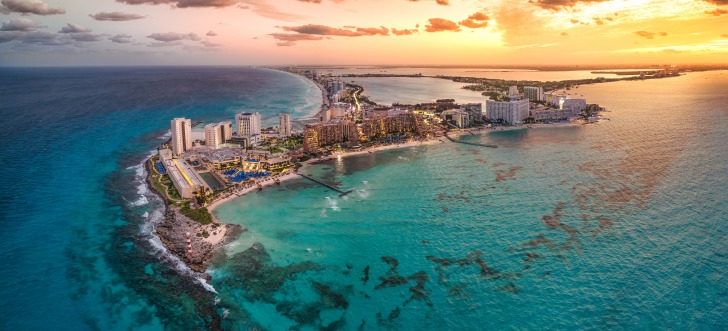
Located on the Caribbean Sea, Cancun has been an iconic vacation destination for decades.
The city is divided into 2 specific areas, the downtown center and the hotel zone (resorts).
Though the resorts are, for the most part, well-patrolled and secure, recently, several incidents have made Cancun less attractive to visit.
While the murder rate is lower than in other areas, at 64 per 100,000 people, cartel-related crime has increased.
Crimes against tourists have been on the rise, including robbery, assaults, and scams.
The Mexican government instituted several regulations regarding Airbnb, bars, and nightclubs in an effort to keep tourists safe.
It is recommended that people stay within the resort areas.
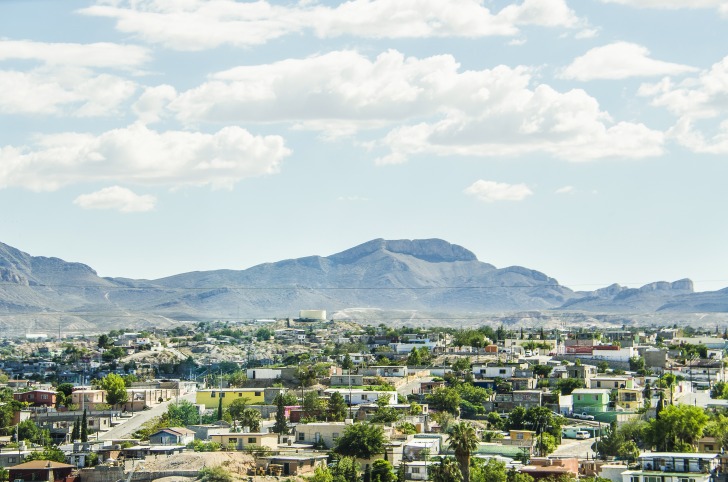
The city of Juarez has a population of 1.5 million and is situated on The River Grande just south of the Texas border.
In fact, residents of El Paso can see Juarez from the other side of the river.
While Juarez is rich in history and culture, it’s also gotten a reputation as a staging area for drug smuggling, gun running, and human trafficking.
The murder rate in Juarez is 86 per 100,000 people.
If you must visit Juarez, it’s strongly recommended that you stay with a group, don’t wander into less populated areas, and don’t go out at night.
Also, be especially weary of taxis and pickpockets.
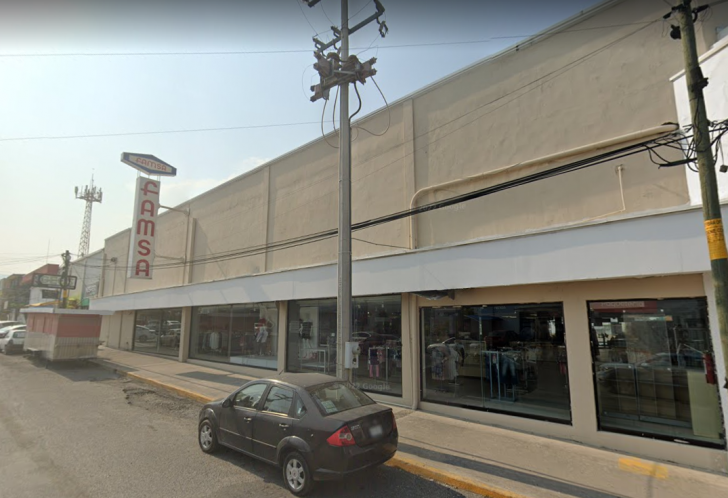
Victoria has a population of approximately 380,000.
The city is a major manufacturing hub, producing auto parts, clothing, and microchips to name a few.
The rural outskirts also produce citrus fruits, sugarcane, and corn.
For the most part, Victoria is full of hard-working people.
Unfortunately, it’s yet another Mexican city that is used by the drug cartels to move their products.
This leads to many shootouts between rival gangs, as well as the police.
This is the main reason it has a murder rate of 86 per 100,000 people.
Street gangs are also common in the city, which leads to robbery and assaults on innocent people.
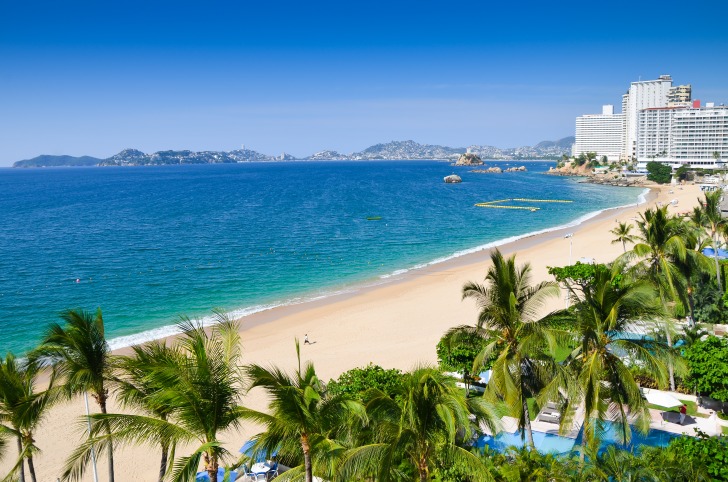
If you’re a person of a certain age, Acapulco may stir up thoughts of the Love Boat, as it was a usual port of call for the ship.
Once known as a vacation spot for the rich and famous, Acapulco now has the second-highest murder rate in Mexico.
With 111 homicides per every 100,000 people.
The main reason for this is the many poppy fields that exist in the rural areas of Guerrero (of which Acapulco is a part).
Presently, there are 20 drug cartels fighting over control of those fields so they can produce heroin.
The turf wars, drug trade, assaults, and kidnappings have become so common that the United States has banned all government officials from visiting Acapulco.
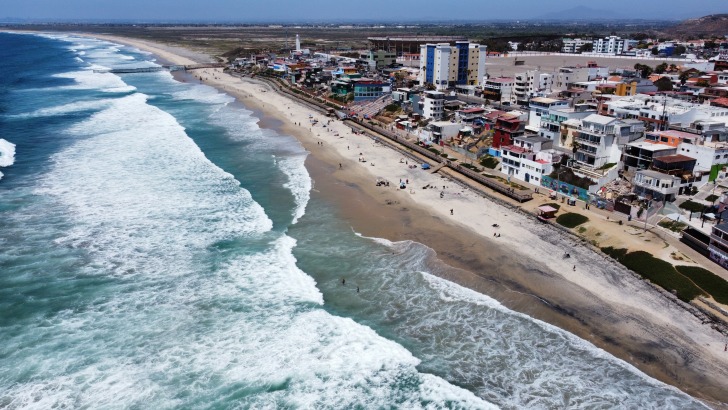
Literally, at the border of San Diego , California , Tijuana sees many folks day-tripping to the city.
There are stark differences in the experience most tourists have as opposed to what it’s like for its 2,050,000 residents.
Once the Mexican wedding capital, it’s now the murder capital of the country, as well as one of the most dangerous cities in the world.
In December of 2022, Tijuana reached over 2,000 murders for the year.
That’s 138 per 100,000 people.
The city is overrun with cartels that manufacture, deal, and transport fentanyl.
Unfortunately, drugs breed violence and other crimes.
Common occurrences in Tijuana include robbery, drive-by-shootings, and kidnappings.
However, the majority of day tourists say they’ve never had a problem.
If you plan on visiting, it’s important to stay within the well-patrolled areas.
Also, don’t draw attention to yourself, beware of scams (hotels, taxis, tours, etc), and, for goodness sake, don’t make trouble for yourself.
This includes trying to buy anything that may be illegal.
- Be careful when renting a car, hailing a taxi, or ordering an Uber. There are tons of scams surrounding transportation. Take the bus if you can. Mexico’s public transportation is great!
- Don’t travel outside of resort areas at night.
- Avoid protests. Not only can they turn violent, but it’s illegal for foreigners to take part in them. You don’t want to be caught up in the Mexican legal system.
- Avoid isolated areas. Stay with a group in well-populated and patrolled areas.
- Don’t draw attention to yourself. That means, don’t flash money, don’t overdress, wear a lot of jewelry, or look like you’re lost.
READ THE FULL REPORT: Mexico Safety Review
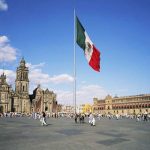
- OVERALL RISK: MEDIUM
- TRANSPORT & TAXIS RISK: LOW
- PICKPOCKETS RISK: HIGH
- NATURAL DISASTERS RISK: LOW
- MUGGING RISK: MEDIUM
- TERRORISM RISK: LOW
- SCAMS RISK: HIGH
- WOMEN TRAVELERS RISK: LOW
Frequently Asked Questions
The best time to visit Mexico is from December to April.
That’s the dry season.
Spanish is the official language of Mexico.
English is often spoken, especially in the resort area.
Foreign travelers should avoid drinking tap water.
Bottled water is fine to drink.
Additional Resources
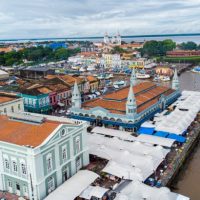
2 Comments on 10 Most Dangerous Cities In Mexico
It’s essential to be aware of safety concerns, and lists like these provide a valuable reminder of the challenges some cities face. Let’s hope for community efforts to improve safety.
These lists serve as a reminder that safety is a shared responsibility. Let’s hope for positive changes in these cities to create safer environments for everyone.
Leave a Comment Cancel reply
Popular destinations.

Safety Index
Recent reviews & comments.
- Anonymous on Venezuela
- Sam on Stockholm
- Jose Canete on Vietnam
- Kentson Anttila on 16 Pros and Cons of Living in Finland
- Michael Shapiso on Davidson
Popular US States
- Pennsylvania

The 15 Most Dangerous Cities in Mexico According to Experts
As someone who has lived in Mexico since 2018 , and traveled to more than half the states in the country — I know Mexico is an incredible place filled with vibrant culture, breathtaking nature, amazing food, and rich history.
However, it’s crucial to be informed about the safety risks that come with visiting certain parts of the country.
In this article, I’m going to highlight the 15 most dangerous cities in Mexico, along with practical safety tips to help you navigate your Mexico travels more securely.
Why is Mexico so dangerous?

Danger comes in many forms, including environmental dangers like tornadoes and landslides, but this article is about the dangers associated with crime.
Below, you’ll discover some of the factors contributing to high crime rates in Mexico — but if you’re very concerned, make sure you get Mexico travel insurance for peace of mind.
1. Drug Cartel Activities
Mexico’s high crime rates are significantly influenced by the activities of powerful drug cartels .
These criminal organizations, including the Sinaloa Cartel, Jalisco New Generation Cartel, and others, have a stronghold in various regions.
Their influence extends to drug trafficking, extortion, and violent confrontations, affecting both local communities and travelers.
The presence of these cartels often leads to increased crime rates and a general atmosphere of insecurity.
2. Socio-Economic Inequality
Another critical factor contributing to crime in Mexico is socio-economic inequality .
There is a strong connection between poverty and crime, as individuals in impoverished areas may turn to illegal activities out of desperation.
Income inequality exacerbates violence, leading to higher crime rates in regions where economic disparities are most pronounced.
You’ll especially see these disparities in cities where affluent neighborhoods are juxtaposed with impoverished communities, creating a breeding ground for criminal activities.
3. Government Corruption
Corruption within law enforcement and government institutions in Mexico play a significant role in allowing crime to flourish.
When officials are corrupt, they may turn a blind eye to criminal activities or even participate in them, undermining efforts to maintain law and order.
Notable cases of corruption in Mexico related to crime have been reported, further eroding public trust in authorities, and contributing to the overall crime problem.
The 15 Most Dangerous Cities in Mexico for Tourists
All of the most dangerous parts of Mexico featured in this list have been ranked by the number of homicides per 100,000 residents.
These cities in Mexico with high murder rates, as well as other types of crime, should be considered among the least safe cities in Mexico to visit for tourists.
Information for this article to determine the most dangerous Mexican cities was sourced from the U.S. State Department travel advisories, World Population Review , Numbeo and Statista .
1. Tijuana, Baja California

- Murder rate per 100,000 residents: 138 (Source: World Population Review)
- U.S. State Department Warning Level: Tijuana is in Baja California state, which has a Level 3: Reconsider Travel To warning.
- Most dangerous neighborhoods in Tijuana: Centro, Rio, Sanchez Taboada, Zona Norte
Located on the U.S.-Mexico border, Tijuana is a bustling city known for its vibrant culture and nightlife. However, it’s also one of the most dangerous cities in Mexico.
Tijuana has consistently high crime rates, particularly in terms of homicides and drug-related violence.
In fact, the city recorded more than 2,000 homicides in 2020 — making it one of the deadliest cities in the world.
Most incidents in Tijuana involve cartel-related violence, including shootouts and assassinations, particularly in the Zona Norte and Zona Centro areas.
Local authorities in Tijuana have implemented various measures to combat crime in tourist areas, including increased police presence and community outreach programs.
While the effectiveness of these efforts is debated, Tijuana Mexico remains very popular with U.S. tourists driving across the border for weekend trips.
Still, statistically-speaking, it is the most dangerous city in Mexico.
⚠️ Tijuana Safety Tips
- Avoid areas known for gang activity, particularly at night.
- Stick to well-populated and tourist-friendly zones.
- Be cautious with personal belongings and avoid displaying valuables.
2. Acapulco, Guerrero
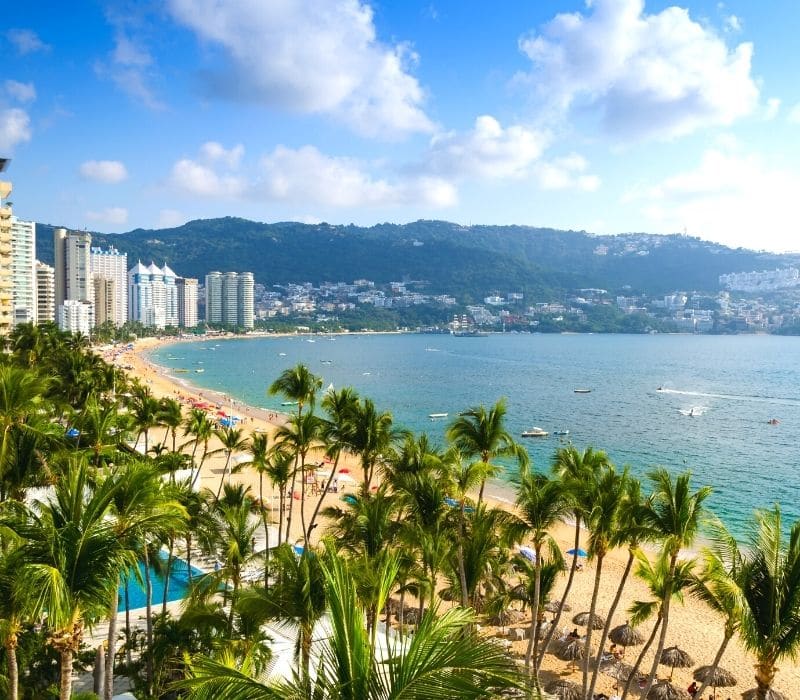
- Murder rate per 100,000 residents: 111
- U.S. State Department Warning Level: Acapulco is in Guerrero state, which has a Level 4: Do Not Travel To warning.
- Most dangerous neighborhoods in Acapulco: Ciudad Renacimiento, El Coloso, Emiliano Zapata, La Laja, Jardín Mangos
One of the top Mexico resort towns , it might seem bizarre to include Acapulco on a list of risky Mexican cities.
While much of the city boasts safety and hospitality towards tourists, with numerous upscale resorts and hotels enticing visitors seeking a lavish Mexican getaway.
However, beyond these opulent tourist hubs, Acapulco presents significant safety concerns.
Regrettably, Acapulco visitors should limit exploration beyond the immediate resort vicinity — In other words: Don’t venture far from the resorts.
Venturing outside the confines of the resort area reveals prevalent poverty and quality of life issues, contributing to heightened crime rates in one of Mexico’s least secure destinations.
⚠️ Acapulco Safety Tips
- Stay within designated safe zones, like the Acapulco beaches and resort area.
- Avoid isolated areas, especially after dark.
- Use reputable transportation services, and avoid hailing taxis on the street.
3. Ciudad Victoria, Tamaulipas

- Murder rate per 100,000 residents: 86
- U.S. State Department Warning Level: Ciudad Victoria is in Tamaulipas state, which has a Level 4: Do Not Travel To warning.
- Most dangerous neighborhoods: Northern Ciudad Victoria (all of it)
Plagued by violence from Mexican cartels, Ciudad Victoria is considered one of Mexico’s most perilous destinations.
Despite its allure as one of the country’s most beautiful colonial cities, it’s regarded as a no-go area for Latin America visitors because of alarming homicide rates.
Sadly, Ciudad Victoria isn’t considered safe for local residents nor international travelers, and is one of the most violent cities per capita in Tamaulipas state.
Its strategic location along a key drug smuggling route between the U.S. and Mexico has precipitated the city’s deterioration in recent times.
In fact, Tamaulipas state is often considered the most dangerous state in Mexico.
⚠️ Ciudad Victoria SAFETY TIPS
- If you’re driving, use only main roads and well-traveled routes.
- Download the iOverlander App so you can connect with people who are currently driving in the area.
- Stay informed about current safety advisories and changes to the Mexico crime rate.
4. Ciudad Juárez, Chihuahua

- U.S. State Department Warning Level: Ciudad Juarez is in Chihuahua state, which has a Level 3: Reconsider Travel To warning.
- Most dangerous neighborhoods in Ciudad Juarez: Delicias, Aldama, Babicora Sur
Ciudad Juárez (often just called Juárez) is located in northern Mexico, close to the border with El Paso, Texas.
It’s one of the most dangerous cities in Mexico — though the El Paso Crossing is one of the most-used border crossings , so exercise extra caution if you’re driving.
Over the past few decades, Juárez has experienced significant population growth, but as the city expanded, the crime rates have risen accordingly.
This has earned Juárez a spot on the list of cities tourists should avoid in Mexico due to safety concerns.
Tragically, the high number of lives lost in Juárez places it among the top 50 most dangerous and violent cities in the world.
⚠️ Ciudad Juárez SAFETY TIPS
- Use main roads and well-traveled routes.
- Avoid border areas known for smuggling and violence.
- Stay informed about current safety advisories and changes to the crime rate in Mexico.
5. Irapuato, Guanajuato

- Murder rate per 100,000 residents: 81
- U.S. State Department Warning Level: Irapuato is in Guanajuato state, which has a Level 3: Reconsider Travel To warning.
- Most dangerous neighborhoods in Irapuato: Central Irapuato (all parts)
Irapuato, while not as popular with tourists as some major Mexican cities on this list, has gained a reputation for being relatively unsafe.
Tourists should exercise caution because of the increasing crime rates in recent years, particularly kidnappings, violence, and drug trafficking.
While Irapuato has had a relatively safe past, conflicts between rival cartel groups have made it hazardous, posing risks to both tourists and locals.
Despite numerous things to do in Irapuato, like parks, zoos and shopping centers, visitors should exercise caution and remain vigilant while exploring the city.
⚠️ Irapuato SAFETY TIPS
- Avoid public places known for gang activity.
- Stay in well-reviewed hotels , and avoid venturing out alone.
- Be aware of your surroundings, and avoid displaying valuables.
6. Cancún, Quintana Roo

- Murder rate per 100,000 residents: 64
- U.S. State Department Warning Level: Irapuato is in Quintana Roo state, which has a Level 2: Exercise Increased Caution warning.
- Most dangerous neighborhoods in Cancun: Bonfil, Tres Reyes, Santa Cecilia, Valle Verde
Despite being the most-visited destination in Mexico for MANY years now, and like most cities with a lot of tourists, Cancun harbors a darker side.
Beyond its luxurious all-inclusive resorts and beautiful beaches, this coastal destination grapples with a high incidence of violent crime, particularly murder.
While tourists are generally safe within monitored areas, like the Cancun Hotel Zone, they should steer clear of the unsafe Cancun neighborhood on the outskirts of town.
⚠️ Cancun SAFETY TIPS
- Stick to the Zona Hotelera (hotel zone on the beach), and avoid venturing into less touristy areas.
- Be cautious when accepting offers from strangers.
- Use trusted transportation options, and avoid hailing taxis on the street.
7. Culiacán, Sinaloa

- Murder rate per 100,000 residents: 61
- U.S. State Department Warning Level: Culiacan is in Sinaloa state, which has a Level 4: Do Not Travel To warning.
- Most dangerous neighborhoods in Culiacan: La Retama, El Cóporo, El Seminario, Zopilocalco, Santa Bárbara, Santa Ana
Culiacán, located near the popular Mexican beach town of Mazatlán, is unfortunately among the least safe places to visit in Mexico.
Despite its attractions like nearby beaches, hot springs, malls, parks, and water parks, tourists often avoid this city due to its sinister reputation.
Culiacán is known as the stronghold of the powerful Sinaloa Cartel, and the infamous Mexican drug lord known as El Chapo is from a small town not far from here.
While relatively safe in tourist-friendly zones, exploring other parts of the city is not advisable because of high crime rates in one of the worst cartel cities in Mexico.
⚠️ Culiacán Safety Tips
- Avoid areas with known cartel activity.
- Travel in groups, and avoid venturing out at night.
- Stay in secure accommodations with good reviews.
8. Uruapan, Michoacán

- Murder rate per 100,000 residents: 55
- U.S. State Department Warning Level: Uruapan is in Michoacán state, which has a Level 4: Do Not Travel To warning.
- Most dangerous neighborhoods in Uruapan: The Central and South parts of Uruapan
Uruapan, one of the older cities in Mexico that was founded in 1533, holds significant historical and cultural importance.
It’s a magnet for history enthusiasts due to its rich heritage and numerous landmarks that attract visitors from around the globe.
Despite its historical significance and natural beauty, Uruapan is not currently a top recommendation for tourists.
In recent years, it has gained attention for a surge in cartel-related crime from the so-called avocado cartels that often take violent revenge against advisories.
Violent crime rates continue to rise unabated in Uruapan and all Michoacan, which often ranks as one of the most dangerous states in Mexico.
9. Ciudad Obregón, Sonora

- Murder rate per 100,000 residents: 52
- U.S. State Department Warning Level: Ciudad Obregon is in Sonora state, which has a Level 3: Reconsider Travel To warning.
- Most dangerous neighborhoods in Ciudad Obregón: The northern areas located near the U.S. border
As you might have noticed, many of the most dangerous Mexico cities are the ones located near the U.S.-Mexico border.
Ciudad Obregón is no exception, and yet another city plagued by violence that tourists should steer clear of.
The presence of drug cartels has escalated gang violence, resulting in a rise in shootings, kidnappings, murders, and assaults.
Once considered a picturesque and tourist-friendly destination, Ciudad Obregón has now become a place best avoided, or approached with extreme caution, despite its abundance of natural beauty.
10. Coatzacoalcos , Veracruz

- Murder rate per 100,000 residents: 48
- U.S. State Department Warning Level: Coatzacoalcos is in Veracruz state, which has a Level 3: Reconsider Travel To warning.
- Most dangerous neighborhoods in Coatzacoalcos: La Bahía de San Martín, Cxala, Unidad Habitacional ISSFAM (U.H. ISSFAM)
Nestled along the Mexican coastline in Veracruz state, Coatzacoalcos boasts a rich history and cultural allure. It is also the birthplace of Mexican actress Salma Hayek.
This coastal gem offers visitors a plethora of unique experiences where visitors can immerse themselves in the vibrant tapestry of Mexican culture .
Despite its charms, travelers should exercise caution when visiting Coatzacoalcos, as it ranks among the less safe destinations in Mexico.
While a brief excursion of the coast is enticing, you might not want to prolong your stay because tourists have expressed unease about venturing alone or after dark.
Also, Coatzacoalcos grapples with criminal activities ranging from property crimes, vandalism and theft, to severe offenses like armed robbery and assault (Source: Numbeo)
11. Celaya , Guanajuato

- Murder rate per 100,000 residents: 47
- U.S. State Department Warning Level: Celaya is in Guanajuato state, which has a Level 3: Reconsider Travel To warning.
Celaya boasts museums, captivating architecture, and a notable presence of candy manufacturers.
However, Celaya has recently experienced an uptick in violence, largely attributed to the Santa Rosa de Lima Cartel as it endeavors to protect its interests.
For those who want to explore Guanajuato state, there are safer places nearby you can check out, like Guanajuato City and San Miguel de Allende .
12. Ensenada , Baja California

- U.S. State Department Warning Level: Ensenada is in Baja California state, which has a Level 3: Reconsider Travel To warning.
Similar to Acapulco, the tourist-friendly parts of Ensenada are very safe. However, Ensenada also harbors some darker aspects in the surrounding areas.
The fourth-largest municipality in Mexico, it’s renowned for wine festivals in nearby Valle de Guadalupe , and vibrant celebrations, like Carnaval in Mexico .
Beyond the bustling city center, instances of violent killings are unfortunately frequent, indicating a significant concern regarding safety outside the urban core.
13. Tepic , Nayarit

- Murder rate per 100,000 residents: 45
- U.S. State Department Warning Level: Tepic is in Nayarit state, which has a Level 2: Exercise Increased Caution warning.
Tepic is situated in a fertile agricultural region, known specifically for sugarcane and tobacco production.
The capital city and largest city of Nayarit state, Tepic is also a vital urban hub.
Regrettably, Tepic grapples with rampant gang activity, earning it the unfortunate distinction of being the 36th most dangerous city globally.
Tourists are strongly advised to steer clear of this city, due to its status as a hotspot for cartel violence.
Though Tepic presents safety concerns, there are other places to visit in Nayarit state. These include the beach towns of Riviera Nayarit, like Sayuilta and Guayabitos.
14. Reynosa, Tamaulipas

- Murder rate per 100,000 residents: 41
- U.S. State Department Warning Level: Reynosa is in Tamaulipas state, which has a Level 4: Do Not Travel To warning.
Reynosa, a border city located in Northern Tamaulipas, lies close to the Texas border.
There are a lot of great things to do in Reynosa, but despite its cultural attractions, Reynosa poses significant risks of carjackings and robberies.
The city is also notorious for drug trafficking, kidnapping, and violence, making such incidents commonplace.
Due to its high crime rates, Reynosa raises serious safety concerns for both residents and visitors.
15. Chihuahua City, Chihuahua

- Murder rate per 100,000 residents: 38
- U.S. State Department Warning Level: Chihuahua City is in Chihuahua state, which has a Level 3: Reconsider Travel To warning.
Chihuahua, the capital of the Mexican state of Chihuahua, is renowned for stunning natural landscapes, including gorges and canyons, and Spanish Baroque architecture.
Despite these attractions, the U.S. State Department advises travelers to think twice before visiting this Mexican city.
Chihuahua is not considered safe for tourists due to violent crime, gang activity, a concerning number of murders, and drug cartel influence.
Like so many other cities, the presence of drug cartels leads to frequent violent incidents that affect locals and travelers alike.
Practical Safety Tips for Travelers in Mexico

Understanding the risks associated with traveling to certain cities in Mexico is crucial for a safe and enjoyable trip.
By staying informed, taking necessary precautions, and following practical safety tips, you can minimize potential dangers and make the most of your travel experience.
Stay vigilant, be cautious, and enjoy the beauty and culture that Mexico has to offer.
General Safety Advice
- Stay Informed and Aware: Keep yourself updated on the current safety situation in the areas you plan to visit. Follow local news and advisories.
- Use Trusted Transportation: Opt for registered taxis, ride-sharing services like Uber, or hotel-arranged transportation. Avoid hailing taxis on the street.
- Avoid Risky Areas and Times: Stay away from areas known for criminal activity, especially after dark. Stick to well-populated and tourist-friendly zones.
Emergency Contacts and Resources
- Important Phone Numbers: Keep a list of emergency contacts, including local police, medical services, and your country’s embassy or consulate .
- Local Embassy Contacts: Know the location and contact information of your country’s embassy or consulate in Mexico for assistance in case of emergencies.
Travel Insurance
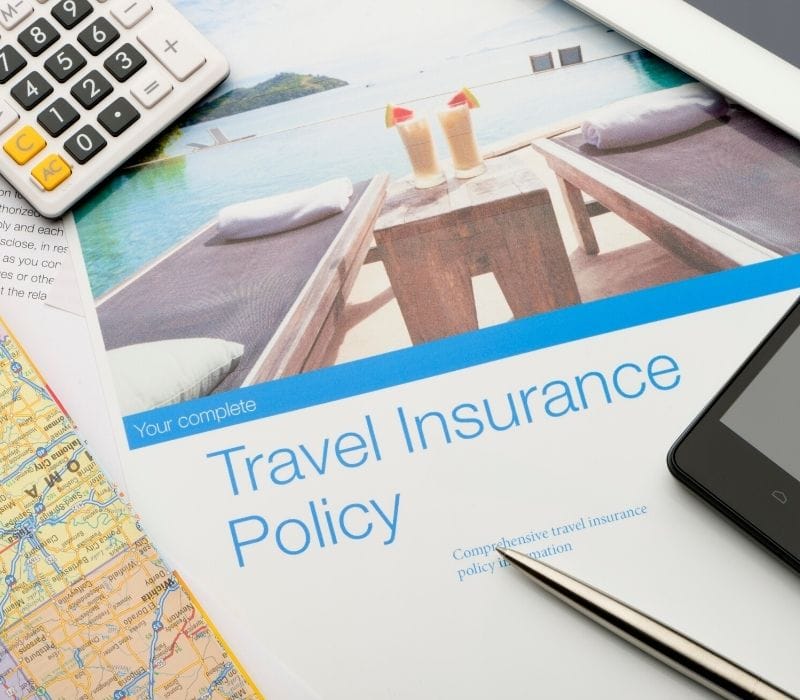
- Importance of Having Travel Insurance: Ensure you have comprehensive travel insurance that covers medical emergencies, theft, and other unexpected incidents.
- What to Look for in a Policy: Choose a policy that offers extensive coverage, including emergency evacuation and medical treatment — the company I have used since 2022 is SafetyWing Insurance. You can get a FREE quote here .
Key Takeaways from this Article
1. Of the most dangerous cities in the world per capita, 7 out of 10 are in Mexico, with familiar places like Tijuana and Ensenada on the list. (Source: Statista)
2. The #1 factor attributed to Mexico’s high crime rates is drug cartel activities, but socio-economic inequality, and corruption also contribute.
3. Mexico travelers should practice general safety measures, like remaining aware of your surroundings, yourself and your belongings at all times. This is especially true in Mexico’s top destinations , where tourist scams target visitors.
4. According to the Global Peace Index , Mexico is the 24th least peaceful country in the world (making it the 140th most peaceful country in the world).
5. The following government travel advisories provide additional helpful resources for your destination to stay safe and informed:
- 🇺🇸 Mexico Travel Advisories from the United States
- 🇨🇦 Mexico Travel Advisories from Canada
- 🇬🇧 Mexico Travel Advisories from the U.K.
- 🇦🇺 Mexico Travel Advisories from Australia
The 11 Most Dangerous Places in Mexico: Deadliest Cities

Just under 100 million people visit Mexico every year. They’re drawn down south for all sorts of reasons. From the golden beaches of the Pacific coast to the ivory-white sands of the Yucatan , the mystical temples of Chichen Itza to the taquerias of Mexico City, the hills of Oaxaca to the tequila-soaked villages of Jalisco, there’s loads to get through. But what are the most dangerous places in Mexico that everyone should avoid?
Sadly, there’s no shortage of them. Mexico has a bit of a bad rep when it comes to crime and whatnot. Five of the six most murderous cities on the planet are here. There are a whopping 14,000+ cartel-related homicides in the country in a normal year. There have even been reports of drug-related violence spilling into sun-kissed tourist resorts in recent years.
Now we’re not saying don’t go to Mexico. Not at all. This is one seriously incredible country; a land of rich Mayan history, wild jungles, and beaches the likes of which you’ll never encounter again. However, it’s important to be careful and to plan accordingly, which is where this list of the most dangerous places in Mexico can be of help…
Table of Contents

Home to the busiest land border crossing in the world, Tijuana sees more than 50 million people pass through every year. That’s one stat. Another is more shocking: A murder rate of 134 per 100,000 head of population. That translates to over 2,300 killings per year and makes the town the most murderous city on the planet by quite some way!
Really, it’s all down to the geography. Just check where Tijuana is on the map. Plonked neatly on top of the US-Mexico border right below San Diego, it’s unsurprisingly become something of a hotspot for traffickers and cartels. In fact, it’s been fought over by some of the most powerful cartels in the country since the early 1980s and things haven’t really let up since then.
Thing is, much of the violence in Tijuana is limited to specific areas. Thousands of day and night visitors still cross to enjoy the shopping of Downtown Tijuana and the party venues of Avenida Revolucion, where you can sample authentic tacos and hit cool bars, not to mention score cheap pharmaceuticals galore. However, there are certain areas to avoid completely, like the Zona Norte red-light district and the neighborhoods to the east of the town center.
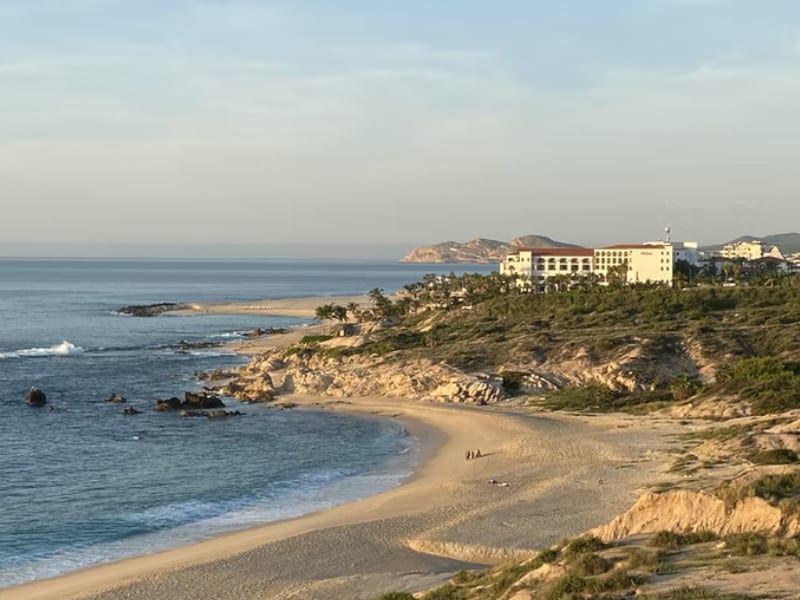
Capping off the lovely Baja California Sur peninsula, Los Cabos is a major tourist hotspot. It has gold-sand beaches, amazing whale watching, and glassy surf breaks, not to mention a reputation for hedonism and luxury that keeps everyone from spring breakers to jet-setter celebs coming back for more.
That’s all despite the fact that it is arguably the most dangerous city in Mexico. To put it in perspective, in 2017, the city had 328,245 residents and a total of 365 homicides reported. That translates to a murder rate of just over 110 per 100k people, putting it roughly in line with the top two most deadly cities on the planet (both of which happen to be in Mexico!).
The New York Times have reported that shootings in Los Cabos indicate conflicts by cartels battling over territory. They do, however, make it clear that tourists were not the target in these shootings. What’s more, the vast majority of tourist visits to the town go off without a hitch, so we’d say have your wits about you but don’t be put off coming to see the humpbacks and get your tequila slammers in Cabo Wabo !

Mention Acapulco and it’s usually yellow-tinged sands and sloshing Pacific waters that come to mind. You wouldn’t be wrong – this town was made famous in the 1950s as the spot John Kennedy and Jackie Kennedy chose for their honeymoon. They came, they sunbathed, they were transformed into fashion icons.
However, Acapulco is a whole load more dangerous than it was back then. The city has seen a surge of violence caused by drug trafficking and warring cartels. The homicide rate in 2022? Are you ready for this? It was a whopping 110 per 100k of population. That makes salt-washed Acapulco the second deadliest town in the world. We’re pretty sure the Secret Service would have something to say about JFK coming back these days!
Of course, lots of people do still come for vacations of jet skiing and hiking in the Sierra Madre. Many won’t even leave the confines of their hotel resort it’s that dangerous. We’d probably follow suit.

It might seem a little ironic that a place with the name La Paz , which means “peace” in Spanish, hits this list of the most dangerous places in Mexico. But so it is in this nation where cartel-fueled violence can collide with serene beaches in the blink of an eye; where even the most picturesque colonial hill towns can be spots you need to watch your back.
This is the capital city of Baja California Sur. Sat amid rugged sierras topped with scraggly cacti and taupe-colored beaches that roll straight off the desert, it’s long been a popular escape for US vacationers keen for that hit of Mexicana life. It’s actually even closer to the America-Mexico border than Cabo!
Although there are no travel restrictions when it comes to La Paz, the crime rate makes most visitors think twice about spending their vacation here. According to the Los Angeles Times , perhaps the biggest concern for travelers is the fact that some of the homicides are taking place close to airports. They also report a soaring rate of violence in recent years, much of it centered on those ever-popular beaches .

As with other cities in the Mexican state of Tamaulipas, the crime rate here continues to rise, mostly due to rival drug cartels operating in the area. According to Business Insider , much of the bloodshed is caused by shootouts between rival gang members and the police. The major drug cartel in the area is the hyper-violent Zetas group, who have been making big moves to claim the territory from the Gulf cartel in recent times.
Thing is, Reynosa is right there, smack dab on the border with Texas. It’s literally a stone’s throw from the spur-spinning Lone Star State at some points, which has led to concerns that the crime will spill over into the US or cause issues for cross-border American travelers passing through on their way to other parts of Mexico.
If you’re one of them, then you should also know that basically the WHOLE of the surrounding state of Tamaulipas is considered pretty unsafe. Reynosa sees just about a fifth of the overall homicides of the region, and cartels are active from here all the way to Ciudad Mante in the far south.

There was a time when it was the state of Sinaloa that would strike fear into the hearts of readers. After all, that was the epicenter of the hit Netflix drama Narcos: Mexico . Fast forward to 2023 and it’s actually not all that bad. Towns like Culiacán have seen a whopping 50% reduction in violent crime rates in just five years.
And so the spotlight shifts to Michoacán, a state that’s had such awful stats for murders and kidnappings that there’s been an almost consistent State Department warning against travel since 2008. Within Michoacán itself, it’s the city of Zamora that really stands out like a sore thumb…
The town clocked up the worst murder stats in the world in 2021, with 610 homicides in the 365-day period. On top of that, there were out-of-control rates of kidnapping and theft, auto crime and house theft. Look, it’s just not somewhere you want to be right now! If you must head to this region, stick to Morelia , the romantic state capital, where crime stats are nowhere near as bad.
Ciudad Juarez
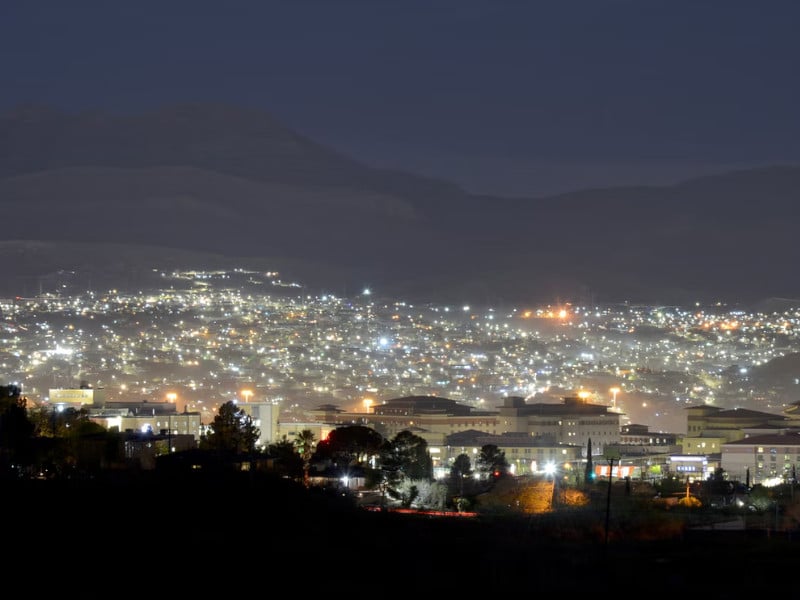
Ciudad Juarez is the highest populated city in state of Chihuahua. Situated on the Rio Grande just south of El Paso in Texas , this is one of the most dangerous cities in Mexico and undoubtedly one of the most dangerous on the planet. In 2022, the place clocked up a murder rate of 67.69 per 100k head of population, making it the 9th worst overall – not just in the home of mezcal and mariachi!
What’s odd for the situation in Juarez is that it’s a major, major destination for US travelers. Thousands of people flock across the urban border crossings each day. Some come for cheap electronics goods or pharmaceuticals. Others come for a hit of Mexicana food. Either way, they’re straying into a town that sees thousands of murders per annum.
That said, a report by the State Department’s Overseas Security Advisory Council stated that US tourists are not a specific target for violence. The council has warned visitors to be aware of burglary, theft, carjacking and robbery, although the main tourist area in the centro aren’t as bad as more crime-ridden out-of-town districts.

There was a time when Colima would have done nothing more than stoke the wanderlust. This is the home of the surf-washed beaches of Manzanillo and the snow-capped volcanoes of the Nevado de Colima. It might be the fourth smallest state in Mexico but it sure does pack a punch on the travel front.
Sadly, you’re probably going to have to hold off a while to visit. Right now, Colima is officially the most murderous city on the planet. It has a soaring per capita murder rate of 181 per 100,000 people. That makes it worse than ANYWHERE, even Port-au-Prince in Haiti where people report pitched gang battles in the street.
Things still aren’t quite as bad here as they got in aforementioned Juarez back in 2010. But we’re talking levels of crime similar to that of major cities in Colombia during the throes of the Pablo Escobar era. Yikes.
Ciudad Obregón

Ciudad Obregón is a large city based in the northern Mexican state of Sonora. It was named after the Mexican president, Álvaro Obregón. The US Department of State has warned that non-essential travel to this city should be halted unless the crime rates drop considerably. The reason? They are currently the third-worst in the world on the murder front.
That adds up to a murder rate of 138/100k head of population, which is just shy of Colima (see above) but still pretty darn awful. Alongside that, you have out-of-control rates of muggings, kidnappings, crimes against women, human trafficking – you name it. It’s probably not the best pick for that upcoming holiday!
If things ever do change then you can look forward to a town that’s a gateway to both the Sea of Cortez and the northern deserts. The wild, pine-studded Sierra de Álamos lurk on one side, and there’s rich whale-watching territory on the other.

It’s the same old story in Irapuato as it is across Mexico. Escalating territory disputes between the two new cartels on the block, the Jalisco Cartel New Generation and the Santa Rosa Lima Cartel, have fueled street violence that’s sent the homicide and gun crime stats to the moon in these parts in the last couple of years.
It’s gotten so darn awful that little Irapuato, home to a mere 500,000 people, now ranks as the sixth deadliest city on the whole planet. Yep – the WHOLE PLANET. That’s because the per capita homicide rate here clocked up past 81.4 per 100k head of population, sending it above the likes of Cape Town in South Africa and Natal in Brazil.
What’s so striking is the speed of Irapuato’s rise to infamy. Ten years ago, the place saw a relatively normal level of street violence (at least, it was normal for Mexico). Then came 2018, which counted more murders than the whole decade that preceded it. Just another warning of how even small provincial cities are not immune to the forever-morphing drug wars of Mexico.
Cancun

Sorry, folks – we know this is a name that lots of readers probably didn’t want to see on this list. However, Cancun has been in the throes of a particularly bad spike in the same cartel-related feuds that have caused chaos in Irapuato in the last five years. Murder rates here have been creeping up, finally hitting a zenith in 2022 at 64.4 per 100,000 population. That’s the 12th worst in the world. Yikes.
What’s so worrying about seeing Cancun falter is that it proves there’s hardly a part of Mexico that’s out of bounds when it comes to the cartel turf wars. This is the quintessential holiday mecca of the country, with white-sand beaches aplenty, nightlife to please any spring breaker, and more lux hotels than you can shake a frosted margarita at.
Visitors to Cancun have been caught up in the violence of recent times, too. Recently, four people were killed in a shooting that took place on one of the town’s idyllic Caribbean beaches. There was also a deadly shooting in a restaurant in 2021 that saw European visitors caught in the crossfire. And there was a brutal assassination in a hotel down on the nearby Maya Riviera to boot. Very worrying. Very worrying indeed!
What is the deadliest city in Mexico?
Colima is currently the deadliest city in Mexico. As of 2022, the mid-sized regional city clocked up a murder rate that made it the most murderous town on the whole planet. There were 601 murders in a population of just 300,000.
How dangerous is Mexico right now?
Mexico certainly is dangerous but it’s very much a case of where you choose to go. The country is vast and there are some places that suffer from high crime rates and bad cartel violence, while others don’t see much at all. That said, we’d also recommend planning well ahead, staying up to date with State Department advice, and steering clear of any of the most dangerous places in Mexico during your travels.
What is the safest place in Mexico?
The coastal town of Tulum is quite possibly the safest place in Mexico . Less touristy than the other resort towns in the Yucatan Peninsula, this town offers great historical structure and is mostly known for its well-preserved Mayan city wall ruins. Other people will say that’s the safest spot is the lovely city of Merida in the Yucatan, a newly founded Digital Nomad hub close to the Caribbean Sea.
For more than 11 years, Joe has worked as a freelance travel writer. His writing and explorations have brought him to various locations, including the colonial towns of Mexico, the bustling chowks of Mumbai, and the majestic Southern Alps of New Zealand. When he's not crafting his next epic blog post on the top Greek islands or French ski resorts, he can often be found engaging in his top two hobbies of surfing and hiking.
Related posts
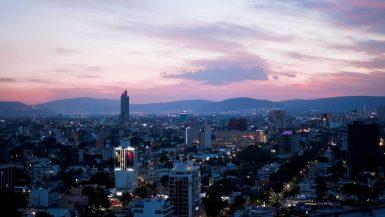
9 Reasons Why You Should Visit Guadalajara

Is Morelia Mexico Worth Visiting? 7 Reasons You Should Visit
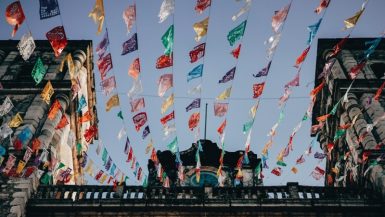
Is Cancun Expensive? Our Expense Guide To The Caribbean Town

Experts Warn Travelers to Avoid These 15 Dangerous Cities in Mexico
As someone who has lived in Mexico since 2018 , and traveled to more than half the states in the country — I know Mexico is an incredible place filled with vibrant culture, breathtaking nature, amazing food, and rich history.
However, it’s crucial to be informed about the safety risks that come with visiting certain parts of the country.
In this article, I’m going to highlight the 15 most dangerous cities in Mexico, along with practical safety tips to help you navigate your Mexico travels more securely.
Why is Mexico so dangerous?
Danger comes in many forms, including environmental dangers like tornadoes and landslides, but this article is about the dangers associated with crime.
Below, you’ll discover some of the factors contributing to high crime rates in Mexico — but if you’re very concerned, make sure you get Mexico travel insurance for peace of mind.
1. Drug Cartel Activities
Mexico’s high crime rates are significantly influenced by the activities of powerful drug cartels .
These criminal organizations, including the Sinaloa Cartel, Jalisco New Generation Cartel, and others, have a stronghold in various regions.
Their influence extends to drug trafficking, extortion, and violent confrontations, affecting both local communities and travelers.
The presence of these cartels often leads to increased crime rates and a general atmosphere of insecurity.
2. Socio-Economic Inequality
Another critical factor contributing to crime in Mexico is socio-economic inequality .
There is a strong connection between poverty and crime, as individuals in impoverished areas may turn to illegal activities out of desperation.
Income inequality exacerbates violence, leading to higher crime rates in regions where economic disparities are most pronounced.
You’ll especially see these disparities in cities where affluent neighborhoods are juxtaposed with impoverished communities, creating a breeding ground for criminal activities.
3. Government Corruption
Corruption within law enforcement and government institutions in Mexico play a significant role in allowing crime to flourish.
When officials are corrupt, they may turn a blind eye to criminal activities or even participate in them, undermining efforts to maintain law and order.
Notable cases of corruption in Mexico related to crime have been reported, further eroding public trust in authorities, and contributing to the overall crime problem.
The 15 Most Dangerous Cities in Mexico for Tourists
All of the most dangerous parts of Mexico featured in this list have been ranked by the number of homicides per 100,000 residents.
These cities in Mexico with high murder rates, as well as other types of crime, should be considered among the least safe cities in Mexico to visit for tourists.
Information for this article to determine the most dangerous Mexican cities was sourced from the U.S. State Department travel advisories, World Population Review , Numbeo and Statista .
1. Tijuana, Baja California
- Murder rate per 100,000 residents: 138 (Source: World Population Review)
- U.S. State Department Warning Level: Tijuana is in Baja California state, which has a Level 3: Reconsider Travel To warning.
- Most dangerous neighborhoods in Tijuana: Centro, Rio, Sanchez Taboada, Zona Norte
Located on the U.S.-Mexico border, Tijuana is a bustling city known for its vibrant culture and nightlife. However, it’s also one of the most dangerous cities in Mexico.
Tijuana has consistently high crime rates, particularly in terms of homicides and drug-related violence.
In fact, the city recorded more than 2,000 homicides in 2020 — making it one of the deadliest cities in the world.
Most incidents in Tijuana involve cartel-related violence, including shootouts and assassinations, particularly in the Zona Norte and Zona Centro areas.
Local authorities in Tijuana have implemented various measures to combat crime in tourist areas, including increased police presence and community outreach programs.
While the effectiveness of these efforts is debated, Tijuana Mexico remains very popular with U.S. tourists driving across the border for weekend trips.
Still, statistically-speaking, it is the most dangerous city in Mexico.
⚠️ Tijuana Safety Tips
- Avoid areas known for gang activity, particularly at night.
- Stick to well-populated and tourist-friendly zones.
- Be cautious with personal belongings and avoid displaying valuables.
2. Acapulco, Guerrero
- Murder rate per 100,000 residents: 111
- U.S. State Department Warning Level: Acapulco is in Guerrero state, which has a Level 4: Do Not Travel To warning.
- Most dangerous neighborhoods in Acapulco: Ciudad Renacimiento, El Coloso, Emiliano Zapata, La Laja, Jardín Mangos
One of the top Mexico resort towns , it might seem bizarre to include Acapulco on a list of risky Mexican cities.
While much of the city boasts safety and hospitality towards tourists, with numerous upscale resorts and hotels enticing visitors seeking a lavish Mexican getaway.
However, beyond these opulent tourist hubs, Acapulco presents significant safety concerns.
Regrettably, Acapulco visitors should limit exploration beyond the immediate resort vicinity — In other words: Don’t venture far from the resorts.
Venturing outside the confines of the resort area reveals prevalent poverty and quality of life issues, contributing to heightened crime rates in one of Mexico’s least secure destinations.
⚠️ Acapulco Safety Tips
- Stay within designated safe zones, like the Acapulco beaches and resort area.
- Avoid isolated areas, especially after dark.
- Use reputable transportation services, and avoid hailing taxis on the street.
3. Ciudad Victoria, Tamaulipas
- Murder rate per 100,000 residents: 86
- U.S. State Department Warning Level: Ciudad Victoria is in Tamaulipas state, which has a Level 4: Do Not Travel To warning.
- Most dangerous neighborhoods: Northern Ciudad Victoria (all of it)
Plagued by violence from Mexican cartels, Ciudad Victoria is considered one of Mexico’s most perilous destinations.
Despite its allure as one of the country’s most beautiful colonial cities, it’s regarded as a no-go area for Latin America visitors because of alarming homicide rates.
Sadly, Ciudad Victoria isn’t considered safe for local residents nor international travelers, and is one of the most violent cities per capita in Tamaulipas state.
Its strategic location along a key drug smuggling route between the U.S. and Mexico has precipitated the city’s deterioration in recent times.
⚠️ Ciudad Victoria SAFETY TIPS
- If you’re driving, use only main roads and well-traveled routes.
- Download the iOverlander App so you can connect with people who are currently driving in the area.
- Stay informed about current safety advisories.
4. Ciudad Juárez, Chihuahua
- U.S. State Department Warning Level: Ciudad Juarez is in Chihuahua state, which has a Level 3: Reconsider Travel To warning.
- Most dangerous neighborhoods in Ciudad Juarez: Delicias, Aldama, Babicora Sur
Ciudad Juárez (often just called Juárez) is located in northern Mexico, close to the border with El Paso, Texas.
It’s one of the most dangerous cities in Mexico — though the El Paso Crossing is one of the most-used border crossings , so exercise extra caution if you’re driving.
Over the past few decades, Juárez has experienced significant population growth, but as the city expanded, the crime rates have risen accordingly.
This has earned Juárez a spot on the list of cities tourists should avoid in Mexico due to safety concerns.
Tragically, the high number of lives lost in Juárez places it among the top 50 most dangerous and violent cities in the world.
⚠️ Ciudad Juárez SAFETY TIPS
- Use main roads and well-traveled routes.
- Avoid border areas known for smuggling and violence.
5. Irapuato, Guanajuato
- Murder rate per 100,000 residents: 81
- U.S. State Department Warning Level: Irapuato is in Guanajuato state, which has a Level 3: Reconsider Travel To warning.
- Most dangerous neighborhoods in Irapuato: Central Irapuato (all parts)
Irapuato, while not as popular with tourists as some major Mexican cities on this list, has gained a reputation for being relatively unsafe.
Tourists should exercise caution because of the increasing crime rates in recent years, particularly kidnappings, violence, and drug trafficking.
While Irapuato has had a relatively safe past, conflicts between rival cartel groups have made it hazardous, posing risks to both tourists and locals.
Despite numerous things to do in Irapuato, like parks, zoos and shopping centers, visitors should exercise caution and remain vigilant while exploring the city.
⚠️ Irapuato SAFETY TIPS
- Avoid public places known for gang activity.
- Stay in well-reviewed hotels , and avoid venturing out alone.
- Be aware of your surroundings, and avoid displaying valuables.
6. Cancún, Quintana Roo
- Murder rate per 100,000 residents: 64
- U.S. State Department Warning Level: Irapuato is in Quintana Roo state, which has a Level 2: Exercise Increased Caution warning.
- Most dangerous neighborhoods in Cancun: Bonfil, Tres Reyes, Santa Cecilia, Valle Verde
Despite being the most-visited destination in Mexico for MANY years now, and like most cities with a lot of tourists, Cancun harbors a darker side.
Beyond its luxurious all-inclusive resorts and beautiful beaches, this coastal destination grapples with a high incidence of violent crime, particularly murder.
While tourists are generally safe within monitored areas, like the Cancun Hotel Zone, they should steer clear of the unsafe Cancun neighborhood on the outskirts of town.
⚠️ Cancun SAFETY TIPS
- Stick to the Zona Hotelera (hotel zone on the beach), and avoid venturing into less touristy areas.
- Be cautious when accepting offers from strangers.
- Use trusted transportation options, and avoid hailing taxis on the street.
7. Culiacán, Sinaloa
- Murder rate per 100,000 residents: 61
- U.S. State Department Warning Level: Culiacan is in Sinaloa state, which has a Level 4: Do Not Travel To warning.
- Most dangerous neighborhoods in Culiacan: La Retama, El Cóporo, El Seminario, Zopilocalco, Santa Bárbara, Santa Ana
Culiacán, located near the popular Mexican beach town of Mazatlán, is unfortunately among the least safe places to visit in Mexico.
Despite its attractions like nearby beaches, hot springs, malls, parks, and water parks, tourists often avoid this city due to its sinister reputation.
Culiacán is known as the stronghold of the powerful Sinaloa Cartel, and the infamous Mexican drug lord known as El Chapo is from a small town not far from here.
While it’s relatively safe in tourist-friendly zones, exploring other parts of the city is not advisable because of high crime rates.
⚠️ Culiacán Safety Tips
- Avoid areas with known cartel activity.
- Travel in groups, and avoid venturing out at night.
- Stay in secure accommodations with good reviews.
8. Uruapan, Michoacán
- Murder rate per 100,000 residents: 55
- U.S. State Department Warning Level: Uruapan is in Michoacán state, which has a Level 4: Do Not Travel To warning.
- Most dangerous neighborhoods in Uruapan: The Central and South parts of Uruapan
Uruapan, one of the older cities in Mexico that was founded in 1533, holds significant historical and cultural importance.
It’s a magnet for history enthusiasts due to its rich heritage and numerous landmarks that attract visitors from around the globe.
Despite its historical significance and natural beauty, Uruapan is not currently a top recommendation for tourists.
In recent years, it has gained attention for a surge in cartel-related crime from the so-called avocado cartels that often take violent revenge against advisories.
Violent crime rates continue to rise unabated in Uruapan, according to government reports.
9. Ciudad Obregón, Sonora
- Murder rate per 100,000 residents: 52
- U.S. State Department Warning Level: Ciudad Obregon is in Sonora state, which has a Level 3: Reconsider Travel To warning.
- Most dangerous neighborhoods in Ciudad Obregón: The northern areas
Ciudad Obregón is yet another city plagued by violence that tourists should steer clear of.
The presence of drug cartels has escalated gang violence, resulting in a rise in shootings, kidnappings, murders, and assaults.
Once considered a picturesque and tourist-friendly destination, Ciudad Obregón has now become a place best avoided, or approached with extreme caution, despite its abundance of natural beauty.
10. Coatzacoalcos , Veracruz
- Murder rate per 100,000 residents: 48
- U.S. State Department Warning Level: Coatzacoalcos is in Veracruz state, which has a Level 3: Reconsider Travel To warning.
- Most dangerous neighborhoods in Coatzacoalcos: La Bahía de San Martín, Cxala, Unidad Habitacional ISSFAM (U.H. ISSFAM)
Nestled along the Mexican coastline in Veracruz state, Coatzacoalcos boasts a rich history and cultural allure. It is also the birthplace of Mexican actress Salma Hayek.
This coastal gem offers visitors a plethora of unique experiences where visitors can immerse themselves in the vibrant tapestry of Mexican culture .
Despite its charms, travelers should exercise caution when visiting Coatzacoalcos, as it ranks among the less safe destinations in Mexico.
While a brief excursion of the coast is enticing, you might not want to prolong your stay because tourists have expressed unease about venturing alone or after dark.
Also, Coatzacoalcos grapples with criminal activities ranging from property crimes, vandalism and theft, to severe offenses like armed robbery and assault (Source: Numbeo)
11. Celaya , Guanajuato
- Murder rate per 100,000 residents: 47
- U.S. State Department Warning Level: Celaya is in Guanajuato state, which has a Level 3: Reconsider Travel To warning.
Celaya boasts museums, captivating architecture, and a notable presence of candy manufacturers.
However, Celaya has recently experienced an uptick in violence, largely attributed to the Santa Rosa de Lima Cartel as it endeavors to protect its interests.
For those who want to explore Guanajuato state, there are safer places nearby you can check out, like Guanajuato City and San Miguel de Allende .
12. Ensenada , Baja California
- U.S. State Department Warning Level: Ensenada is in Baja California state, which has a Level 3: Reconsider Travel To warning.
Similar to Acapulco, the tourist-friendly parts of Ensenada are very safe. However, Ensenada also harbors some darker aspects in the surrounding areas.
The fourth-largest municipality in Mexico, it’s renowned for wine festivals in nearby Valle de Guadalupe , and vibrant celebrations, like Carnaval in Mexico .
Beyond the bustling city center, instances of violent killings are unfortunately frequent, indicating a significant concern regarding safety outside the urban core.
13. Tepic , Nayarit
- Murder rate per 100,000 residents: 45
- U.S. State Department Warning Level: Tepic is in Nayarit state, which has a Level 2: Exercise Increased Caution warning.
Tepic is situated in a fertile agricultural region, known specifically for sugarcane and tobacco production.
The capital city and largest city of Nayarit state, Tepic is also a vital urban hub.
Regrettably, Tepic grapples with rampant gang activity, earning it the unfortunate distinction of being the 36th most dangerous city globally.
Tourists are strongly advised to steer clear of this city, due to its status as a hotspot for cartel violence.
Though Tepic presents safety concerns, there are other places to visit in Nayarit state. These include the beach towns of Riviera Nayarit, like Sayuilta and Guayabitos.
14. Reynosa, Tamaulipas
- Murder rate per 100,000 residents: 41
- U.S. State Department Warning Level: Reynosa is in Tamaulipas state, which has a Level 4: Do Not Travel To warning.
Reynosa, a border city located in Northern Tamaulipas, lies close to the Texas border.
As you might have noticed, many of the most dangerous Mexico cities are the ones located near the U.S.-Mexico border.
There are a lot of great things to do in Reynosa, but despite its cultural attractions, Reynosa poses significant risks of carjackings and robberies.
The city is also notorious for drug trafficking, kidnapping, and violence, making such incidents commonplace.
Due to its high crime rates, Reynosa raises serious safety concerns for both residents and visitors.
15. Chihuahua City, Chihuahua
- Murder rate per 100,000 residents: 38
- U.S. State Department Warning Level: Chihuahua City is in Chihuahua state, which has a Level 3: Reconsider Travel To warning.
Chihuahua, the capital of the Mexican state of Chihuahua, is renowned for stunning natural landscapes, including gorges and canyons, and Spanish Baroque architecture.
Despite these attractions, the U.S. State Department advises travelers to think twice before visiting this Mexican city.
Chihuahua is not considered safe for tourists due to violent crime, gang activity, a concerning number of murders, and drug cartel influence.
Like so many other cities, the presence of drug cartels leads to frequent violent incidents that affect locals and travelers alike.
Practical Safety Tips for Travelers in Mexico
Understanding the risks associated with traveling to certain cities in Mexico is crucial for a safe and enjoyable trip.
By staying informed, taking necessary precautions, and following practical safety tips, you can minimize potential dangers and make the most of your travel experience.
Stay vigilant, be cautious, and enjoy the beauty and culture that Mexico has to offer.
General Safety Advice
- Stay Informed and Aware: Keep yourself updated on the current safety situation in the areas you plan to visit. Follow local news and advisories.
- Use Trusted Transportation: Opt for registered taxis, ride-sharing services like Uber, or hotel-arranged transportation. Avoid hailing taxis on the street.
- Avoid Risky Areas and Times: Stay away from areas known for criminal activity, especially after dark. Stick to well-populated and tourist-friendly zones.
Emergency Contacts and Resources
- Important Phone Numbers: Keep a list of emergency contacts, including local police, medical services, and your country’s embassy or consulate .
- Local Embassy Contacts: Know the location and contact information of your country’s embassy or consulate in Mexico for assistance in case of emergencies.
Travel Insurance
- Importance of Having Travel Insurance: Ensure you have comprehensive travel insurance that covers medical emergencies, theft, and other unexpected incidents.
- What to Look for in a Policy: Choose a policy that offers extensive coverage, including emergency evacuation and medical treatment — the company I have used since 2022 is SafetyWing Insurance. You can get a FREE quote here .
Key Takeaways from this Article
1. Of the most dangerous cities in the world per capita, 7 out of 10 are in Mexico, with familiar places like Tijuana and Ensenada on the list. (Source: Statista)
2. The #1 factor attributed to Mexico’s high crime rates is drug cartel activities, but socio-economic inequality, and corruption also contribute.
3. Mexico travelers should practice general safety measures, like remaining aware of your surroundings, yourself and your belongings at all times. This is especially true in Mexico’s top destinations , where tourist scams target visitors.
4. According to the Global Peace Index , Mexico is the 24th least peaceful country in the world (making it the 140th most peaceful country in the world).
5. The following government travel advisories provide additional helpful resources for your destination to stay safe and informed:
- 🇺🇸 Mexico Travel Advisories from the United States
- 🇨🇦 Mexico Travel Advisories from Canada
- 🇬🇧 Mexico Travel Advisories from the U.K.
- 🇦🇺 Mexico Travel Advisories from Australia
6. Use the following links to learn more about the safest cities in Mexico , and what is considered the safest city in Mexico .


The 15 Most Dangerous Places To Avoid In Mexico
As you embark on a journey through Mexico and explore its vibrant landscapes and rich culture, navigating wisely is key to a secure and enjoyable journey.
Think of this guide as your personal safety compass, steering you away from the lesser-explored facets of this beautiful country, unveiling the 15 places to avoid in Mexico.
Mexico has a lot to see, from pristine beaches to picturesque landscapes, but underneath all the charm lie concerns ranging from cartel activities to high crime rates.
Now, let’s make your Mexican holiday safe first, and adventurous second!
15 Places to Avoid When Visiting Mexico
1. los cabos – tourists are targets.
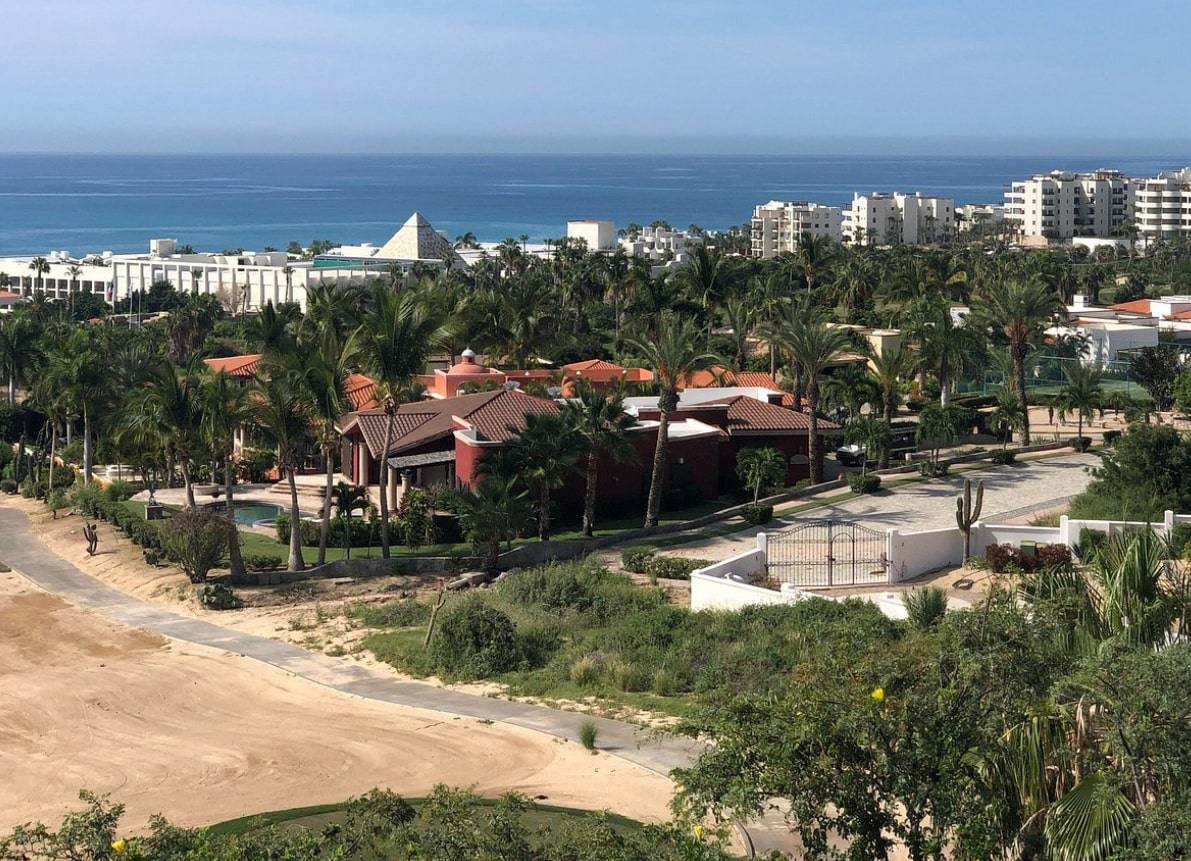
Los Cabos, also known as Cabos San Lucas, is a famous Mexican resort city known for its stunning beaches like Medano Beach and Santa Maria Bay .
Despite its long-standing appeal to visitors worldwide, tourists have started to show concern about safety in recent years, deterring them from visiting. An increasing number of reports of crime and violence, particularly targeting tourists, have contributed to their perception.
When visiting, tourists are advised to steer clear of areas known for drug trafficking and stick to populated, well-lit areas when venturing outside their resorts.
2. La Paz – Increased Presence Of Gangs
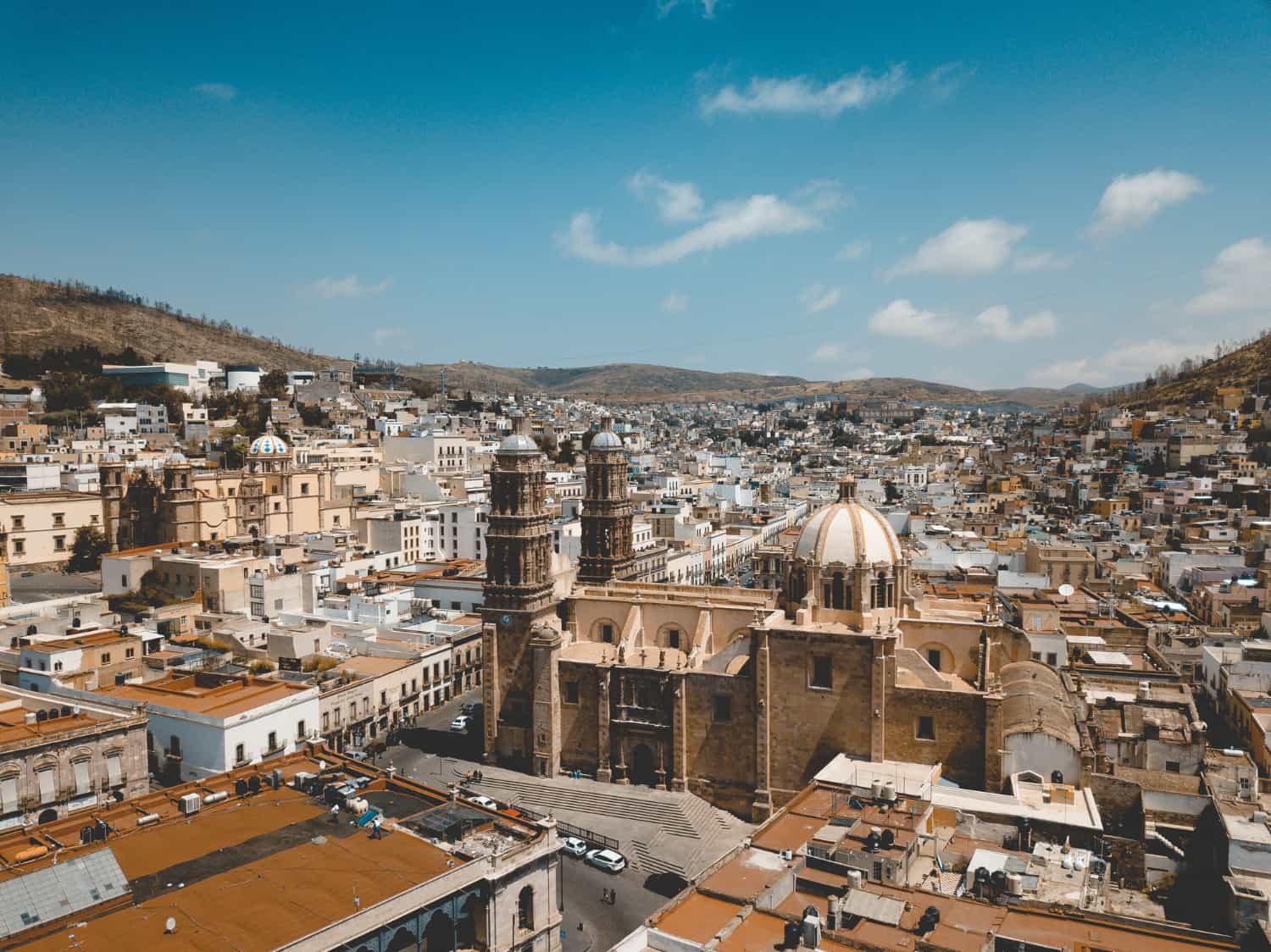
Located on the Baja California Peninsula, La Paz is the capital of Baja California Sur. It is known for its beautiful beaches, parks, and vibrant art by local artists.
Unfortunately, the city’s tranquility has been disrupted by a recent surge in gang activity and crime rates. Venturing out to remote areas beyond the famous tourist hotspots significantly increases the risk of encountering a crime.
To ensure your safety, it is best to refrain from wandering in these less frequented areas, especially at night. While exploring La Paz, be vigilant, take care of your belongings, and exercise common sense to stay safe.
3. Chihuahua – Highest “Do Not Travel” Warning In All Of Mexico
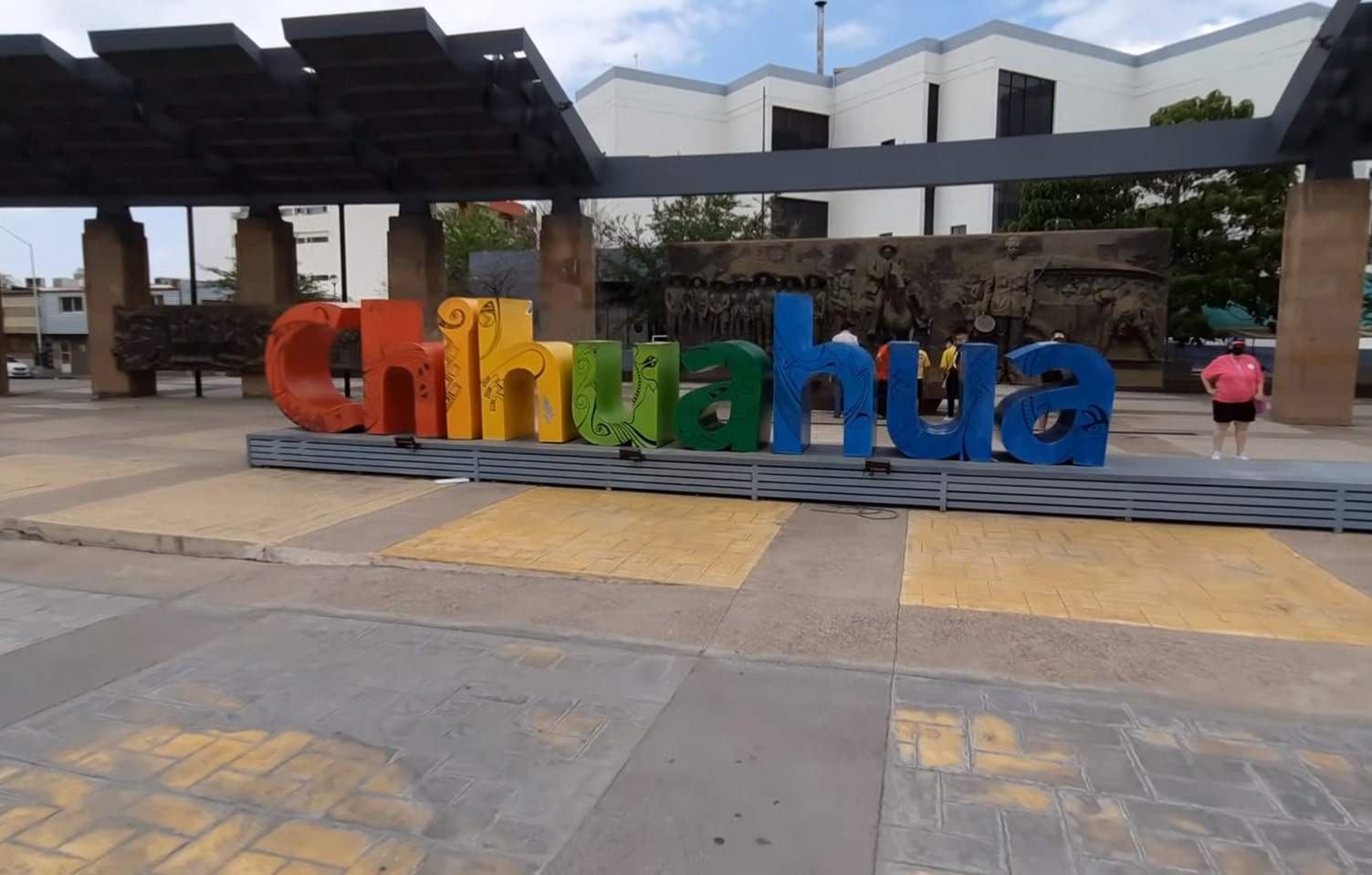
Chihuahua City is the capital of the Northwestern Mexican state of Chihuahua. The city is known for its old-world charm with a Baroque Cathedral and a rich history of pivotal Mexican events.
Despite being so culturally significant, it unfortunately holds the current distinction of being the “Do Not Travel” city in Mexico. The whole region faces major safety issues due to the ongoing territorial disputes among the cartels.
Disturbing reports include a tourist’s daylight robbery at gunpoint in the city’s downtown area. Such incidents highlight the city’s underlying issue of precarious safety and how it should be avoided at all costs.
4. Ciudad Obregón – Unsafe For Non-Locals
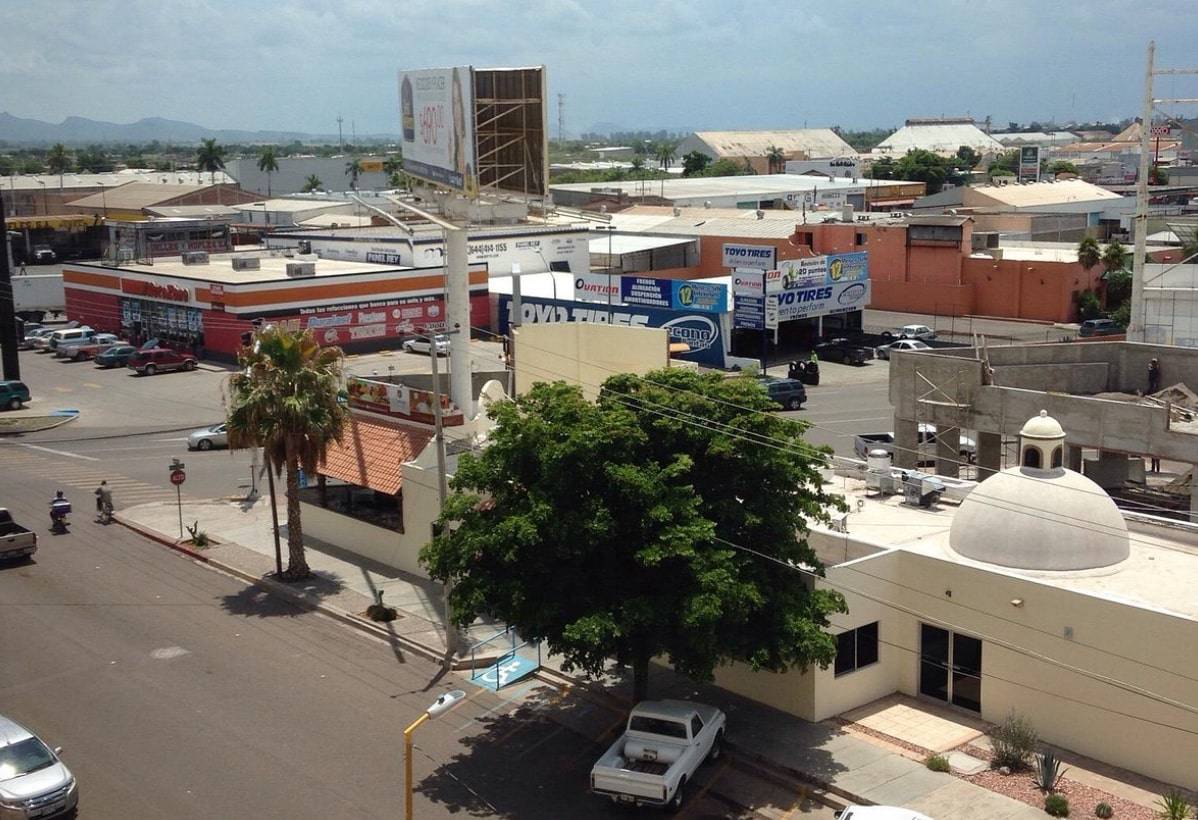
Ciudad Obregon is the second-largest city in the northern Mexican state of Sonora near the U.S.-Mexico border in Arizona. Unfortunately, it sits on the list of most dangerous parts of Mexico.
Reports suggest that it has the fourth-highest murder rate per capita, averaging around 101.13 per 100,000 inhabitants annually. The city’s population is slightly over 430,000, which means there are about 435 murders each year.
This is a result of a mix of violent, petty, and organized crimes, especially targeting non-locals. So, it is best to avoid this destination when traveling to Mexico.
5. Reynosa – Tourists Must Be Very Cautious

On the northern Tamaulipas border, Reynosa is a key crossing point into Texas, USA. Despite the city’s many cultural attractions, the city grapples with its dangers like frequent kidnappings, carjackings, and extortion.
While its murder rate of 41.48 homicides per 100,000 residents may not seem strikingly high when compared to other cities in Mexico. The local gangs and cartels specifically target visitors and immigrants passing through the border. It is important to be cautious while considering visiting Reynosa, given the prevalence of criminal activities in the area.
6. Irapuato – Rival Cartel Groups
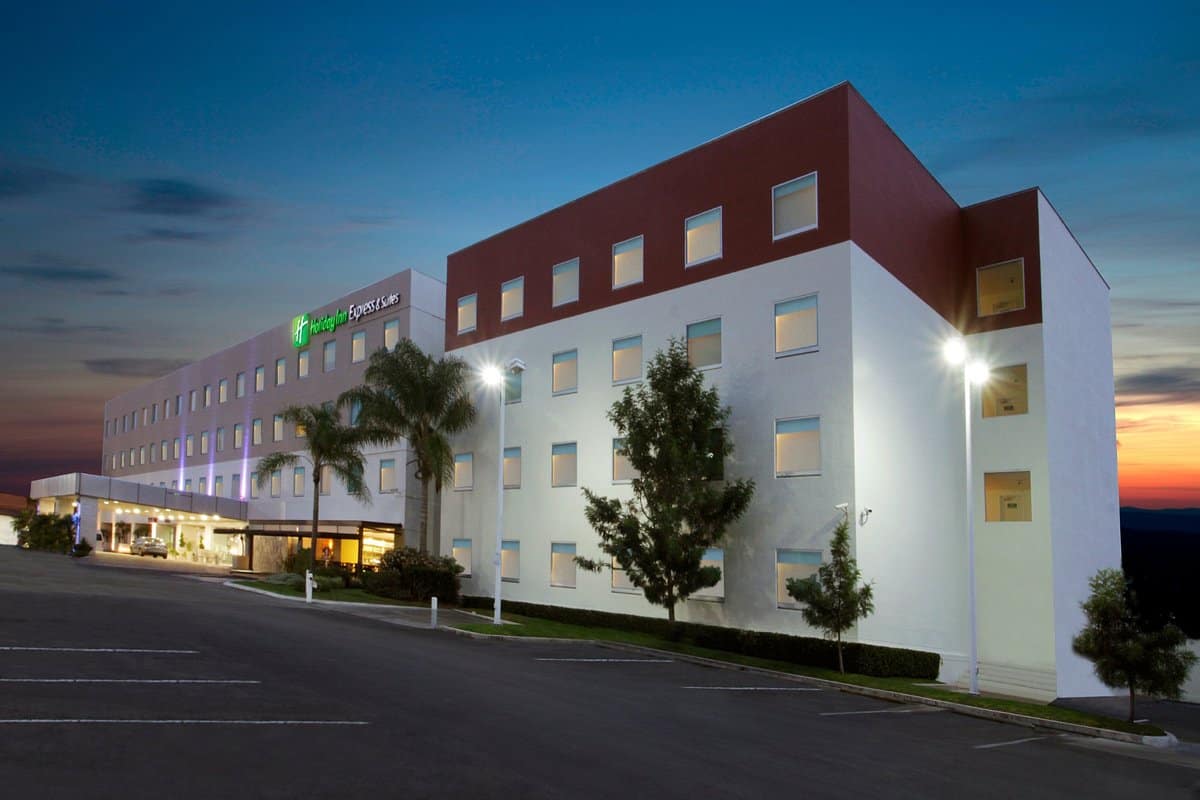
Irapuato, in the central region of Mexico’s state of Guanajuato, is located at the base of Arandas Hill and surrounded by two rivers. The city is known for its cultural richness. And despite its alluring appeal, the whole state grapples with a complex dynamic of eleven major criminal groups in the area.
There are constant inter-group and cartel conflicts, particularly intense cartel turf wars, which result in significant safety issues for all the residents and visitors.
Notably, Irapuato has a high violence and homicide rate, with 81 cases per 100,000 people. Travelers are always advised to prioritize their safety and avoid this part of the country.
7. Tijuana – High Homicide Rate
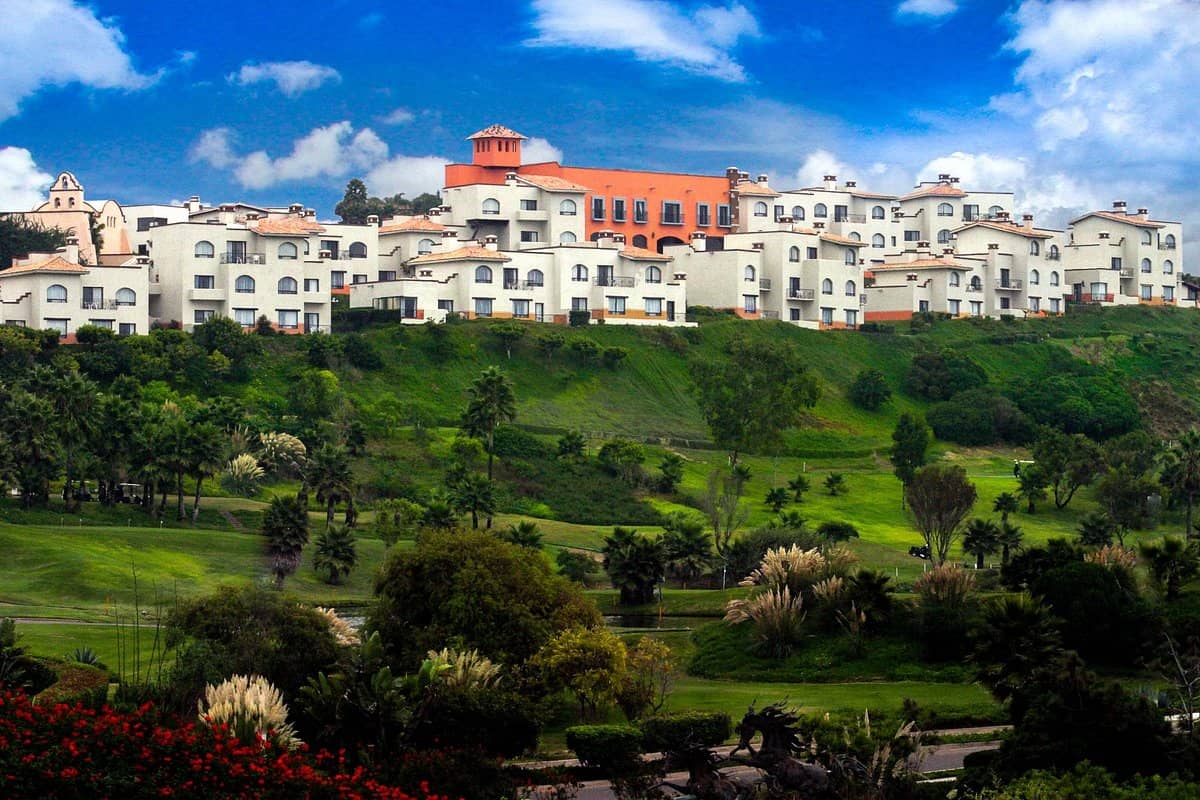
Located just south of California, Tijuana is a famous border city in Mexico. Most authorities advise against visiting the city, especially after recent events between the United States and Mexico.
Though violent crimes against tourists are less common, petty theft and robbery are still on a high. People are advised to avoid walking around in the city, especially at night.
Despite the local government’s initiative to make it safer for visitors, it still tops the list of areas to avoid in Mexico due to gang activity, extortion schemes, and kidnapping targeting both locals and visitors.
8. Culiacán – Cartel Overtook The Military
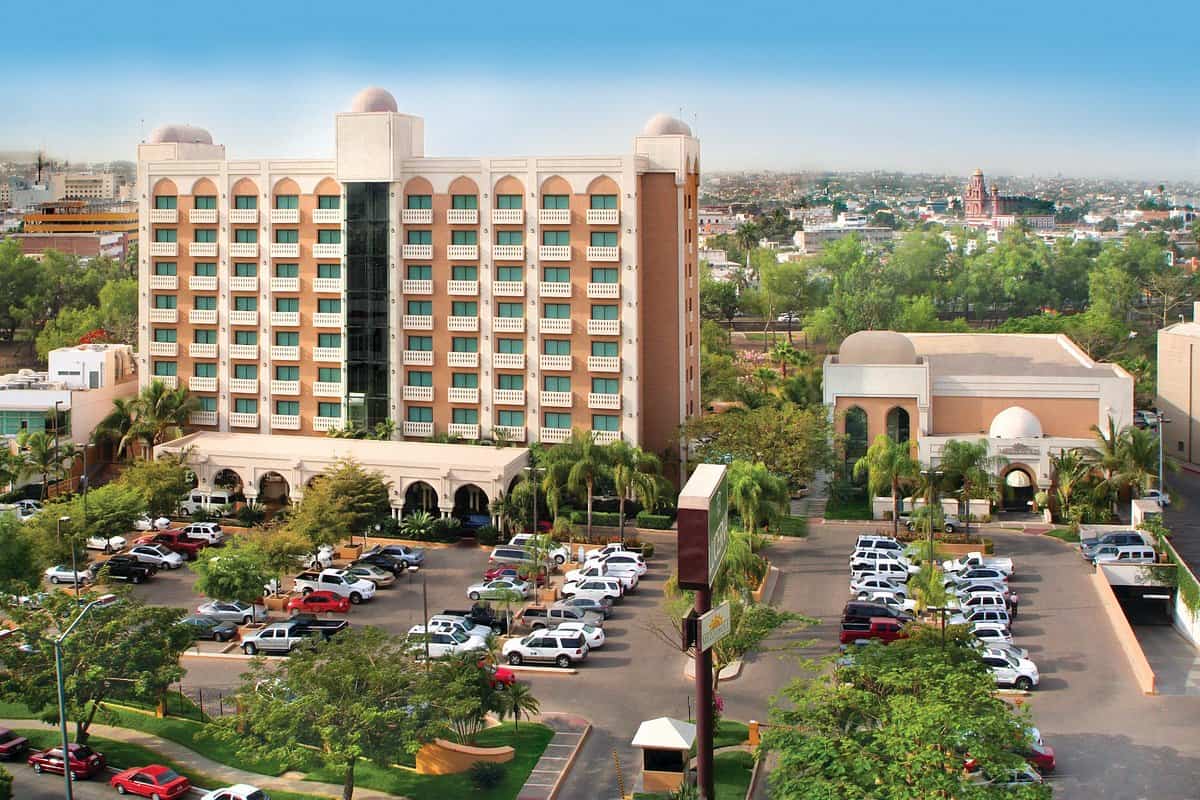
The largest city and the capital of Sinaloa in the northwestern region of Mexico, Culiacán, is infamous for its notorious cartel influence. They even overpower the military and cause turmoil in the city.
Despite having some spectacular inland attractions like nightclubs and parks, visitors are generally advised to steer clear of this place unless they have a specific purpose for visiting.
There are frequent reports of armed robberies and assaults, resulting in a high crime rate of 61 homicides per 100,000 residents. It’s best to think twice before visiting such areas.
9. Uruapan – Spike In Cartel Crimes
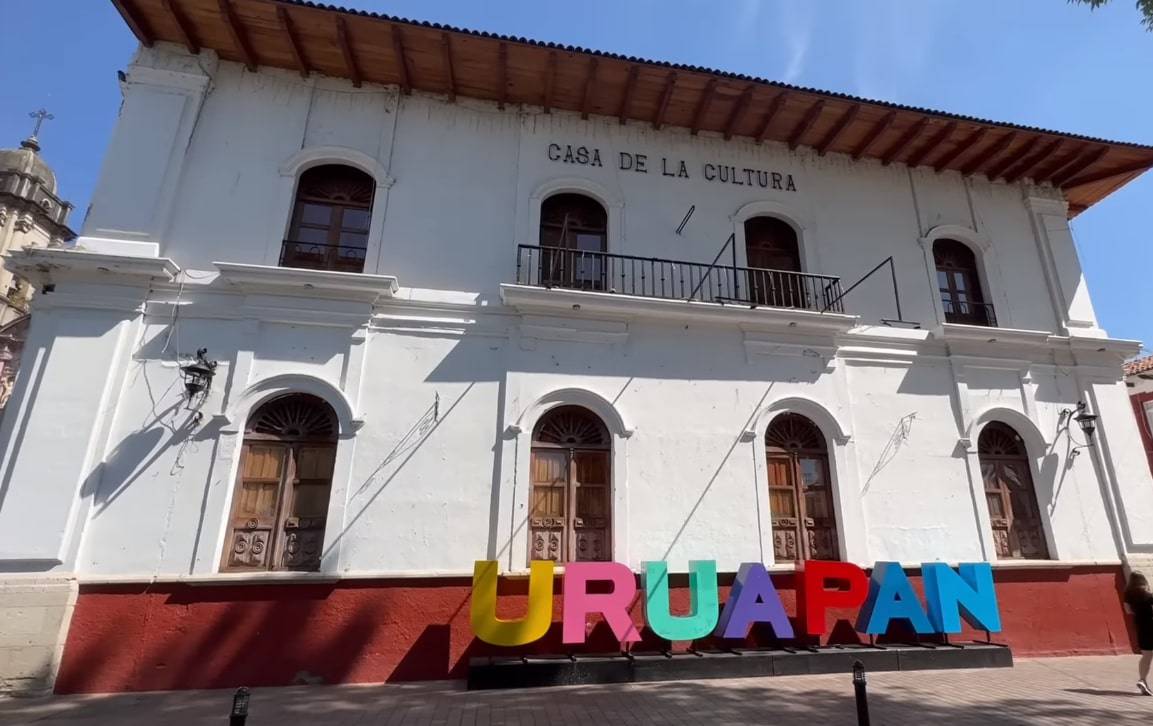
Located on the western edge of Mexico, Uruapan is the second-largest city in the state of Michoacan. It holds economic significance but is also infamous for being a cartel hub in the country.
The city has lush greenery with stunning Spanish architecture, ass of 2022, the city had a population of 356,786. Unfortunately, the city’s surrounding area grapples with the issue of persistent violence and drug trafficking as a result of active gang activities.
While Uruapan thrives economically, the prevalence of criminal activities, the city tops the list of bad places in Mexico.
10. Tepic – Travel Advisory
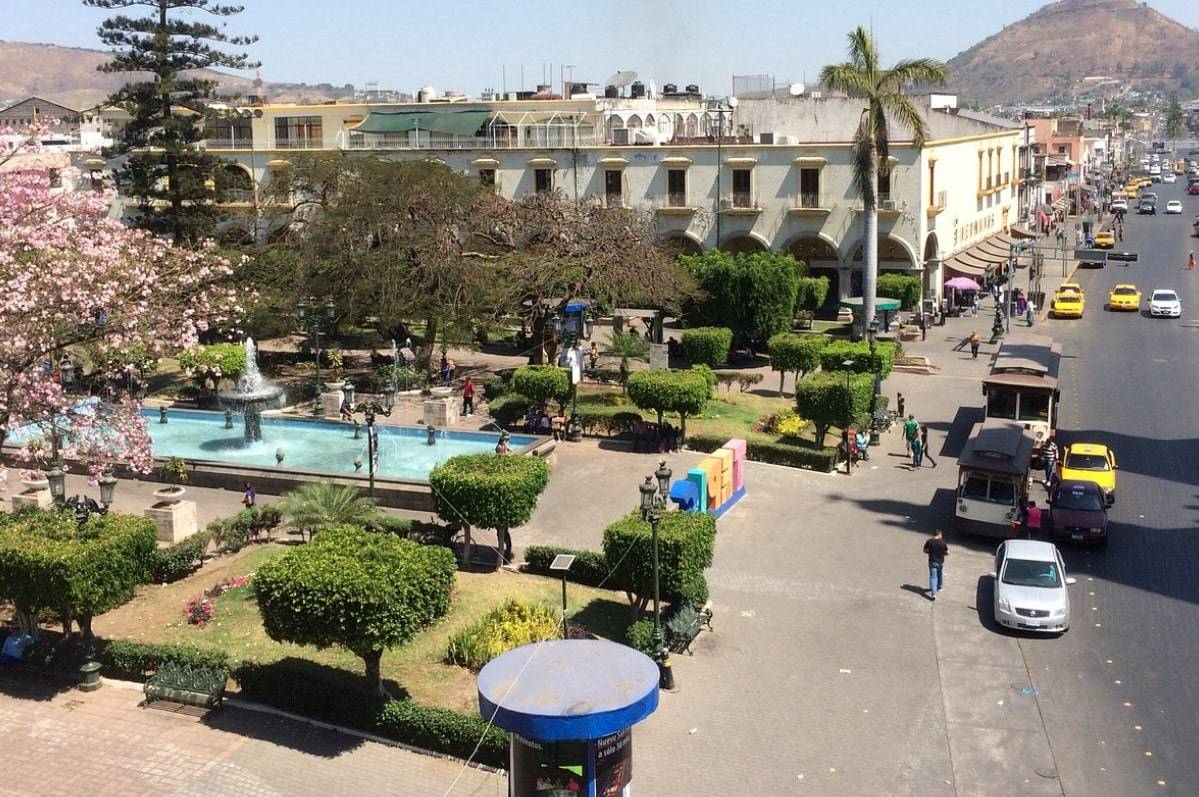
As the capital of the Nayarit state in western Mexico, Tepic is known for its Neo-gothic Tepic Cathedral and numerous museums home to some significant pre-hispanic artifacts. It is considered the state’s urban center of thriving agriculture, producing sugarcane and tobacco.
Home to 425,924 residents, Tepic is notoriously full of gang activity, ranking as the 36th most dangerous city in the world. It has a concerningly high reported homicide rate of 45 per 100,000 people. Both residents and tourists are advised to avoid this dangerous area as much as possible.
11. Acapulco – Dangerous Outside Of Resorts
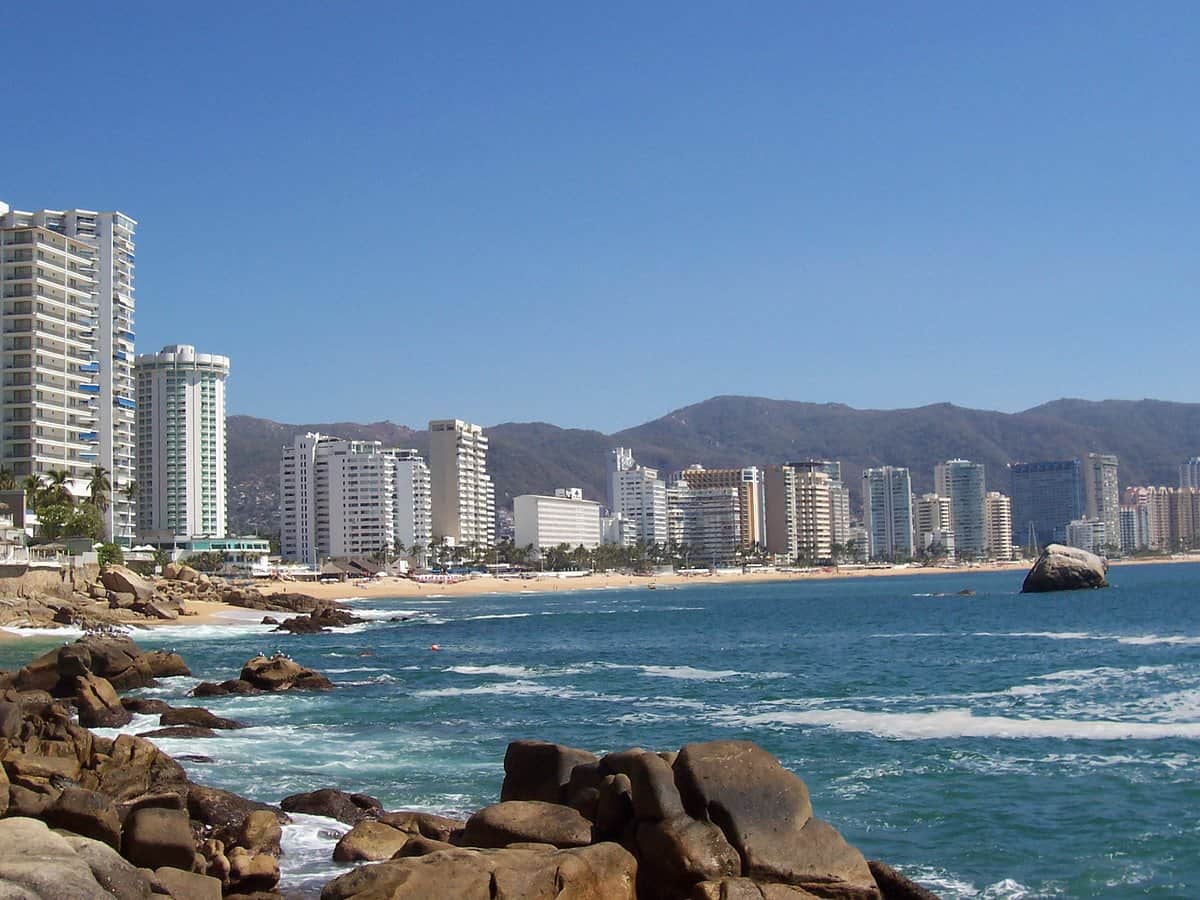
Acapulco is a renowned beach resort town on Mexico’s Pacific coast. It is also famous for its stunning cliffs and Sierra Madre del Sur mountains. Despite the thriving resort industry, travelers are urged to confine themselves to its premises for safety reasons.
This is because of the city’s alarming number of mysterious incidents. There have been multiple reports of dead bodies washing ashore and body parts lying on the streets. This has resulted in a significant decline in tourism.
Most governments caution their citizens against traveling to Acapulco due to its alarmingly high crime rate of about 111 homicides per 100,000 residents.
12. Coatzacoalcos – Travelers May Feel Unsafe
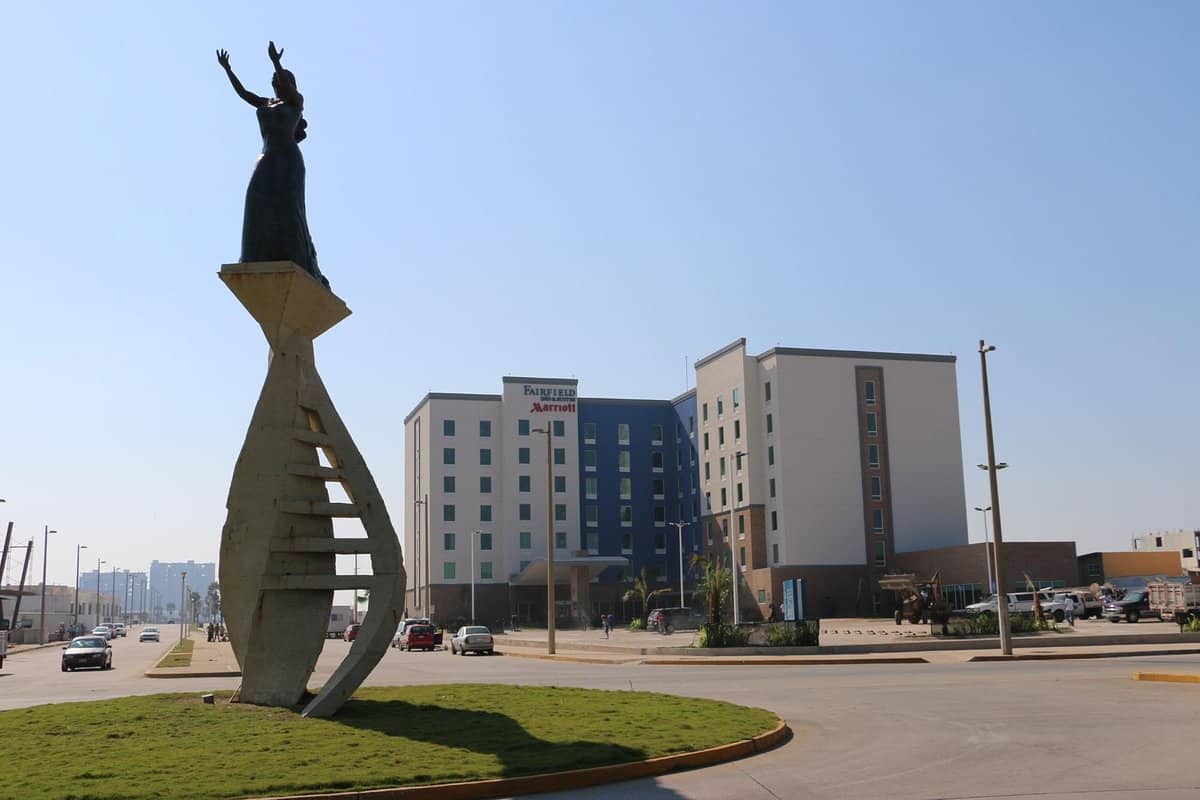
Nestled in the northern part of Veracruz, Coatzacoalcos is a significant port city on the river estuary in the Gulf of Mexico. It has stunning beach views and a vast coastline. Despite being so scenic, it is not considered safe for residents and tourists.
The city has cultural gems such as museums and delectable restaurants, but the dark side tends to overpower with violent crime and gang activity. With a high homicide rate of 48 cases per 100,000 residents, caution is strongly advised to those considering visiting this city.
13. Celaya – State-Wide Corruption
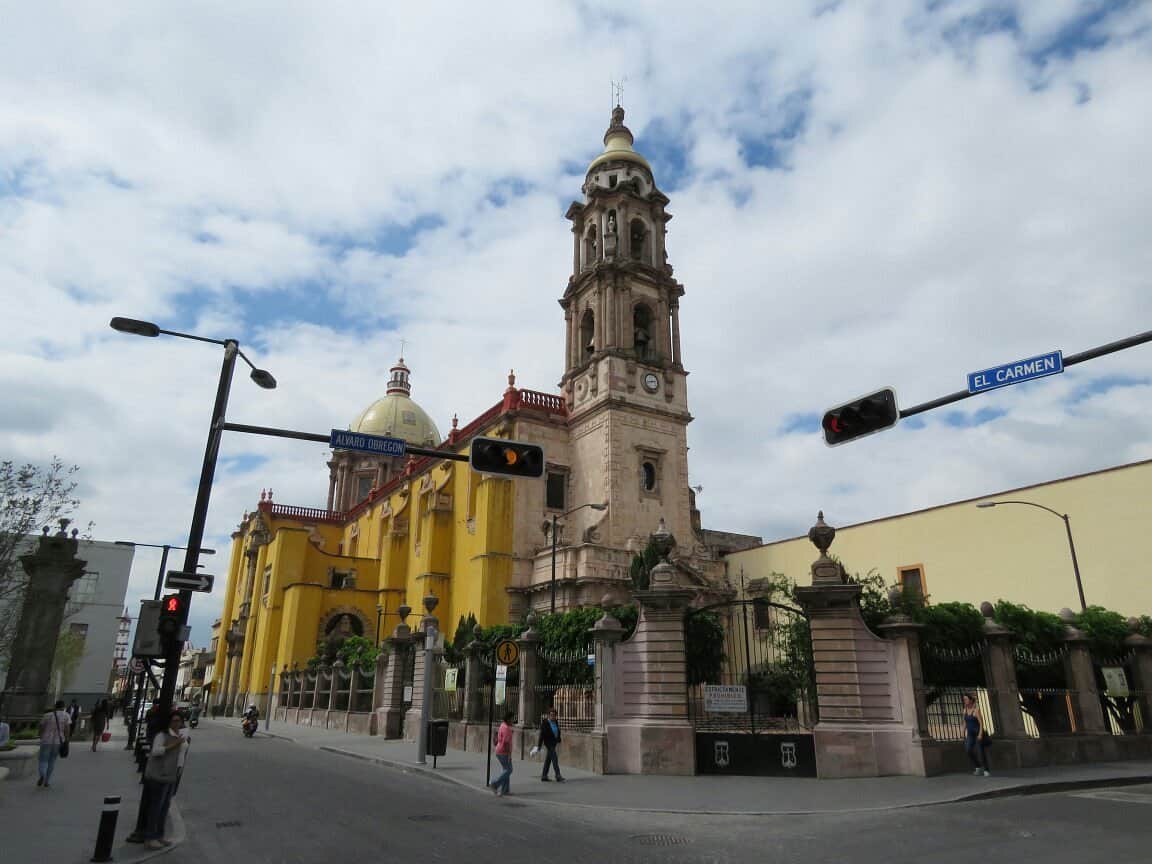
Celaya is a bustling city in central Mexico located northwest of Mexico City. It is renowned for its architecture and colonial grandeur. Despite its cultural attractions, the city has major corruption issues.
With a population of 767,104, Celaya has museums, picturesque architecture, and a vibrant candy manufacturing scene. However, the uprise in violence linked to the Santa Rosa de Lima Cartel defending its interests has been concerning.
The city has an alarmingly high rate of corruption and bribery. Hence, tourists are advised to exercise caution and be vigilant to avoid scams if they visit.
14. Ciudad Juárez – Increasing Crime Rate
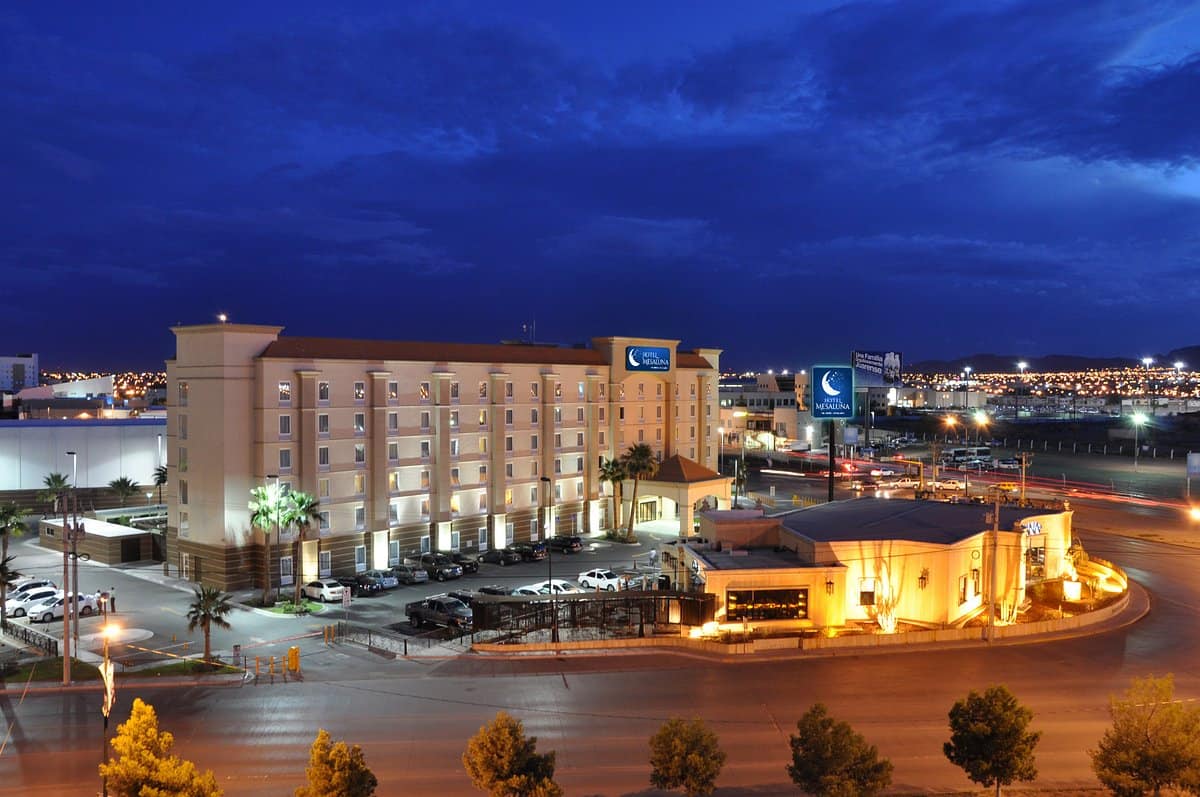
South of El Paso, positioned on the Rio Grande, Ciudad Juarez is steeped in history with museums highlighting Mexico’s revolution. But the city also has a long-standing history of excessive, indiscriminate violence.
It is also recognized as a global femicide capital; the city has one of the highest femicide rates, surpassing even Damascus during the peak of the Syrian Civil War.
15. Mazatlan – Don’t Venture Out Alone At Night
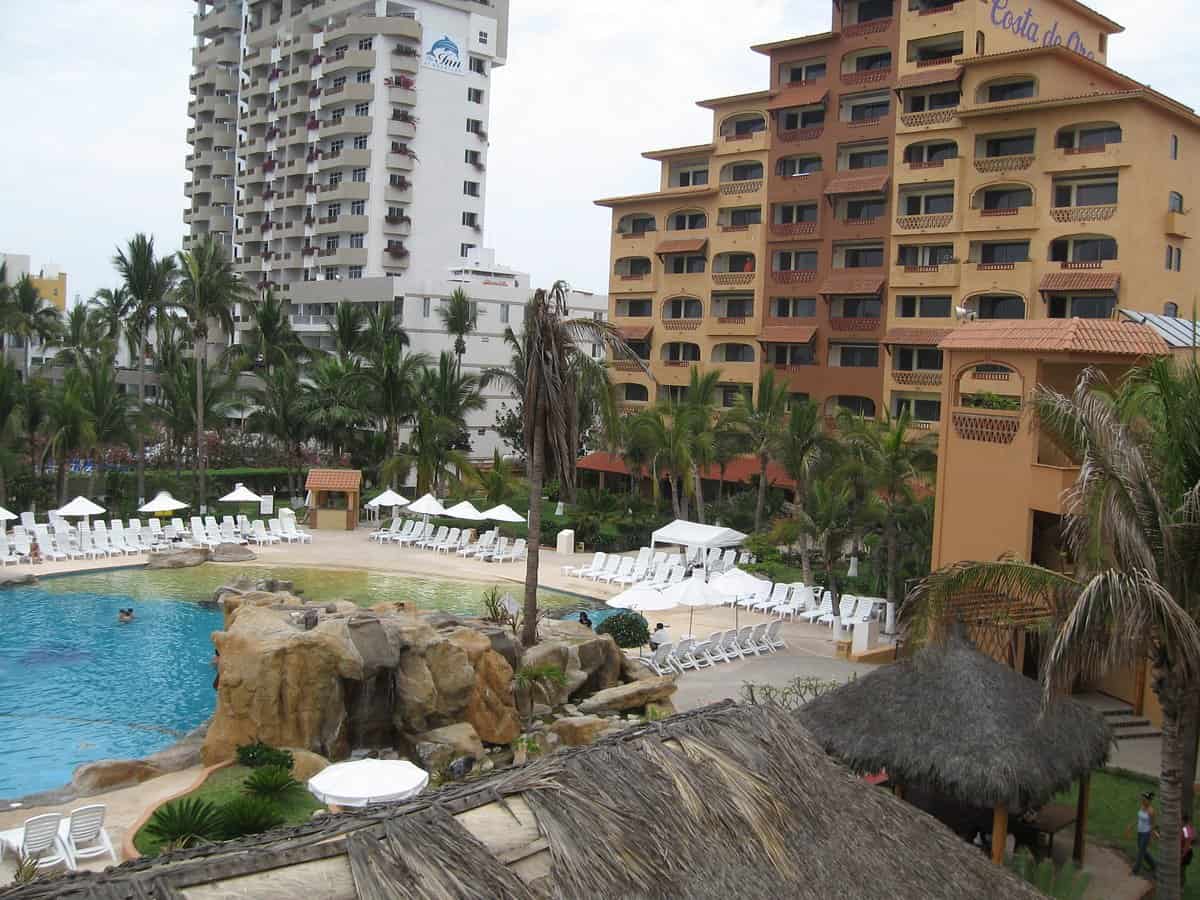
Mazatlan is a famous resort town on the Pacific coast in Sinaloa with serene sandy beaches and an undertone of being a dangerous neighborhood. While tourist zones offer relative safety, stepping out alone at night poses risks like many other tourist destinations worldwide.
Beyond common petty crimes, tourists are also at an increased risk of cartel violence like murders and kidnappings. If you visit Mazatlan, remember to maintain a low profile and refrain from flashing your valuables.
Final Thoughts
These are the 15 places to approach with caution when visiting Mexico. It is essential to pinpoint these places on the map to avoid them during your travel escapades. If you’re looking for more safe alternatives to enjoy your vacation, check out my article on the safest cities in Mexico .
I hope your travels through Mexico are filled with unforgettable moments and that you stay safe throughout your vacation.
Most Dangerous Places in Mexico
There are many reasons to visit Mexico. Beautiful beaches, delicious food, a rich culture with a complex history, and friendly people are just some reasons the country attracts millions of tourists each year.
However, it’s also true that there are places in Mexico that just aren’t very safe. Some main reasons for unstable areas are the presence of drug cartels and unreliable law enforcement. Violent crime and kidnapping are some of the most worrying things to look out for, and some states are far worse than others.
The 16 Most Dangerous States in Mexico
In this post, we’ll look at the most dangerous places in Mexico as defined by the U.S. Department of State and the travel notices it sets. We’ll also examine the crime rates in Mexico and see how they compare to other countries.
Dangerous States in Mexico:
Mexico Travel Warning Map
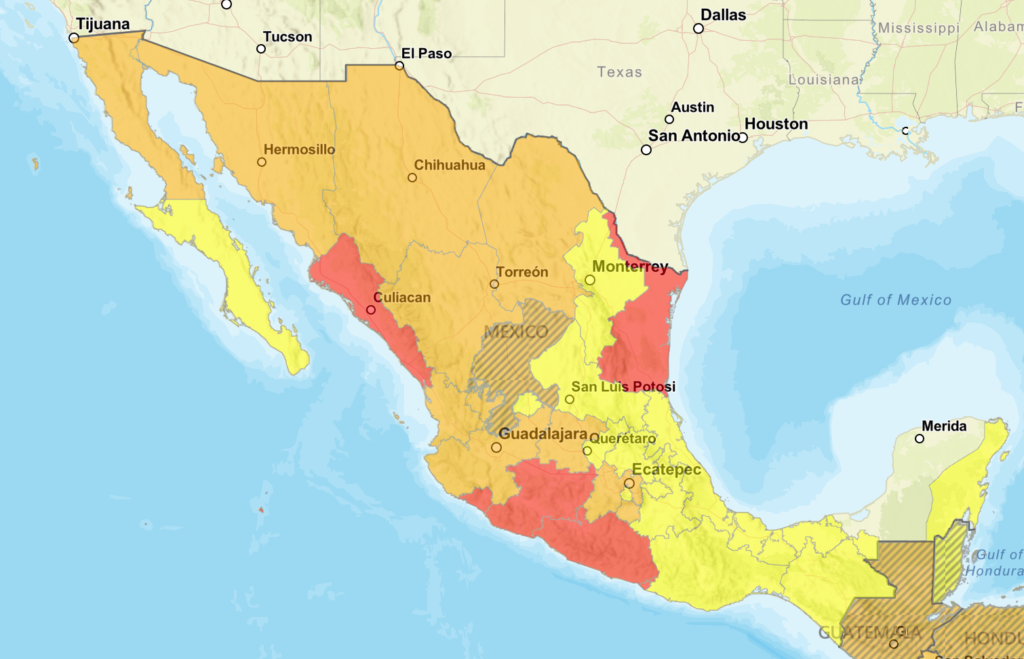
5 Do Not Travel States
“Do Not Travel” is the most severe travel notice that the U.S. Department of State issues, out of four possible travel advisory levels. It is what the department issues when there are greater, potentially life-threatening risks in an area.
There are currently five Mexican states with a “Do Not Travel” advisory :
Colima is a small Mexican state on Mexico’s Pacific coast and is the home of Manzanillo, a beach town with tourist resorts and consistently warm weather. It is posted as a “Do Not Travel” state because of the prevalence of violent crime, kidnapping, and gang activity, which are widespread.
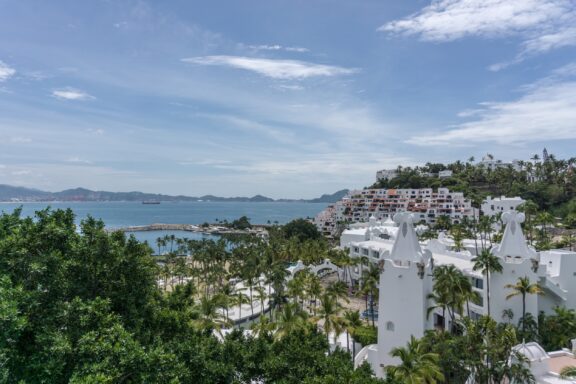
U.S. government employees are prohibited from traveling to the city of Tecomán, the Colima/Michoacán Border, and the non-tourist areas of Manzanillo.
2. Guerrero
Located between the states of Michoacán and Oaxaca, Guerrero is also listed as a state that should be avoided. The reasons for this are violent crime and kidnapping. There are several armed groups that act independently of the government in this state, and they have been known to set up roadblocks and to use violence toward travelers.
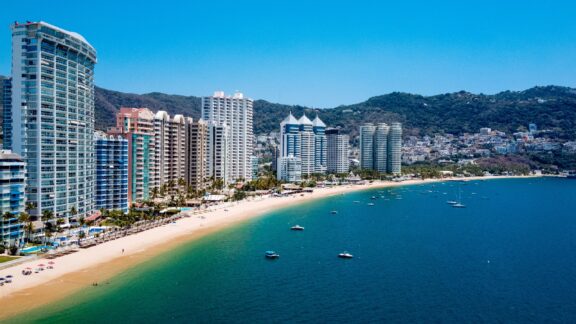
The very popular resort towns of Acapulco and Ixtapa are located in Guerrero. Both of these locations attract large numbers of tourists each year that are seeking sun and beautiful beaches. Agriculture and livestock breeding are other important parts of the state’s economy.
Most of Guerrero is restricted for U.S. government employees, except for portions of Taxco.
3. Michoacán
Michoacán is situated between Colima and Guerrero, forming three neighboring states on Mexico’s Pacific coast with a “Do Not Travel” designation. This is for the same reason as the other two: a high prevalence of crime and kidnapping.
Part of the Monarch Butterfly Reserve is located in Michoacán, as are many Spanish colonial towns that make it an attractive location for tourists.
The Sinaloa Cartel is one of the most famous drug cartels in the world, and they are responsible for trafficking an immense portion of the illicit drugs that enter the United States. They are also one of the main reasons this state is so dangerous.
Mazatlán, a very popular resort destination for tourists coming to Mexico, is located in the state of Sinaloa, and it is one of the few places U.S. government employees are allowed to travel to.
5. Tamaulipas
Tamaulipas is located on the Gulf of Mexico and borders the US state of Texas to the north. It is an important center for Mexico’s fishing industry.
The state is listed as “Do Not Travel” because of high incidences of violent crime and kidnapping. There are armed groups committing organized crime activities such as kidnapping, carjacking, armed robbery, murder, and more, especially along the northern border.
11 “Reconsider Travel” States
The states in this “Reconsider Travel” category are listed as such because of “serious risks to safety and security” as described by the U.S. State Department. The State Department provides additional, area-specific advice for these areas.
- Baja California
In Mexico, the “Reconsider Travel” designation is usually due to increased levels of violent crime and kidnapping in the area. Most of the violent crime in these Mexican states takes place between members of criminal organizations, but these incidents sometimes take place in areas that are frequented by tourists. Collateral damage is often the greatest risk to visitors.
How Dangerous is Mexico?
It isn’t easy to say exactly how dangerous Mexico is. The truth is that danger levels in the country vary by region, just as in any other country. Some people are more at risk than others, as well. For example, young males form the vast majority of homicide victims.
With that in mind, it’s certainly true that it is important to take more precautions to stay safe in Mexico than it is in many other countries.
How Many Homicides are there in Mexico?
As demonstrated by the table above, the homicide rate is significantly higher in Mexico than it is in the United States or the United Kingdom.
Is Mexico Safe for Tourists in 2022?
There are plenty of places that are safe in Mexico for tourists in 2022, but it’s important to exercise caution and carefully plan your destinations. Mexico is among the top countries worldwide for total tourist visitors — tens of millions come to the country each year, and the vast majority have a trouble-free stay.
However, there are occasionally tourist victims of violent crime. Sometimes this is because the tourists were engaged in illegal activity, and sometimes it is simply collateral damage from gang violence. Generally, resorts and popular tourist areas are safe. The Mexican government sometimes deploys marines to these areas to ensure the safety of visitors.
Some measures visitors can take to keep themselves safe include not traveling alone or at night, remaining aware of their surroundings, and taking extra care when using ATMs. Learning basic Spanish can also increase your level of safety.
Which Are the Safest States in Mexico in 2022 ?
The only states in Mexico that do not have a travel advisory from the U.S. State Department are Yucatán and Campeche. It is advised to exercise normal precautions that should be taken when traveling anywhere, but there isn’t an elevated safety risk in either of these states. They are located on the Yucatán Peninsula, an area that constituted a large part of the Maya Civilization.
The Mexican state of Yucatán is a popular destination for many. It’s known for beautiful beaches, tropical rainforests, cenotes, and for being the home of the ancient Maya people. The ruin of Chichen Itza is located here and is a UNESCO World Heritage Site. The pink lakes of Las Coloradas on the coast in the state of Yucatán are another attraction that draws many tourists.
The capital city of Yucatan is Merida, sometimes referred to as the “White City.” It is the largest city on the Yucatan Peninsula and serves as the cultural capital of the state. It is also one of the safest cities in Mexico.
The state of Campeche is located on the Yucatan Peninsula next to Yucatan, Tabasco, Quintana Roo, and Guatemala. Its capital city is San Fransisco de Campeche and it has one of the smallest populations of any Mexican state. Mining and oil production are the largest contributors to the state’s economy.
One of the most popular tourist destinations in Campeche is the city of Ciudad del Carmen, which is on the coast. It boasts peaceful beaches and colonial buildings that make for a beautiful and relaxing atmosphere. While the coastal areas are noteworthy for being quiet in Campeche, the most beautiful beaches in Mexico are found elsewhere.
Other states that are generally considered safe include Mexico City, Oaxaca, Chiapas, Quintana Roo, and Puebla.
Crime Rates by State
Whereas the information regarding the most dangerous states in Mexico is mostly focused on violent crimes such as homicide, kidnapping, and violent robbery, the crime rates described below consider non-violent crimes as well. These types of crimes include petty theft, pickpocketing, and others that don’t threaten your physical wellbeing.
Crime rate per 100,000 inhabitants in 2020, by state in Mexico.
Crime rate in Mexico in 2020, by state (per 100,000 inhabitants), Source: Statista
The region in Mexico with the highest crime rate, by far, is Mexico City. But that doesn’t mean that it’s necessarily the most dangerous state. It’s important to recognize just how massive Mexico City is when thinking about its safety. There are well over 20 million people in Greater Mexico City, and it ranks fifth among the most populous cities in the world.
The incredible size of Mexico’s capital city means that there are many drastically different parts of the city, and the most dangerous parts aren’t those that are usually visited by tourists and foreigners. It’s common for residents of these safer parts of Mexico City to feel much safer in the city than when traveling to other parts of the country.
Also, evident in the above table is that the state of Tamaulipas has the third-lowest crime rate in the country. This could be misleading, as the state is listed as one of the five “Do Not Travel” states by the U.S. Department of State. While there may be lower levels of petty crime, higher instances of kidnapping and violent crime make it one of the least safe states in Mexico.
At least three of the five most dangerous states in Mexico are on the half of the list with the lowest crime rates. It is also possible that crime reporting in these states is not as comprehensive or effective as in states with higher reported crime rates.
What is the Safest Place in Mexico?
Merida, the capital city in the state of Yucatán, is probably the safest city in Mexico. It has a low rate of homicides and is widely considered to be one of the safest places in Latin America. One reason for being safer is its geographic isolation, which makes it less appealing to drug cartels.
Is it Safe to Move to Mexico?
If you plan carefully and take basic safety precautions, yes, it is safe to move to some areas of Mexico. The most dangerous states and areas of the country should be avoided, and it’s important to maintain good safety practices wherever you live in the country. Many foreigners move to Mexico each year and live safely in places like Mexico City, Merida, or Puerto Vallarta.
What is the Most Dangerous Country in Latin America?
The country with the highest homicide rate in Latin America is Venezuela. The political situation in Venezuela is highly unstable, and the economy has been in dire straits for several years, putting a strain on public services and basic safety. Honduras also has a high homicide rate in Latin America, and Mexico comes in as the third-most dangerous. The safest country in Latin America is Chile.
Is Mexico More Dangerous Than the US?
When looking at homicide rates, Mexico is clearly more dangerous than the US. But homicide rates don’t paint the whole picture. The vast majority of homicides in Mexico take place between members of criminal organizations, and foreigners are not often the ones affected. The homicide rate for US citizens inside Mexico is significantly lower than for US citizens living within the USA.
- Coastal Cityscape with Beach and Skyscrapers: © Daniel Elizalde S/Shutterstock
12 Most Dangerous Cities in Mexico
Mexico is renowned for its colorful culture, extensive history, and stunning natural beauty. Still, it also struggles with high rates of violent crime, particularly in the cities of Colima, Zamora, Ciudad Obregón, Reynosa, Tijuana, Uruapan, Chihuahua City, Culiacán, Acapulco, Tepic, Juárez, and Salvatierra.
These dangerous cities are the hotspots for some of the most notorious and deadly criminal organizations worldwide. So fellow travelers, fasten your seatbelts as today’s article explores Mexico’s dark side.
Why Are Some Mexican Cities So Dangerous?
To begin with, Mexico is a crucial transit and manufacturing center for illegal narcotics bound for the United States and other foreign markets. The lucrative drug trade has resulted in the formation of powerful cartels and violent territorial conflicts.
Additionally, socio-economic factors play a significant role in why Mexico has such dangerous cities. Some areas have such high levels of poverty that people feel compelled to join criminal organizations because of the allure of “easy money.”
The world of organized crime is also influenced by corruption . The weak legal system in some parts of Mexico has created an epicenter not only for drug trafficking but also for extortion, abductions, and fuel theft .
If you plan to visit Mexico , you should consider focusing on visiting Mexico’s safe cities where beauty and hospitality intertwine. As for the dangerous cities, having up-to-date information before planning your trip is very beneficial.
List of Dangerous Mexico Cities and Places in 2023
Below are the most dangerous places in Mexico:
Ciudad Obregón
Chihuahua city, salvatierra.
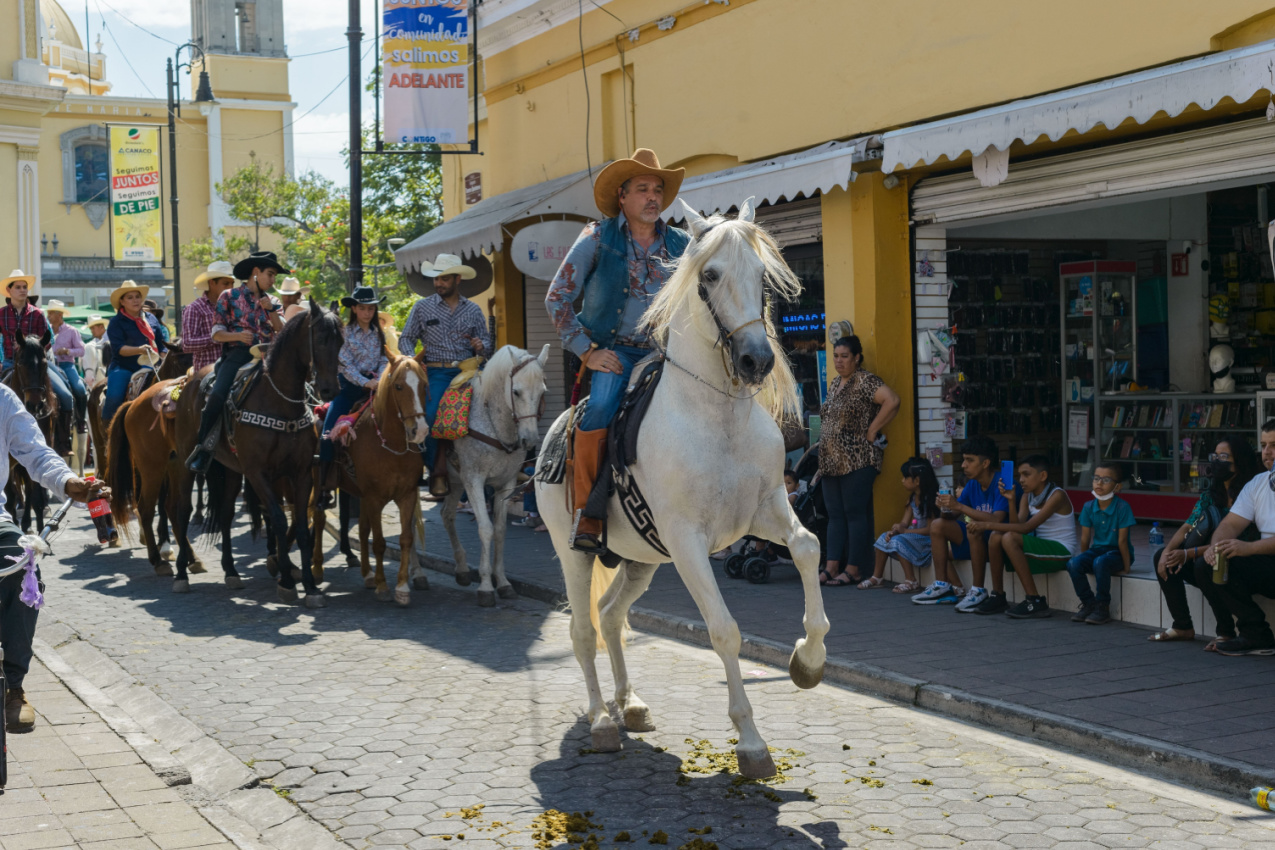
Colima is the capital city of the state of Colima, nestled between the Pacific Ocean and the majestic Colima Volcano. According to statistics , Colima had one of Mexico’s highest homicide rates per capita, with 181.94 homicides per 100,000 residents in 2022.
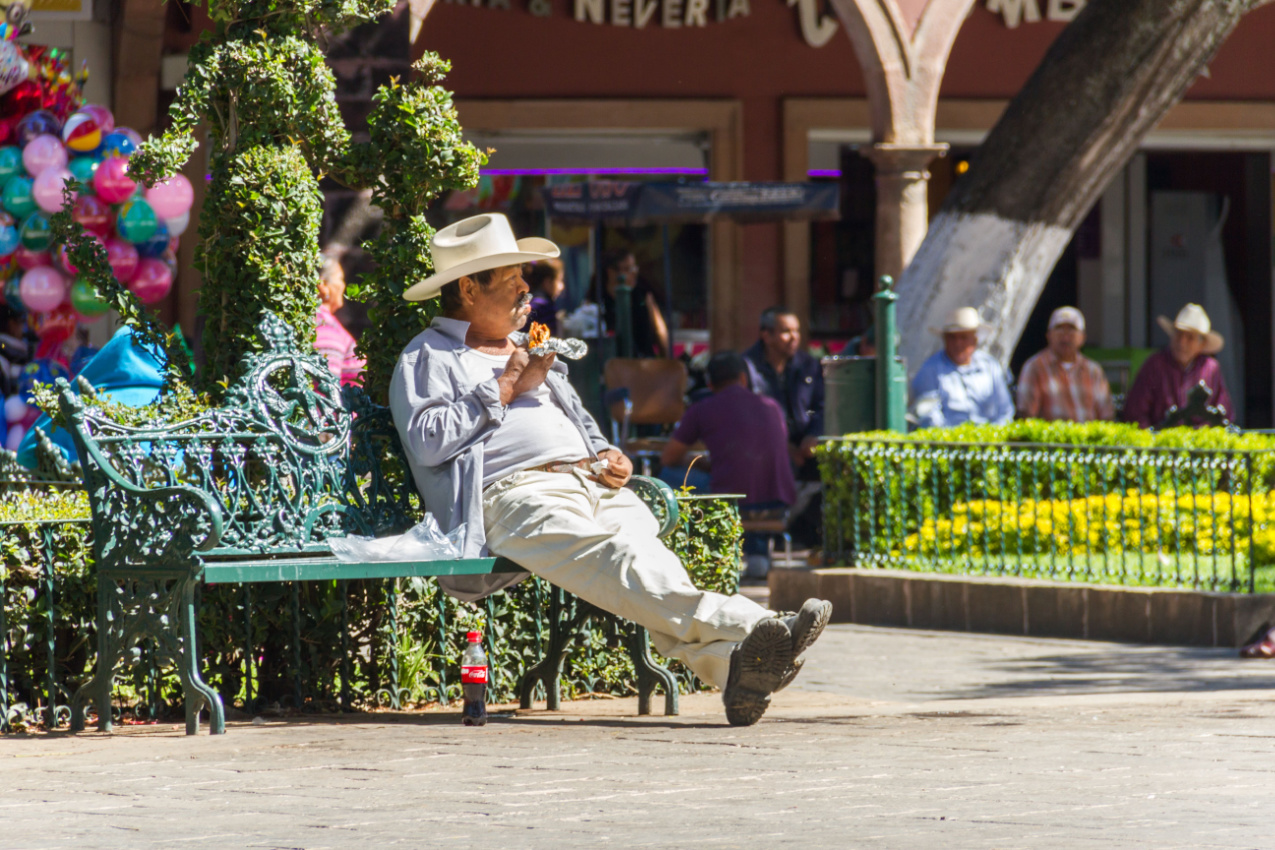
Zamora is located in the state of Michoacán, Mexico. Situated in the fertile Zamora Valley, the city is often called the “Fruit Basket of Mexico.” However, its substantial agricultural production is overshadowed by organized crime, earning its title of the most violent city in the world .

Ciudad Obregón, located in the Mexican state of Sonora, is a lively metropolis that acts as an agricultural hub in the region and the epicenter of the Mexican drug war between cartels. This city is also the hub for the illicit wildlife trade , with many exotic species being smuggled via the city on their route to the United States.
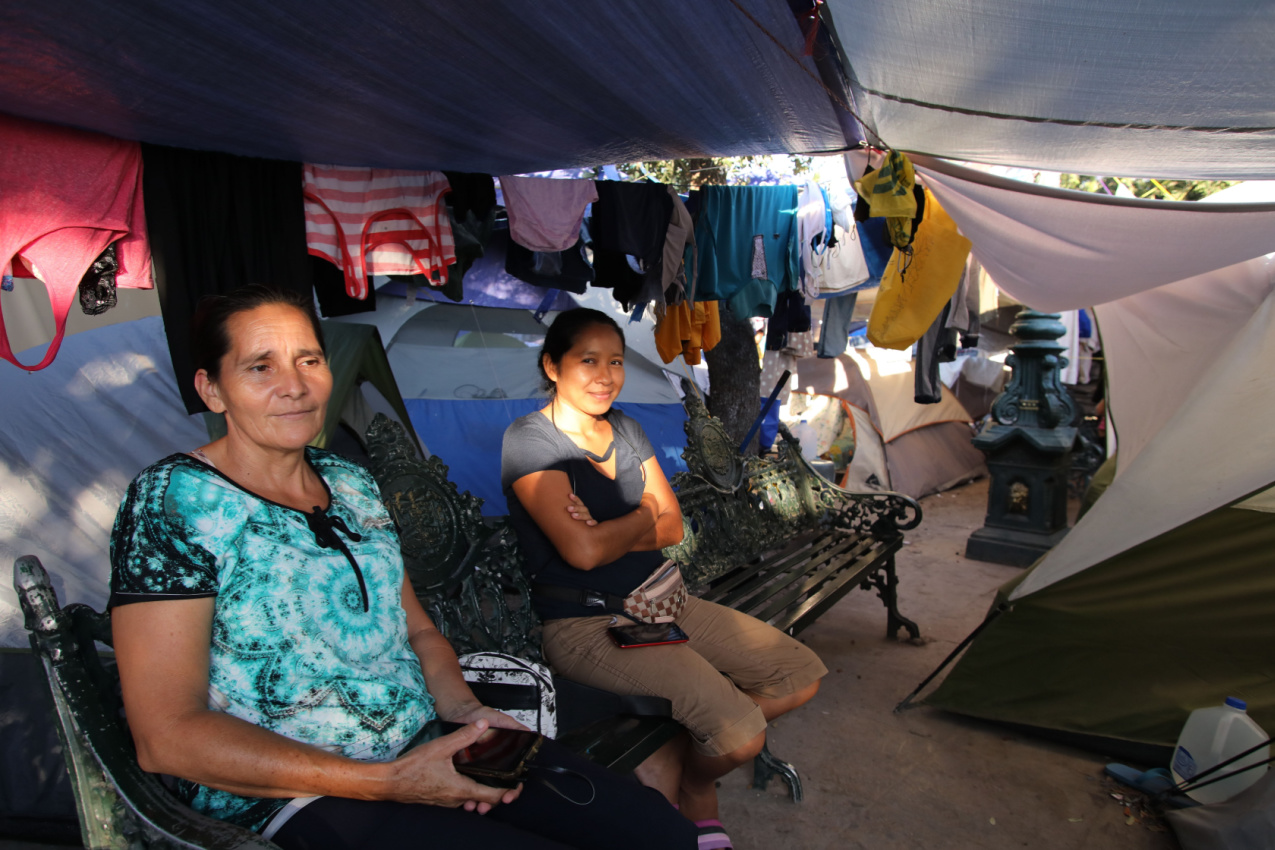
Reynosa, located in northeastern Tamaulipas, is a vital crossing point for clashing cartel routes into the United States. Numerous battles between these opposing criminal organizations have taken place in the city, resulting in high levels of violence. Reynosa is also a key location for human smuggling , with many migrants passing the city on their way to the United States.

Tijuana is located on the border between Mexico and the United States and is known for its bustling nightlife and proximity to San Diego, California. Nonetheless, Tijuana is a key crossroad for trafficking and organized crime . In 2020 , the city had a high rate of 138 homicides per 100,000 citizens.
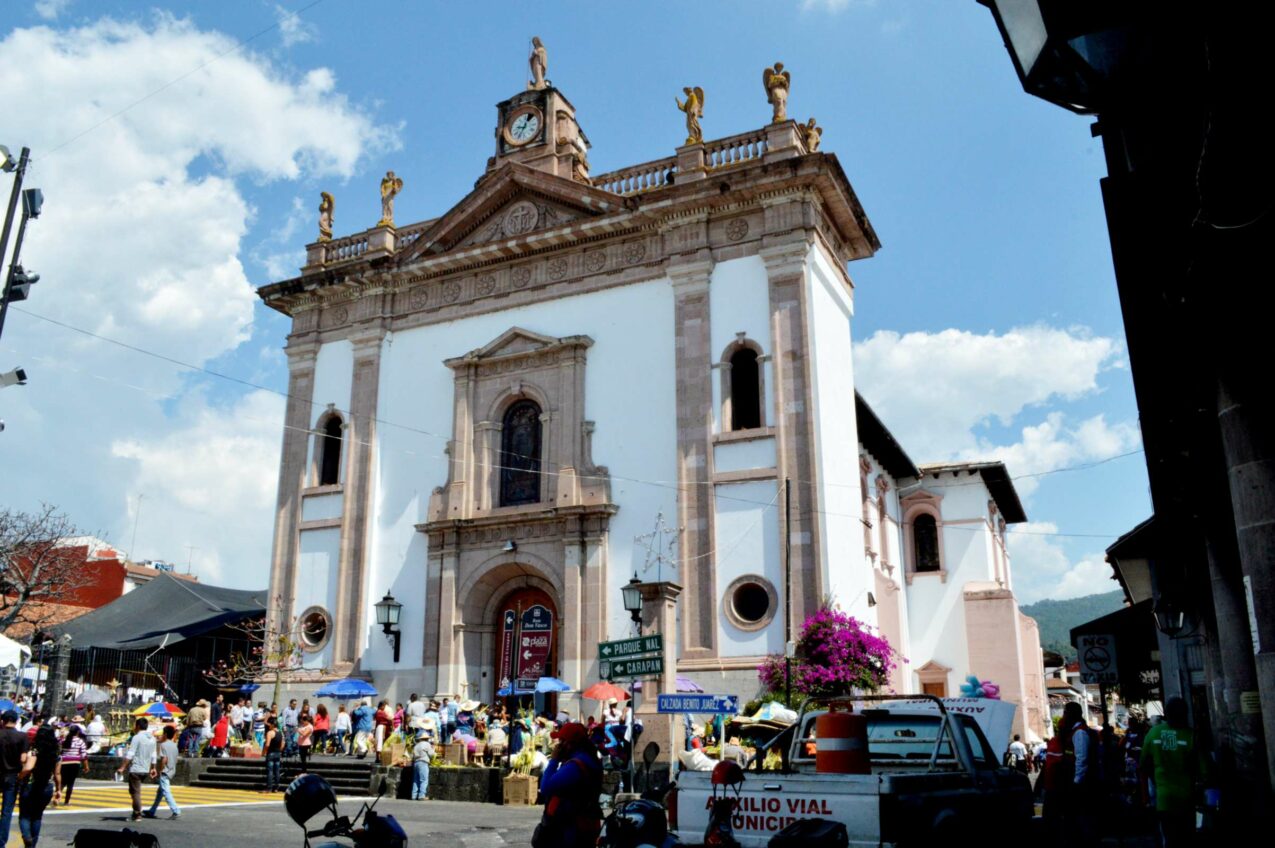
Uruapan, located in the state of Michoacan, is famed for its avocado production but is also a center for underground cartel activities. Uruapan is also a hotspot for illegal logging , with many unique and endangered trees being illegally cut and sold on the black market.

Chihuahua, the state capital of Chihuahua, has long been a hub for organized crime. Two major cartels operate in the area, and as a result, the city has seen numerous deadly battles between these opposing gangs. Chihuahua is also notorious for its high levels of corruption , with many officials and law enforcement personnel linked to organized crime gangs.

Culiacán, the state capital of Sinaloa, is known as the base of the Sinaloa cartel, ruled by the legendary drug lord Joaquin ‘El Chapo’ Guzman . The city is rife with violence, with regular shootouts between competing cartels and law authorities. According to 2019 statistics , the city’s homicide rate was 49.41 per 100,000 people.

Acapulco was once a popular tourist destination with some of the world’s most beautiful beaches. Plus, the nightlife there was known to be unlike anything else. But, Acapulco also has a lengthy reputation for violence and crime. Located in Guerrero, Acapulco’s major crime issue is trafficking and the violence that comes with it. Not only that, but Acapulco is also a hotspot for human trafficking and underage prostitution .
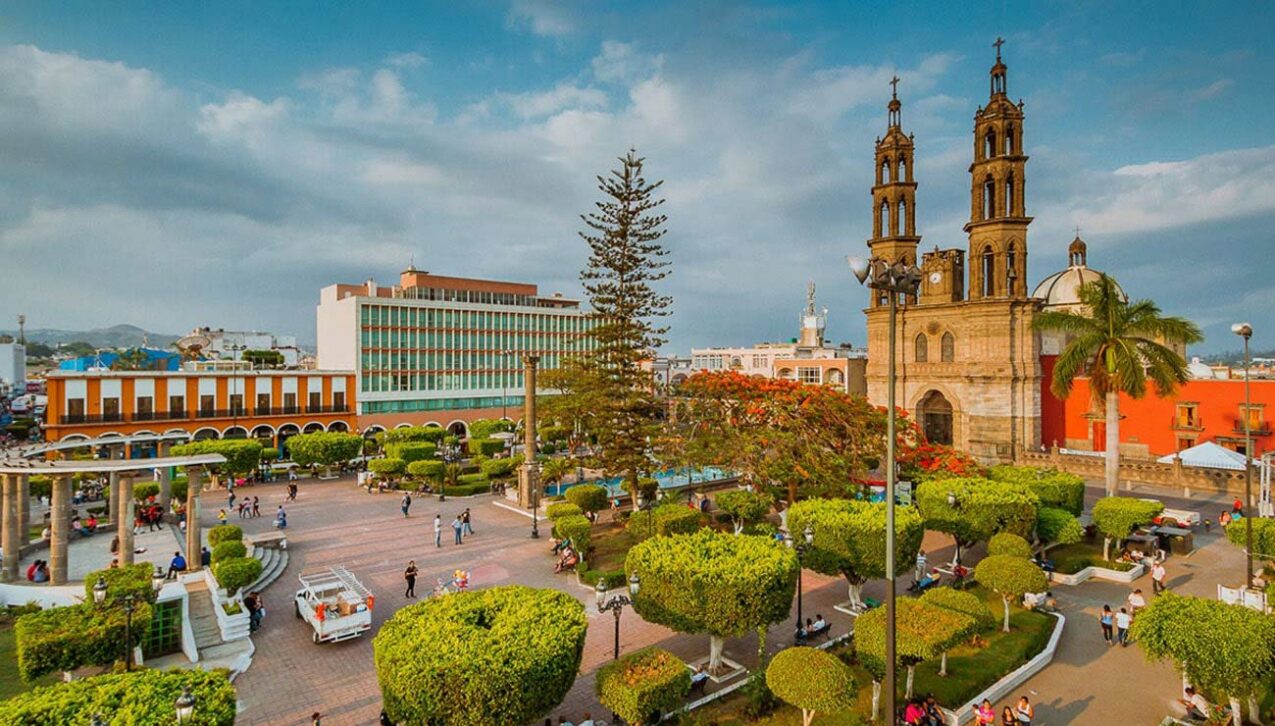
Tepic, the state capital of Nayarit, is notorious for its severe violence, with a homicide rate of 229 per 100,000 residents in 2010 . The city is situated on a major route for the transportation of narcotics and is controlled by one of the most dangerous criminal groups in Mexico — the Jalisco Cartel New Generation (JCNG) .

The two main cartels in charge of Juarez are the Juárez cartel and the Sinaloa cartel . The city has been the site of numerous drug-related homicides, with a homicide rate of 104 per 100,000 inhabitants in 2019 . Juárez also has a lengthy history of corruption and organized crime , as well as links to abductions and human trafficking in the United States.
Learn more: Juarez Travel Safety Information .
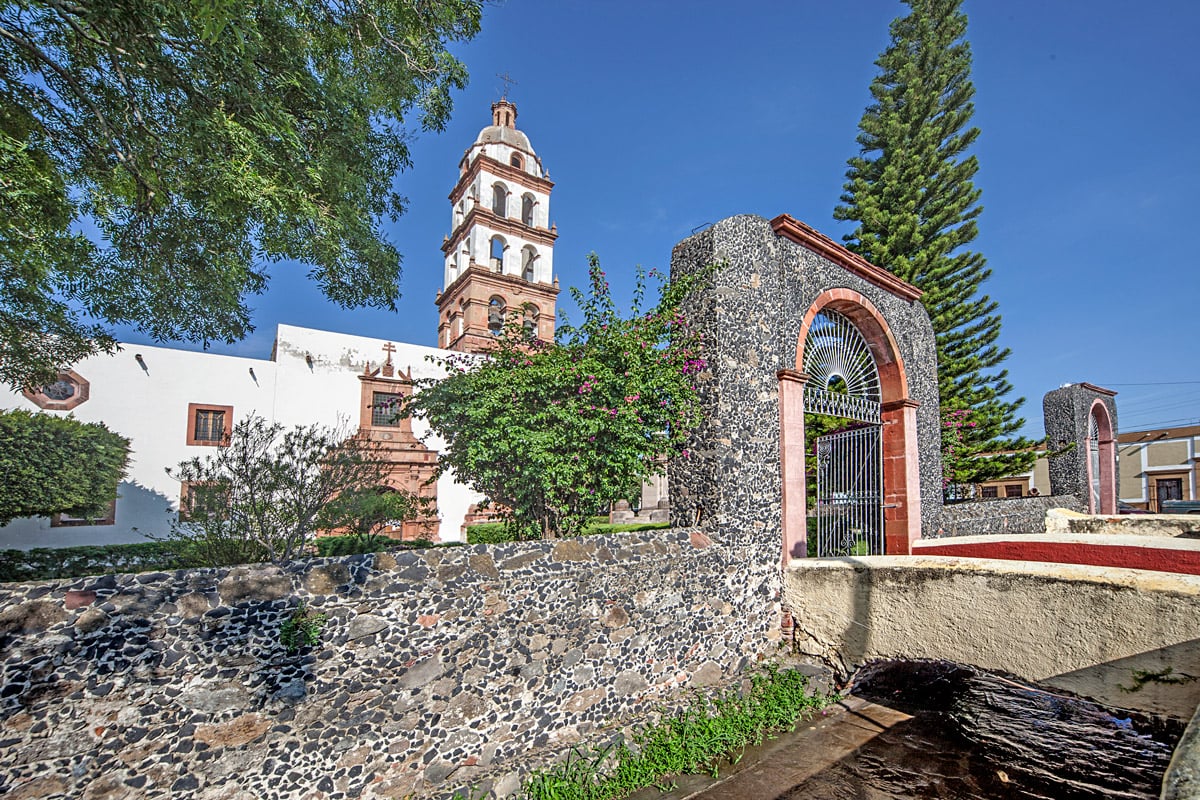
Salvatierra is a city in Guanajuato located in the center of the country. It serves as a sort of hub city for the rural region surrounding it, and unfortunately, the cartels have gained control of it. Over 60 bodies of missing people were discovered in the town’s woodland region in 2020. In 2019, Salvatierra had a homicide rate of 83 per 100,000 people .
Essential Tips for Staying Safe in Mexico
Given Mexico’s reputation for having some of the most dangerous cities in the world, it’s crucial to keep a few things in mind for a safe trip.
- Plan your travels appropriately, prioritizing safer areas. Conduct extensive research on your destination, and if by some chance your tourist destination has high crime rates, look for other places to visit. A beautiful tourist destination isn’t worth it if your life’s on the line.
- Stay at hotels or resorts with good security features like guarded entrances, security, and surveillance cameras. Choose well-rated lodging options and read reviews from reliable sources.
- Don’t stray from tried-and-true modes of transportation , such as licensed taxis. Ask the householder or someone from the security staff to organize transportation for you rather than hailing down taxis on the street, especially at night.
- Don’t attract attention by carrying excessive cash or expensive jewelry . Bring as little cash as you need for that day, if possible, and keep your cherished goods in a safe place in the hotel, apartment, or room where you are staying.
- Avoid nighttime excursions and never go out alone at night.
- Learn some fundamental Spanish words and phrases to help you converse with the locals. This can be especially useful in emergencies.
- Keep in touch with your loved ones : let them know where you are and what you have planned to do. Ensure you have a stable phone and internet services so you can call for help if necessary.
- Exercise caution while interacting with strangers , especially if they come to you with offers or some kind of help that you didn’t ask for or need. Refuse their proposals politely but firmly.
Mexico is a land of spectacular landscapes, sun-kissed beaches, heart-warming cuisine , and historic ruins that whisper tales of old civilizations . However, behind Mexico’s charm hides an unsettling reputation that compels travelers and citizens to be cautious.
The reality is that Mexico is home to some of the world’s most dangerous cities. These cities are notorious for their high homicide rates, cartels, organized crime, and corruption.
Remember that safety conditions can vary within a city and over time. While some cities in Mexico have higher crime rates than others, other regions are generally safe and friendly to tourists. Travelers should do their homework, stay current on safety issues, and be cautious when visiting potentially dangerous locations.
In the end, every country has an underground brimming with crime and violence, and the very least we can do is stay informed about these places and try to avoid going there at all costs. Mexico offers a variety of breathtaking places for those who exercise caution! So stay informed, stay alert, and follow local guidance — not just in Mexico but in all your travel destinations.

16 Safest Resorts in Mexico for Tourists
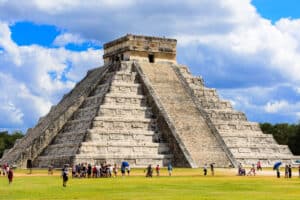
The Most-Visited Pyramids in Mexico & Their Locations
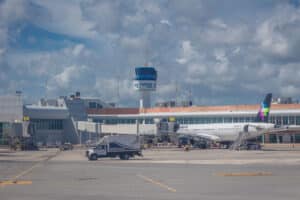
How to Get From Cancun to Playa Del Carmen

How to Rent a Car in Guadalajara (Rental Companies & Prices)
You must be logged in to post a comment.

Most Dangerous Cities in Mexico (A 2024 Guide)
Written by: kurt norris | reviewed by: editorial team.

Disclosure: WayToStay is reader-supported. If you buy a product we link to, we may earn a commission. Learn More
Known for its world-renowned vacation spots that include Cancun, Tulum, Playa del Carmen, and Cabo San Lucas, Mexico is a country that promises diverse landscapes of picturesque beaches, intrepid jungles, and centuries of historical landmarks.
However, beyond its postcard-perfect holiday havens, Mexico is also home to some of the world’s most dangerous cities. While there are definitely safe spots to visit, a key point to planning any trip to Mexico is knowing where you shouldn’t go.
To help you plan a fun and safe holiday, here are the 23 most dangerous cities in Mexico that you should avoid.
Quick Answer: Top 5 Most Dangerous
- Ciudad Obregón – Crime Index: 86.54
- Celaya – Crime Index: 82.91
- Zamora – Crime Index: 81.21
- Coatzacoalcos – Crime Index: 76.84
- Uruapan – Crime Index: 75.84
The 23 Most Dangerous Cities in Mexico
Of the 20 cities with the highest murder rate per capita , Mexico makes up nine, including the six cities with the most homicides per 100,000 people.
Thanks to the increasing presence of organized crime and drug trafficking, the political climate of Mexico is changing all of the time. In fact, many of the country’s most recognizable holiday destinations have decayed into some of the region’s most dangerous regions.
For this reason, I have composed this list of the most dangerous cities in Mexico based on Numbeo ’s updated crime index levels, which take into account the presence of specific crimes, both violent and property, as well as the general perception of crime levels and safety from firsthand accounts.
Statista , the World Population Review , and local news articles were also used to confirm the overall danger levels of each destination, including murder rates, cartel presence, and other criminal statistics.
1. Ciudad Obregón
Crime Index: 86.54

Located in the southern region of the state of Sonora along Mexico’s northern border with the US, Ciudad Obregon tops this list of Mexico’s most dangerous cities with an overall crime index of a whopping 86.54.
Along with being Mexico’s most dangerous city according to its crime rate, Ciudad Obregon also boasts the world’s fourth highest murder rate per capita, with the city averaging about 101.13 murders per 100,000 inhabitants each year. And with a population of just over 430,000 residents, that amounts to about 435 murders yearly.
Home to an abundance of crime, both violent, petty, and organized, Ciudad Obregon is definitely a city to avoid when visiting Mexico.
Crime Index: 82.91
Averaging about 109.39 murders per 100,000 inhabitants, Celaya is the most dangerous city in the world when comparing murder rates. Still, with an overall crime index of 82.91, the central Mexican city comes in just slightly safer than Ciudad Obregon.
Located in the Guanajuato state, Celaya is home to over 740,000 residents and is known to host over a thousand murders annually, with a notable increase in crime attributed to gang violence in recent years.
Theft, drug sales, and human trafficking are also not uncommon in the city, and traveling to Celaya should be avoided when visiting Mexico.
Crime Index: 81.21
Another of Mexico’s crime havens competing for the spot atop any list of the most dangerous cities in Mexico (and the rest of the world), Zamora is home to the second-highest murder rate ever recorded by the Mexican Council for Public Security and Criminal Justice, with a reported per capita murder rate of 196.6 murders per 100,000 inhabitants in 2021.
While most of this crime is attributed to gang violence against rival factions, police, citizens, and bystanders are known to get caught in the crosshairs. Other common crimes in the city include kidnappings, petty theft, and extortion.
4. Coatzacoalcos
Crime Index: 76.84

Once a tourist hotspot, Coatzacoalcos has been plagued with crime in recent years, amounting to an overall crime index of 76.84. While violent crime is not as abundant as the top three most dangerous cities in Mexico featured on this list, Coatzacoalcos still boasts a homicide rate amounting to 48 murders per 100,000 inhabitants.
In fact, the city made international headlines in early 2022 when nine bodies were left at the side of the road. The crime has been attributed to the local Jalisco Cartel, who left a note to the authorities, warning against their efforts to reduce crime in the region.
While the city has increased its Military and security presence in the area, tourists should still plan on avoiding Coatzacoalcos, with murder, robbery, and violent crime still being common in the region.
Crime Index: 75.84
Located only about two hours from Zamora, Uruapan is another city in the state of Michoacan that should be avoided as the fifth most dangerous city in Mexico. Known for its cartel presence, Uruapan is a hotbed of violent crime as factions battle for territory in the city.
While the crime is often confined to internal conflicts between rival factions, police, residents, and other bystanders are known to get caught up in the conflict, with the city boasting a murder rate of 72.59 homicides per 100,000 inhabitants.
Along with murder, other common crimes in the city include carjackings, robberies, and kidnappings.
Crime Index: 71.97
A popular holiday and spring break hot spot for tourists from California and other nearby US states, Tijuana may come as a bit of a surprise for many reading this list of Mexico’s most dangerous cities.
Still, with over 2,000 homicides per year and a per capita rate of 105.15 murders per 100,000 residents, the city that shares a border with San Diego is a hotbed of violent crime and is even home to the second-highest murder rate in the world.
The city attributes much of its crime to gang violence between conflicting cartels, as well as its large population and poverty levels, resulting in many occurrences of violent crimes, such as kidnapping, robberies, rape, and murder.
7. Irapuato
Crime Index: 71.28

The second largest city in Mexico’s Guanajuato region, Irapuato boasts plenty of natural beauty, consisting of the Arandis Hill and two picturesque rivers bordering on either side. In fact, the city hosts thousands of tourists each year looking to explore its historical architecture and surrounding vistas.
However, despite its tourist popularity, Irapuato is one of the most dangerous cities in the country in recent years, boasting an overall crime index of 71.28 and a per capita murder rate of 94.99 homicides per 100,000 inhabitants, the fifth highest in Mexico.
While local law enforcement has recently sought aid from the federal government to control increasing criminal trends, murder, kidnapping, and extortion are all still common in the city, and traveling to Irapuato should be avoided for the foreseeable future.
8. Zacatecas
Crime Index: 71.47
Another of Mexico’s most dangerous cities masquerading as a popular tourist hotspot, Zacatecas attracts thousands of visitors annually thanks to its colonial architecture, cultural heritage, and breathtaking scenic views of its natural surroundings.
Still behind its postcard-perfect presentation, Zacatecas is a hotbed of violent crime, boasting a per capita homicide rate of 107.47 murders per 100,000 inhabitants in 2021, the third highest of any city in the world for that year.
While crime rates have slightly improved in the city as it has across Mexico, Zacatecas is still an unsafe place to visit, with organized crimes, kidnappings, and public shootings all being common occurrences.
9. Cuernavaca
Crime Index: 70.94
The capital city of Mexico’s Morelos state, Cuernavaca, is commonly referred to as the City of Eternal Spring and depicts images of romantic architecture, flower-covered fields, and a breathtaking verdant landscape.
And while Cuernavaca is surrounded by plenty of beautiful landmarks, the city itself is a center of organized and violent crime and, unfortunately, should be avoided by tourists. Cuernavaca boasts a murder rate of 55.83 homicides per 100,000 inhabitants, while other organized crime in the area includes kidnapping, drug trafficking, and gang fights.
Additionally, poverty is rampant in the city, making petty crimes and theft common occurrences on their own, with an overall crime index of 70.94 in Cuernavaca.
10. Culiacan
Crime Index: 70.69

Located in Sinaloa, the birthplace of infamous cartel boss El Chapa, Culiacan is a city that is firmly in the hands of the Mexican Cartel. As such, the city should be avoided by tourists, with violent crimes of murder, kidnapping, and exploitation all being common occurrences.
Culican most recently made international headlines in January 2023 for the arrest of Ovideo Guzman Lopez, the son of El Chapo and a current high-ranking member of the Sinaloa Cartel. The arrest follows the 2019 operation to achieve the same goal, which saw over 700 cartel gunmen take to the streets, taking hostages until the ultimate release of Lopez.
While no conflict to this extent has followed the 2023 arrest, the city has experienced some levels of unrest and increased crime, and visitors should avoid all travel to Culiacan.
11. Ciudad Juárez
Crime Index: 68.34
Another of Mexico’s most dangerous cities, Ciudad Juarez has experienced an upward trend in its crime rates in recent years, with a current crime index sitting at about 68.34 and climbing.
Ciudad Juarez’s increase in crime is largely attributed to the increased gang conflicts between the Juarez and Sinaloa Cartel, which frequently fight over turf in the area. Common crimes in the city include drug trafficking, robbery, carjacking, and murder, with homicide rates being about 103.61 murders for every 100,00 inhabitants, the third highest murder rate per capita in the world.
Ciudad Juarez also boasts one of the country’s highest femicide rates, making the city particularly dangerous for women.
12. Reynosa
Crime Index: 67.82
Another of Mexico’s border cities boasting the title of one of the country’s most dangerous destinations, Reynosa is located just across the US border, separated from Texas by the Rio Grande.
Despite its proximity to the United States, Reynosa is a hotbed of criminal activity and has become a popular stomping ground for criminal gangs and cartels.
While the city’s murder rate of 41.48 homicides per 100,000 inhabitants may not be as high as some other regions featured on this list, the local cartels and gangs are known to target immigrants crossing the border, with common crimes including drug trafficking, kidnapping, and even murder.
13. Ciudad Victoria
Crime Index: 65.12

Located only about a three-and-a-half-hour drive from Reynosa, Ciudad Victoria is just as dangerous a city for travelers as the nearby border city. Like Reynosa, Ciudad Victoria is a haven for gang violence, with several cartels fighting over the turf.
Despite having a slightly lower crime index than Reynosa, violent crime is actually worse than in Reynosa, with about 86 murders per year for every 100,000 inhabitants. However, these are primarily confined to rival criminal groups, police, or military within the city.
Still, traveling to Ciudad Victoria should be avoided, as pedestrians and tourists can also be targeted.
14. Guadalajara
Crime Index: 61.96
Home to the birthplace of cultural Mexican icons such as tequila and mariachi, Guadalajara is a popular destination, attracting over three million tourists each year . However, despite its popularity, Guadalajara is home to an abundance of crime, making it one of the most dangerous cities in Mexico.
Informally known as Chemical City, Guadalajara has been closely associated with the cartel and Mexico’s drug industry for over four decades. Today, the Jalisco New Generation Cartel is known to operate in the area, and the city has become another den of criminal activity, with high levels of robbery, sexual assault, and murder.
And while most of the city’s violent crime is often between rival gangs, it is not uncommon for tourists to get caught up in the action.
15. Acapulco
Crime Index: 60.73
A popular resort community of the Guerrero state along Mexico’s central Pacific Coast, Acapulco is another city that may surprise people to find out is one of the most dangerous cities in the country.
However, outside its luxury hotels and tourist hot spots, Acapulco is a boiling pot of criminal activity, with its crime index teetering on the high side at 60.73. Additionally, Acapulco boasts one of the highest murder rates per capita on the planet, with about 54.13 annual murders per 100,000 inhabitants.
The town’s crime rate is largely associated with the state’s prominent drug industry, with several cartels operating in the area and battling over control of the local drug trade. While most crime is confined to rival gangs, tourists venturing outside of the resort areas can often get drawn into the conflict.
Crime Index: 57.97

Once a popular tourist destination, murder rates in Colima have more than tripled since 2015, with 181.94 murders occurring for every 100,000 inhabitants, the most of any city in the world, according to some sources .
Like many places in Mexico, one reason for this upward trend in violent crime can largely be attributed to increased cartel activity in the region. Home to the Port of Manzanillo, Colima is a boon to the local drug industry, causing many rival gangs to fight over the asset, including the Jalisco New Generation and Sinaloa Cartels.
While much of the region’s crime is contained within these rival factions, both a local judge and congresswoman have been murdered for interfering in the local drug trade in recent years. Visitors are at risk of being targeted or caught in the conflict, and travel should be avoided in the region.
Crime Index: 57.95
Founded in 1531, Tepic is one of the most historical cities in Mexico and is home to an urban center responsible for much of the country’s sugar cane, tobacco, and citrus fruit productions. The area is also known for its production of methamphetamine, making it a pivotal stop for drug trafficking.
The region is currently controlled by the Jalisco New Generation Cartel, with corruption and bribery being rampant in the city. As a result, crime is abundant in Tepic, with high volumes of robberies, assaults, and murders happening every year.
Teppic sees approximately 54.64 murders per 100,000 inhabitants annually, putting it on the list of some of the most violent cities on Earth.
Crime Index: 56.66
A world-renowned tourist hotspot for decades, Cancun is actually one of the most dangerous cities in Mexico, especially for tourists who can often become targets of violent and organized crimes.
Like many places in Mexico, cartel presence has been growing in the Cancun region, which has resulted in an increase in crime in the city, including violent crimes such as kidnapping, assault, and murder.
In recent years, the homicide rate in Cancun has increased to about 64 murders per 100,000 visitors, including both locals and tourists. In fact, not even the resorts are safe in Cancun, with the murder of four tourists making international headlines back in April 2023.
While Cancun holds many favorable memories for travelers, visiting the resort city should be avoided for the foreseeable future.
19. Morelia
Crime Index: 56.62

The capital city of the Michoacan state, Morelia is considered much safer than the nearby cities of Uruapan and Zamora but is still considered one of Mexico’s most dangerous cities, with an overall crime index of 56.62.
Like many areas in the state and along Northern Mexico, Morelia has served as a violent warzone for battling cartels vying for the coveted turf, leading to an abundance of violent crimes in the city.
With 42.05 homicides per 100,000 inhabitants, Morelia’s murder rates are comparatively lower than other nearby cities, although travel should still be avoided in the region due to high levels of violence, kidnappings, and petty crimes.
20. Chihuahua City
Crime Index: 55.83
It’s hard to imagine that such a small dog breed came from one of the most violent regions in the world, but with a crime index of 55.83, Chihuahua City is one of the most dangerous cities in Mexico.
The hub of another key operation along the country’s notorious drug trade, Chihuahua City is often the center of violence as warring factions fight for the territory, dragging in bystanders and law enforcement in the process.
While the city’s murder rates of 41.7 homicides per 100,000 people are relatively low, Chihuahua City’s corruption levels are some of the worst in the country, with several high-level officials and law enforcement officers linked with organized crime.
21. Monterrey
Crime Index: 48.25
The capital city of the Nuevo Leon state, Monterrey is the third largest city in Mexico and is considered much safer than other nearby communities. However, with a crime index of 48.25, the city is still one of the most dangerous cities in Mexico, although crime can often be avoided.
With several museums and historical attractions scattered throughout the city, Monterrey can make for a great travel destination. With that said, visitors need to practice extra caution, as kidnapping, petty theft, and even murder are common in the city.
22. Mazatlán
Crime Index: 40.25

Located along the Pacific Coast, Mazatlan occupies a beautiful stretch of shoreline with several holiday resorts. However, Mazatlan is also in the heart of the Sinaloa region, a state serving as an epicenter of drug trafficking in Mexico.
As such, crime is rampant in the city and has seen a steady increase in violent crimes in the past decade. While Mazatlan remains a popular destination, travel to the region should be avoided. However, if you are planning a trip to Mazatlan, be sure to practice caution and do not leave the resort area.
23. Ensenada
Crime Index: 38.50
While Ensenada may only have a crime index of 38.50, the city is actually one of the most dangerous in the world, boasting the sixth-highest murder rate, amounting to an average of 90.58 murders annually per 100,000 people.
Located in Baja California, Ensenada has seen a similar trend of increased violence due to cartel presence as seen in other cities of the country. The Sinaloa, Jalisco New Generation Cartel, and Arellano Felix organizations all have strongholds in the region, which has led to an increase in homicide, human trafficking, and carjacking.
About The Author
Kurt Norris
A Canada-based freelance writer, Kurt acquired his bachelor’s degree in English Language and Literature from the University of Windsor. Upon graduating, Kurt left the courtside media desk behind and began venturing the globe. Throughout his journeys, Kurt enjoys partaking in slow travel and loves to explore the histories and cultures of each destination, which he shares with others through his writing.

You May Also Like

Denver vs Boulder: An Honest Comparison To Help You Choose!

The 10 Best Lake Tahoe Hotels With Lake Views (2024 Guide)

12 Famous Landmarks In Hawaii (Updated 2024)
WayToStay is an independent travel website, providing in-depth travel guides from locals and experts. Our mission is to help travelers, backpackers & adventure lovers to discover and research their next destination.
- Editorial Process
- Advertising Policy
- Privacy Policy
- Terms of Use
Join Our Free Travel Newsletter
Sign up for our FREE weekly email. Delivered to your inbox every Friday.
Join our list
Subscribe to our mailing list and get interesting stuff and updates to your email inbox.
Thank you for subscribing.
Something went wrong.
We respect your privacy and take protecting it seriously
Enter your email and get this picture and description straight to your inbox

- United Arab Emirates
- Switzerland
- The Netherlands
- Puerto Rico
- United States
- New Zealand
- ➨ Choose from World Map
- Budget Travel
- Family Travel
- Getting Around
- Visas & Passports
- Work with Us
Browsing Category
- Czech Republic
- Saint Martin
- Uncategorized

- Latin America & The Caribbean
10 Most Dangerous Places in Mexico in 2023 (Fact or Fiction)
· updated august 2023 ·.
We’ve spent several years living in Mexico, and we truly love most things about the country. From its mouth-watering cuisine to its stunning architecture, Mexico is one of the most epic countries to visit on Earth. After living and traveling through most of Mexico, we have been to almost every major city in the country, including those known as the most dangerous places in Mexico.
While there are so many things to love about Mexico, stories about drug cartels and violent crime have crept back into the news in recent years.
For these reasons, a lot of people worry about their safety in Mexico when planning a trip, and they choose to either avoid the country as a whole or hide on a resort the whole time.
The Cartels Are Only a Risk in Certain States
The drug trade is only heavily concentrated in a few Mexican states, and the most dangerous cities in Mexico are generally places that tourists don’t go to anyway. While there are occasional stories of bad things happening in places like Puerto Vallarta and Cabo San Lucas, the truth is that the most touristy places in Mexico tend to also be some of the safest places in Mexico…at least most of the time.
I’ll say this: Mexico is not an especially dangerous place for tourists in most cases, and you are usually in no more danger in 99% of Mexico than you are in the United States. One look at the St. Louis crime statistics proves that point.
But what about that other 1%?
This post is going to take a look at safety in Mexico, as well as 10 of the places that people often call the most dangerous places in Mexico. For each one, we will offer an opinion on whether or not it is safe enough to visit based on our own experience.
Note: the content of this post is based on our own personal experiences as well as stories we have heard from friends and fellow travelers. You should take precautions anywhere that you travel in the world, and we are not liable in any way for anything that happens during your trip.
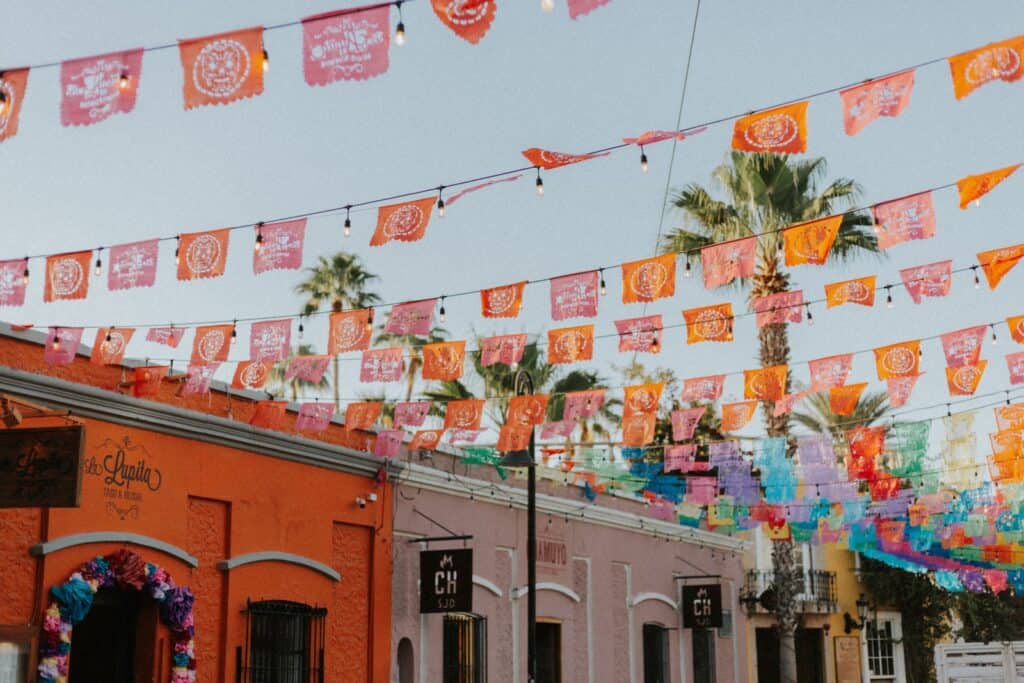
Why Is Mexico Dangerous to Visit?
Whether or not Mexico is truly dangerous to visit as a whole is a topic that will be discussed later in this post. However, there are some real issues that cause reason for hesitancy when considering a trip to Mexico. Having lived in Central Mexico, I can offer some true insight into what these issues look like and what causes them.
Organized Crime in Mexico
It is true that organized crime exists all throughout Mexico. Drug trafficking is a very profitable business thanks to the major demand for drugs across the border in the United States. High potential profits have led drug cartels to take extreme measures, ranging from inter-gang violence to full-scale human trafficking.
The Jalisco New Generation Cartel, Santa Rosa de Lima Cartel, Sinaloa Cartel, and Las Zetas are all criminal groups vying for control of territories and routes to the U.S. market.
The Mexican government claims to be doing all that it can to combat the issues, and there are many people in the government who actually are. However, corruption is a major issue in most Latin American governments, and Mexico is a textbook example. There are corrupt police officers in almost every Mexican city and corrupt government officials at every level.
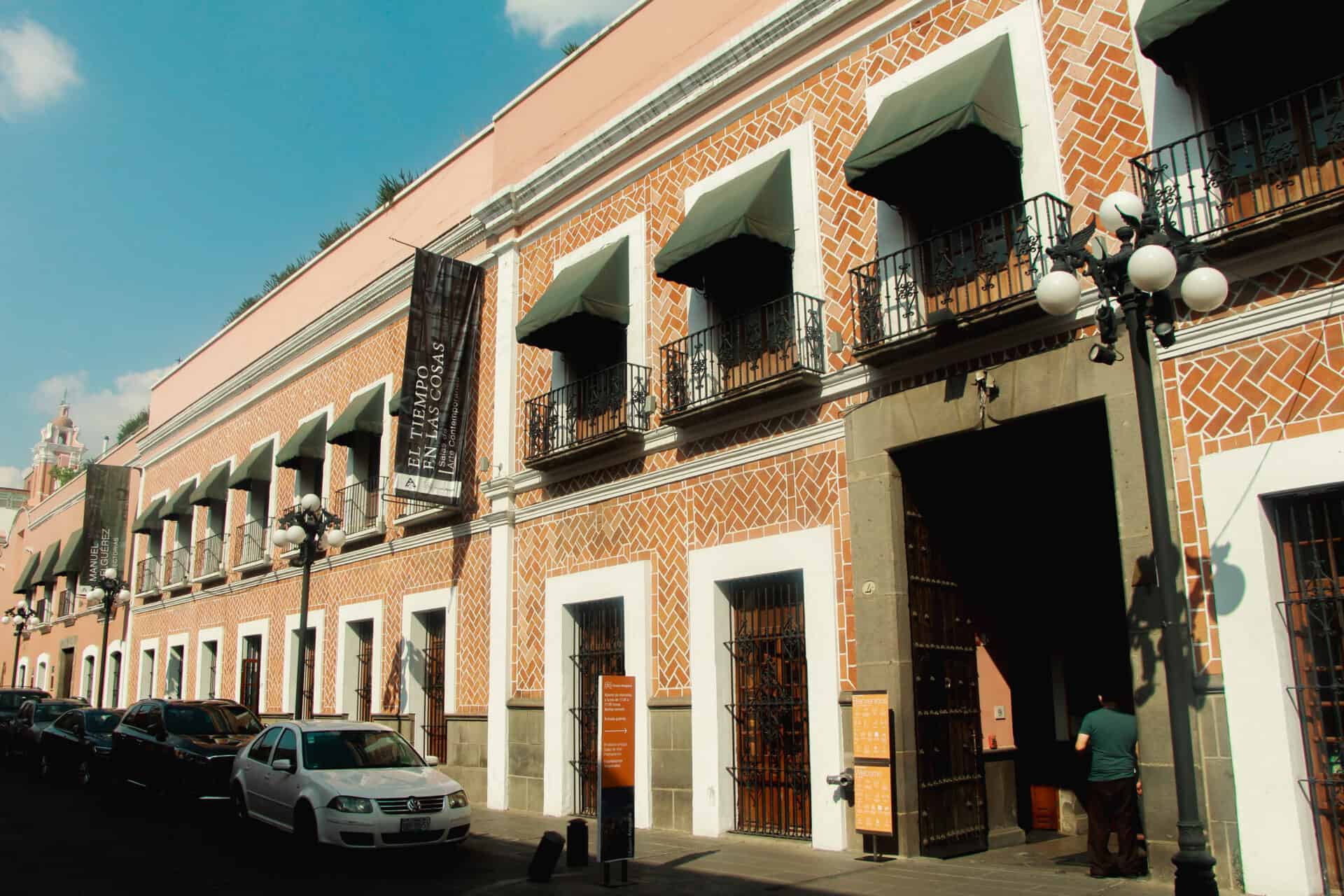
Is Mexico Dangerous for Tourists?
In general, Mexican drug cartels do not want to harm American tourists. It is bad for business. If anything, they want to appeal to American tourists!
If you visit a popular tourist destination like Los Cabos, Cancun, or Puerto Vallarta, it is very common to be offered illegal drugs by a straggling salesman wandering along the beach. You should always say no, obviously, but these individuals are almost always tangentially related to a major drug cartel, if only at the lowest level of the totem pole.
U.S. Citizens, as well as tourists from Europe, Canada, and other countries outside of Latin America are generally very safe in Mexico so long as they don’t seek out illegal activities. Popular tourist destinations are generally not among the most dangerous places in Mexico.
The Most Dangerous Cities in Mexico (Supposedly)
I’ll be very clear up front. Some of these cities are truly very dangerous, while others are some of the safest cities in Mexico . The goal of this post is to point out which cities are truly dangerous.
The main reason that foreigners have a negative idea about danger in Mexico is because the U.S. State Department tells them to. The U.S. State Department has notoriously risk-averse standards, and its travel warnings regarding Mexico teeter on the verge of fear-mongering.
There are places in Mexico that are truly dangerous and should be avoided. However, the truth is that most Mexican cities are quite safe places, and you will run into very few issues in most parts of Mexico. From someone who has traveled all around the country, here is the inside scoop on the most dangerous places in Mexico.
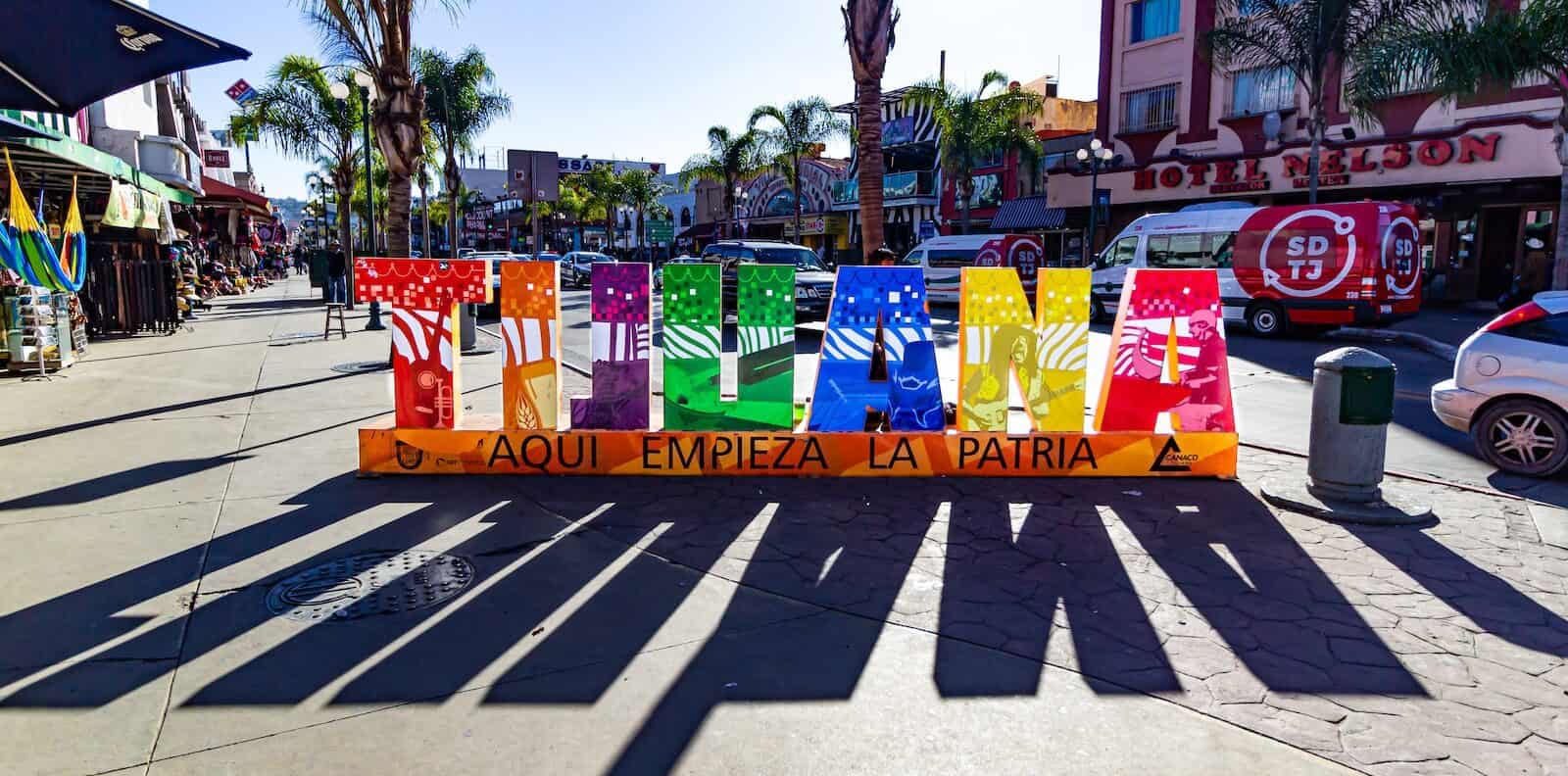
Tijuana, one of the biggest cities in Mexico, is located right on the border with the United States across from San Diego, California . Before we ever traveled to Tijuana, all we heard of were risks of crime and pickpocketing, cartel violence, and certain death. It is included on every list of the most dangerous places in Mexico.
At one point, Tijuana even held the reputation of the most dangerous city in Mexico.
In our experience, this just isn’t the case. While there is a larger cartel presence in Tijuana than there is in many other places in Mexico, that doesn’t necessarily put you at risk.
The cartels are smart; they’re not in the business of killing Americans. At least most of them aren’t. In Tijuana, your real risk is in getting scammed or pickpocketed by a petty criminal – not so much getting shot and killed by a cartel. While petty theft is no fun, it’s not nearly as bad as cartel-related violence.

– R E A D –
The cartels are smart; they’re not in the business of killing Americans.
While the reputation of danger in the city is definitely overhyped, that doesn’t mean you can let your guard down. Tijuana is not a particularly safe place; it’s just not nearly as dangerous for tourists as people hype it up to be. As a border city, there is certainly a risk that innocent bystanders might get dragged into a bad situation, but this is very unlikely.

If you follow the steps that I outline in my Tijuana travel guide , you should not have any major problems while visiting Tijuana. In fact, we loved it there, as well as the rest of the Baja California state! It’s one of our favorite places in Mexico because of its incredible food and craft brewery scene.
So, is Tijuana too dangerous for tourists to visit in 2023?
The Verdict
Tijuana is safe enough to visit if you practice common sense.
2. Cities Along the Texas Border
Over the past several years, there have been a lot of really bad stories surfacing about things happening on the Mexican side of the Texas border. A family of Americans was accidentally blown up in their SUV by a cartel who mistook them for a rival gang. Massive graves have been uncovered, people have been kidnapped, and tourists’ cars have been surrounded and commandeered by gangs.
Is there any truth to this?
Unfortunately, yes there is. While any “dangerous place” isn’t necessarily dangerous all of the time, the Mexican border with Texas tends to be one of the most dangerous places in Mexico as a whole.

The entire U.S. border is prime real estate for the cartels, as they look to find entry points for their illicit products. As a result, there’s a high concentration of bad people here, and an even higher concentration of accidental killings of innocent people that get stuck in the crossfire.
Sadly, the Mexican border with Texas tends to be one of the most dangerous places in all of Mexico.
While passing through during the day on a road trip and staying in the major cities is not especially dangerous, straying away from tourist areas and heading out at night both tend to lead to bad outcomes. Monterrey has a pretty good reputation for safety, but Reynosa, Nuevo Leon, and even as deep as Ciudad Obregón all have sketchy reputations for violence.
The Texas border is mostly unsafe to visit.
3. Acapulco

While it was once one of the most glamorous destinations in the Americas and a playground for Hollywood celebrities, Acapulco’s popularity has really decreased. This is largely due to a really bad reputation for violence and crime. Many stories of dead bodies washing up on the shore and body parts being found in the streets started to surface, and tourism nearly reached a standstill.
Is there any truth to this? Yes and no. There definitely used to be.
Acapulco went through a period of time where it was truly one of the most dangerous places in Mexico and was not a place you wanted to go. Criminal groups in the area took control of the city and made it practically a warzone.
This is not the case anymore. While the slums outside of Acapulco are definitely not a place you should go anywhere close to, the tourist areas themselves are once again completely safe.

I go into more detail in my Acapulco travel guide . But basically if you keep your guard up and take certain precautions, you can have a really fun and relaxing trip to Acapulco.
This Pacific Coast gem is once again a popular place packed by tourists – both Mexican and foreign – and it’s a really cool place to check out. There are also several really great beaches here, and if you decide to go, you should check out my rankings of the best beaches in Acapulco!
Acapulco is safe enough to visit.
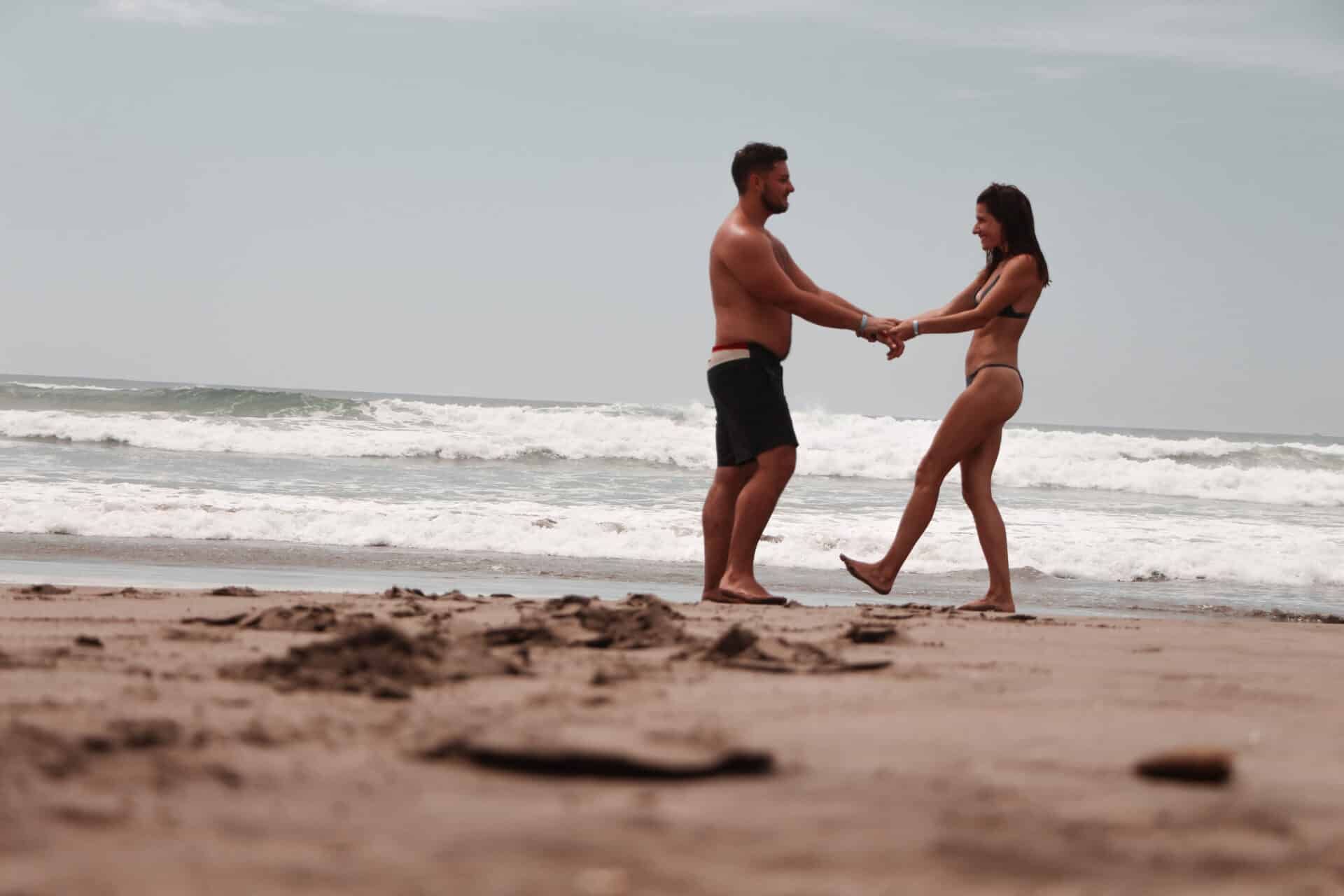
4. The State of Sinaloa
The State of Sinaloa is where one of the most infamous criminal syndicates of all time got its name. The Sinaloa Cartel, the group that made El Chapo famous, calls Culiacan its home.
Due to being at the very core of one of the most illustrious criminal organizations in history, Sinaloa should be dangerous, right? Traveling here should be a death sentence, right?
There is certainly some truth to the dangerous rumors of Sinaloa.

Well, sort of. Like most things, making too broad of a generalization is what puts this into a gray area. There are some places in Sinaloa that are very safe. The coastal city of Mazatlan is a great example of this.
However, there is certainly some truth to these rumors, too. While there are more dangerous places in the world, Sinaloa is typically better off avoided unless you have a lot of experience traveling in Mexico.
Is Sinaloa dangerous on an international level? Not especially. However, generally speaking, this is still one of the more dangerous places in Mexico and you have little need to go here unless you’re headed to the beaches of Mazatlán or the Copper Canyon.
Some places are safe enough to visit, others are too dangerous.
5. Ciudad Juarez
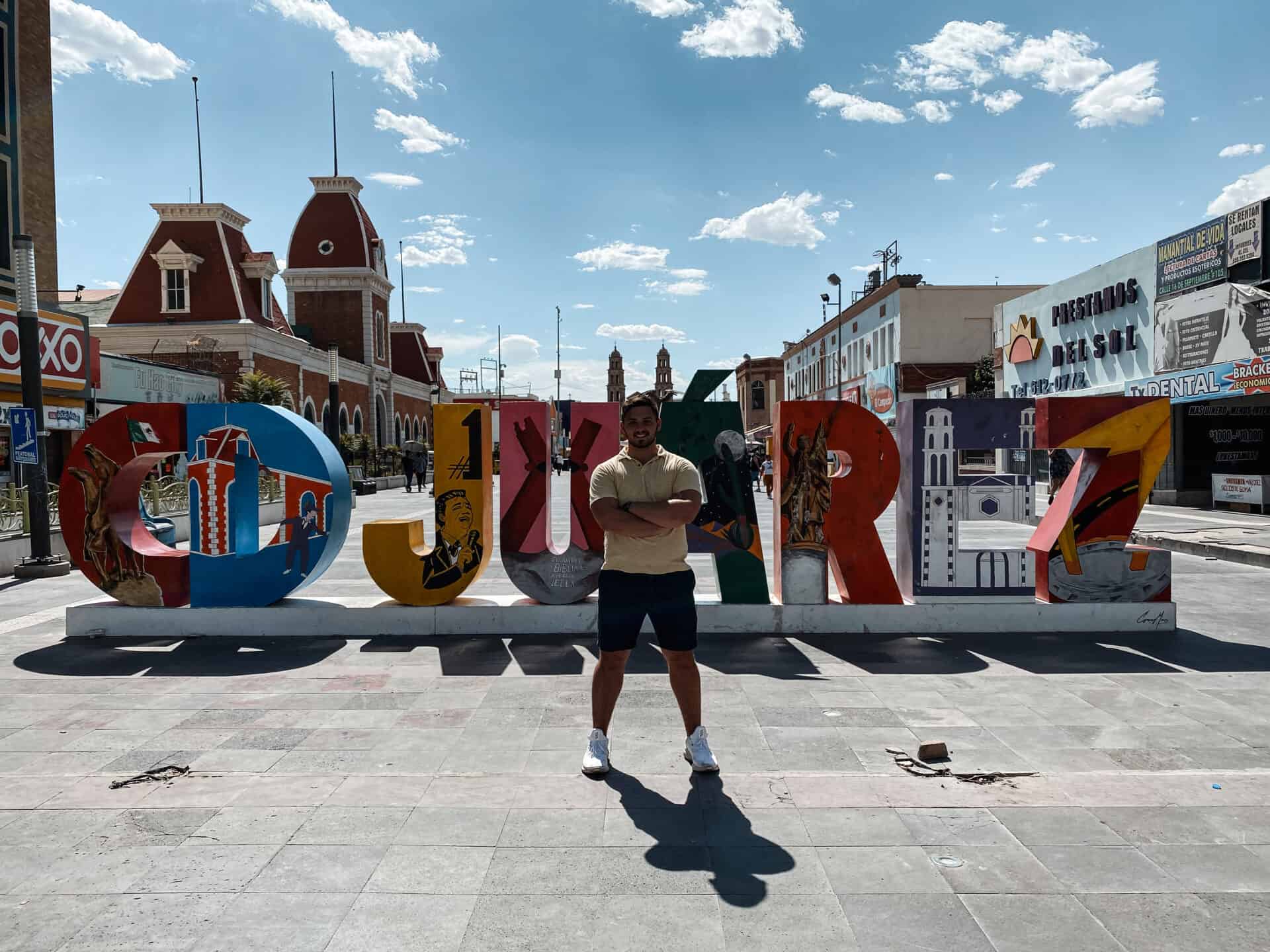
Ciudad Juárez, located right across the border from El Paso, Texas, has certainly earned itself quite a bad reputation. During the peak of its infamy, it was considered to be a literal warzone.
There was excessive indiscriminate violence and it was known as one of the femicide capitals of the world. It had one of the highest homicide rates in the world. For comparison, its highest murder rate was higher than Damascus at the peak of the Syrian Civil War.
People were being killed left and right, and there weren’t enough ambulances to pick up the bodies. Sexual assault and gang activity ran rampant. It was honestly a horrible place to be. But is that still the case?
Nah, Not really.
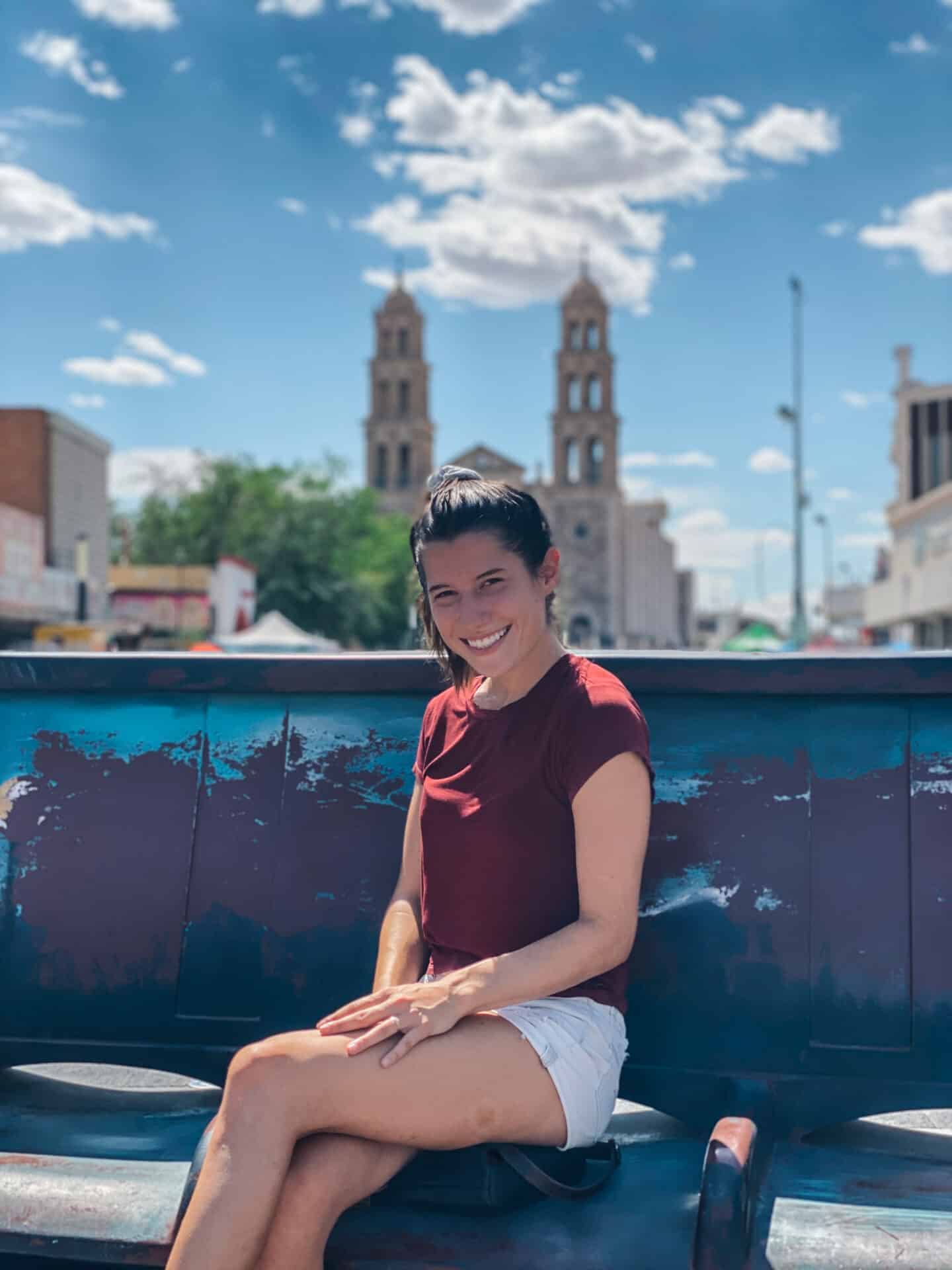
While Juarez is still a bit rough around the edges (quite literally), it is definitely safe enough to visit. We visited and split our time between Juarez and El Paso, Texas, and we really had an awesome time.
While you definitely need to take safety precautions in Juarez, the odds of something happening to you aren’t particularly high anymore. The extremely high levels of violence have dissipated, although it is still one of the most violent cities in Mexico.
If you don’t draw attention to yourself, don’t go out after dark, and keep your wits about you, you shouldn’t have any issues. I’d advise reading my guide to staying safe in Juarez , though, just to make sure you know everything you need to know!
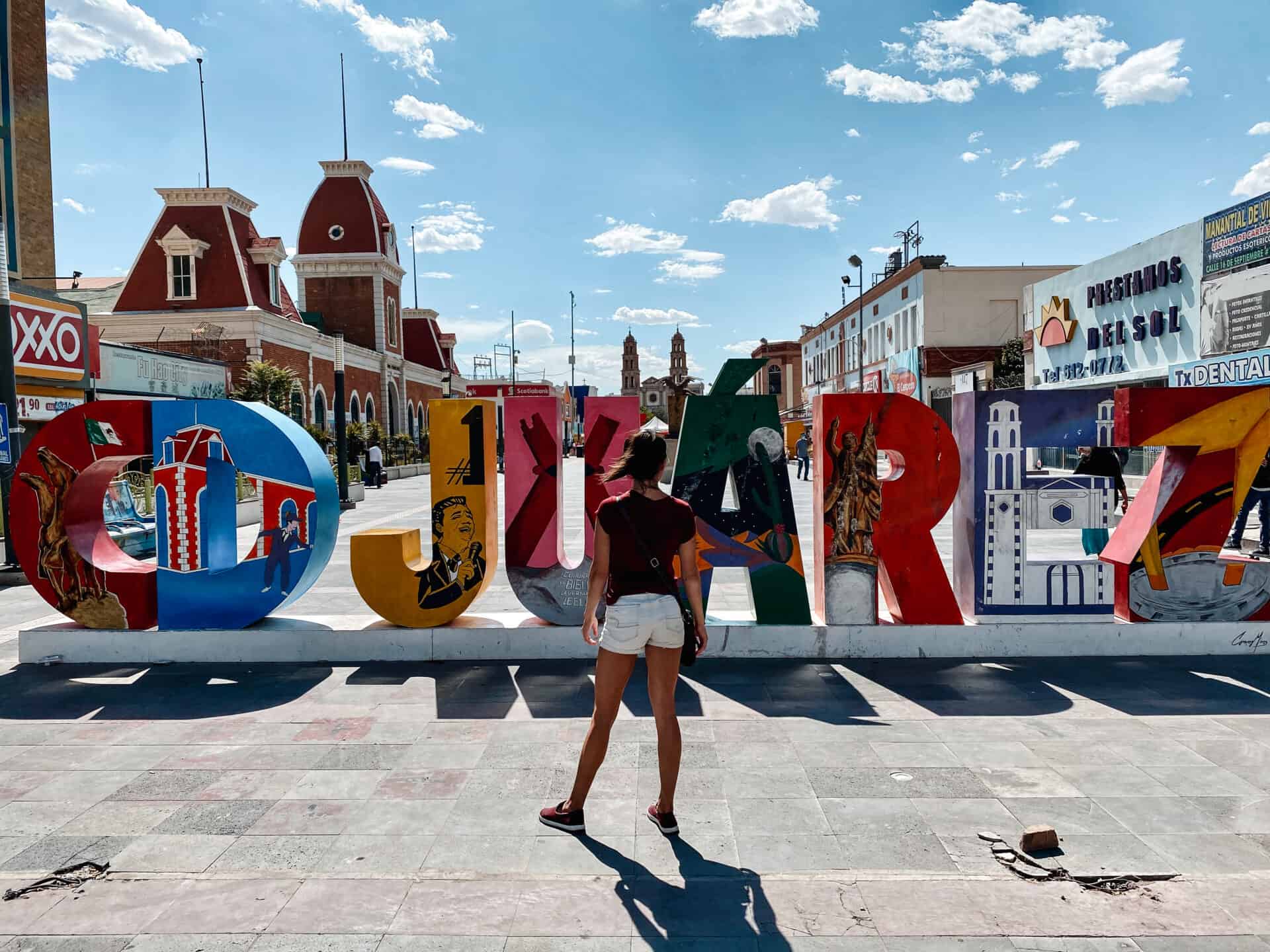
Ciudad Juarez is safe enough to visit during the daytime if you take precautions.
6. Mexico City
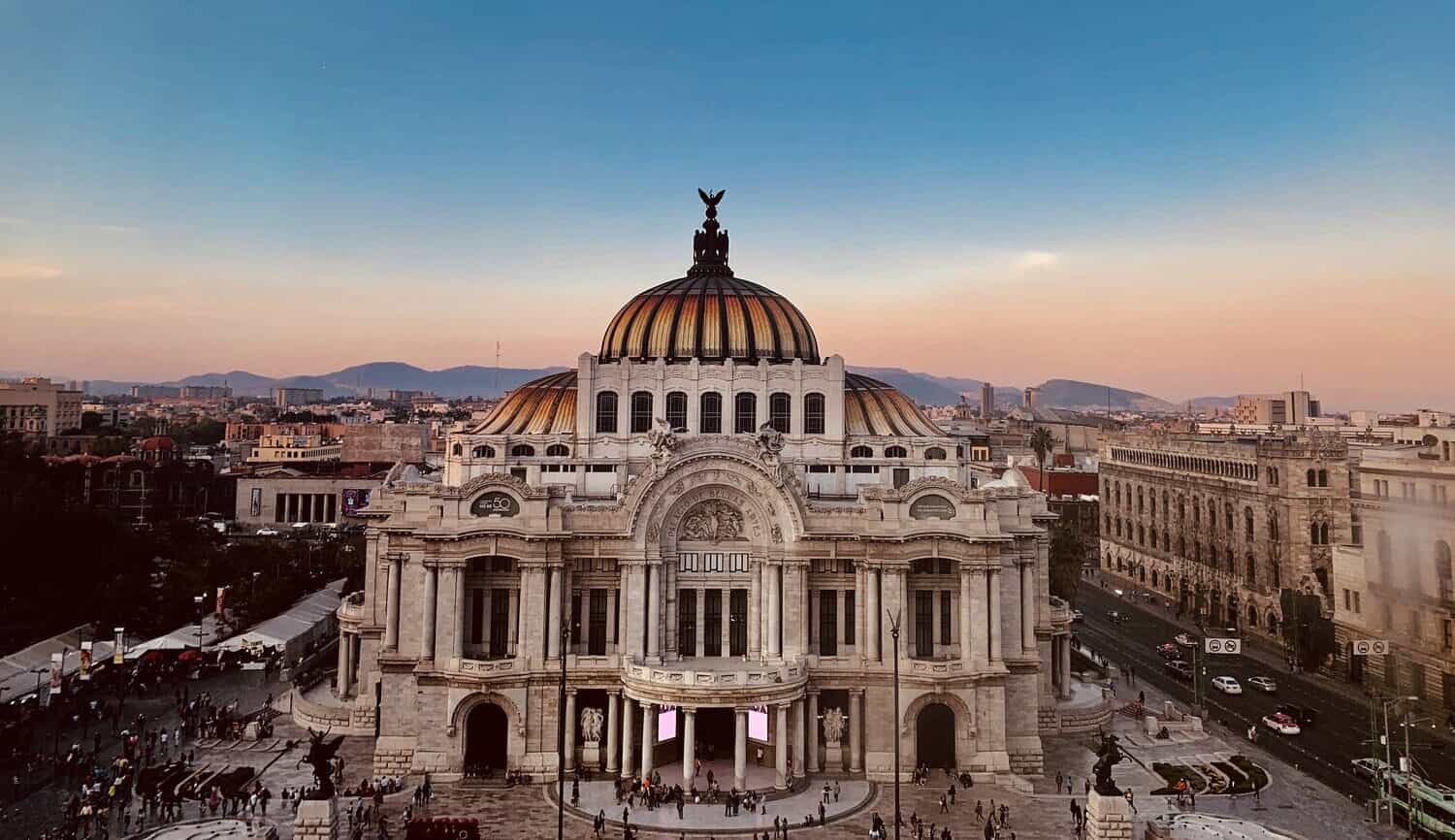
Mexico City is the most populous city in Mexico, and depending on what you read, it’s either a safe haven or a no-go zone. There’s a lot to unpack here because the answer to this is a little bit more complex.
Mexico City is ginormous. It’s the second biggest city in the Americas and makes New York City look like a village. The city absolutely sprawls, and as a result, you can’t really refer to the city as a whole when answering this question.
It really all comes down to what part of the city you’re talking about, as it has bad areas just like any other big city. The truth is that if you stick to the “good” areas and touristy areas of Mexico City – like Roma, Condesa, Hipodromo, the Historic Center, and Polanco – you’re going to feel like you’re in a perfectly safe, upscale place.
While you need to take general big city precautions even in these nice neighborhoods, they’re still just as safe as any big city in Europe or North America.
The truth is that if you stick to the “good” areas and touristy areas of Mexico City, you’re going to feel like you’re in a perfectly safe, upscale place.
How to Stay Safe in Mexico City
To stay safe in Mexico City, the plan is pretty simple – don’t go into the bad areas, and stick to Uber and the subway system instead of buses and local means of transportation. While using public transportation is a favorite of mine, sticking to Uber and the subway in Mexico City is a great strategy for avoiding danger.
I’ve heard of schemes where robbers enter buses and demand that everyone hands over their wallets and phones at gunpoint. This kind of floors me, because I’ve never had anything but good experiences in Mexico City.
Regardless, sticking to good areas and certain kinds of transportation will make you feel not just perfectly safe, but also will set you up to have a really enjoyable trip to Mexico’s capital.
7. Cancun, Playa del Carmen, Tulum, and the Riviera Maya
The state of Quintana Roo and its Riviera Maya is the most popular tourist zone in Mexico. This area encompasses the entire Caribbean coast, from Cancun all the way down to the Belize border.
While millions of vacationers visit this stretch of immaculate coastline every year to sunbathe and check out the ruins of Chichen Itza, recent headlines have painted an entirely different image of the region.
It is true that there have been shootings and other horrible things in the Cancun and Tulum area over the past couple of years. The massive flow of tourists into the region makes it a very alluring area for cartels to operate, as many of these visitors are interested in purchasing illicit drugs during their Mexican vacation.

Violence in Quintana Roo Is Normally Very Contained
However, it is important to realize that the violence that occurs here is usually contained, targeted, and organized. If you are on a family vacation to a resort in Cancun, there is an incredibly slim chance that anything violent will occur around you during your trip.
While there is a chance of violent encounters between rival gangs on any trip to the Riviera Maya, the threat is not as large as the media portrays it to be.
As an American, you are likely to hear just about every violent event that goes on in Cancun. This portrayal makes it seem incredibly dangerous. But what if your local news network reported on every violent crime that occurred in New York, St. Louis, and Chicago?
My point is that anywhere you travel comes with inherent risks. In my 10+ trips to various places all around Mexico’s Caribbean coast, I have never even sniffed a trace of danger. In most cases, if you don’t go looking for danger in Cancun, you won’t see any.
There’s a chance, but you’re highly unlikely to witness any violent crime.
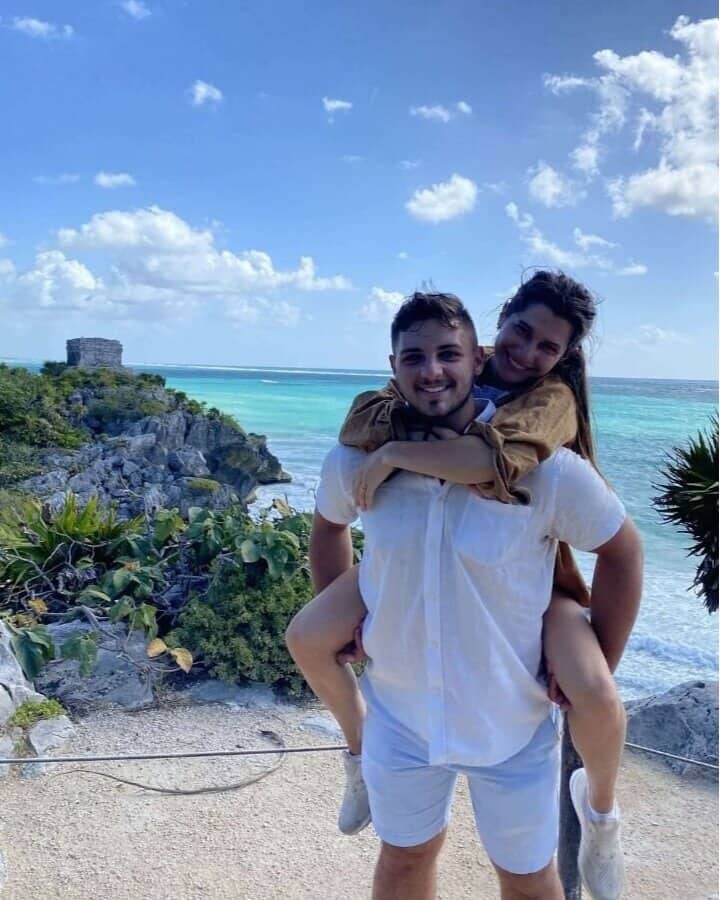
8. Ciudad Victoria and the Rest of Tamaulipas
The state of Tamaulipas is known as one of the most dangerous states in Mexico, and Ciudad Victoria is its capital. Tamaulipas sprawls along most of Mexico’s sea border with the Gulf of Mexico. This proximity to the water makes it prime real estate for criminal activity, and with cartels usually come high crime rates.
Frankly, there aren’t many tourist destinations in Tamaulipas, so there is very little reason to visit. The crime rates are so high that the U.S. State Department issued severe travel advisories that bar most U.S. Government Employees from even entering the state.
Driving from Texas to Monterrey requires a quick drive through Tamaulipas, and this route is generally considered to be safe. However, driving any further into the state is not advisable.
Avoid at all costs unless driving from Texas to Monterrey.

9. Los Cabos, La Paz, and the Rest of Baja California Sur
Baja California Sur contains the iconic resort cities of Los Cabos and La Paz, but it has had a back-and-forth relationship with criminal groups in previous years. A few flare-ups of crime led to strict travel advisories against the state, and many tourists reconsidered their plans.
Today, visiting the most popular destinations in Baja California Sur is quite safe. These beach towns are once again considered safe places to visit, and you only need to take normal precautions when visiting. Los Cabos is one of Mexico’s ritziest areas these days, and Mexican authorities are doing all they can to keep it that way.
Cabo San Lucas, San Jose del Cabo, and La Paz are both quite safe destinations and there is very little to worry about when visiting.

10. Irapuato
Irapuato is not a very popular place for tourists to visit, and that’s probably a good thing. Located in the state of Guanajuato, Irapuato is a hub of criminal activity with a high homicide rate. There are few draws here for tourists, and it isn’t usually included on Americans’ itineraries in Mexico.
While Irapuato is not popular with Americans, some nearby cities are. The city of Guanajuato is just a stone’s throw away and is exploding in popularity. San Miguel de Allende is one of the most popular cities in Mexico for Americans, and its also very close.
The good news is that despite how close these places are to Irapuato, Irapuato’s crime doesn’t really affect them. Guanajuato is prone to flare-ups on occasion, but San Miguel de Allende is largely considered a safety bubble. Americans can generally visit both of these places with no hesitation, and only standard precautions are necessary.
Avoid, it because there’s no need to visit anyway.
Frequently Asked Questions About the Most Dangerous Cities in Mexico
What place in mexico has the highest crime.
The place in Mexico that has the highest crime levels is generally the border with the United States. While there are other dangerous places throughout the country, there is no region that is as dangerous as a whole as the United States border.
What are the most dangerous states in Mexico 2023?
The most dangerous states in Mexico in 2023, according to the numbers, are those along the border and the northern part of the Gulf of Mexico. These include Baja California, Coahuila, Sonora, Chihuahua, and Tamaulipas. Sinaloa is also very dangerous.
However, it is important to remember that while the state’s crime levels may be high, that doesn’t mean the entire state is dangerous. Just because Chicago is a hub of crime doesn’t mean that all of Illinois is, for example.
What are the worst cartel cities in Mexico?
The worst cartel cities in Mexico, in terms of corruption and organized crime, are usually Tijuana, Ciudad Juarez, Victoria, Reynosa, and Culiacan.
How many murders in Mexico in 2023?
There were 36,579 murders in Mexico according to a recent study found on wisevoter.com . This translated to a murder rate of 28.37 per 100,000 people, which ranked 4th in the world. According to the study, men are 8 times more likely to be victims of a murder than women.
Thanks for reading my post on the places to avoid in Mexico. Hopefully, if you’ve been wondering what parts of Mexico are dangerous, my advice helps you when you’re planning your next trip. If a place you’re wondering about didn’t make this list, odds are it’s not in one of the most dangerous parts of Mexico, and as long as you take basic precautions, you should be fine.
Hi, I'm Greg. I'm an avid traveler who has traveled to over 50 countries all around the world with my wife and kids. I've lived in Italy, Mexico, China, and the United States, and I dream of moving abroad again in the future. With this blog, I provide my audience with detailed destination guides to my favorite places and pro-tips to make travel as stress-free as possible.
Mireille Brisset
A very accurate and well researched article on travel in Mexico regarding safety issues. Such a relief to read ! Violence is widespread – Think Ukraine, mass murders in USA, Niger, not to mention political verbal violence in dayly USA news … I am Canadian born, fluent in French. English and Spanish, I have lived off and on in Mexico for the past 60 years. Gracias!
Thank you for reading! Have a wonderful day Mireille!
Leave a comment
Save my name, email, and website in this browser for the next time I comment.
Meet The Author - Greg

Recent Post

Most Famous Churches in Florence, Italy: Where to Visit
July 5, 2024

10 Best Coffee Drinks to Buy From Starbucks in India
April 26, 2024

How Much Does a Trip to Egypt Cost: Budget Breakdown
March 10, 2024

Best Time to Visit the India Gate in Delhi [2024]
March 1, 2024

Flying with a Sinus Infection: Tips to Avoid Pain
February 20, 2024

Weaving Stories from Every Corner
- Entertainment
- Environment
Home > Travel and Places > The Most Dangerous Cities In Mexico: A Terrifying Look Into Crime Hotspots
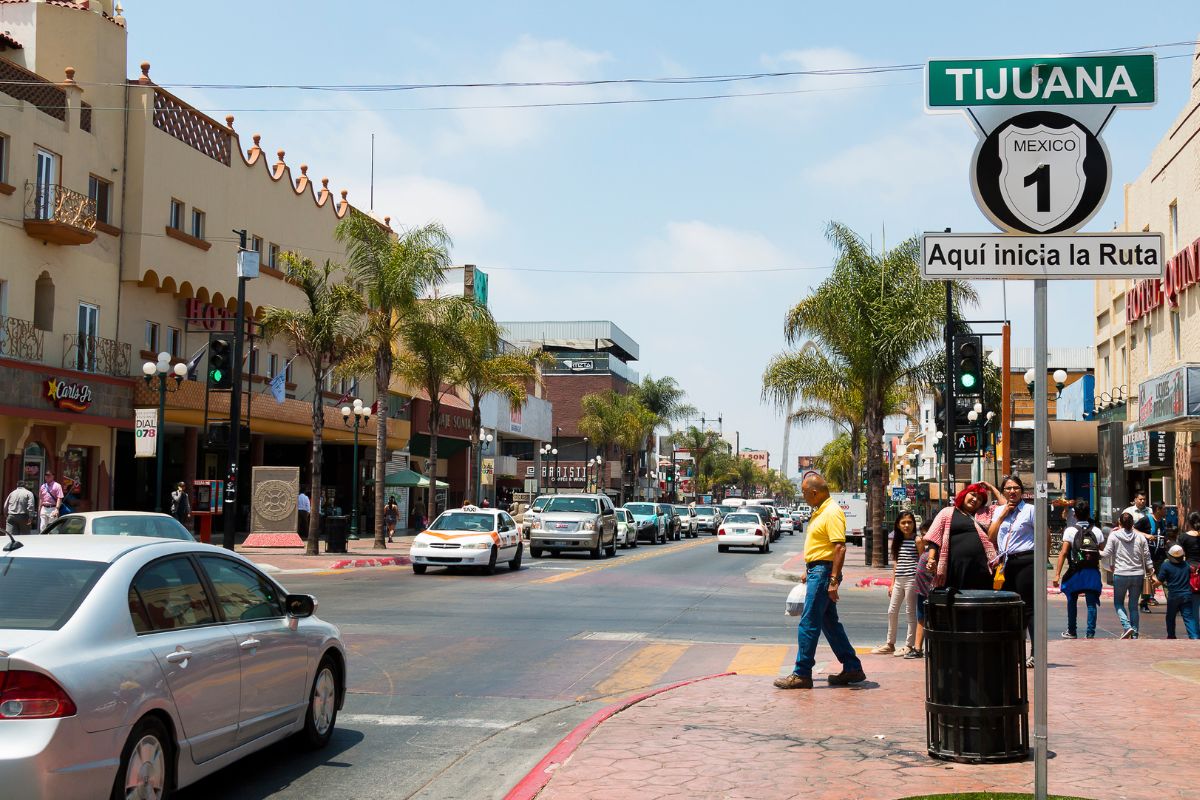
Travel and Places
The Most Dangerous Cities In Mexico: A Terrifying Look Into Crime Hotspots
Published: February 11, 2024
Written by: Cinderella Laney
Discover the most dangerous cities in Mexico and stay informed about crime hotspots. Plan your travel wisely with this insightful guide.
(Many of the links in this article redirect to a specific reviewed product. Your purchase of these products through affiliate links helps to generate commission for Noodls.com, at no extra cost. Learn more )
Table of Contents
Introduction, understanding crime in mexico, methodology for ranking dangerous cities, the most dangerous cities in mexico, conclusion and recommendations.
Mexico, a land of vibrant culture, stunning landscapes, and warm hospitality, has long been a magnet for travelers seeking unforgettable experiences. From the bustling streets of Mexico City to the serene beaches of Cancun, the country offers a rich tapestry of sights and sounds. However, amid the allure of Mexico's tourist destinations, there exists a sobering reality: the prevalence of crime in certain areas. This article delves into the darker side of Mexico, shedding light on the most dangerous cities in the country and providing valuable insights for travelers and residents alike.
While Mexico's reputation as a tourist haven is well-deserved, it is crucial to acknowledge the existence of crime hotspots that pose significant risks to personal safety. By gaining a deeper understanding of the security landscape in Mexico, individuals can make informed decisions and take proactive measures to safeguard themselves and their loved ones. This exploration of the most dangerous cities in Mexico serves as a vital resource for anyone planning to visit or relocate to this captivating country.
As we embark on this eye-opening journey, it is important to approach the topic with a sense of empathy and understanding. The communities within these cities are home to countless individuals with their own stories, aspirations, and challenges. By acknowledging the complexities of the situation, we can foster a more nuanced perspective on the factors contributing to crime in these areas. Through this lens of empathy, we can better comprehend the underlying issues and work towards constructive solutions that benefit both residents and visitors.
Join us as we delve into the intricate tapestry of Mexico's urban landscape, uncovering the realities that coexist alongside its vibrant culture and natural beauty. This exploration will equip you with valuable knowledge to navigate the complexities of safety and security in Mexico, empowering you to make informed choices and embrace all that this captivating country has to offer.
Read more : The Most Terrifying Horror Anime You Need To Watch!
Crime in Mexico is a multifaceted issue that stems from a combination of socio-economic factors, historical influences, and contemporary challenges. Understanding the complexities of crime in Mexico requires a nuanced approach that considers the interplay of various elements shaping the country's security landscape.
One of the key factors contributing to crime in Mexico is the pervasive influence of drug cartels and organized crime groups. These entities have historically wielded significant power and influence, engaging in illicit activities such as drug trafficking, extortion, and money laundering. The presence of these criminal organizations has contributed to heightened levels of violence and instability in certain regions, impacting both local communities and visitors.
Socio-economic disparities also play a significant role in shaping crime dynamics in Mexico. While the country boasts thriving urban centers and bustling tourist destinations, it also grapples with widespread poverty and inequality. These disparities can fuel criminal activities, as marginalized communities may face limited opportunities for socio-economic advancement, leading to higher incidences of property crime and violence.
Furthermore, the historical context of Mexico, including periods of political unrest and social upheaval, has left a lasting imprint on the country's security landscape. Lingering societal tensions and unresolved grievances have, in some cases, contributed to ongoing challenges related to crime and public safety.
It is important to recognize that crime in Mexico is not a monolithic issue, but rather a complex tapestry woven from a myriad of interconnected factors. By acknowledging the multifaceted nature of crime in Mexico, individuals can gain a more comprehensive understanding of the challenges at hand and work towards meaningful solutions that address the root causes of criminal activity.
As we delve deeper into the most dangerous cities in Mexico, it is essential to approach the topic with a sense of empathy and awareness, recognizing the diverse factors that contribute to crime in the country. By doing so, we can cultivate a more informed perspective and contribute to constructive dialogues aimed at fostering safety and security for all.
The process of ranking dangerous cities in Mexico involves a meticulous and comprehensive methodology aimed at providing a nuanced understanding of the security landscape. To achieve this, a multifaceted approach is employed, drawing upon a diverse range of data sources and analytical frameworks.
The methodology encompasses an analysis of various crime indicators, including but not limited to homicide rates, violent crime statistics, and prevalence of organized criminal activity. These quantitative metrics serve as foundational elements in evaluating the relative levels of danger within different cities, offering valuable insights into the prevalence and severity of criminal incidents.
In addition to quantitative data, qualitative factors such as community perceptions of safety, law enforcement effectiveness, and socio-economic conditions are also taken into account. These qualitative dimensions provide a more holistic view of the security environment, capturing the nuanced interplay of social, economic, and institutional factors that contribute to the overall safety of a city.
Furthermore, the methodology incorporates a comparative analysis of historical crime trends, allowing for the identification of evolving patterns and emerging security challenges. By examining long-term data trends, the methodology seeks to discern underlying dynamics that may influence the current security status of a city, offering valuable context for understanding the complexities of crime within a given locale.
It is important to note that the methodology prioritizes objectivity and rigor, leveraging standardized criteria and robust analytical frameworks to ensure the accuracy and reliability of the rankings. By adhering to stringent methodological standards, the process aims to provide actionable insights that empower individuals and authorities to make informed decisions regarding safety and security.
Ultimately, the methodology for ranking dangerous cities in Mexico represents a concerted effort to distill complex security dynamics into a comprehensible framework, offering a valuable resource for residents, travelers, and policymakers. Through a judicious blend of quantitative and qualitative analysis, the methodology endeavors to shed light on the multifaceted nature of crime in Mexico, fostering a deeper understanding of the challenges and opportunities for enhancing safety and well-being within urban environments.
Tijuana : Known for its proximity to the U.S. border, Tijuana has grappled with high levels of violence attributed to drug trafficking and organized crime. The city's strategic location has made it a focal point for criminal activities, contributing to elevated homicide rates and pervasive security concerns.
Acapulco : Once a glamorous resort destination, Acapulco has experienced a surge in violent crime, including extortion and gang-related activities. The city's stunning beaches juxtapose the stark reality of criminal violence, prompting heightened caution among residents and visitors.
Culiacán : As the birthplace of the notorious Sinaloa Cartel, Culiacán has been deeply entrenched in the complex web of drug-related violence. The city's history and ongoing influence of organized crime have led to significant security challenges, with residents contending with the repercussions of cartel activities.
Ciudad Juárez : Situated along the U.S.-Mexico border, Ciudad Juárez has faced enduring struggles with drug-related violence and organized crime. While efforts have been made to improve security, the city continues to contend with elevated crime rates, necessitating vigilance and precautionary measures for residents and visitors.
Cancún : Despite its allure as a tourist hotspot, Cancún has witnessed an increase in violent incidents, including targeted attacks and organized crime activities. The city's popularity among international travelers contrasts with the underlying security risks, underscoring the need for heightened awareness and risk mitigation strategies.
Mexico City : As the bustling capital of Mexico, Mexico City grapples with a complex security landscape shaped by diverse criminal activities. While the city offers a wealth of cultural and historical attractions, certain areas have experienced elevated levels of crime, necessitating a nuanced approach to personal safety and risk management.
Veracruz : A major port city, Veracruz has faced challenges stemming from organized crime activities, including drug trafficking and extortion. The city's strategic significance as a maritime hub has intersected with criminal influences, contributing to security concerns for residents and businesses operating within the region.
Tepic : The capital of the state of Nayarit, Tepic has encountered security issues linked to drug trafficking and organized crime. While efforts have been made to address these challenges, the city continues to contend with crime-related dynamics that warrant heightened attention and proactive safety measures.
Reynosa : Situated near the U.S. border, Reynosa has grappled with criminal activities associated with drug trafficking and transnational organized crime. The city's geographic proximity to the United States has intersected with criminal influences, necessitating ongoing efforts to address security challenges and promote community well-being.
Chihuahua : As the largest state in Mexico, Chihuahua has faced persistent security concerns linked to drug-related violence and organized crime. The city's expansive territory and diverse urban landscape have presented complex security dynamics, prompting a multifaceted approach to enhancing safety and resilience within the region.
This comprehensive overview of the most dangerous cities in Mexico underscores the intricate interplay of socio-economic, historical, and criminal factors shaping the security landscape. By acknowledging the realities faced by these cities, individuals can cultivate a deeper understanding of the challenges at hand, empowering informed decision-making and proactive measures to promote safety and well-being within urban environments.
In light of the complex security dynamics present in the most dangerous cities in Mexico, it is imperative to prioritize proactive measures aimed at enhancing safety and well-being. By acknowledging the multifaceted nature of crime in these urban environments, individuals can make informed decisions and contribute to fostering a more secure and resilient society. Here are key recommendations to consider when navigating the security landscape in Mexico:
Read more : The Shocking Truth About Montgomery, Alabama’s Danger Level
Vigilance and Awareness
Maintaining a heightened sense of vigilance and awareness is crucial when residing in or visiting the identified dangerous cities. Staying informed about local security conditions and being mindful of one's surroundings can significantly mitigate potential risks.
Community Engagement
Fostering community engagement and collaboration can play a pivotal role in addressing security challenges. By promoting dialogue and cooperation among residents, businesses, and local authorities, communities can work together to implement effective crime prevention strategies.
Risk Mitigation Strategies
Implementing robust risk mitigation strategies, such as adhering to travel advisories, securing accommodations in safe areas, and utilizing reputable transportation services, can help minimize exposure to security threats.
Support for Local Initiatives
Supporting local initiatives aimed at addressing socio-economic disparities and promoting community development can contribute to long-term crime prevention efforts. Investing in education, employment opportunities, and social welfare programs can help address underlying factors contributing to crime.
Read more : The Shocking Truth About Living In Memphis, TN – Is It Really That Dangerous?
Advocacy for Policy Reforms
Advocating for policy reforms and institutional improvements can foster positive change within the identified dangerous cities. By engaging in constructive advocacy efforts, individuals and organizations can contribute to shaping policies that prioritize public safety and security.
Empowerment through Education
Empowering individuals with knowledge and resources related to personal safety and security can have a transformative impact. Providing access to educational materials and training programs on crime prevention and emergency preparedness can enhance community resilience.
Collaboration with Law Enforcement
Collaborating with law enforcement agencies and supporting their efforts to combat crime is essential. Building trust and cooperation with local authorities can contribute to a more effective and responsive approach to addressing security concerns.
By embracing these recommendations and adopting a proactive stance towards safety and security, individuals can navigate the complexities of the identified dangerous cities in Mexico with greater confidence and resilience. Through collective efforts and a commitment to fostering a culture of safety, it is possible to contribute to positive transformations that benefit both residents and visitors, ultimately creating safer and more vibrant urban environments.
Was this page helpful?
How To Make Smooth Stone In Minecraft
How To Get Notes On Instagram
Prank Your Friends With Free Random Text Message Subscriptions! Check Out These Hilarious Websites!
Unleash The Speed Demon: Discover The Mind-Blowing Top Speed Of The KX100 On Dirt Tracks!
Gas Stove Mishap: The Surprising Solution To Eliminate Strong Odors In Minutes!
Latest articles.
The Secret To Styling A Messy Fringe Every Day
Written By: Cinderella Laney
Unveiling The Mystery Of Yeet Hay: The Fiery Essence Explained
Introducing FTP And FTPS Support For AWS Transfer
Einstein's Final Words Revealed!
Discover The Most Expensive And Exquisite Japanese Sushi Restaurant In SF Bay Area!
Related post.

By: Brook La • Pets & Animals
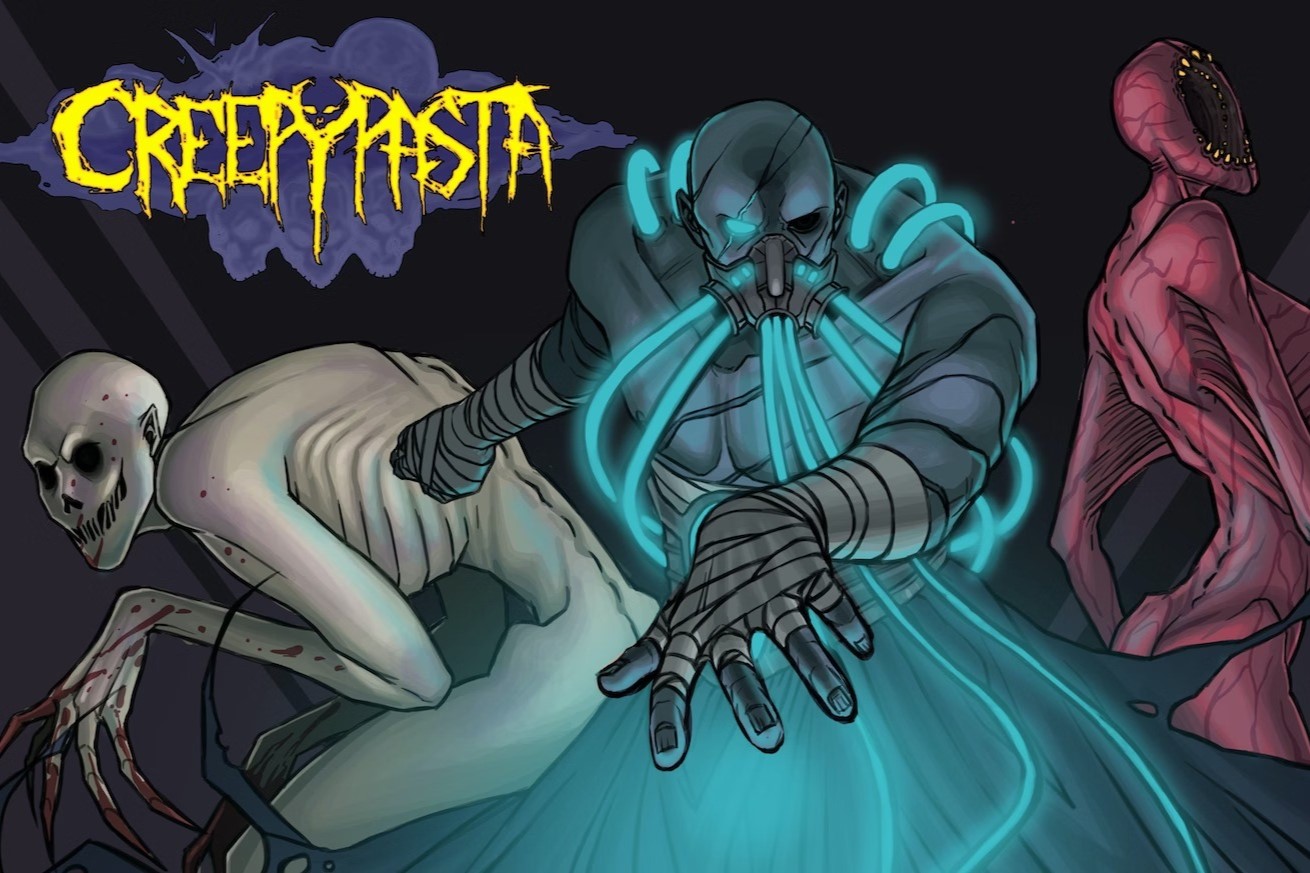
By: Bunni Goldberg • Arts and Culture
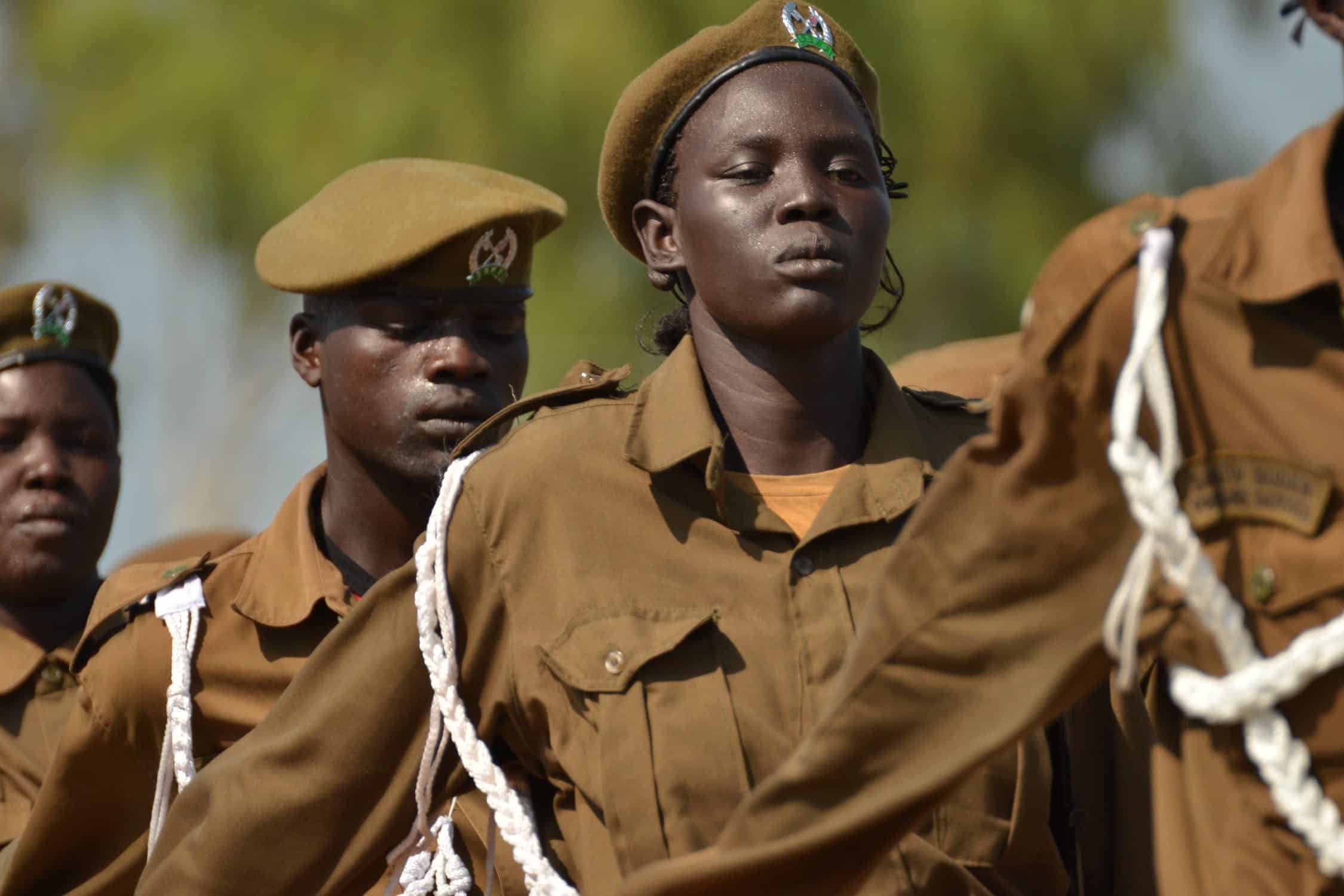
By: Gusty Gress • Opinion and Editorial
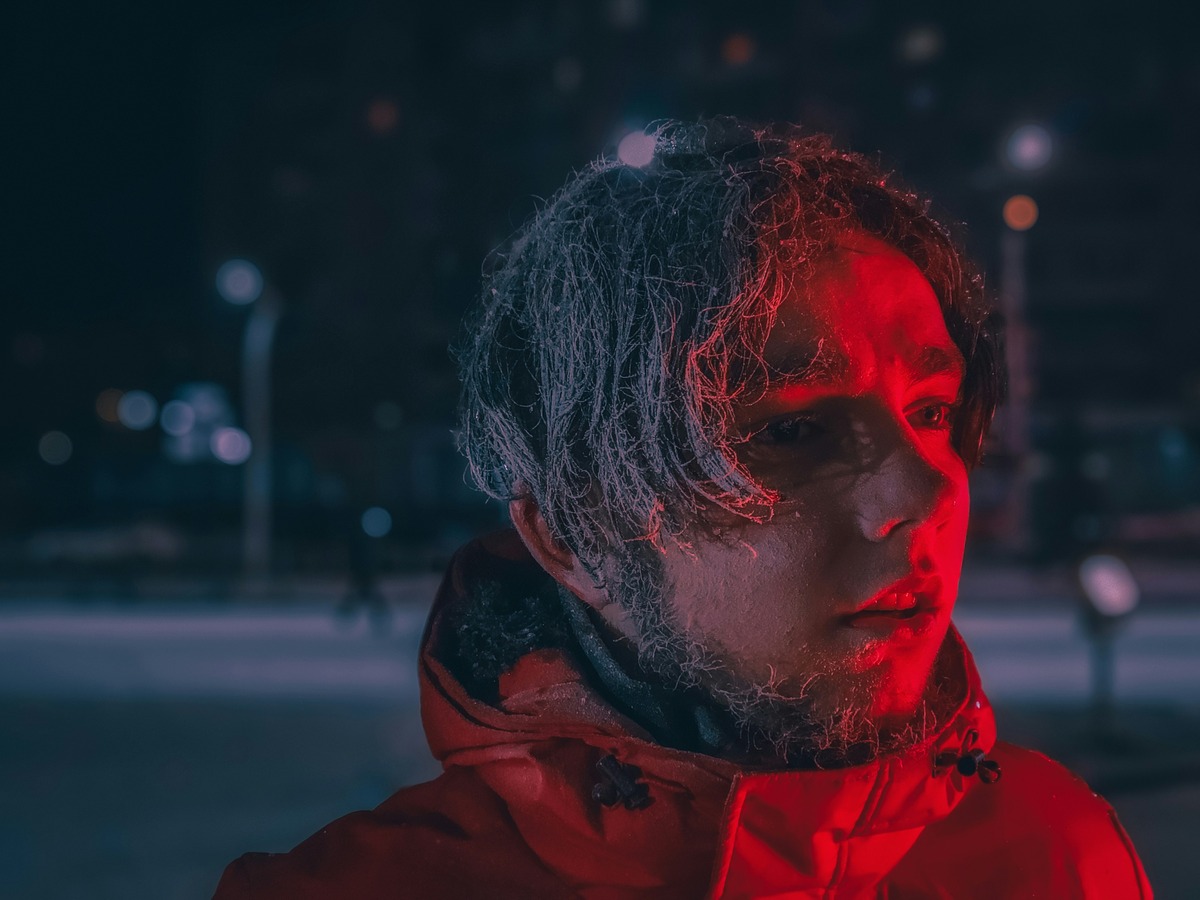
By: Kelli Huth • Language and Grammar

By: Libbie Catron • Arts and Culture

By: Sonnie Lenz • Pets & Animals
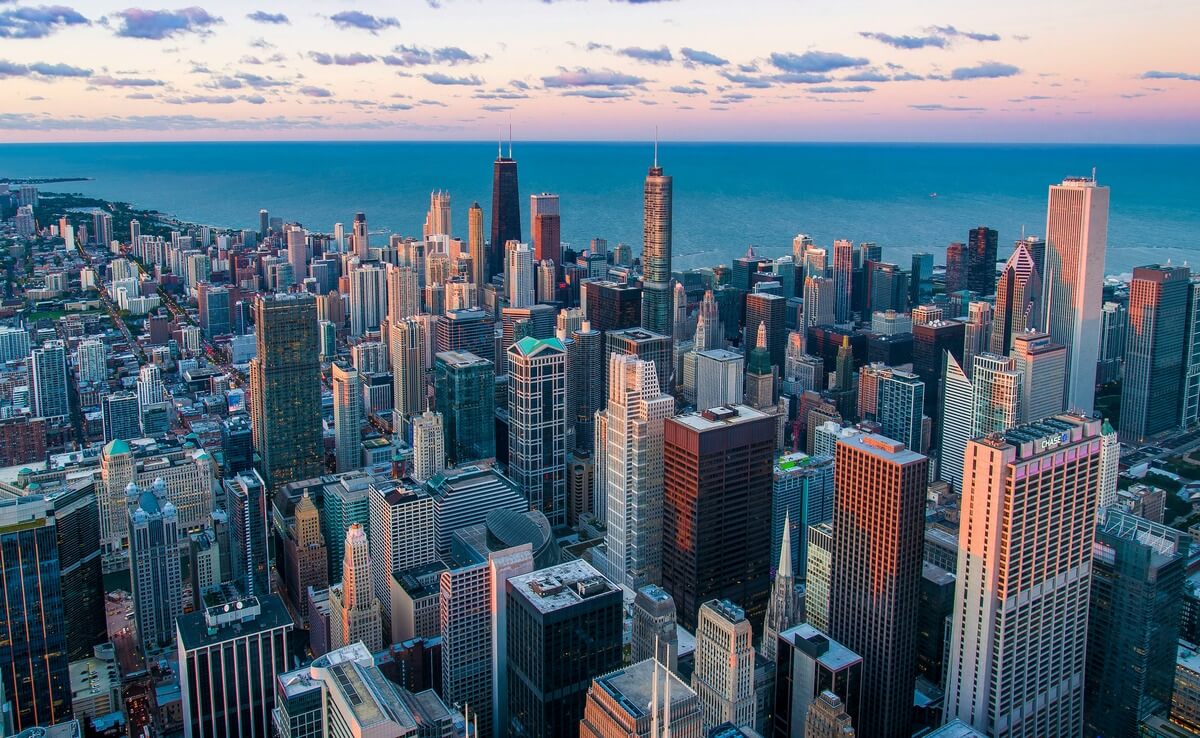
By: Janey Mickey • Lifestyle

By: Missy Searcy • Law and Legal Advice
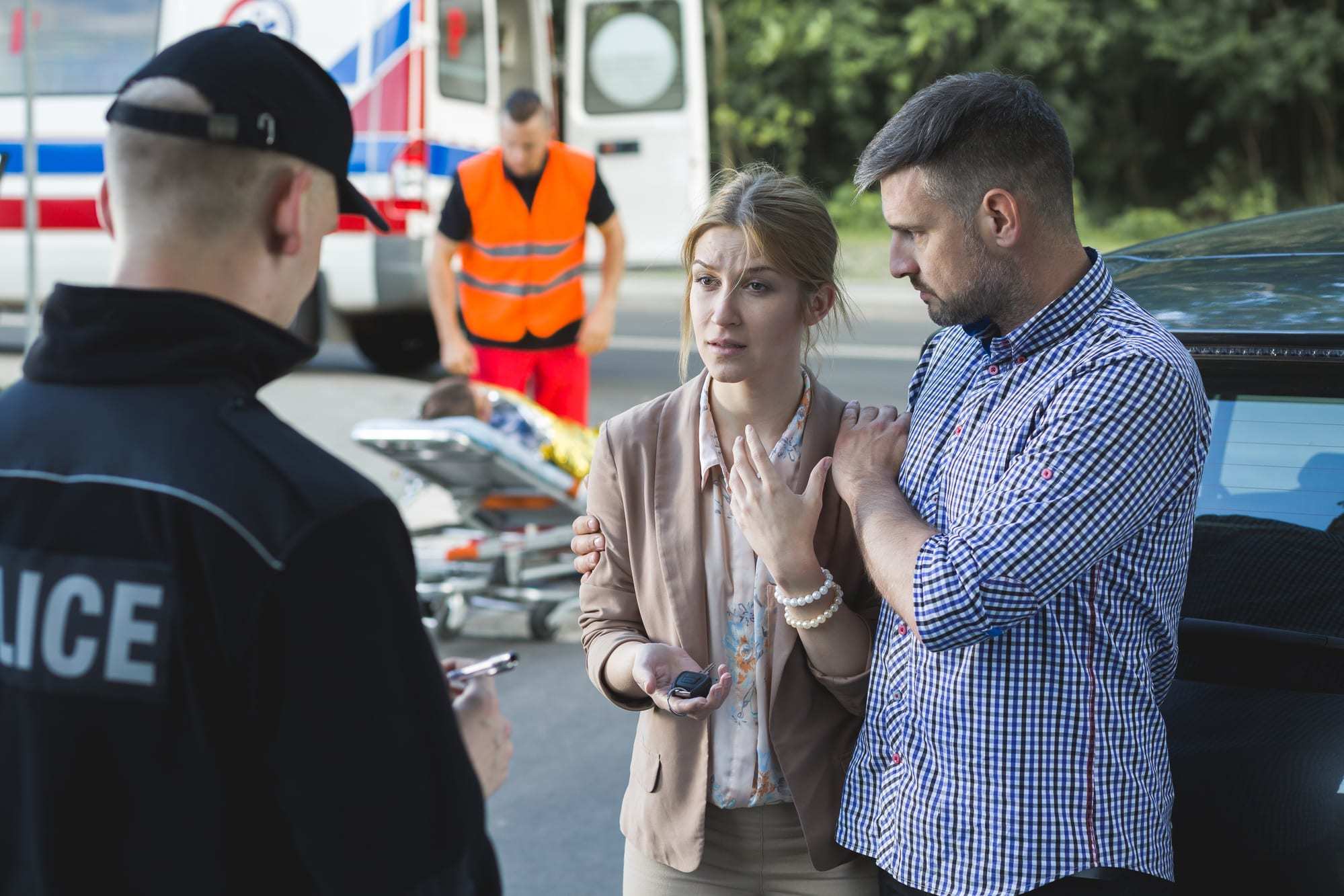
By: Gabrila Crawford • Law and Legal Advice

By: Jamie Johanson • Health and Wellness
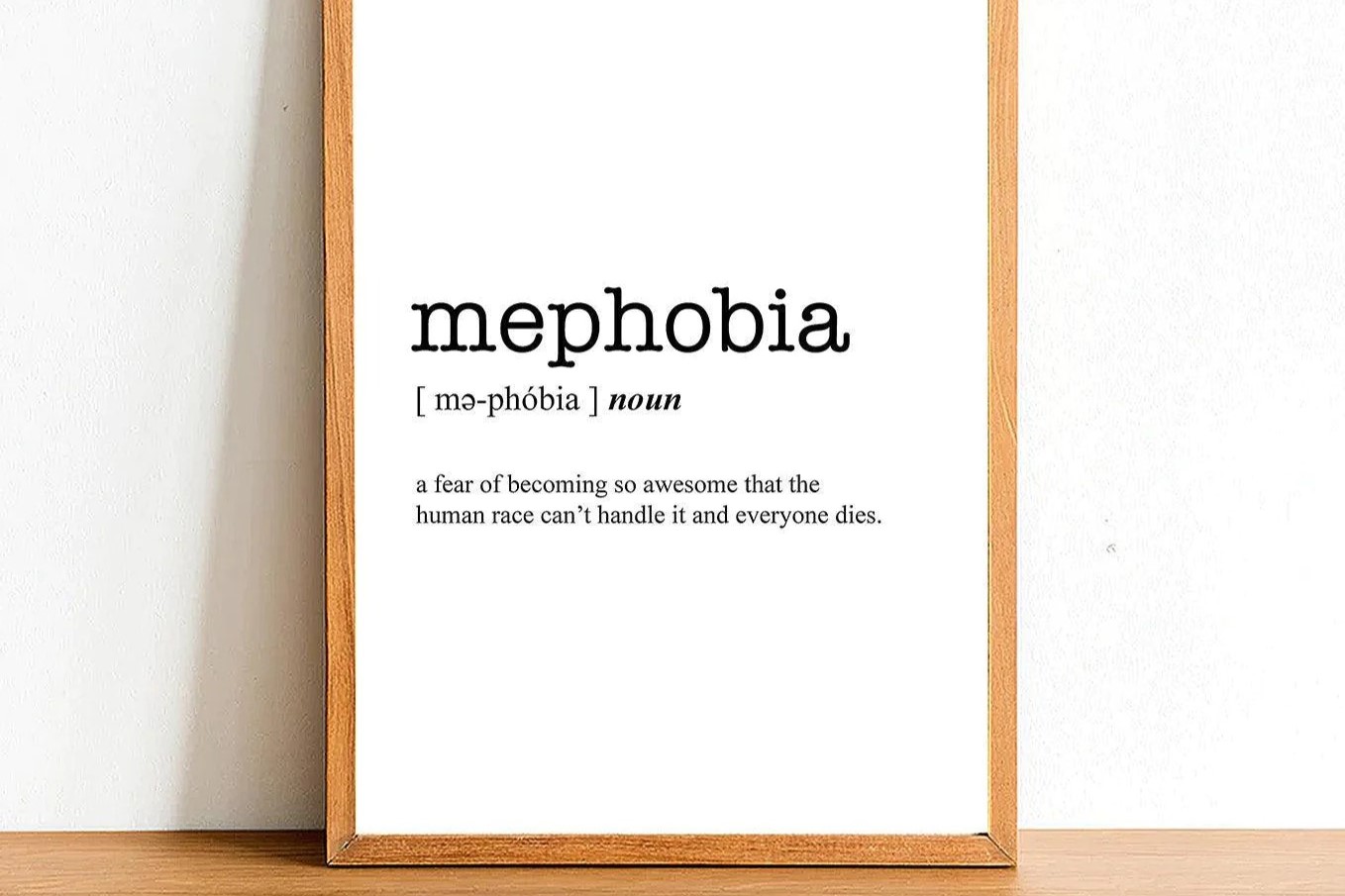
By: Leontine Kimball • Psychology

By: Onida Butterfield • Psychology

By: Clari Salzman • Sports
Please accept our Privacy Policy.
STORABLES.COM uses cookies to improve your experience and to show you personalized ads. Please review our privacy policy by clicking here .

- Privacy Overview
- Strictly Necessary Cookies
This website uses cookies so that we can provide you with the best user experience possible. Cookie information is stored in your browser and performs functions such as recognising you when you return to our website and helping our team to understand which sections of the website you find most interesting and useful.
Strictly Necessary Cookie should be enabled at all times so that we can save your preferences for cookie settings.
If you disable this cookie, we will not be able to save your preferences. This means that every time you visit this website you will need to enable or disable cookies again.
- https://noodls.com/travel-and-places/the-most-dangerous-cities-in-mexico-a-terrifying-look-into-crime-hotspots/
Dangerous Vacation Spots In Mexico
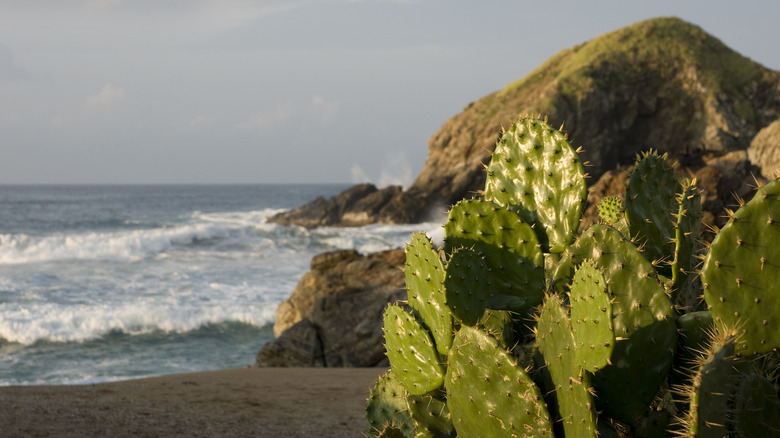
Mexico is a country of contrasts. On the one hand, you have beautiful landscapes, fascinating history, and a mix of incredible cultures. On the other hand, there are cartels, corruption, and the potential for natural disasters. While Mexico isn't one of the most dangerous vacation destinations in the world , it does have spots that can be sketchy. If you're planning a trip here, it's worth doing some research to suss out which places are safe and which come with potential risks.
According to the Mexican Ministry of Tourism , over 66 million international tourists visited Mexico in 2022. Most flew into popular tourist destinations like Cancun, Los Cabos, and Puerto Vallarta. This is not surprising, considering these locations are where you'll find some of Mexico's best beaches and safest resorts. But what if you want to get off the tourist trail and explore little-known beach towns, bustling cities, and charming pueblos?
The media may make it seem like Mexico is downright dangerous outside of the main resort areas. That's not necessarily true. There are many amazing places you can explore safely, provided you keep your wits about you. The key is to stay informed and be aware of the places where you could potentially run into danger. To help you out, we've compiled a list of vacation spots in Mexico where you should be vigilant.
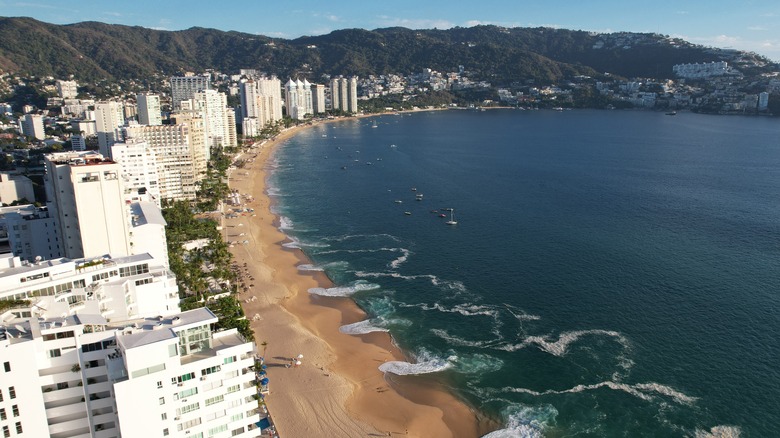
Once a seaside playground for the Hollywood elite, Acapulco took a turn for the worse in the mid-2000s when drug-related gang violence took over the city. Over the past 20 years, headlines coming out of the seaside city have reported everything from gun battles to headless bodies being dumped in the streets. Cartels are still operating in the area today, although it's rare for them to target tourists. The heavy police presence along the beaches and streets can be either comforting or disconcerting, depending on your disposition.
Another blow to Acapulco's already dwindling tourism industry was Hurricane Otis, which ripped through the city in October 2023. The hurricane left a death toll of dozens and billions of dollars of damage. In the days following the storm, looting was rampant. When the Mexican government stepped in with financial aid for reconstruction, many officials believed this would be an opportunity to restore Acapulco to its former glory. Analysts pointed to the fact that it would only create opportunities for organized crime groups to gain more power. Only time will tell which direction Acapulco will go.
Popocatépetl
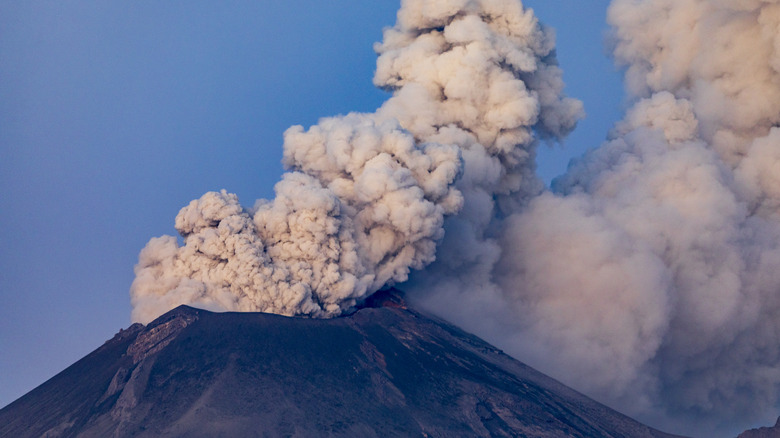
Just 45 miles southeast of Mexico City lies Popocatépetl, an active stratovolcano. The volcano erupted for the first time in almost 50 years in 1994 and has been sporadically spewing ash, lava, and rocks ever since. Eruptions have caused the government to evacuate tens of thousands of people in nearby towns. Numerous flights have been canceled over the years, as airports shut down due to ash and gas. It's a spectacular sight to see, but one you don't want to get too close to. One violent explosion could wipe out nearly 25 million people in the vicinity, making it one of the most dangerous volcanoes on Earth .
For the daredevils out there, hiking "El Popo" is strongly advised against. The Mexican National Center for Prevention of Disasters (CENAPRED) urges people to keep a distance of at least 7.5 miles from the crater. However, you can hike the dormant Iztaccíhuatl volcano nearby. Iztaccíhuatl is the third-tallest volcano in Mexico, and it offers great views of Popocatépetl from the peak. If hiking volcanoes isn't your thing, you can see Popocatépetl from various places in Mexico City on clear days. The road from Mexico City to Puebla City also offers some great vantage points.
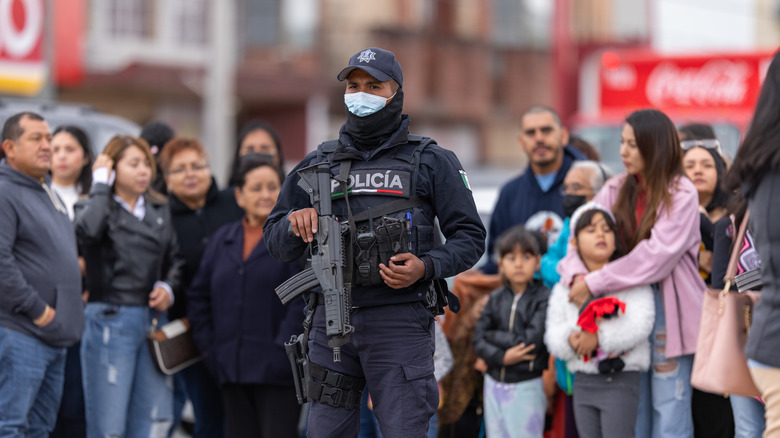
The state of Tamaulipas has so much going for it, including idyllic beaches, rugged mountains, and historic towns. It's a shame that it also has some of the most crime-ridden cities in the country. The state is notorious for gang violence, forced disappearances, and kidnappings. And it's not just locals that are targeted. In 2023, four Americans were kidnapped at gunpoint from the city of Matamoros. Two of them were killed.
Tamaulipas' location on the Gulf of Mexico just below Texas has long made it prime territory for organized crime. Matamoros is the birthplace of the Gulf Cartel, one of the oldest cartels in Mexico. The cartel rose to prominence in the 1980s when it partnered with the Cali Cartel of Colombia to traffic cocaine into the United States. Much of the violence in Tamaulipas today stems from conflicts between Gulf Cartel factions, rival groups, and the military. Travelers should be aware that shootouts are common, and civilians are sometimes caught in the crossfire.
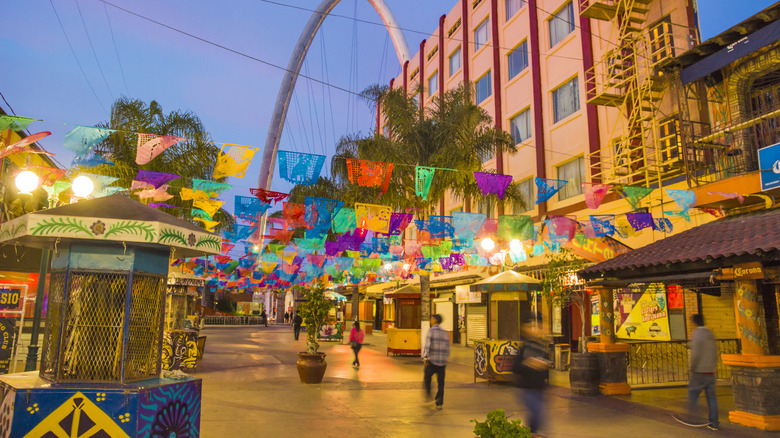
Every year, El Consejo Ciudadano para la Seguridad Pública y la Justicia Penal (The Citizen Council for Public Security and Criminal Justice) publishes a report on the most violent cities in the world based on the murder rate. In their 2022 report, Tijuana came in second with over 2,100 murders. Like many border cities in Mexico, Tijuana is a magnet for criminal organizations vying to control trafficking routes into the United States. Tijuana's mayor, Montserrat Caballero Ramirez, attributes the majority of the murders to cartels.
According to the U.S. State Department , Tijuana's high number of homicides were mostly targeted attacks that took place in non-tourist areas. Even so, they warn that bystanders can be injured or killed during assassinations and cartel clashes. If you still want to visit Tijuana despite the warnings, you may want to stick to popular tourist areas like Avenida Revolución. Follow the golden rules for staying safe while traveling: Be aware of your surroundings, don't wear expensive jewelry or flash cash around, and don't purchase or take illegal drugs.
Playa Zipolite
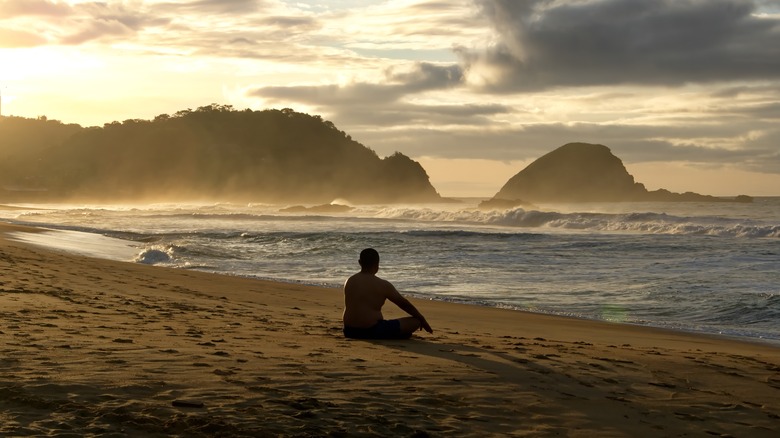
At first glance, Playa Zipolite looks like a seriously chill spot. The small seaside town has laid-back vibes and is home to a gorgeous, golden-sand beach that spills into the Pacific Ocean. Gazing out at the surfers and hippie types lounging on the sand, you wouldn't necessarily consider this a dangerous beach in Mexico . But threats are lurking in the water. Just offshore, there are powerful currents that can make swimming hazardous.
Located on the coast of Oaxaca, Playa Zipolite is also called the "Beach of the Dead." Legend has it that the name comes from the dangerous waters that have taken many lives over the years. Groundswells create large waves that can be overwhelming for some, and the circular currents can pull swimmers out to sea. It's a great spot for surfers, but those who aren't strong swimmers may run into trouble. Thankfully, lifeguards on duty keep an eye on the water and perform rescues if necessary.
Ciudad Juárez
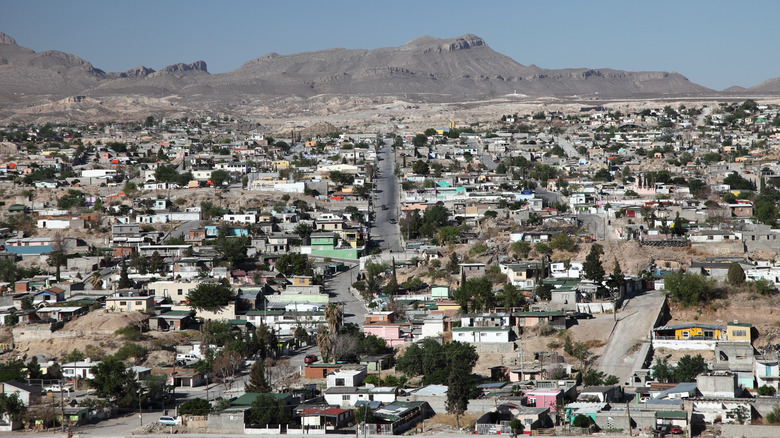
Ciudad Juárez used to be a happening vacation spot. During the Prohibition era, Americans flocked to the border city to drink, dance, and gamble at the city's nightclubs and entertainment venues. With the influx of tourists also came the rise of organized crime cells that had their hands in everything from prostitution to narcotics smuggling. Tourism declined dramatically when Prohibition was repealed, but the criminal enterprises grew.
Today, Juárez has a reputation as being one of the most dangerous cities in the world. For over 30 years, the city has seen a staggering amount of violence. During the 1990s and early 2000s, thousands of women were murdered in Juárez, and most of those murders are still unsolved to this day. Clashes between the Juárez Cartel and the Sinaloa Cartel turned the city into a battlefield with over 3,700 homicides taking place in 2010 alone. Although murders have declined slightly since then, Juárez is still a major drug and human trafficking hub and gang violence is still very much a reality. Unfortunately, it's far from the tourist destination it once was.
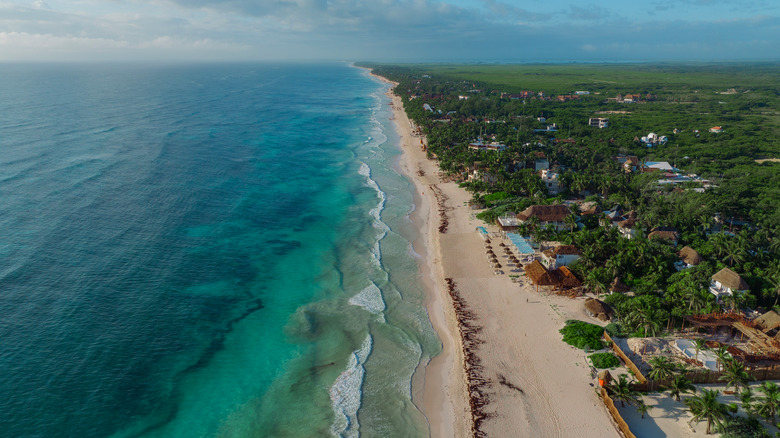
Tulum used to be one of Quintana Roo's best-kept secrets. If you traveled there 20 years ago, you would have found a sleepy beach town with just a few rustic hotels. Fast forward to the present and Tulum is now party central. As tourism has exploded, so too has the crime rate. The party scene fuels the demand for drugs, and that brings the cartels to town. In October 2021, two tourists were killed and three others injured when rival gang members opened fire on a busy street. Just a few months later, two men were gunned down by gang members at the Art Beach Restaurant.
Even with the rising crime rate, tourists are still traveling to Tulum in droves. After all, it's hard to resist the allure of pristine white sand beaches, sparkling blue waters, and ancient ruins hidden in the jungles. If you're planning a trip to Tulum, you'll be happy to know that the local government has increased the number of National Guard troops in the area to help keep Tulum tourist-friendly. That being said, it's important to be aware that petty crime is still rampant. Corrupt police have also been known to shake tourists down.

For most of the year, Tultepec is a pretty safe place. But when the annual International Pyrotechnics Festival kicks off, the town literally explodes with thousands of fireworks shooting in all directions. Nearly everyone in the town gets involved, from small kids lighting off firecrackers to grown men and women dancing and dodging the sparks and flames in the streets. Safety measures are almost non-existent, so injuries are inevitable.
The festival takes place every year around March 8 in the small city of Tultepec on the northern outskirts of Mexico City. It originally began to honor the feast day of San Juan de Dios, but over the years, it has evolved into a celebration of the town's main industry — fireworks production. The festivities typically last for 10 days and attract people from all over the world who come for the spectacular pyrotechnic displays. The main event is the parade of handmade toros (bulls) decked out in hundreds of fireworks. At the 2022 festival, 400 toros blazed their way through the streets. Each year, the gala seems to get bigger and more dazzling. Expect a whole lot of gunpowder, banda music, and dancing.
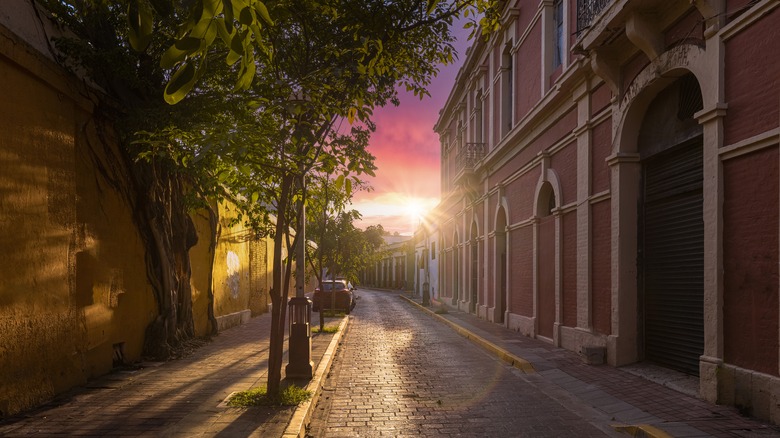
If you've watched "Narcos," you're probably familiar with the infamous Sinaloa cartel. It's one of the most powerful cartels in Mexico, and members are not opposed to using violence to seize territory and maintain control of their operations. The state of Sinaloa has seen its fair share of turmoil stemming from cartel conflicts. When El Chapo's son, Ovidio Guzmán López, was arrested in January 2023, cartel members retaliated by lighting cars on fire, blocking highways, and opening fire on airplanes at the Culiacán International Airport. Following the unrest, the U.S. State Department gave Sinaloa a Level 4 "Do Not Travel" advisory.
While many areas of Sinaloa do experience high crime rates, Mazatlán is somewhat of an exception. The seaside city is Sinaloa's most popular tourist destination and relatively safe compared to the rest of the state. It's worth a visit for its historic buildings, lovely beaches, and lengthy malecon that offers sweeping views of the Pacific Ocean. The city is also famed for its superb seafood dishes like ceviche, aguachile, and smoked marlin. Gang violence is not common in Mazatlán, but petty crimes like pickpocketing and robbery do happen on occasion.
Espinazo del Diablo
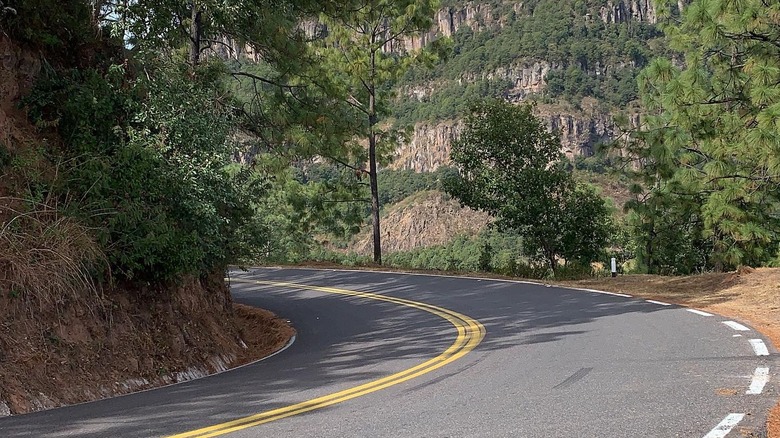
The old section of Federal Highway 40 that runs between Mazatlán and Durango is known as Espinazo del Diablo, which translates to "the devil's backbone." That gives you a pretty good idea of what to expect along this twisting road that cuts through the Sierra Madre Occidental mountain range. With hairpin turns, drop-offs to deep ravines, and rugged mountains hugging the road, it's easy to see why some people consider this one of the scariest and most dangerous roads in the world.
The Espinazo del Diablo route winds through the rugged mountains of western Mexico. It rises roughly 9,000 feet above sea level and passes through cloud forests. If the weather is clear, you can enjoy views down to the canyons and valleys at certain vantage points. It's an incredibly scenic route, but not for the faint-hearted. With only two lanes and over 2,000 curves, you'll need to pay close attention to oncoming traffic, not to mention fallen rocks and bolting animals. There are few stops along the way, so make sure you have a full tank of gas before setting out.
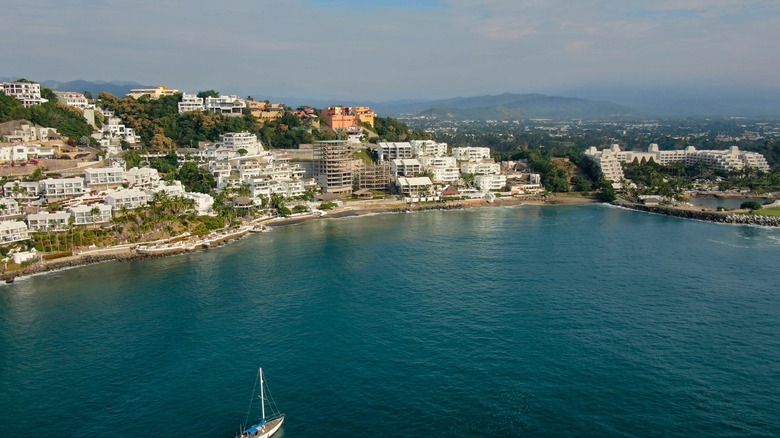
For a small state, Colima has some big problems. The capital city (also named Colima) earned the number one spot on the list of the "50 Most Violent Cities in the World" in 2022, according to the Citizen Council for Public Security and Criminal Justice . That year, there were 601 murders in a population of just 330,329. The increase in violence is mostly attributed to cartels fighting for access to Colima's coastal drug trafficking routes. Some of the most powerful cartels in Mexico are operating in the state, including the Jalisco New Generation Cartel (CJNG) and the Sinaloa Cartel. The U.S., Canada, and the U.K. advise against traveling anywhere in Colima except for the city of Manzanillo.
Spread out along a large bay on Colima's coast, Manzanillo is home to numerous hotels, resorts, and beachfront restaurants. It's not the prettiest place for a beach holiday, but many people choose it because it tends to be cheaper than other Pacific Coast vacation spots like Puerto Vallarta. The city is also home to one of the largest ports in Mexico. According to the U.S. Office of Foreign Assets Control , Manzanillo is a strategic gateway for shipments of cocaine and fentanyl. While many people travel here without incident, it is important to be aware that the city is at the center of cartel interests.
Playa Del Divorcio
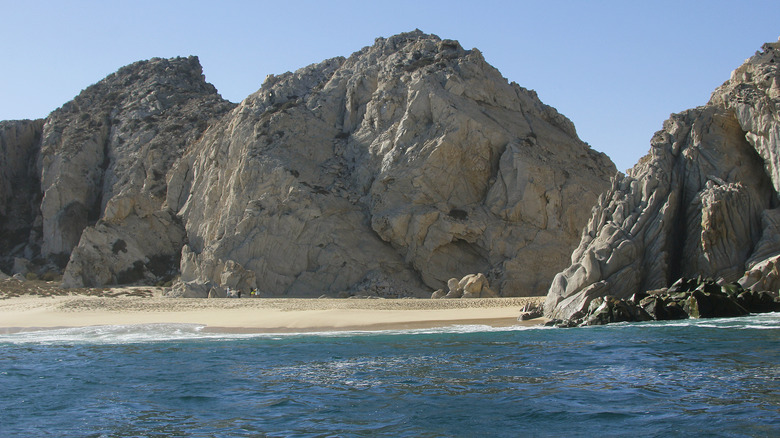
Cabo San Lucas is renowned for its beautiful beaches, but not all of them are safe for swimming. Playa del Divorcio (Divorce Beach) is one that can be particularly treacherous for those who venture into the water. Located on the southern tip of the Baja California peninsula, it's an incredibly picturesque place. The beach is framed by jagged granite rocks and fronted by the blue waters of the Pacific Ocean. The water may look tempting, but the strong waves and rip tides have taken more than a few people out to sea.
Playa del Divorcio is a great spot for sunbathing and soaking up scenery, but it's definitely not safe for swimming. If you feel like getting into the water, head through the gap in the rocks to Playa del Amor (Lover's Beach) on the Sea of Cortez side. It's a smaller beach, but the waters are calmer and generally considered safe for swimming. It only takes a few minutes to walk from one beach to the other. The easiest way to get to Divorce Beach and Lovers Beach is by water taxi from the Cabo San Lucas Marina.
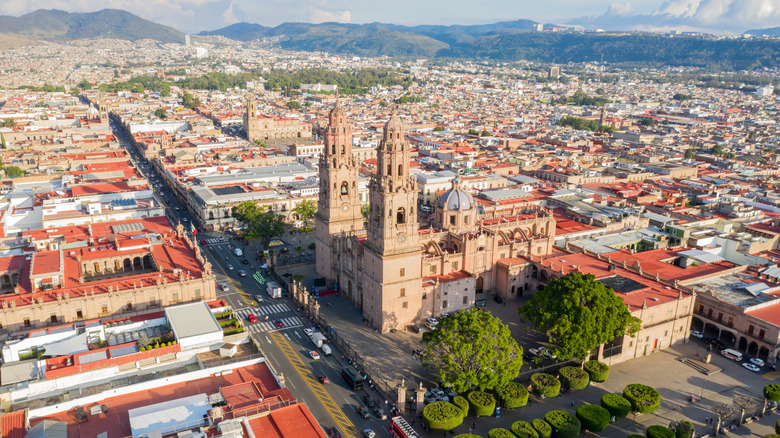
Michoacán is a huge state that extends from the Pacific Ocean into Mexico's interior. There's much to explore here, including volcanic mountains, vast lakes, and charming colonial towns. Travelers should be aware though that Michoacán is also known as cartel country. The state has a long history of drug trafficking that dates back to the 1970s. Over the years, numerous cartels and gangs have battled for control over Michoacán, leaving death and destruction in their wake.
Some of the most shocking stories of cartel violence in Mexico have come out of Michoacán. These include massacres at funerals, decapitations, road bombs, and military-style sieges on entire towns. Much of the criminal activity takes place in cities like Morelia, Uruapan, and Zamora. However, rural areas are also targeted, with residents falling victim to extortion, roadblocks, and killings. The violence has gotten so bad in some places that residents have been forced to flee their homes. Although numerous National Guard troops have been deployed to the state, the government has little control over cartel activity. This makes travel throughout the state very risky.

A Guide To The Scenic Drives In Kings Canyon National Park
By Sibashree Aug 29,2024

Making The Most Of The Gold Coast’s Whale Watching Season
By Shahnawaz Aug 23,2024

Exploring the Geothermal Wonders of Lassen Volcanic National Park
By Sibashree Aug 20,2024

Visit Joshua Tree National Park To Hike And Explore The Best Trails

Death Valley National Park: A Hiking Paradise For Beginners And Seasoned Trekkers

How About Exploring The Hiking Trails in Channel Islands National Park?

Be Soothed And Meet History At Hot Springs National Park

The Hiking Trails In Saguaro National Park Are Calling! Pack Your Bags
By Sibashree Aug 12,2024

Explore Human History And Wildlife With Backcountry Camping In Gates Of The Arctic National Park
Sorry, but nothing matched your search " ". Please try again with some different keywords.
Beyond The Beaches: Unmasking The Most Dangerous Cities In Mexico
Sarmind safi.
Dec 26, 2023
- Travel Guides
With good reason, Mexico is one of the most sought-after travel destinations worldwide.
However, not every area of Mexico is secure for tourists. Today, we will talk about the most dangerous cities in Mexico.
According to the World of Statistics, nine Mexican cities are among the world’s ten deadliest in 2022. There have been 512 homicides reported through the first seven months of the year, or an average of 73.1 per month. The murders are steadily on track to match or marginally exceed those numbers in 2023. The previous year saw 887 murders or an average of 73.91 homicides per month.
Most Dangerous Cities In Mexico
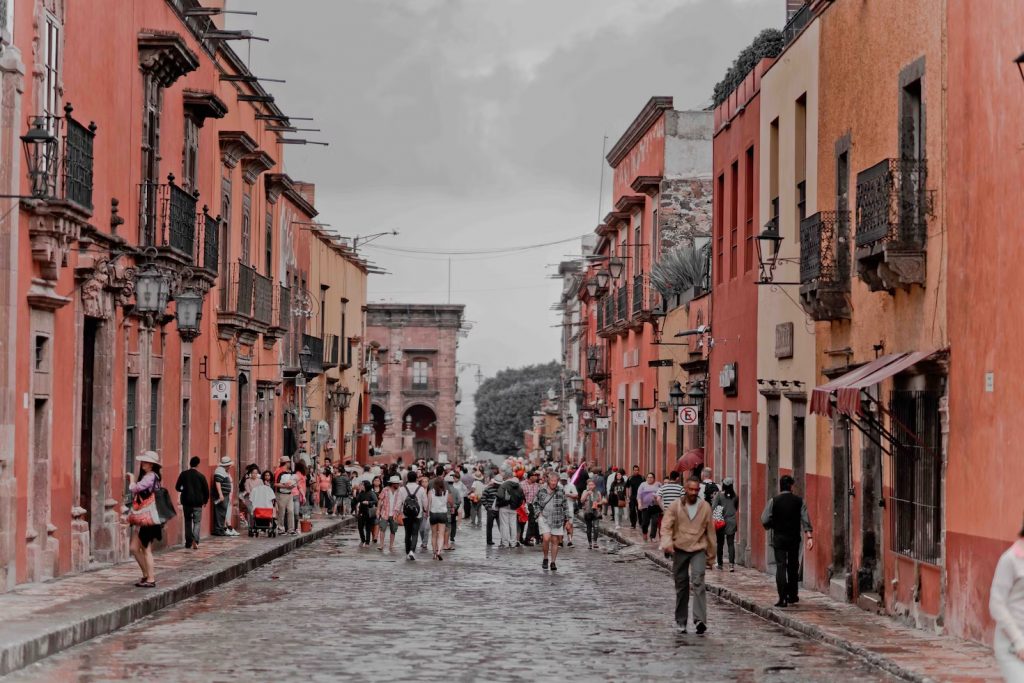
A recent study on wisevoter.com found that there were 36,579 murders in Mexico. This corresponded to the 4th-highest murder rate in the world, 28.37 per 100,000 people. The study found that men are eight times more likely than women to become murder victims.
Here are some of the most dangerous cities in Mexico that you could wisely avoid if you are planning to visit:
Despite being one of the most dangerous cities in Mexico, Acapulco continues to draw large numbers of tourists due to its beaches. The rate of homicide in the city is 111 per 100,000 residents. Drug-related violence in Acapulco has increased dramatically as different cartels compete for control of the lucrative drug trade in the city. This city is located in Guerrero, a notorious state well-known for its high rates of violence. It witnesses regular chaos brought on by gang turf wars and heroin production.
Tijuana’s high murder rate and drug-related violence make it the most dangerous city in Mexico.
There are 138 homicides for every 100,000 people. Tijuana is the main gateway for drugs originating in South America, making it a hub for cartel activity. Due to its proximity to the US border, it is also a significant hub for organized crime and human trafficking.
Based on data on homicide rates, Tijuana is the world’s most dangerous city.
Ciudad Victoria
Ciudad Victoria, one of the most violent cities in Mexico, is situated in the state of Tamaulipas. This area is another hotbed of drug-related violence, with a homicide rate of 86 per 100,000 residents. Located just beyond the U.S. border, Tamaulipas makes it an entryway city as well. In Ciudad Victoria, members of the Northeast Cartel actively manage their businesses.
Irapuato, in the central state of Guanajuato, has witnessed a surge in drug-related homicides over the last three years. With a homicide rate of 81 per 100,000 residents, the city is among the least safe places for visitors. Even regrettably so for the residents who live there. Turf wars between the Santa Rosa de Lima Cartel and the Jalisco Cartel New Generation are primarily to blame for the murders that occur here.
A spate of shootings, robberies, and attacks on tourists in Cancun were linked to cartels. Mexican President Andres Manuel Lopez Obrador has recently issued a warning to travelers about the travel risks. This city is notorious for its high levels of violence. Yet it is far less deadly than other Mexican cities, with a homicide rate of 64 per 100,000 people.
For a mountainside city in Michoacan, Uruapan has seen a steady rise in violence; sadly, it appears that this violence will only get worse. This once peaceful town is now home to rival cartels that frequently switch names and hands. Killings take place in the most inconspicuous places, like bars and arcades. The current homicide rate in Uruapan is 55 per 100,000 residents.
Formerly regarded as a moderately dangerous city, Culiacan is currently the scene of a fatal conflict. It happened after the apprehension of Ovidio Guzman, the son of cartel leader El Chapo. The city is Sinaloa’s central city and has a homicide rate of 61 per 100,000 residents. Because of the Sinaloa Cartel’s stronghold over the city and its populace, visiting tourists face extreme danger.
Cuidad Obregon
Sonora’s second-biggest city, Cuidad Obregon, has gained notoriety recently. It ranks as the world’s fourth most dangerous city in 2022. Not only has there been an increase in violence in Ciudad Obregon but also in the neighborhood of Cajame, which is the southernmost part of the state. It will take time to determine whether this sharp rise in crime will hold. There are currently 52 homicides for every 100,000 residents.
According to the accounts, more than a thousand people were killed brutally every year. Theft, drug sales, and human trafficking have all increased, so the story is far from over. Taking a vacation in Celaya is risky.
Celaya has 109.38 killings per 100,000 residents, making it one of the world’s most dangerous cities right now.
Coatzacoalcos
Once a bustling tourist destination in Veracruz, Coatzacoalcos has a homicide rate of 48 per 100,000 residents. Perpetrators left nine bodies on the street. Among the top ten most dangerous cities in Mexico is this one because of murder, violent crime, and robbery.
The only other regions of Mexico with official travel advisories or restrictions are those located 1,400 miles away. Reports from the press and locals indicate a rise in violence. Locals and tourists, however, have not been impacted by this unrest.
Violent killings have increased in Ensenada and Tijuana over the past few months, primarily occurring outside of the city center and at night. Although there are some risks in the unguarded neighborhoods further out, the city center is still very safe. Travel through the Vine Valley or on day trips are usually safe.
Reynosa is a prominent urban center located directly across the Rio Grande from the US border. Unfortunately, because of ongoing conflicts between criminal gangs, it has gained a reputation as one of Mexico’s most dangerous cities. Traveling to this area due to the ongoing security concerns is high risk.
However, it’s crucial to understand that Reynosa, despite its unflattering reputation, is an important industrial center for the Rio Grande Valley and Northern Tamaulipas. The city drives a number of industrial activities and acts as a vital link in cross-border trade and commerce, significantly impacting the region’s economic landscape. Reynosa continues to play an important role in connecting and promoting economic development in this region of Mexico, even with the ongoing security concerns.
Due to concerns about crime and kidnapping, the U.S. State Department advises travelers to “Reconsider Travel” to Chihuahua. There is a lot of violent crime and gang activity in the area. Travelers should exercise caution even though the majority of criminal organizations commit murders that are targeted assassinations.
Drug-related violence has escalated dramatically in northern Mexico over the last twelve years, especially in Chihuahua . Despite being relatively safer than other cities in the area, cartel violence is still a problem in Chihuahua. It’s crucial to remember that most killings target drug dealers and their families; violent crimes rarely target tourists.
There are military checkpoints throughout the city and its environs, and adherence to them is required.
Wrapping Up
It’s critical to keep in mind that even though the state has a high rate of crime, not all of it is dangerous. For example, Illinois is not always a crime hotspot just because Chicago is.
When it comes to organized crime and corruption, Tijuana, Ciudad Juarez, Victoria, Reynosa, and Culiacan are typically the worst cartel cities in Mexico.
While you’re organizing your next vacation , we hope this article will be helpful to you in determining which areas of Mexico are dangerous. If the location you’re interested in doesn’t appear on this list, it’s probably not in one of Mexico’s most dangerous regions. And as long as you exercise common sense caution, you should be alright.
If you have thoughts to share or questions to ask about the most dangerous cities in Mexico, please leave a comment below. We would love to hear from you!
- Navigating The Unseen: Exploring The Most Dangerous Country In The World
- Heatwaves And Adventure: Traveling To The World’s Hottest Destination
- Crime And Caution: Navigating The Dark Side Of California’s Cities
- Is Costa Rica Safe For Visit For Travelling?
Share this:
- Click to share on Twitter (Opens in new window)
- Click to share on Facebook (Opens in new window)
Share on Social Media
Sarmind is a Writer and an aspiring Editor who has experience in various short and long-form niches. Her academic pursuits intensely mold her industry background in content creation. She holds a Master's degree in Literature, and when not writing for professional purposes, she can be found re-reading old classics of Jane Austen and the Brontë sisters. She is super fond of cats and enjoys hours of doom-scrolling through memes on social media while cuddled up with a cup of desi chai. She likes to think she is an intellectual badass (colloquial: nerdy bore), and now all she needs is a sewing kit to complete the look!
Leave a Reply Cancel reply
Your email address will not be published. Required fields are marked *
Notify me of follow-up comments by email.
Notify me of new posts by email.
POST A COMMENT
Save my name, email, and website in this browser for the next time I comment.
latest
- Travel Blog
- Destinations

Top 10 Most Popular Paraguay Food That You Must Try
By Sarmind May 1,2024

Top 13 Famous Wonders Of India That You Must Visit! [Updated 2024]
By Ankita May 1,2024

Top Tips For Motorbike Rental In Phuket – A Guide To Exploring The Island On Two Wheels
By Barsha Jan 6,2024

10 Useful Malayalam Words To Learn Before Traveling To Kerala
By Ariana Oct 11,2021

Crime and Caution: Navigating the Dark Side of California’s Cities
BY Sarmind Safi Dec 23, 2023
A tour of Los Angeles will include a walk through a large, palm tree-lined cemetery. Tributes to Hollywood's dark past can be found lurking among the city's soiled streets, well-kept lawns, and dusty canyons. These include long-abandoned mansions and the famous Hollywood sign. The City by the Bay, San Francisco, is a tourist haven. San Francisco attracts nearly 15 million tourists a year with attractions like Fisherman's Wharf, Alcatraz tours, the Golden Gate Bridge, and Haight Ashbury. But this new American city is not without its dark side. It has a history of kidnapping, fraud, terrorism, assassinations, and serial killings. Here is a short dissection of the most dangerous cities in California. We are also including a few of the most well-known crimes committed in various parts of the state. Most Dangerous Cities In California The list below comprises the incorporated municipalities of California with some of the highest crime rates. These cities have a population of 50,000 at best. Here are the most dangerous cities in California: Stockton San Bernardino Oakland Compton Richmond Lancaster Vallejo Modesto Victorville Huntington Park Criminal History Of California America is a land of dreams for the biggest chunk of the global population. California is a hub of technological and social zenith. No one expects it to hold out on dark secrets and scandals. According to the FBI, the most dangerous cities in California have a lot of twisted history. Here are some of them. The Assassinations of Harvey Milk and George Muscone, San Francisco City Hall The newly appointed class of city supervisors in 1978 was the most diverse in the history of San Francisco. Dan White, a staunch conservative and former police officer and firefighter, and Harvey Milk, the freshmen supervisor and gay activist, were the two men in this class. Even though Milk and White had different political and lifestyle philosophies, they developed a cordial working relationship. But this relationship quickly turned deadly and hostile. With ten extra bullets and a.38 caliber handgun, Dan White entered City Hall on November 27, 1978, intending to confront Mayor Muscone face-to-face. Muscone shot him after he once more rejected to be reinstated. When White realized how much Harvey Milk had contributed to the incident, he went to his office and brutally murdered Milk. On that day, Dan White admitted to the crimes. The strategy employed by White's defense team during the trial was nearly as well-known as the crimes done. The "Twinkie defense" contended that White's extreme sugar and carbohydrate intake before the crime caused his mental instability. The narrative concludes where it started: after receiving his sentence, White went back to San Francisco and committed suicide. The Kidnapping of Patty Hearst, Hibernia Bank The Symbionese Liberation Army (SLA) kidnapped 19-year-old Patty Hearst from her family's condo on February 4, 1974. Patty is the great-granddaughter of business tycoon George Hearst and the granddaughter of publishing mogul William Randolph Hearst. She and multiple other SLA members later pilfered a Hibernia Bank branch. Patty, brandishing an M-1 carbine, declared her membership in the SLA. A single innocent person lost their life, and the SLA fled with more than $10,000. Although Patty and her friends managed to get away, the FBI quickly found them. In 1976, Hearst went on trial. Attorneys for Patty contended that she developed Stockholm syndrome—a psychological reaction in which she started to feel sorry for her captors—out of fear for her life. Despite being found guilty, President Carter commuted her sentence in 1979. President Clinton fully pardoned Patty Hearst in 2001. Hearst continues to insist that she was brainwashed and that her crimes were those of a victim of the SLA's mental manipulation. Golden Dragon Massacre, Imperial Palace The Imperial Palace restaurant, formerly known as the Golden Dragon, is located in the center of San Francisco's Chinatown. One of the worst nights in San Francisco's history took place in this restaurant under this name. The organized crime networks that dominated Chinatown's underground market gave rise to two competing teenage gangs: the Wah Ching and the Joe Boys. The Golden Dragon presented the Joe Boys with a chance to assassinate the Wah Ching leaders. Eleven innocent people were hurt, and five innocent people died; neither gang member was hurt. The Washington Street restaurant is still marred by the aftermath of this tragic night. Three of the five Joe Boys members who were detained, found guilty, and sentenced to prison are still incarcerated. The Asian gang task force of the San Francisco police department was established because of the massacre. The Imperial Palace is still operational and offers delicious dim sum. USS Hornet A moored aircraft carrier at the Alameda Naval Base is among the world's most haunted ships—not a pirate ship sailing the high seas. Commencing in 1943, the eighth USS Hornet engaged in numerous combat missions throughout the Pacific. Over 300 people died on board during her 27 years of active duty, many of them from suicide. Although the ship is not in operation at the moment, both the crew and guests have paranormal stories about things moving, doors opening on their own, toilets flushing, and even spectral sailors prowling the decks. The Zodiac Killer The San Francisco area was the scene of one of the most well-known unsolved crimes in history. This crime scene single-handedly made every corner of the state dangerous. About 40 miles northeast of the city, on Lake Herman Road in Benicia, California, the infamous killing spree started. David Faraday and Betty Lou Jensen, two high school students, were discovered dead next to their parked car on December 20, 1968. No witnesses were present. Darlene Ferrin and Michael Mageau were shot dead by an unidentified assailant in Vallejo, California, on July 4, 1969. Mageau lived, but Ferrin perished from her wounds. From a pay phone, the gunman called the police, boasting about his crime with pride. Three local newspapers received letters in their offices on August 1, 1969. The Zodiac Killer would become well-known for his trademark symbol, which was signed by all of the letters, which came from the same source, and all claimed to be the murderer. The murderer insisted on having his letters made public. That year on September 27, two more people came under attack. Zodiac moved his murderous rampage from Napa into the City of San Francisco on October 11, 1969. And Zodiac pulled over his taxi driver at the Presidio Heights intersection of Cherry and Washington Streets. Zodiac eluded capture by the police even inside the city. Zodiac persisted in his letter-writing campaign to the San Francisco media for almost ten years. There were many boasts and threats in each letter, but not all of them came to pass. He said he had killed seventeen people in one of his final letters. This killer's identity is still a mystery, and the crime is still unsolved. Wrapping Up The Hollywood sign, which once read Hollywoodland, is where aspiring starlet Peg Entwistle leaped to her death in 1932. (It's said that her ghost roams the trails in nearby Griffith Park.) Los Angeles feels somber, maybe because so many people come here with high hopes, and the city is hesitant to welcome every new face. The brief career of Ms. Entwistle as a siren and her premature passing at the age of 24 serve as a symbol of the peculiar contrast of the city: it is dazzling yet sinister, alluring yet menacing. There's dirt and secrets in the graveyard just beneath the shiny surface. If you know where to look, you can see the duality of glitter in the dark everywhere in the city, from Compton to Hollywood. Thankfully, a whole industry of tourism deals in the gritty side of the city for those who are interested in noir. If you have thoughts to share or questions to ask about the most dangerous cities in California, please leave a comment below. We would love to hear from you!. Read Also: Heatwaves And Adventure: Traveling To The World’s Hottest Destination From Sunrise To Sunset: A Day’s Itinerary For Exploring Benidorm Hidden Gems: Unearthing The Best Things To Do In Nottingham
Read More Details
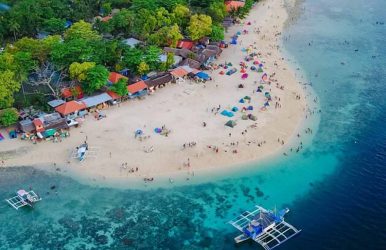
Top 10 Cebu Visit Bundles For A Remarkable Get-Away In The Philippines
BY Ankita Tripathy Feb 26, 2024
Cebu, the Sovereign City of the South, is a famous objective in the Philippines known for its dazzling sea shores, verifiable tourist spots, and dynamic culture. In the event that you're arranging an outing to Cebu visit bundles, consider booking a visit bundle to capitalize on your visit. If this is your first time in Cebu, then it might be a little difficult ot figure what to add to your itinerary and which one you can opt out of. To make sure that you are not missing out on the best parts of your Cebu trip. Is it cheaper if you book a vacation package? Often, it is not just about convenience; if you book a bundle, it is also cheaper. Some of the packages often include flights to Cebu, your accommodations, airport transfers as well as Cebu tour activities. They arrange everything for you so you can relax and enjoy the trip and not worry about anything. Here you do not have to worry about booking every other element, as they will do everything for you. This way, you just have to pay your service provider, and in return, you can save your money. With everything already figured out, you can just savor the experience and enjoy the entire trip by booking a Cebu visit bundle. Here are the best 10 Cebu visit bundles to browse Booking a Cebu visit bundle is something that is going to make your trip compact and save a lot of money. So, let’s check out the best visit bundles you can get. Island Bouncing Experience: Investigate the lovely islands encompassing Cebu, including Mactan, Olango, and Nalusuan. Swim in completely clear waters, loosen up on white sandy sea shores, and partake in a flavorful fish lunch on this entire day's visit. City Visit: Find the rich history and culture of Cebu tour packages, cebu tours City with a directed visit through its top attractions, like Magellan's Cross, Stronghold San Pedro, and the Basilica Minore del Santo Niño. Find out about the city's Spanish provincial past and visit nearby business sectors to test conventional treats. Whale Shark Watching: Get very close to delicate goliaths on a whale shark-watching visit in Oslob. Swim close by these great animals right at home and wonder about their noteworthy size. Kawasan Falls Experience: Set out on an exhilarating canyoneering experience in Badian to arrive at the dazzling Kawasan Falls. Leap off bluffs, swim through turquoise pools, and rappel down cascades for an adrenaline-siphoning experience. Bohol Roadtrip: Take a ship to the close by island of Bohol and investigate its top attractions, including the Chocolate Slopes, Tarsier Safe-haven, and Loboc Stream Journey. Experience the regular magnificence and extraordinary untamed life of this charming island. Moalboal Swimming Visit: Plunge into the submerged universe of Moalboal and swim with brilliant marine life, including sardines, turtles, and dynamic coral reefs. Partake in the completely clear waters and stunning perspectives on this half-day visit. Osmeña Pinnacle Trip: Climb to the most noteworthy point in Cebu at Osmeña Pinnacle and appreciate all-encompassing perspectives on the encompassing mountains and shore. Experience the magnificence of the Cebu wide open on this difficult yet remunerating journey. Cebu Safari and Experience Park: Drench yourself in nature at the Cebu Safari and Experience Park, home to various extraordinary creatures and exciting exercises. Go on a safari visit, zip line through the wilderness, and connect with untamed life very close. Bantayan Island Escape: Departure to the flawless shores of Bantayan Island for a loosening up ocean-side excursion. Appreciate sunbathing, swimming, and water sports on its charming white sand sea shores, and enjoy new fish at nearby eateries. Cebu Food Visit: Enjoy the different kinds of Cebu visit bundles food that takes you to the city's best diners, and road food slows down. Test neighborhood treats like lechon, puso, and dried mangoes, and find out about the culinary customs of the district. But why just stop at 10, let’s check out some more. Moalboal Sardine Run The main highlight of the Moalboal island-hopping tour is the sardine run experience. These tours include stops at Turtle Bay and Pescador Island, but most visitors wait for the infamous Moalboal’s sardine run when they go for snorkeling. The huge glimmering underwater wall formed by sardines when they swim together is an amazing sight, so you would want to bring a waterproof camera with you to capture this magnificent sight. This is a regular phenomenon in the Moalboal’s water. Most of the tours come with transfers from Cebu, which makes it easy for you to squeeze in your itinerary. Ocean Park Private Tour A private full-day trip is something that is going to be tailored exclusively for you. Take a trip through the picturesque landscapes and reach the heart of the city of the Philippines. From there, most of the tour guides take you on this personalized private tour of Ocean Park. Discover the enigmatic Cebu Ocean Park, look at its grandeur, capture a few iconic moments, and have an amazing experience at the Ocean Park. These tours are exclusively designed and are meticulously scheduled. Most of the tour guides greet you at the hotels, pick you up from there, and drop you back at the hotel with a lot of time to relax and enjoy the rest of the day the way you wish. Conclusion Whether you're looking for experience, unwinding, or social encounters, these Cebu visit bundles offer something for each kind of voyager. Book your visit bundle today and prepare to investigate the magnificence and appeal of this tropical heaven. Make sure that you have the places you want to visit in your Cebu visit bundles, and if not, try to negotiate with them and ensure that you get what you want. Try to shuffle one place for another to include your favorite place within the itinerary. Or you can just take some time off of the tour package and visit the places at your own expense. ADDITIONAL READING: Asheville For Families: Fun And Adventure A Step-By-Step Guide To Find The Best Places To Live In Utah For Every Lifestyle A Guide To Adventure And Nature: The Best Things To Do In Moab Utah For Outdoor Enthusiasts
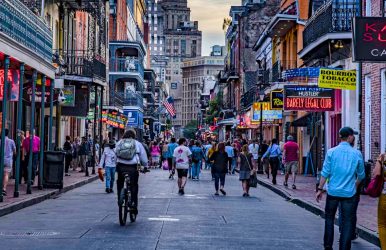
How to Plan Your Trip to New Orleans: The Best Time to Go for Your Budget and Interests
BY Ankita Tripathy Mar 28, 2024
What is the one thing that you would want to look up on the internet before you decide to visit a place? Well, for most people, apart from the best places to visit, it is the right time to visit. And if you are planning to go to the city of New Orleans this year, you MUST read this blog! New Orleans is a city brimming with culture, music, and history. Located in Louisiana, the city attracts travelers with its unique charm. Whether you're drawn by the glamor of Mardi Gras or the relaxing beauty of the Mississippi, finding the best time to visit New Orleans is key to a trip that's both memorable and tailored to your interests and budget. Best Time to Visit New Orleans: A Seasonal Guide for Travellers! Spring in New Orleans is a symphony of festivals and blooming magnolias, making it a prime time for those seeking a blend of pleasant weather and cultural festivities. The city comes alive with the world-famous Mardi Gras celebrations, followed closely by the New Orleans Jazz & Heritage Festival, a must for music enthusiasts. As summer approaches, the city simmers with sultry heat, but don't let that deter you. This is when you'll find enticing travel deals and fewer crowds. Dive into the heart of New Orleans' vibrant food scene or take a leisurely cruise down the Mississippi. https://www.instagram.com/p/C20KvAFvW8S/ Fall ushers in a refreshing change with cooler temperatures and a calendar packed with events like the Voodoo Music + Arts Experience. It's the perfect season for those who enjoy the outdoors, with opportunities to explore the city's lush parks and historic neighborhoods. Winter in New Orleans is mild and inviting, ideal for budget-conscious travelers. The festive spirit is tangible, with holiday decorations adorning the French Quarter and the joyous sounds of Reveillon dinners echoing through the streets. https://www.instagram.com/p/C1PnQmbs7Ol/ But then seriously, when is it actually the best time to visit New Orleans? You see, the thing is, every season has something to offer, something to enhance. And that is why it is a bit difficult to point out the BEST time. However, in this next section, I will be talking about the best things to do, to eat, and places to visit in each season. So, maybe you can give it a read and figure out what YOU want to do and when YOU want to go! So, without further ado, let us get started with this seasonal guide! Spring: Festivals and Flowers Spring in New Orleans is not just a season; it's a celebration of life, culture, and food. Whether you're strolling through City Park, staying in a historic hotel, or indulging in the local cuisine, you're sure to have an unforgettable experience. https://www.instagram.com/p/C4EIgYxsI8q/ This particular season in the city of New Orleans is a time of vibrant festivals, blooming gardens, and culinary delights. However, in order to enjoy your spring adventure in New Orleans, you need to know what all is going on. And that is why, I am here to help! Here's a guide to making the most of this lively season in the Big Easy. March to May - Spring in New Orleans is not just about pleasant weather; it's a season of celebration. Highlights are: Mardi Gras: Experience the iconic parades and vibrant street parties. New Orleans Jazz & Heritage Festival: Immerse yourself in the sounds of jazz, blues, and more. Places to Visit: https://www.instagram.com/p/B9R0auVnwA-/ New Orleans City Park: Enjoy the outdoors with activities like golf, tennis, and horseback riding. Mardi Gras World: Get a behind-the-scenes look at the famous Mardi Gras parades. New Orleans Historic Voodoo Museum: Explore the mysterious world of voodoo between Bourbon and Royal Streets. Jean Lafitte National Historical Park and Preserve: Immerse yourself in the natural beauty and history of the Mississippi Delta region. Where to Stay: https://www.instagram.com/p/CxlT9nYrMNH/ The Pontchartrain Hotel: A historic hotel in the Garden District, known for its elegance and rooftop bar. Ace Hotel New Orleans: Located in the Warehouse District, this hotel offers a lively atmosphere and cultural events. Hotel Monteleone: A luxury hotel with a famous carousel bar, located near the French Quarter. What to Eat: https://www.instagram.com/p/BgrZKFyh2_y/ Crawfish: Spring marks the start of crawfish season. Enjoy this local delicacy boiled and seasoned to perfection. You can enjoy a traditional boil at local spots like Cajun Seafood. Softshell Crab: A seasonal delicacy best enjoyed at seafood restaurants like Red Fish Grill. King Cake: While associated with Mardi Gras, some bakeries offer this sweet treat year-round. Jazmine Café: For a twist, try Vietnamese cuisine with local influences at this Carrollton Avenue spot. Beignets: No visit to New Orleans is complete without trying these sugary treats at the iconic Cafe Du Monde. Summer: Hot Deals and Cool Jazz After the season of spring, comes summer. The city of New Orleans in summer is a vibrant mosaic of culture, cuisine, and music. Despite the heat, the city buzzes with activities and flavors unique to the Crescent City. Here is a guide on the best things to do, places to visit, where to stay, and what to eat during a summer trip to New Orleans. June to August - Summer brings the heat, but also great deals for budget travelers. Highlights are: Satchmo SummerFest: A tribute to Louis Armstrong with live music and local food. Coolinary New Orleans: A month-long event where restaurants offer special deals. Places to Visit: The French Quarter: No visit to New Orleans is complete without a stroll through the historic French Quarter. From the bustling streets filled with live jazz to the quiet charm of the residential areas, the French Quarter is the heart of the city. City Park: Offering a respite from the summer heat with its lush greenery and ancient oaks, City Park is perfect for picnics, boat rides, and visiting the New Orleans Museum of Art. National WWII Museum: A must-visit for history buffs, this museum offers a deep dive into the American experience during WWII. Audubon Aquarium of the Americas: Escape the heat and explore underwater worlds at this renowned aquarium. Where to Stay: https://www.instagram.com/p/C1Ho5oWxXnt/ French Quarter: For a truly immersive experience, stay in the French Quarter, where you'll be steps away from iconic attractions and nightlife. Bourbon Orleans Hotel: This hotel combines historic charm with modern amenities, offering an outdoor pool and proximity to all the French Quarter's highlights. Four Points by Sheraton French Quarter: With balcony views and a central location, this hotel is perfect for those who want to be in the middle of it all. What to Eat: https://www.instagram.com/p/C3aa-hwL-31/ Seafood: Summer is the season for seafood, and New Orleans offers some of the freshest Gulf catches. Try the chargrilled oysters at Acme Oyster House or the classic gumbo at Oceana Grill. Po-Boys: These iconic sandwiches are a must-try. Whether stuffed with shrimp, oyster, or roast beef, find the best po-boys at local favorites like Parkway Bakery & Tavern. Snowballs: Beat the heat with a New Orleans snowball, a shaved ice treat soaked in flavored syrups. Hansen's Sno-Bliz is an institution that's been serving them since 1939. Summer Events: https://www.instagram.com/p/CDJyC6glMjW/ Essence Festival: Celebrate African American music, culture, and empowerment at this annual festival held over the Fourth of July weekend. Satchmo Summer Fest: A festival dedicated to the legendary Louis Armstrong, featuring live jazz, brass bands, and seminars on the famous musician's life and legacy. Tips for Visiting: Stay Hydrated: New Orleans summers are hot and humid. Carry water with you and take breaks in air-conditioned spaces. Dress Appropriately: Light, breathable clothing will help you stay comfortable while exploring. Enjoy the Nightlife: The city comes alive at night when the temperatures are cooler. Explore the bars and live music venues of Frenchmen Street and Bourbon Street. Read More: The Top 10 Museums In New Orleans You Can’t Miss! Fall: Cultural Celebrations and Culinary Delights Fall in New Orleans is a season of milder temperatures and vibrant colors, making it an ideal time to explore the city's unique offerings. Here's a guide on the best things to do, places to visit, where to stay, and what to eat during the fall season in New Orleans. September to November - The fall season is a culinary and cultural paradise. Highlights include: Voodoo Music + Arts Experience: A multi-day music festival with big-name acts. New Orleans Film Festival: Celebrate the art of filmmaking in the heart of the city. Places to Visit: The Garden District: Admire the historic mansions and take a guided tour to learn about the area's rich history. The Presbytère: Explore Louisiana's history and culture, including Mardi Gras traditions, at this museum. Crescent City Farmers Market: Experience local flavors and shop for fresh produce and artisanal goods. Lafayette Cemetery No. 1: Discover the history and architectural beauty of one of the city's oldest cemeteries. Bayou St. John: Enjoy kayaking or stand-up paddleboarding in this serene waterway. Where to Stay: https://www.instagram.com/p/C3YCzyprM7r/ NOPSI Hotel: This historic hotel in Central New Orleans offers a luxurious stay with a rooftop pool and bar. The Eliza Jane: Stay in this boutique hotel that blends history with modern luxury, located in the Warehouse District. Henry Howard Hotel: A boutique hotel housed in a historic mansion, offering a unique and intimate experience. What to Eat: https://www.instagram.com/p/CKzXRwIFTJe/?img_index=2 Muffuletta at Central Grocery: A classic New Orleans sandwich, perfect for a quick lunch as you explore the city. Crawfish Boil: Fall is the start of crawfish season, and there's no better place to enjoy this local favorite than at a traditional boil. King Cake: While traditionally associated with Mardi Gras, some bakeries offer this sweet treat year-round. Dooky Chase's Restaurant: Legendary for its Creole cuisine and significant history in the civil rights movement. Fall Events: https://www.instagram.com/p/B3iBsnNFnzB/?img_index=1 Art for Art’s Sake: An annual event celebrating the arts with open galleries, live music, and free wine along Magazine Street. Gentilly Fest: A neighborhood festival featuring diverse musical performances and celebrating the local community of Gentilly. Tips for Visiting: Weather: Fall weather can be unpredictable; pack layers to adjust to changing temperatures throughout the day. Transportation: Consider renting a bike or using the streetcar to explore the city's neighborhoods and parks. Local Brews: Visit breweries like Urban South Brewery to sample seasonal craft beers. Winter: Holiday Magic and Serene Sightseeing Winter in New Orleans is a season of enchantment, with cooler temperatures and festive spirits. If you are planning to visit the city of New Orleans in winter, I have you covered! Here's a guide to experiencing the best of New Orleans during the winter months, featuring unique places to visit, stay, and dine. December to February - Winter is a magical time with fewer crowds and festive cheers. Highlights are: Celebration in the Oaks: A dazzling holiday lights display in City Park. Carnival Season: Leading up to Mardi Gras, enjoy the pre-festivities and parades. Places to Visit: https://www.instagram.com/p/Cxviq8erDD-/ The Historic New Orleans Collection: Dive into the city's rich history and culture at this museum and research center. New Orleans Pharmacy Museum: Explore the intriguing world of medicine and healthcare from the past. National World War II Museum: Honor history at one of the country's most comprehensive WWII museums. Ghost City Tours: Get a chill down your spine with a haunted tour of the French Quarter. Celebration in the Oaks: Marvel at the dazzling holiday lights in City Park. Where to Stay: Hotel Monteleone: Experience luxury and history at this iconic hotel with a famous carousel bar. Bourbon Orleans Hotel: Stay in the heart of the French Quarter with easy access to all the winter festivities. Unique Garden District Hotels: Choose from a variety of unique accommodations in the historic Garden District. What to Eat: Warm Gumbo: Nothing beats a bowl of warm gumbo on a cool day. Try it at the renowned Antoine's Restaurant. Creole Turtle Soup: A winter delicacy, this rich soup can be savored at Brennan's. Seasonal Seafood: Enjoy fresh, local seafood at Restaurant August, known for its contemporary Creole cuisine. Dooky Chase Restaurant: Indulge in authentic Cajun cuisine at this legendary establishment. Cajun Seafood: For a casual yet delicious seafood experience, head to Cajun Seafood. Winter Events: Reveillon Dinners: Participate in this Creole holiday tradition with special menus at various restaurants throughout the city. Krewe of Jingle Parade: Kick off the holiday season with this festive parade featuring floats, bands, and Santa himself. Tips for Visiting: Weather: Pack layers to accommodate the mild but sometimes unpredictable winter weather. Transportation: Utilize the streetcar system to explore different neighborhoods festively decorated for the season. Holiday Shopping: Take advantage of the unique shopping opportunities, from antique stores to holiday markets. Wrapping It Up! In case you were searching for the best things to do and the best time to visit New Orleans, I hope that this blog has been of help to you. If there are any other queries related to the same, please feel free to let me know. All that you need to do is scroll down till you reach the bottom of the page. Then leave your comments and queries in the box below. And I will be there to answer them all for you! Read Also: Washington State Bucket List: 6 Amazing Attractions You Can’t Miss Savannah In Full Swing: What Is The Best Time To Visit Savannah? The Best Things To Do In Moab Utah For Outdoor Enthusiasts
- Mexico Travel News
- Seaweed Updates
- Hidden Travel Gems

16 Most Dangerous Cities in Mexico in 2023, According to Data
Mexico is one of the most popular tourist destinations in the world, and with good reason.
But not all parts of Mexico are safe for travelers. In this article, we’ll take a look at the most dangerous cities in Mexico in 2023.
Suggested: Is it safe to visit Mexico now? (Complete guide)
Tijuana
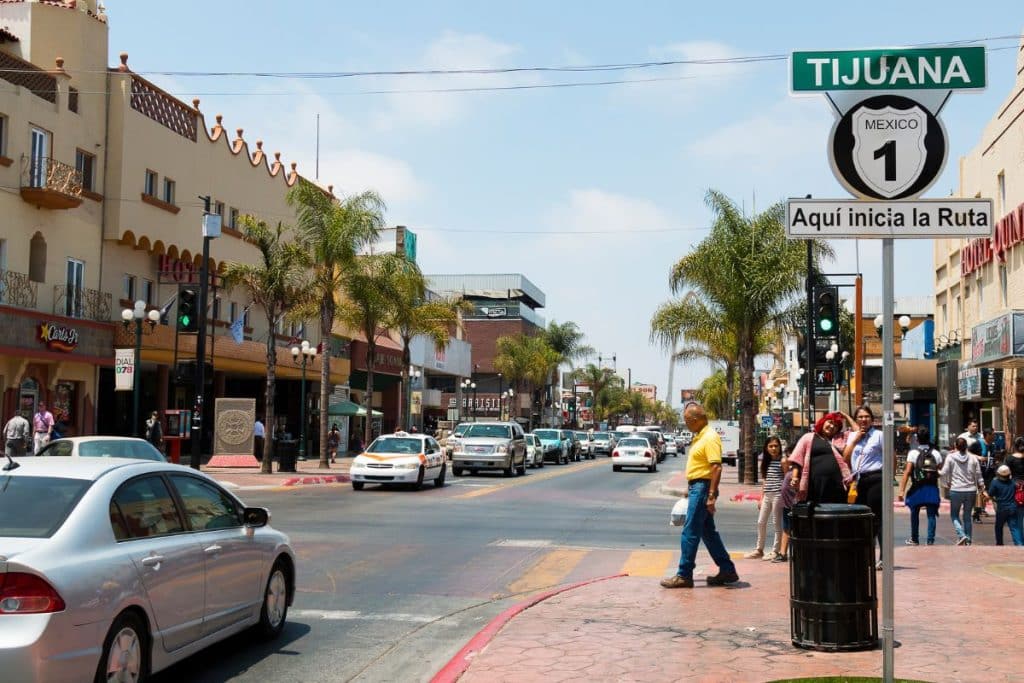
Tijuana is considered the most dangerous city in Mexico due to its high rate of homicides and drug-related violence.
The homicide rate is 138 per 100,000 people. As the main entry point for drugs coming from South America, Tijuana is a hotbed of cartel activity. Being close to the border with the United States, it is also a major center for human trafficking and organized crime.
Tijuana is also considered the most dangerous city in the world , according to homicide rate stats.
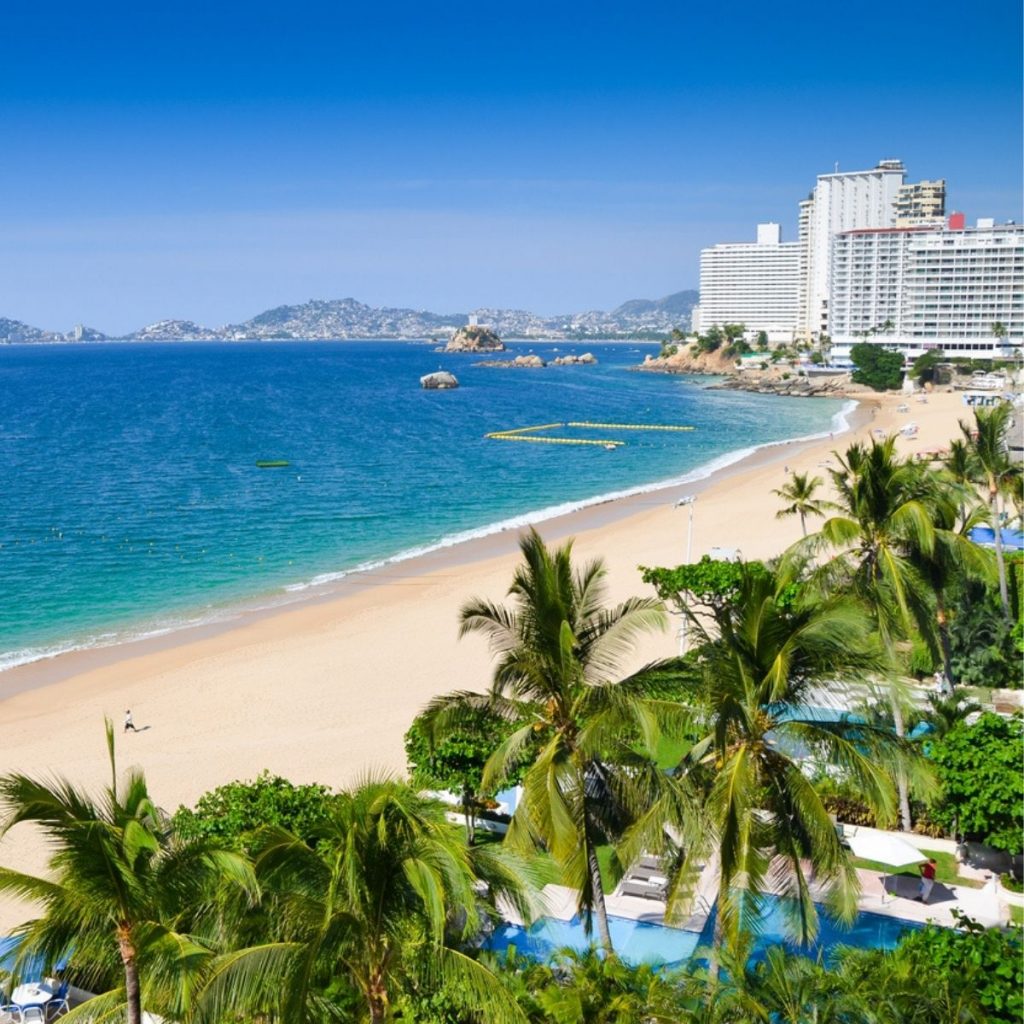
While many tourists still flock to Acapulco for its beaches, it is also one of the most dangerous cities in Mexico. The city’s homicide rate is 111 per 100,000 people. Acapulco has seen a sharp rise in drug-related violence as various cartels battle for control of the city’s lucrative drug trade. This city is also situated inside of Guerrero, the infamous state known for its high levels of violence, turmoil due to turf wars between gangs, and for its production of heroin.
Ciudad Victoria
Located in Tamaulipas state, Ciudad Victoria is one of the most violent cities in Mexico. The homicide rate here stands at 86 per 100,000 people and it is another hot spot for drug-related violence. It is also an entryway city, with Tamaulipas sitting just beyond the U.S. border. Members of the Northeast Cartel actively run their operations in Ciudad Victoria.
Ciudad Juarez
Another border city, residents of El Paso can see Ciudad Juarez from their side of the Rio Grande. It is one of the most violent cities in Mexico, with a homicide rate of 86 per 100,000 people. The city is another hotbed for drug trafficking and has seen a sharp rise in violence due to turf wars between the Juarez and Sinaloa cartels. Both of these powerful cartels have a strong presence in Ciudad Juarez.
Irapuato is located in the central state of Guanajuato, and in the past three years has seen a sharp increase in homicides due to drug-related violence. The city has a homicide rate of 81 per 100,000 people, making it one of the most unsafe cities for tourists and, unfortunately, locals that call this city home. Murders here are largely attributed to turf wars between the Jalisco Cartel New Generation and the Santa Rosa de Lima Cartel.
Cancun
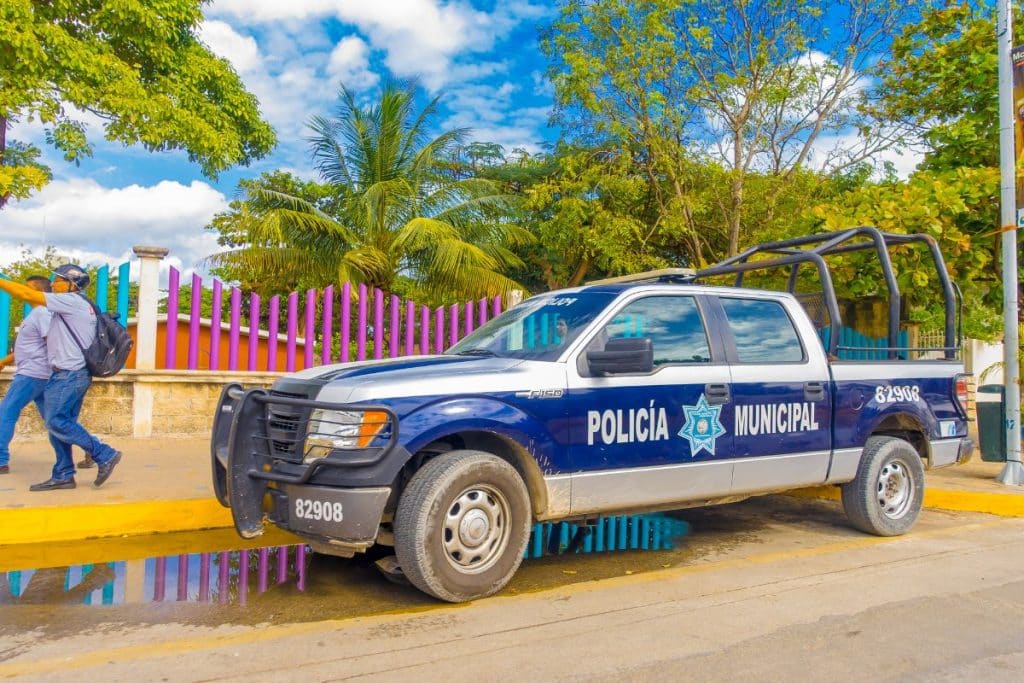
Mexican President Andres Manuel Lopez Obrador has recently warned tourists about the dangers of visiting Cancun after a string of cartel-related shootings, robberies, and attacks on tourists in the city. The homicide rate here is 64 per 100,000 people, making it far less deadly than other cities in Mexico, but still notorious for its high levels of violence.
Culiacán
While Culiacan was once seen as a mid to low-level dangerous city, it is now the site of a deadly battle that occurred due to the arrest of cartel leader El Chapo’s son, Ovidio Guzman. The city has a homicide rate of 61 per 100,000 people and is considered the central city in Sinaloa. The Sinaloa Cartel has a firm grip on the city and its residents, making it incredibly dangerous for tourists to visit.
Uruapan
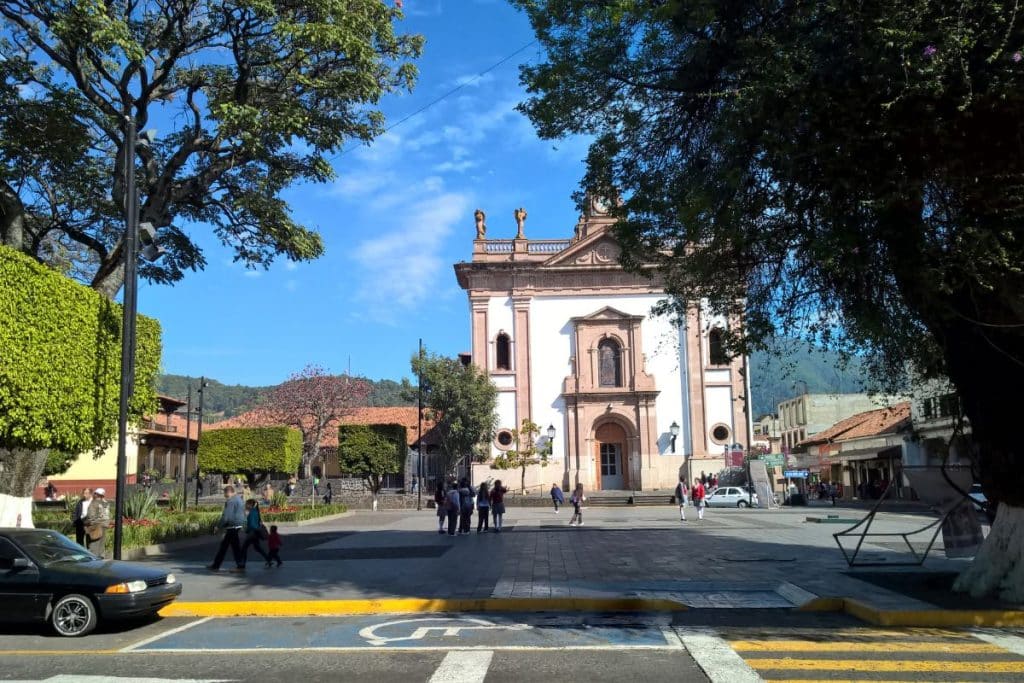
In Uruapan, violence has steadily increased for this mountainside city in Michoacan. Sadly, it seems as though the violence here only continues to escalate. The once quiet town is now home to battling cartels that consistently change hands and names. Killings occur in the most indiscreet areas, such as arcades and bars. The current homicide rate here is 55 per 100,000 residents.
Ciudad Obredón
Cuidad Obregon is the second largest city in Sonora, but now has a new notoriety – being named the fourth most dangerous city in the world in 2022. This rise in violence is not just in Ciudad Obredon, but in the surrounding area of Cajame, the state’s southernmost region. Only time will tell if this steep increase in crime will continue to hold. Its current homicide rate is 52 per 100,000 residents.
Coatzacoalcos
With a homicide rate of 48 per 100,000 residents, Coatzacoalcos was once a vibrant tourist spot in Veracruz. Today, it is the sight of violence where recently nine bodies were left on the street. Murder, robbery, and violent crime make this city one of the top ten most dangerous in Mexico.
The accounts state that over 1000 people were brutally murdered each year. The rise in drug sales, thefts, and human trafficking were all noted, so the story doesn’t end here. It is unsafe to spend your holiday in Celaya.
Currently, Celaya is regarded as one of the most dangerous cities in the world, with 109.38 killings per 100,000 residents.
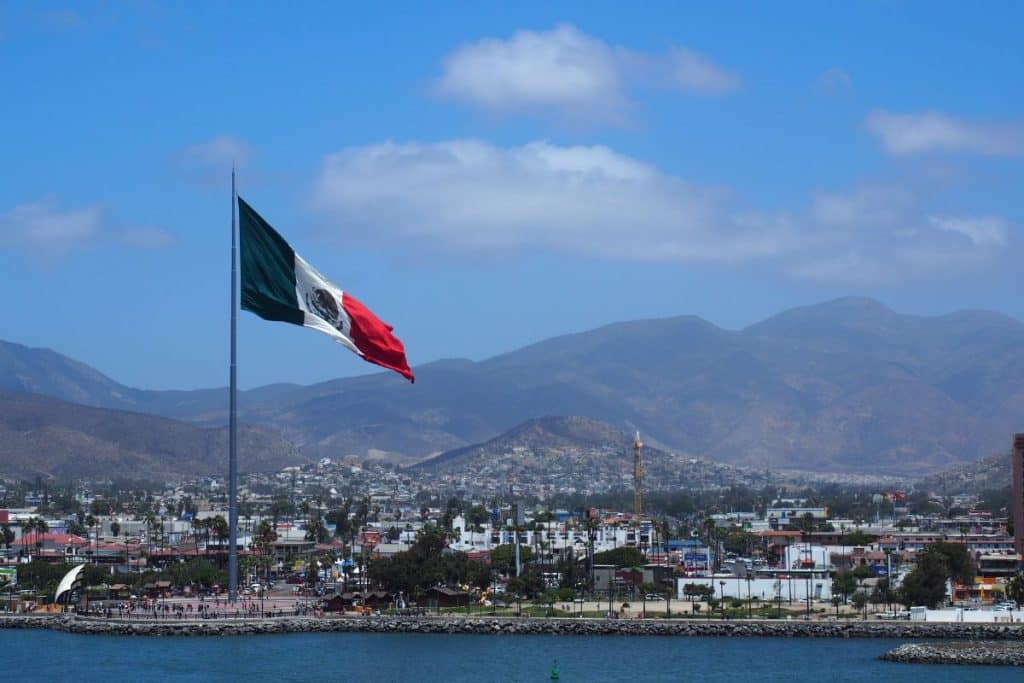
Only other parts of Mexico, 1,400 miles away, have official U.S. State Department travel warnings or restrictions .
According to residents and press reports, violence has increased. However, tourism and locals have not been affected by this unrest.
In the last months, the number of violent murders in Ensenada and Tijuana has increased, mostly at night and outside the city center. The city center is still very safe, although there are some risks in the ungated neighborhoods further out. Day trips or travel through the Vine Valley are not affected by this shift.
Tepic is not a tourist town. That doesn’t mean tourists aren’t welcome. The main urban center of this thriving agricultural region is Tepic, where sugar cane, tobacco, and citrus fruits are among the most important crops. The town, originally known as Villa del Espíritu Santo de la Mayor España, was founded in 1531.
Rated 36th last year among world cities by homicide rate, Tepic, Mexico had a murder rate of 45 per 100,000 population.
• Homicides per 100,000 in 2018: 45
• Homicides in 2018: 230
That is more than twice Chicago’s homicide rate (Which was 24 in 2017, and decreased significantly in 2018 to around 20)
According to the US State Department travelers should avoid Tepic and San Blas. Please visit the US State Department website for up-to-date advice on travel safety in Nayarit.
Reynosa is located just across the Rio Grande on the border with the United States and is widely regarded as one of the most dangerous cities in Mexico, where gang violence is recurring. Travel to this area is discouraged. Nevertheless, Reynosa is an important industrial center for northern Tamaulipas and the Rio Grande Valley. Most companies are in the electronics and automotive industries.
Overall risk: High
Reynosa has a reputation as one of the most dangerous cities in Mexico. This is due to ongoing conflicts between gangs and police corruption.
Therefore, it is not recommended for tourists to travel to this region, and the number of immigrants living here is increasing. Robberies, kidnappings and thefts are common. Therefore, it is important to take high security measures to protect yourself and your belongings.
Over the past 12 years, drug-related violence has increased significantly in northern Mexico, particularly in the state of Chihuahua.
Although Chihuahua is significantly safer than other cities in this region, cartel murders are still a problem there.
It’s important to note that the majority of these killings have been aimed at drug dealers and their families, and instances of violent crime affecting tourists have been rare.
Overal risk: High
Crime and violence are still rampant in Chihuahua. Most tourists are safe and well protected by armed police. But in this place, you need to be even more alert than usual.
Be careful every time you venture outside. Pickpockets may target you in crowds, markets, or on public transportation. They occasionally work in pairs and are quite cunning.
Ciudad Obregon , the second-largest city in the northern Mexican state of Sonora, holds a strategic location in proximity to the United States-Mexico border within the U.S. state of Arizona. However, it is important to note that the city has faced safety concerns for tourists.
In fact, it was included in Business Insider’s list of the top 50 most dangerous and violent cities in the world. While this designation raises caution, it is crucial to approach the topic with a balanced perspective and consider the various factors that contribute to the city’s safety challenges.
By being mindful of the local environment, staying informed about potential risks, and taking necessary precautions, visitors can still experience the unique cultural offerings and attractions that Ciudad Obregon and the surrounding region have to offer.

The Safest Cities In Mexico And The Most Dangerous
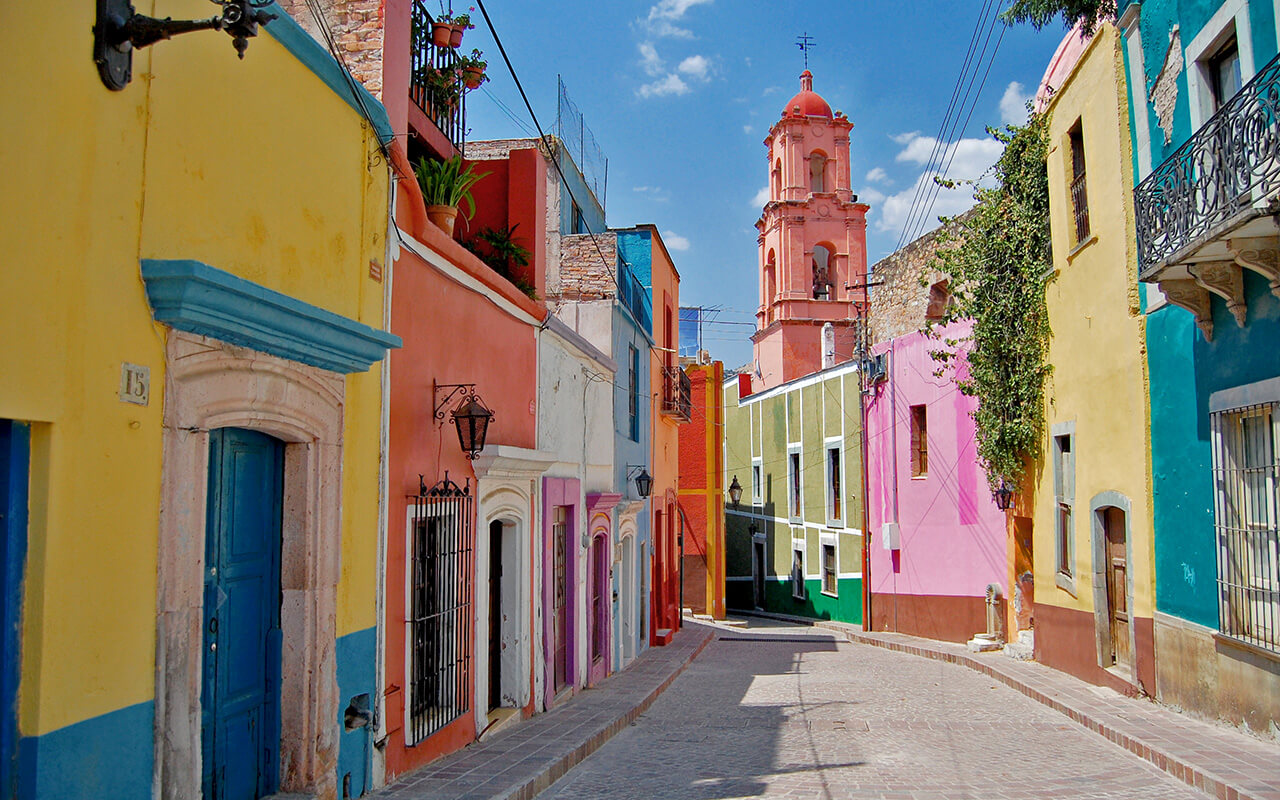
Mexico, a country known for its vibrant culture, rich history, and stunning landscapes, also faces complex challenges when it comes to safety. While some cities boast tranquil environments and low crime rates, others grapple with issues that can impact both residents and visitors. In this article, we delve into the contrasting realities of Mexico’s urban safety,exploring both the safest havens and the most dangerous areas to help travelers make informed decisions and experience the country’s beauty responsibly.
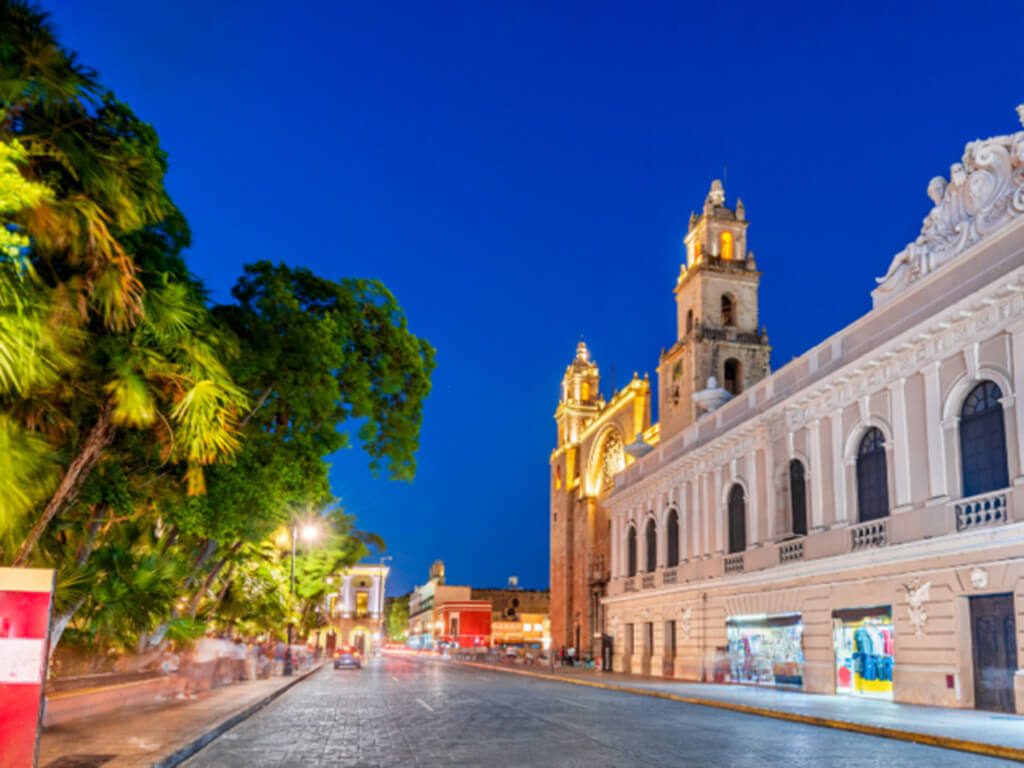
Mérida is not only the vibrant capital of Yucatán but also ranks as the second safest city in Latin America, as reported by CEO World magazine. With an exceptionally low crime rate of fewer than 2 violent crimes per 100,000 inhabitants annually in recent years, Mérida offers a secure environment.
Attractions like the Palacio del Gobierno and the Cathedral of San Ildefonso make it culturally rich. Despite its safety, visitors should watch for minor thefts in crowded areas. Mérida is also an ideal base for exploring nearby tourist destinations like Cancún and Playa del Carmen, enhancing its appeal to visitors looking for both culture and relaxation.
Playa del Carmen
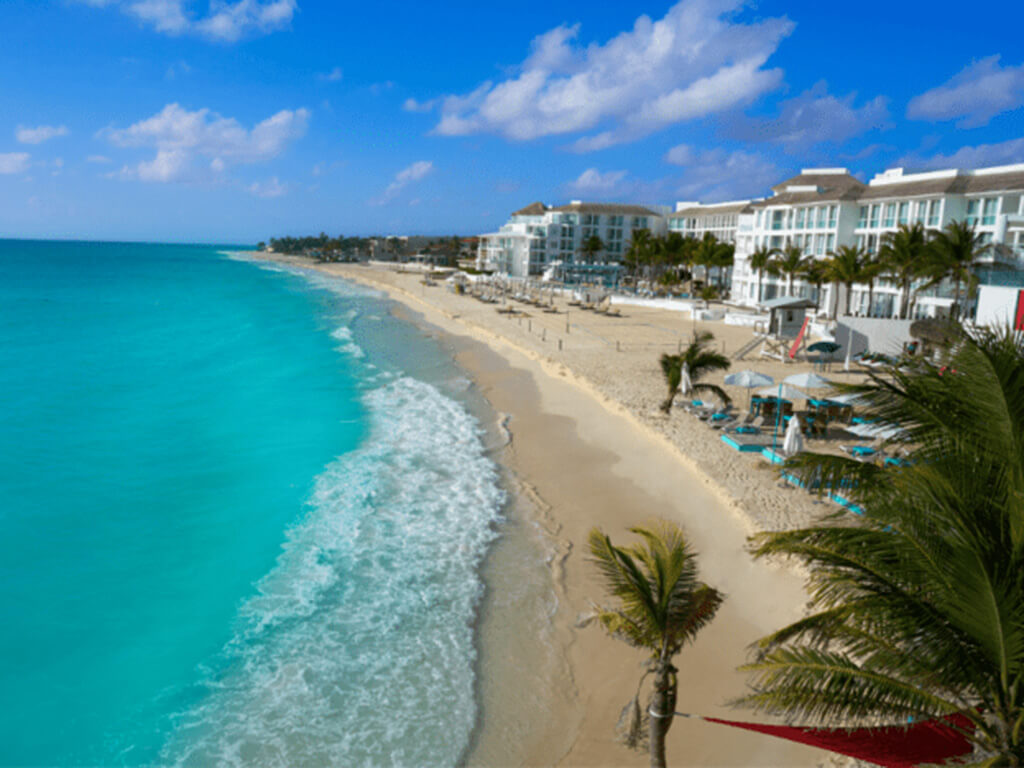
This beach town on Mexico’s Caribbean coast is marked by its expansive growth, attracting about 186,000 expatriates. It boasts a cost of living significantly lower than the U.S., with average monthly rents ranging from $700 to $2,500, depending on proximity to the beach and amenities offered.
While generally safe, recent spikes in minor incidents in areas close to Tulum suggest visitors maintain caution, especially at night. The town’s proximity to the iconic Chichén Itzá and vibrant nightlife continues to draw a global crowd.
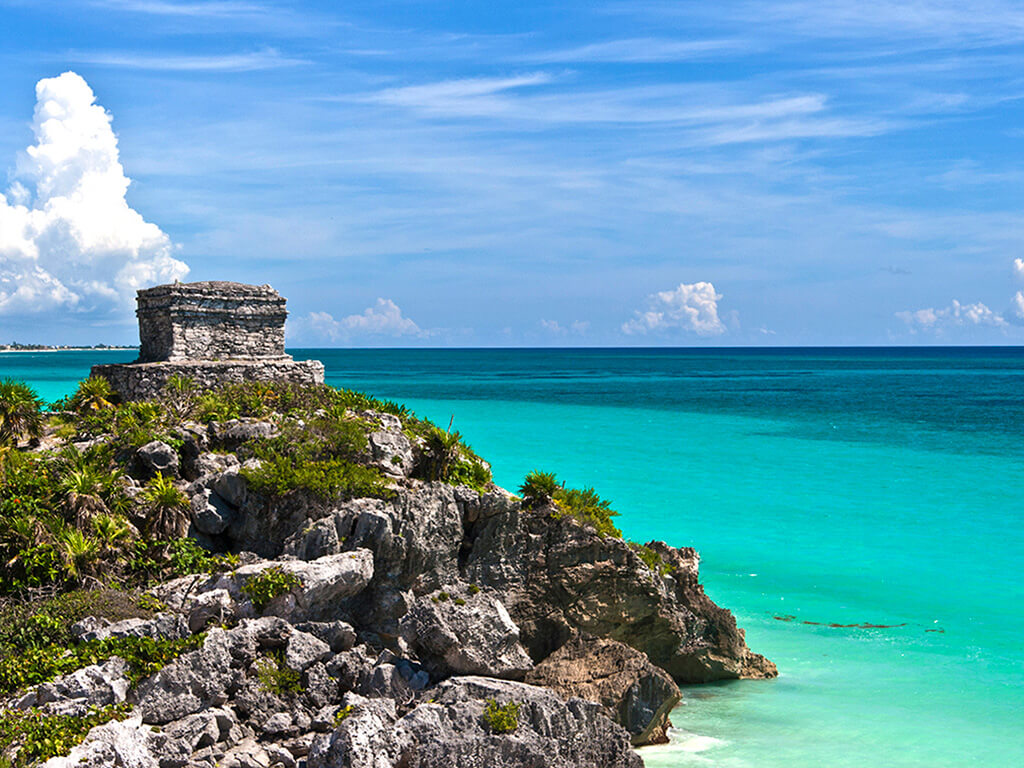
Known for its pristine beaches and majestic ruins, Tulum is considered safe, though vigilance is advised due to recent minor increases in gang-related activities, primarily confined to non-tourist areas.
The overall crime rate remains low, with a focus on petty theft. Tulum’s natural beauty and historical significance, coupled with its relaxed atmosphere, make it a favorite among tourists, despite potential risks which are generally well-managed through local security efforts.
Puerto Vallarta
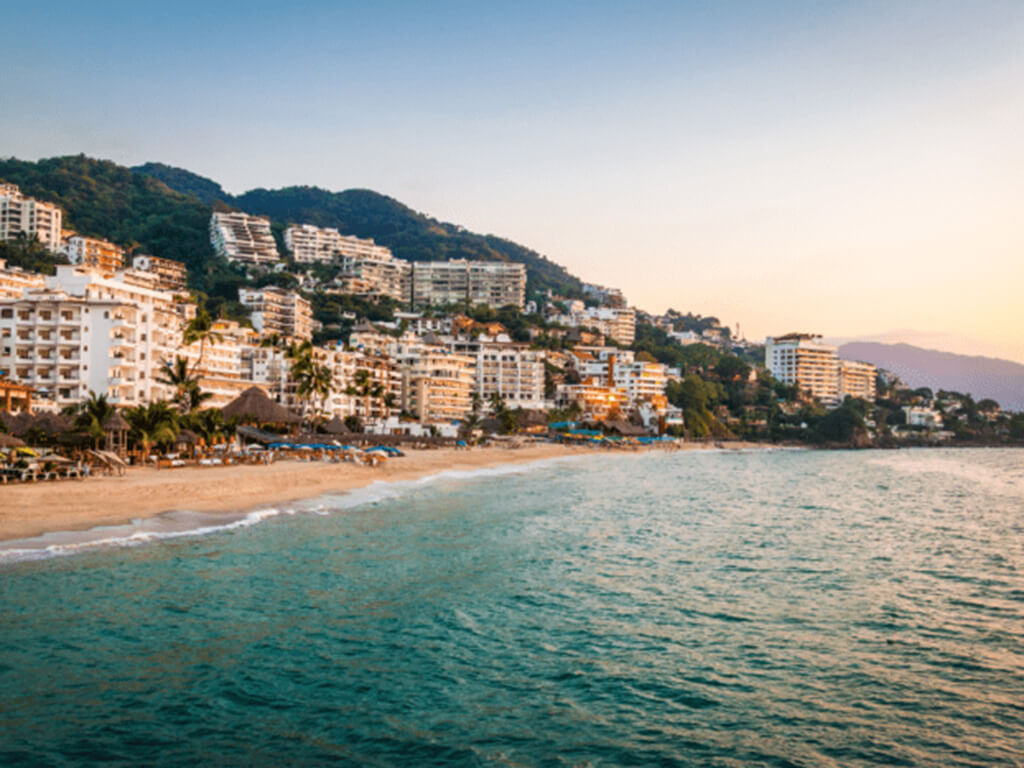
Set between the Sierra Madre mountains and the Pacific Ocean, Puerto Vallarta is celebrated for its stunning landscapes, thriving arts scene, and dynamic expat community. The city sees a low crime rate, with occasional petty thefts such as pickpocketing being the most common concern.
Living expenses here are variable, with average monthly rental costs ranging from $650 for modest accommodations to over $3,500 for luxury seaside living. The city’s robust tourist infrastructure and active cultural life make it a safe and appealing destination for retirees and other expatriates.
San Miguel de Allende
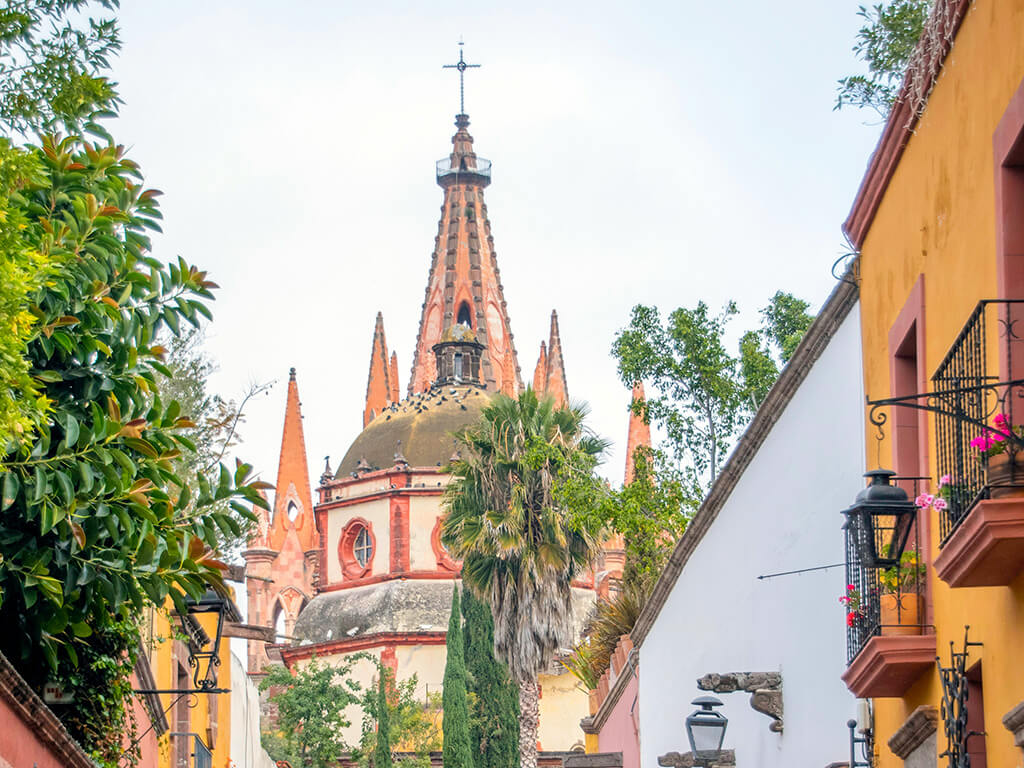
As a UNESCO World Heritage Site, San Miguel de Allende offers a blend of historical splendor and modern living. It has a very low crime rate, with violent crimes being extremely rare, making it one of the safest cities in Mexico for expatriates.
The city’s cost of living is about 40% lower than in the U.S., with average monthly expenses for a couple running around $1,200 excluding rent. Its vibrant cultural scene and historic architecture continuously attract arts and culture enthusiasts from around the world.
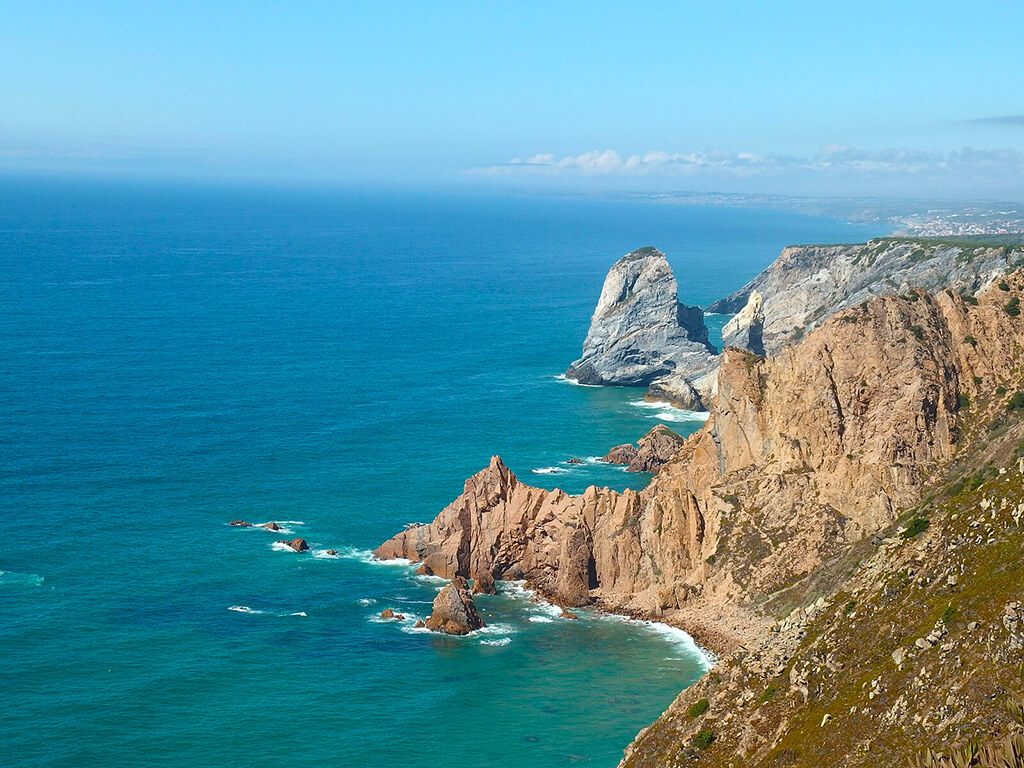
Located at the tip of the Baja California peninsula, Los Cabos is renowned for its luxury resorts and stunning natural beauty. The crime rate here is one of the lowest in Mexico, particularly concerning violent crimes, which are exceedingly rare in tourist areas.
The region is known for its active lifestyle options, including golf, fishing, and water sports, making it particularly popular among affluent tourists and expatriates seeking a secure and high-quality living environment.
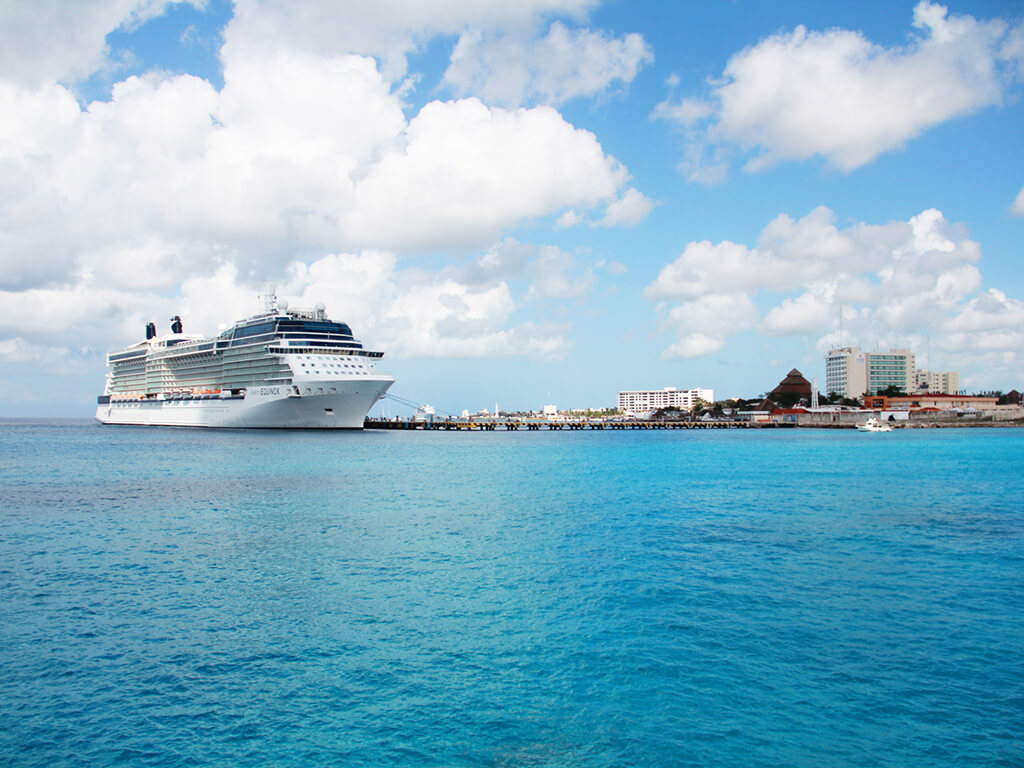
Cozumel is an island paradise known for its spectacular coral reefs and low crime rate, with fewer than 1 incident per 10,000 residents annually. It’s a leading destination for scuba diving and snorkeling, offering a tranquil escape with well-preserved marine life and excellent visibility.
The cost of living is relatively low, with expatriates typically spending around $500 to $1,500 per month on living expenses, depending on lifestyle choices.
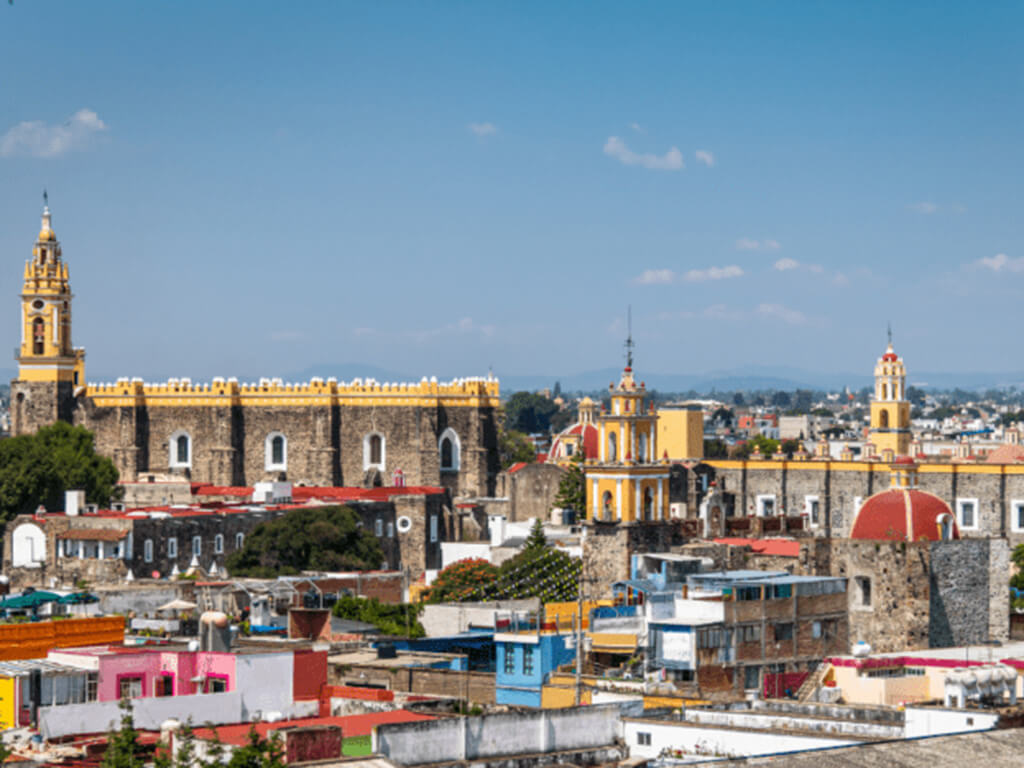
Just two hours from Mexico City, Puebla is a safer, cleaner, and more affordable alternative to the capital. With a low crime rate, particularly in tourist-frequented areas, Puebla offers a blend of colonial charm and modern amenities.
The city is known for its culinary scene, particularly its mole poblano, and rich history, which includes numerous churches and museums. Connectivity through its airport and bus services makes it a convenient hub for travelers.
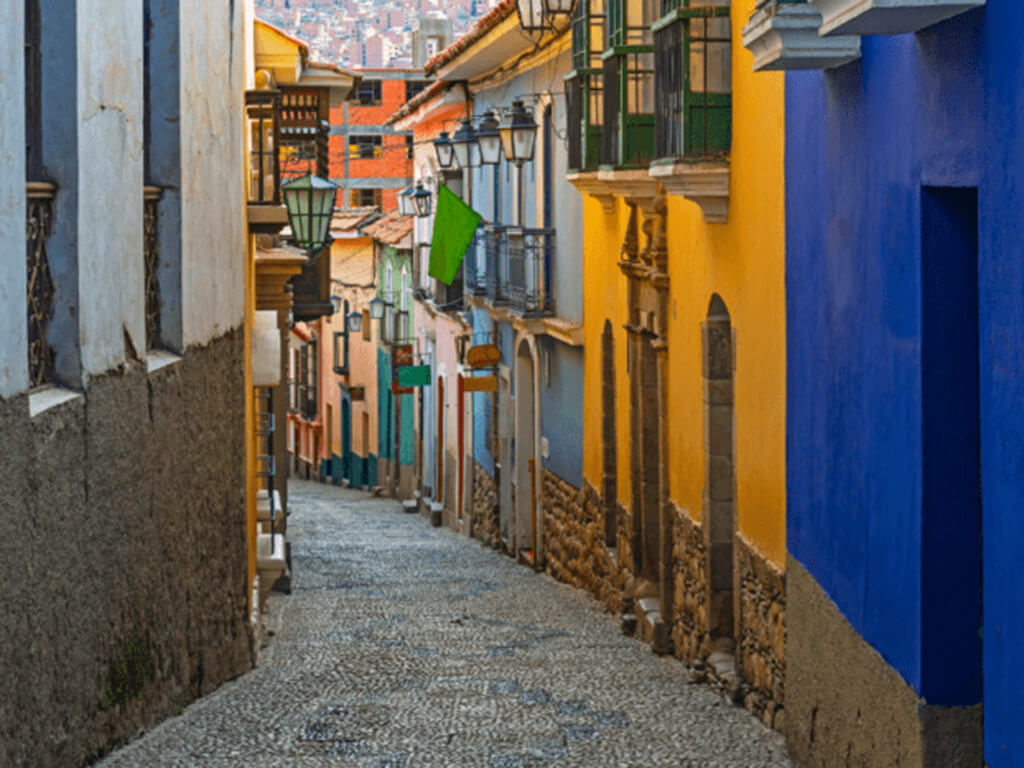
The capital of Baja California Sur, La Paz, is celebrated for its exceptional safety, serene beaches, and vibrant sea life. With one of the lowest crime rates in Mexico, it offers a peaceful retreat for nature lovers.
The average cost of living for expatriates is quite affordable, with expenses without rent averaging around $500 per month. La Paz’s allure includes activities like whale watching, snorkeling with sea lions, and exploring the Sea of Cortez.
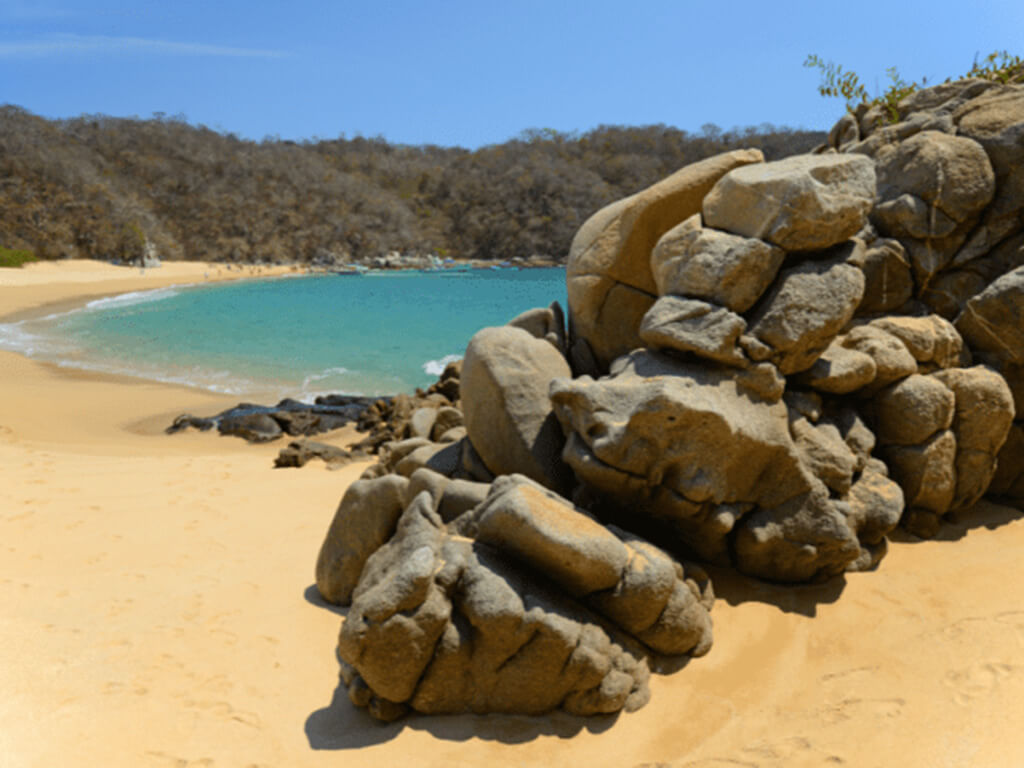
Formerly a quaint fishing village, Huatulco has evolved into a safe and serene destination known for its nine beautiful bays and 36 beaches. The crime rate here is very low, with the area being managed to maintain its appeal as a tranquil getaway.
Living costs are reasonable, with many properties offering views of the Pacific Ocean. The community is welcoming, making it ideal for those seeking both adventure and relaxation in a secure environment.
The Most Dangerous Cities in Mexico
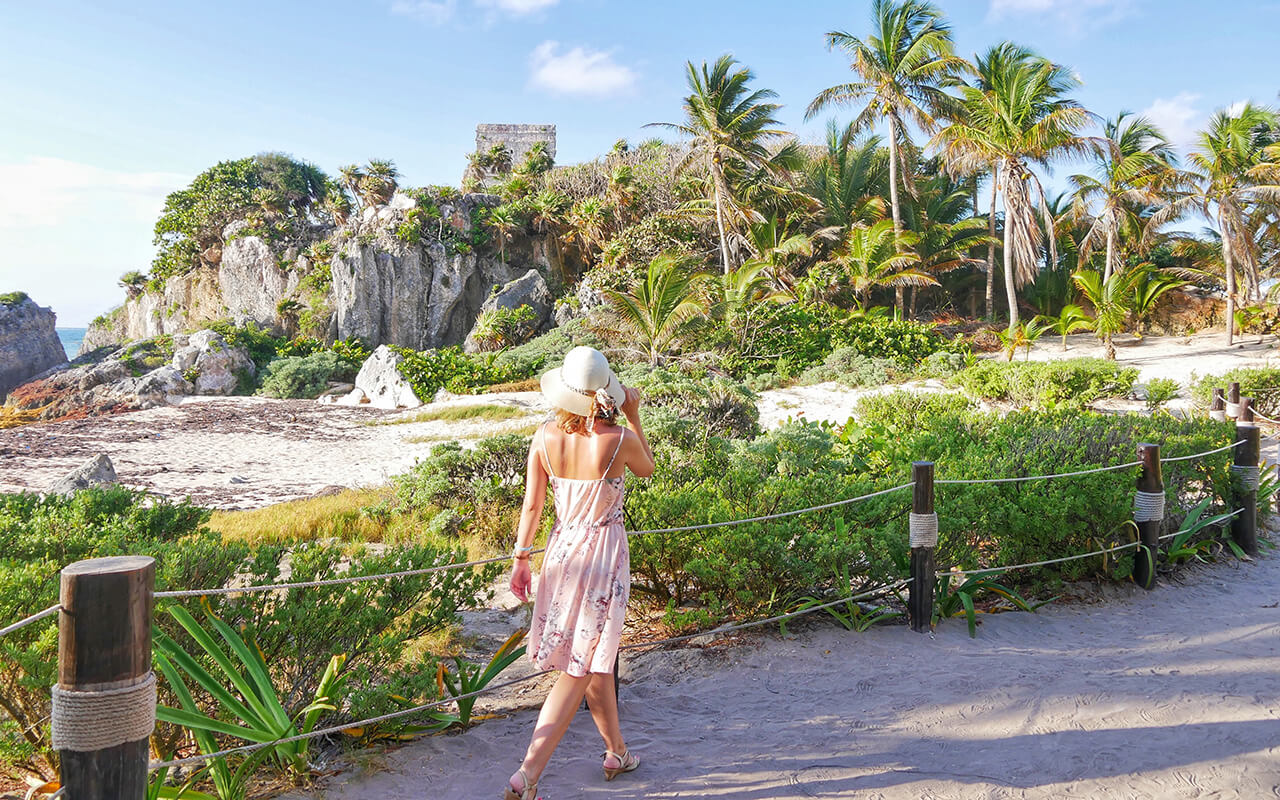
Mexico, a land of vibrant culture, rich history, and breathtaking landscapes, is a popular destination for travelers seeking adventure and unique experiences. However, concerns about safety often arise when planning a trip to Mexico. While it’s important to be aware of potential risks, it’s equally crucial to recognize that Mexico is a vast country with diverse regions, each offering its own level of security.
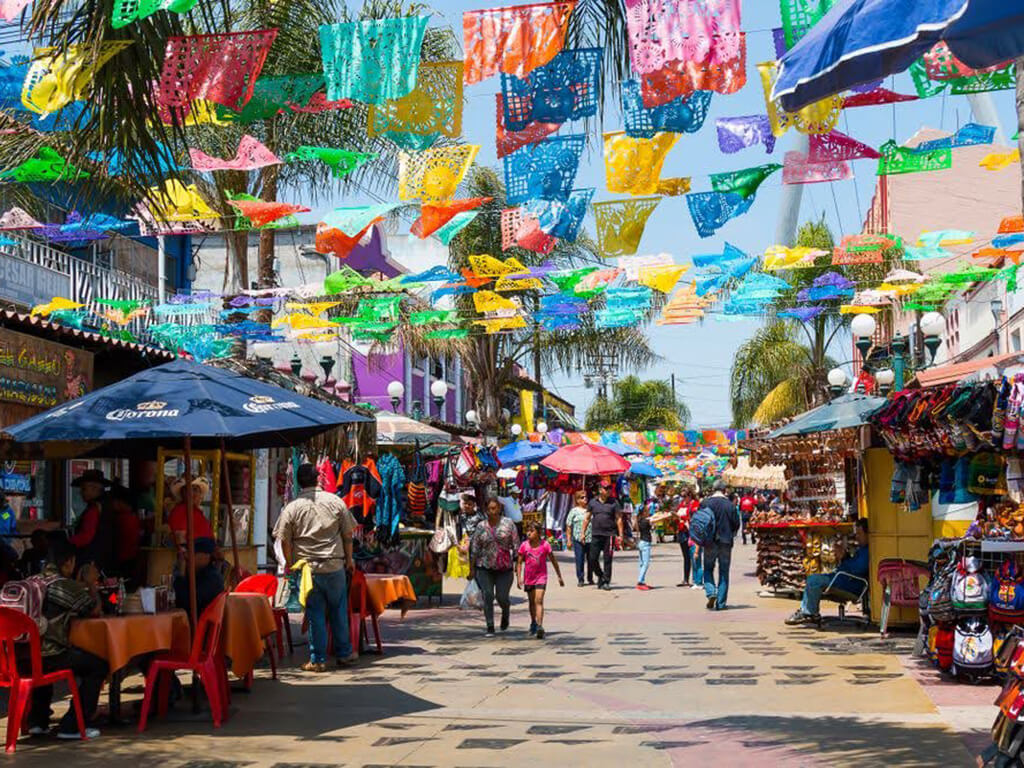
Key Areas of Concern: Zona Norte, Centro, Rio Sanchez Taboada.
Situated at the busiest land border crossing in the world, Tijuana is a nexus of commerce and culture. Notorious neighborhoods like Zona Norte are plagued by violence and petty crime, making them unsafe for both residents and tourists. The city’s nightlife, while vibrant, can also pose risks due to the presence of organized crime.
Tourist Targeted Risks: Pickpocketing, scams, and targeted robbery near tourist spots.
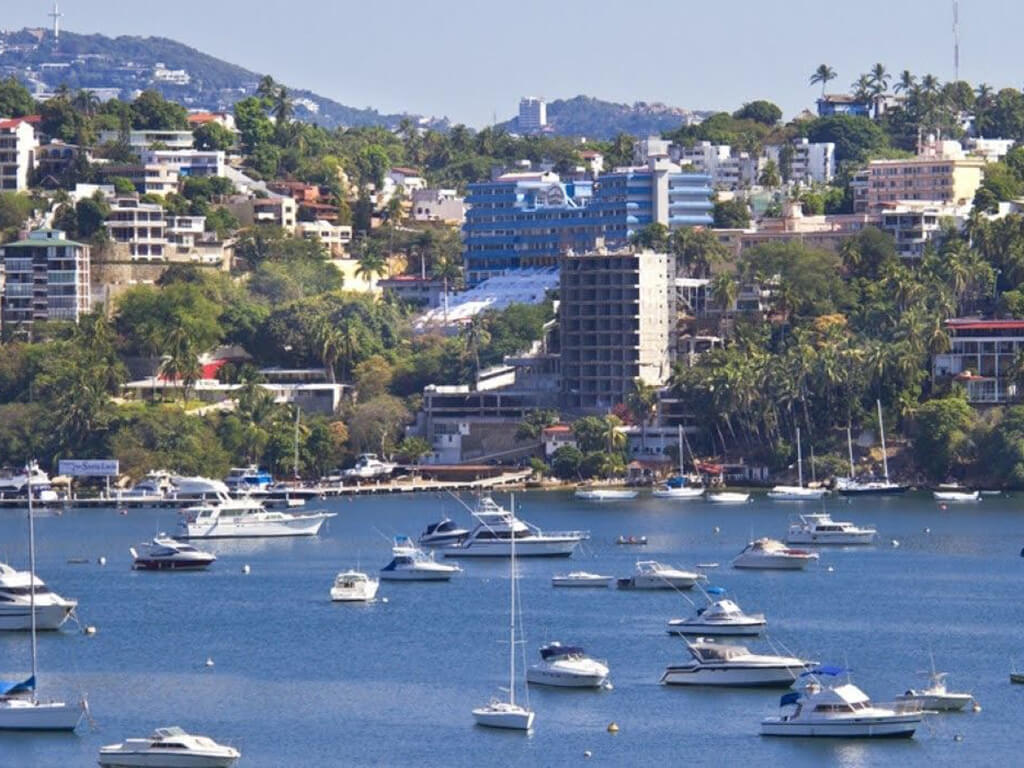
Key Areas of Concern: Ciudad Renacimiento, El Coloso, Emiliano Zapata.
Acapulco’s dual nature presents a picturesque facade with its resorts while concealing the stark realities of its poorer neighborhoods. The disparity between tourist areas and local living conditions contributes to its high crime rates, with certain areas like Ciudad Renacimiento seeing frequent violent incidents, making it a dangerous place outside the tourist bubble.
Tourist Targeted Risks: Resort scams, spiked drinks, and beach theft.
Ciudad Juárez
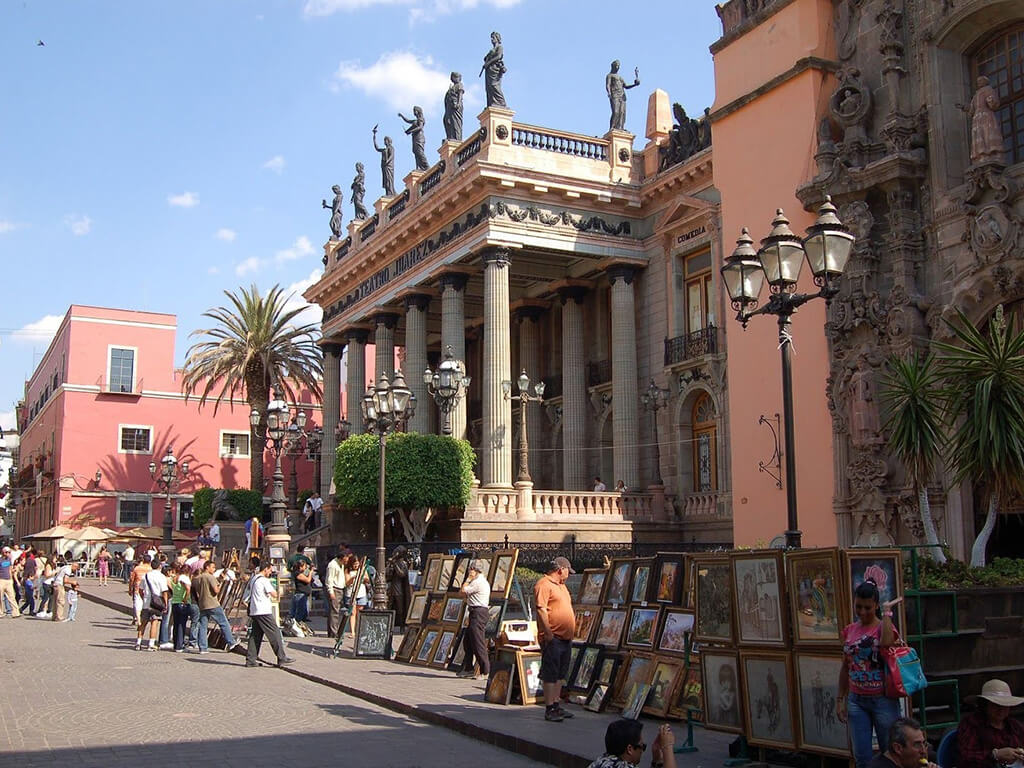
Key Areas of Concern: Delicias, Aldama, Babicora Sur.
Ciudad Juárez has been at the epicenter of the Mexican drug war. The city’s strategic location for drug trafficking has resulted in a persistent cycle of violence and crime. The mentioned neighborhoods are particularly known for high rates of homicides and gang violence, often caught in the crossfire of cartel disputes.
Tourist Targeted Risks: Violent theft, kidnapping, and hotel break-ins.
Ciudad Victoria
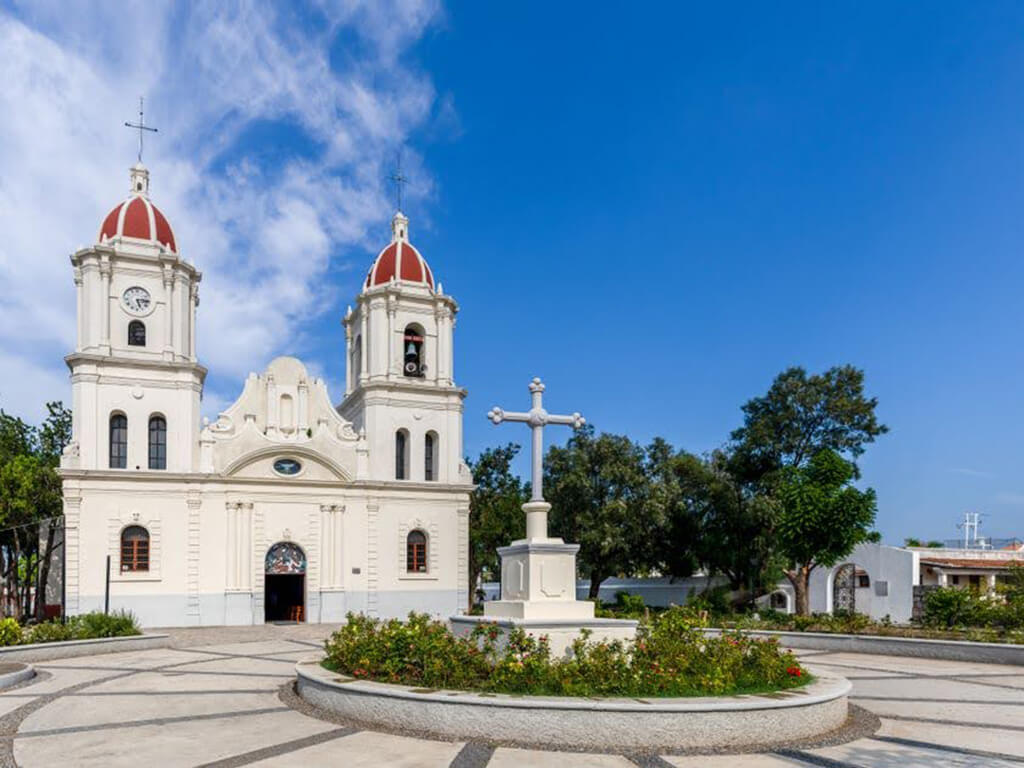
Key Areas of Concern: Northern Ciudad Victoria.
As the capital city of Tamaulipas, Ciudad Victoria is another hotspot for drug cartel activity. The entire northern sector of the city is especially dangerous due to its role as a transit point for drug smuggling, leading to frequent clashes between rival cartels and the military.
Tourist Targeted Risks: Drug-related violence, kidnapping, and frequent clashes in public areas.
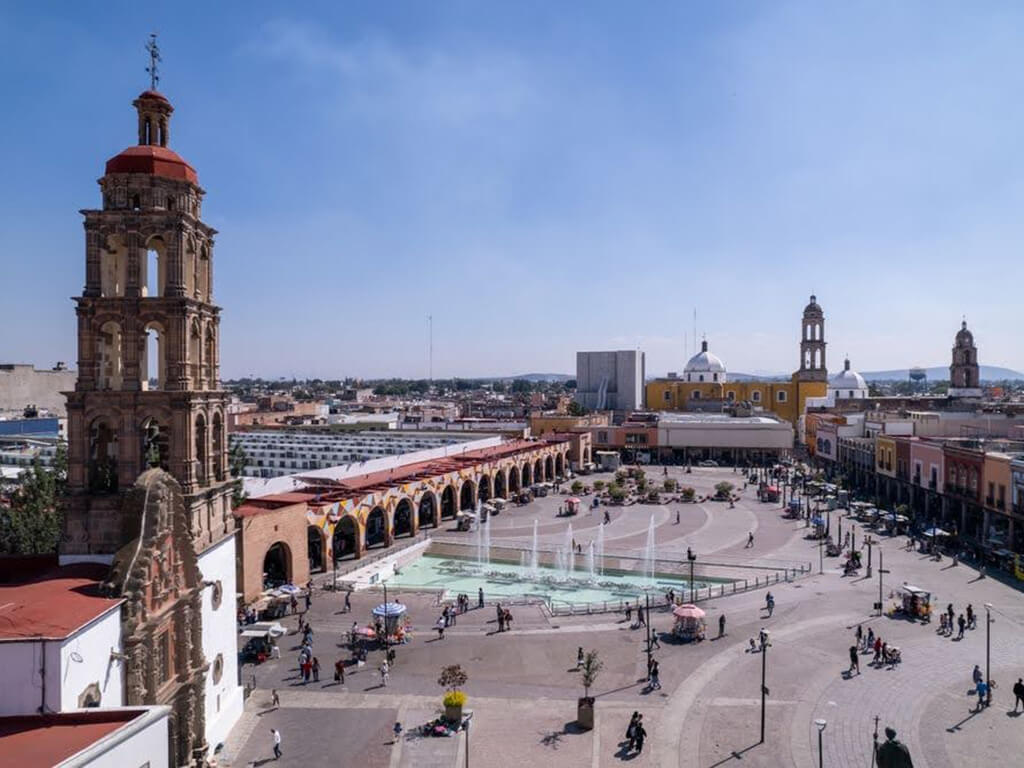
Key Areas of Concern: Central Irapuato.
Irapuato’s recent surge in violent crime is largely attributed to the turf wars between rival drug cartels. Central Irapuato has become notorious for incidents of public shootings and kidnappings, making it a risky area for unwary visitors.
Tourist Targeted Risks: Petty theft, violent crime related to turf wars between cartels, and risks of kidnappings at tourist spots.
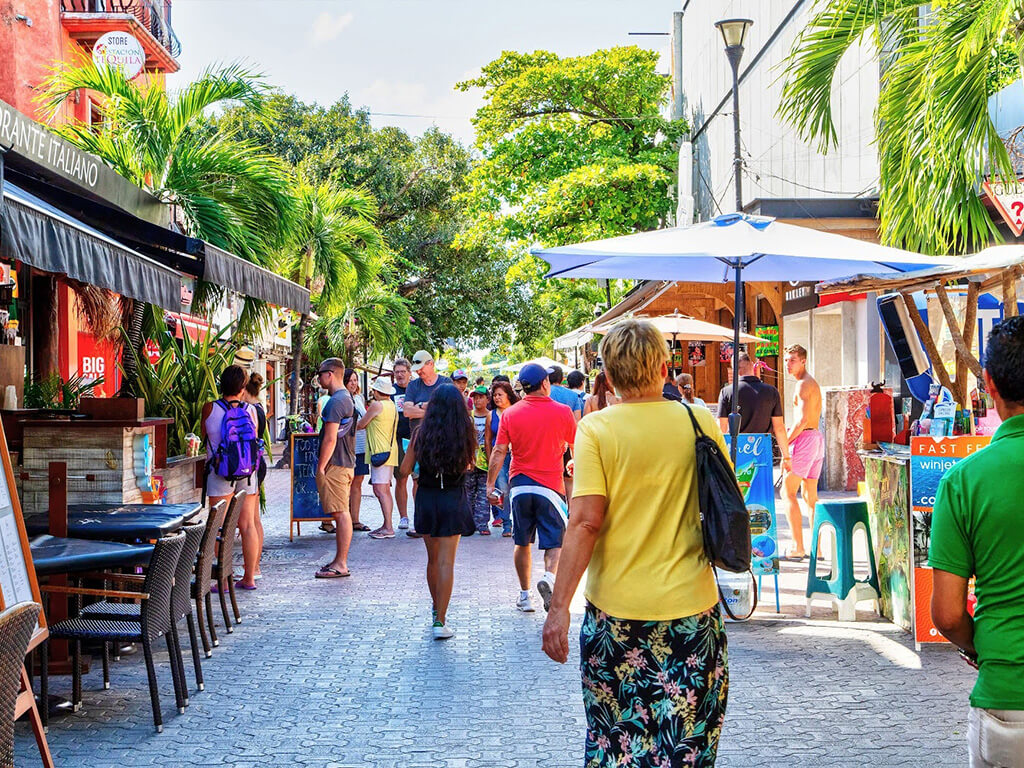
Key Areas of Concern: Bonfil, Tres Reyes, Santa Cecilia.
Beyond the controlled environments of all-inclusive resorts, Cancun’s less frequented neighborhoods experience a different reality. Areas like Bonfil and Tres Reyes see a high rate of violent crimes, particularly at night, and are considered unsafe for tourists and locals alike.
Tourist Targeted Risks: Overcharging in bars and restaurants, beach theft, taxi scams, and occasional violent muggings, especially late at night outside of the hotel zones.
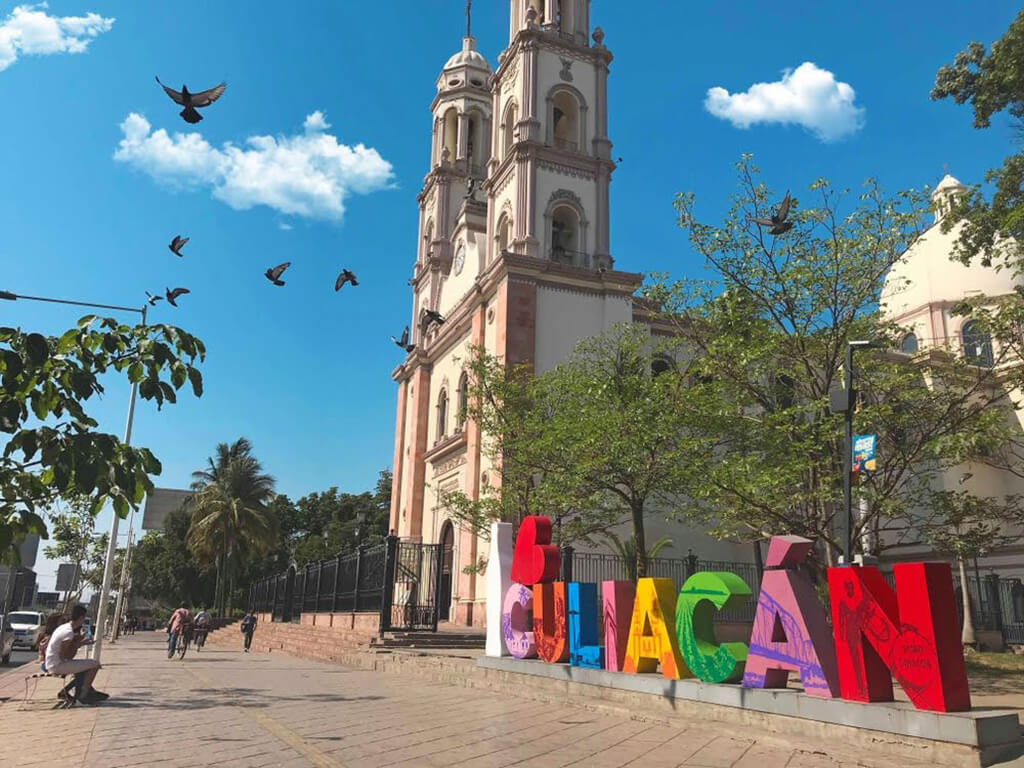
Key Areas of Concern: La Retama, El Cóporo, El Seminario.
Culiacán, the stronghold of the Sinaloa Cartel, is fraught with crime related to drug trafficking. The neighborhoods of La Retama and El Cóporo are particularly dangerous, with frequent violent confrontations and high-profile criminal activity.
Tourist Targeted Risks: Armed robbery, aggressive panhandling, and the presence of cartel activity even in areas frequented by tourists.
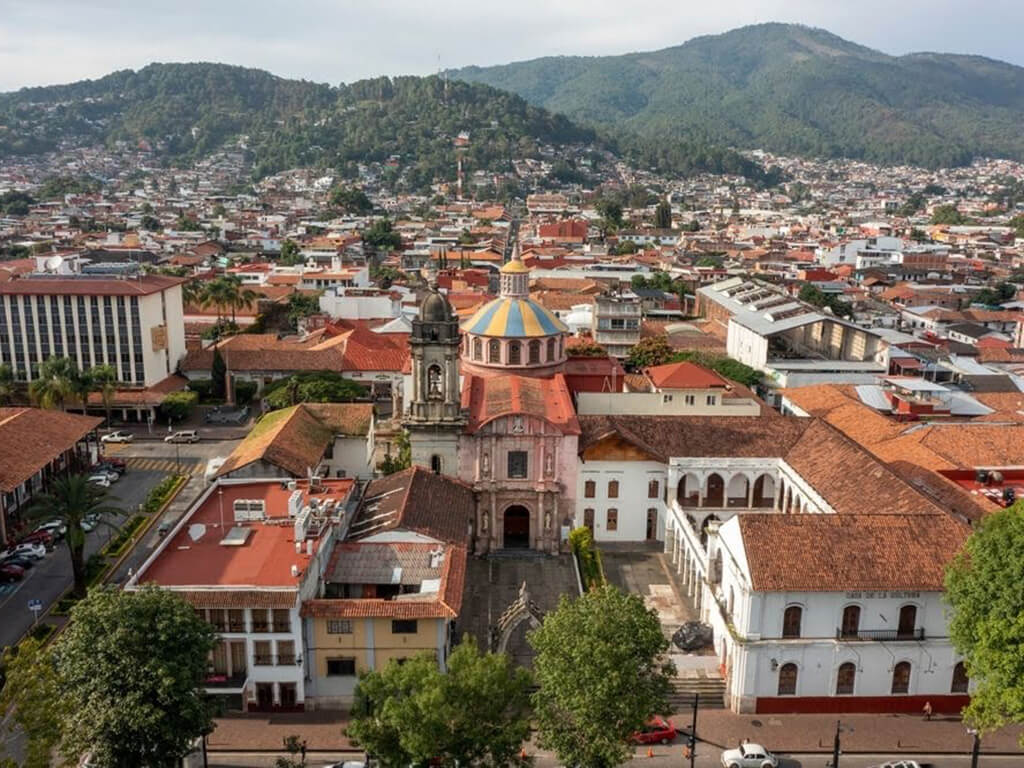
Key Areas of Concern: Central and South Uruapan.
Uruapan has witnessed a drastic increase in violent crimes, primarily due to its strategic importance in avocados and drug trade routes. The central and southern parts of the city are often scenes of cartel-related violence, making them highly unsafe.
Tourist Targeted Risks: Street-level crime including muggings and theft, especially near tourist landmarks and in less policed areas of the city.
Ciudad Obregón
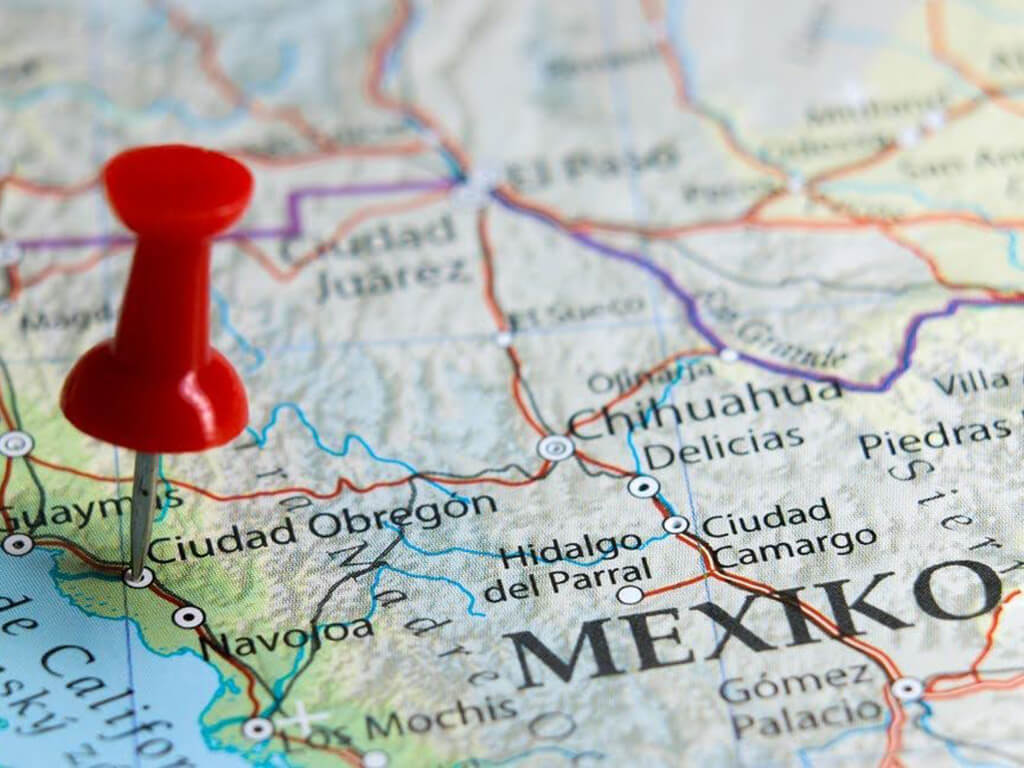
Key Areas of Concern: North (toward the border).
This city in the state of Sonora has become increasingly violent due to its role in the drug trade route. The northern areas, closer to the U.S. border, are particularly affected, with a high incidence of kidnappings and shootings.
Tourist Targeted Risks: High incidence of gang-related violence, risk of being caught in crossfire, and prevalent vehicle theft.
Coatzacoalcos
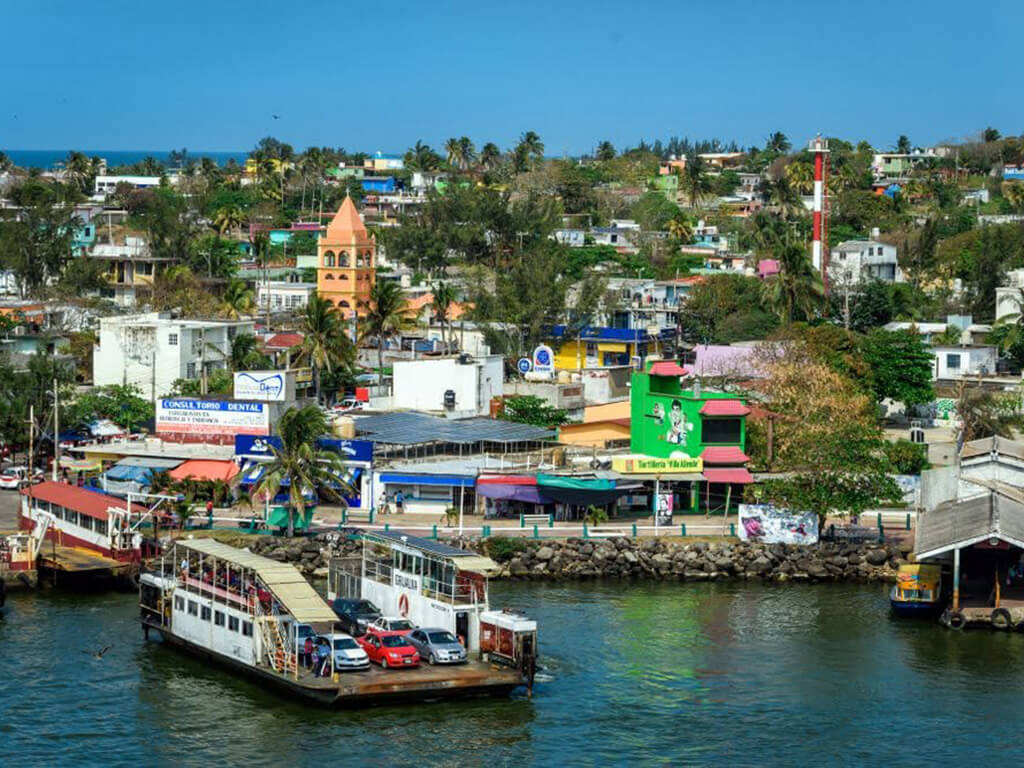
Key Areas of Concern: La Bahía de San Martín, U. Habitacional ISSFAM, Cxala.
Situated on the Gulf of Mexico, Coatzacoalcos has been under the influence of drug cartels for decades. The city’s port status makes it a key point for drug trafficking, leading to significant crime rates in its neighborhoods, especially after dark.
Tourist Targeted Risks: Petty theft, credit card fraud, and violent crime such as armed robbery, particularly in less tourist-friendly neighborhoods.
Final Thoughts
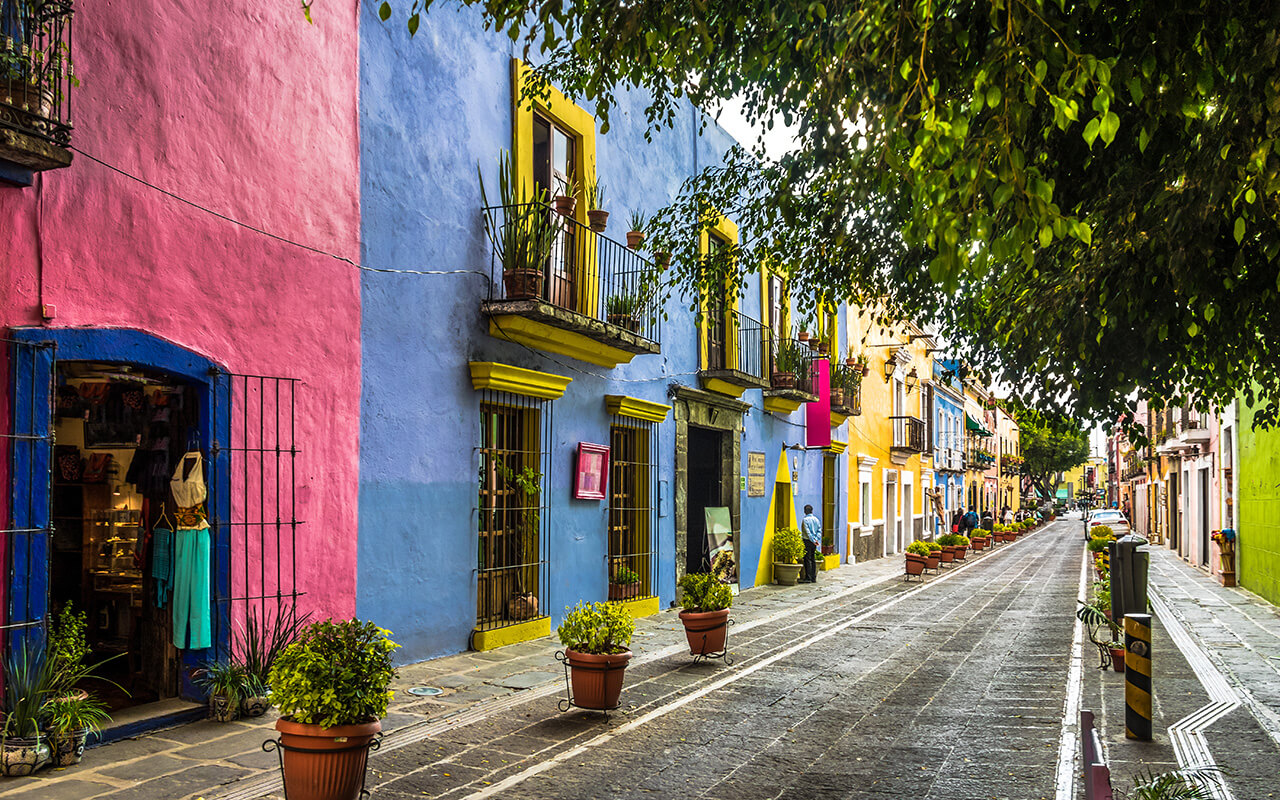
In exploring the vibrant and diverse landscapes of Mexico, it’s crucial to consider both the safest retreats and the areas that pose more significant risks. While cities like Mérida and Puerto Vallarta offer tranquil havens with rich cultures and low crime rates, travelers should remain aware of the most dangerous cities in Mexico for tourists. These include well-known spots like Tijuana and Acapulco, which are notorious for their higher crime rates.
Whether you’re planning an adventure to the tranquil beaches of Cozumel or navigating the bustling streets of Mexico City, proper preparation is key. Check out our destination guides for more travel tips, travel hacks, and travel hacking strategies to ensure your trip is as safe as it is memorable.
15 Places In Mexico That Are Just Plain Dangerous (And 7 That Are Super Safe)

Your changes have been saved
Email is sent
Email has already been sent
Please verify your email address.
You’ve reached your account maximum for followed topics.
These 10 Underrated Florida Beach Towns Are A Great Alternative To The Keys
10 state parks in arizona known for scenic campsites, 10 additional scenic stops to make if you're visiting the grand canyon, read update.
More of Safe Places To Visit In Mexico (Some That Are Just Plain Dangerous)
As the weather begins to turn colder and colder, many of us are dreaming of heading away to a tropical island to soak in the sun, swim in the ocean and enjoy some time away. Mexico is easily one of the biggest hot spots for vacationers during the cold winter months , and while it is one of the most beautiful beach destinations with many worth visiting resorts , there are some places not to go in Mexico.
Mexico has seen an exponential increase in travel warnings due to everything from violence and crime to corruption, many of which are targeted towards tourists. Although some places are off-limits, there are a number of areas that are still safe and worth visiting. Here are 15 places to avoid in Mexico, and 7 that are super safe!
UPDATE: 2023/06/22 13:23 EST BY REENA JAIN
Although there are stigmas surrounding certain parts of Mexico claiming they are unsafe for foreign tourists due to a variety of factors, there are plenty of beautiful and safe places in Mexico that make it one of the most popular countries to visit in the world. The list has been updated to include two more safe places to visit in Mexico to help travelers select their next vacation destination, as well as photographs and updated information about the previous places listed as safe and where not to go in Mexico.
Related: 10 Most Beautiful Mountain Towns In Mexico You Should Visit
22 Super Safe: San Miguel de Allende - A Historical Marvel
The mesmerizing Mexican city of San Miguel de Allende is well known for its rich cultural heritage, vivacious art scene, and historical beauty . It has charming streets, old-world buildings, and a friendly vibe. Travelers may expect an enjoyable stay in the city due to its reputation for safety, low crime rates, and significant security presence.
- Places To Visit In San Miguel de Allende: Parroquia de San Miguel Arcángel, El Jardín, Fabrica La Aurora, Instituto Allende, El Charco del Ingenio, Museo Casa de Allende
- Best Time To Visit San Miguel de Allende: December to April
21 Super Safe: Merida - A City Of Beautiful Architecture
The city of Merida in Mexico has a vibrant culture, a long history, and beautiful architecture. Its low crime rate and inviting environment make it one of the safest places to visit in Mexico. Visitors can discover the colonial charm, archaeological sites, delectable cuisine, and exciting events. The Puuc Route, just a short drive from Merida, has numerous incredibly rewarding Mayan sights , making it a must-see destination for all history fans.
- Places To Visit In Merida: Plaza Grande (Main Square), Paseo de Montejo (Montejo Avenue), Uxmal Archaeological Site, Hacienda Sotuta de Peón, Cenote Xlacah, Dzibilchaltún Archaeological Site
- Best Time To Visit Merida: December to March
20 Super Safe: Cancun - Beach-Side Paradise
Cancun Mexico is without a doubt a spot that one would benefit immensely from visiting! Not only is it much safer than other resort cities, but it offers some of the most beautiful beaches, including Punta Maroma, one of the best Cancun beaches to visit in 2023 , one of the best Cancun beaches to visit in 2023. According to 10 Best , Cancun is home to Playa Delfines (Dolphin Beach), which is known to be among the most beautiful in the world.
- Places To Visit In Cancun: Chichen Itza, Tulum, Xcaret Park, Isla Mujeres, Playa del Carmen, Cozumel
- Best Time To Visit Cancun: December to April
19 Super Safe: Mexico City - Cultural Hub
Mexico City not only serves as the capital of Mexico, but it is a cultural hub! The thriving city is full of history, culture, music, shopping, and delicious food, says Matador Network . There is so much to do in the city after dark , making it a hub for nightlife lovers. Mexico City is the best option for a complete experience if this is the kind of travel that appeals to someone who wants to experience everything that Mexico has to offer.
- Places To Visit In Mexico City: Palacio de Bellas Artes, Teotihuacan, Frida Kahlo Museum (Museo Frida Kahlo), Zocalo, Chapultepec Park (Parque Chapultepec), Xochimilco
- Best Time To Visit Mexico City: Between March and May
18 Super Safe: Puebla City - History & Architecture Galore
Puebla is a hidden gem in Mexico that offers the best of both worlds ! If you're looking to get some beautiful photos of Mexican architecture and stunning views, then Puebla is the place for you! According to Rusty Travel Trunk , the city itself is worth visiting purely because of its buildings and gorgeous architecture.
- Places To Visit In Puebla City: Zócalo (Main Square), Puebla Cathedral, Cholula Archaeological Zone, Rosary Chapel (Capilla del Rosario), Amparo Museum (Museo Amparo), Great Pyramid of Cholula
- Best Time To Visit Puebla City: January to March
17 Super Safe: Tulum - Where Adventure Awaits
Tulum is located on the Carribean coastline in Mexico and is easily the best spot for young travelers wanting to explore the country in all its glory. The resort city is a worth-visiting Mexican destination for many reasons for its travelers, many of whom arrive by cruise ship, and it has some of the top Mexican archeological sites in the country.
- Places To Visit In Tulum: Tulum Ruins, Playa Paraiso (Paradise Beach), Gran Cenote, Tulum National Park, Coba Ruins, Sian Ka'an Biosphere Reserve
- Best Time To Visit Tulum: Between November and December
Related: Discovering Tulum's Hidden Past: 10 Fascinating Facts About Its Ruins
16 Super Safe: Puerto Vallarta - Rest, Relax & Rejuvenate
Puerto Vallarta is a dreamy Mexican beach town with lots to see and do on Pacific coast in Jalisco. It is mostly known for its beautiful beaches, water sports, and thriving nightlife scene. Travelers who want to experience an array of adventure, partying, and history, should definitely visit Puerto Vallarta, says Global Guide .
- Places To Visit In Puerto Vallarta: Malecon, Los Muertos Beach, El Malecon Sculpture Trail, Banderas Bay, Islas Marietas National Park, Zona Romantica
- Best Time To Visit Puerto Vallarta: Between April and June
15 Mazatlan - Don't Venture Out Alone At Night
Mazatlan is a Mexican resort town along the Pacific shoreline in the state of Sinaloa. While the sandy beaches might seem alluring, the city itself is a bit alarming. As one would advise travelers to any destination in the globe, do not expect perfect safety in the late hours, and adhere to the boundaries of tourist zones when alone while roaming around at night.
14 Ciudad Juárez - Increasing Crime Rate
Ciudad Juarez is a Mexican city located on the Rio Grande, which is just south of El Paso, Texas. The city is full of history and museums on the country's revolution, but it might be necessary to be a bit extra cautious to avoid any mishap or untoward incident. According to National Geographic , the city is witnessing a surge in crime that affects both locals and tourists.
13 Celaya - State-Wide Corruption
Celaya is a busy city within central Mexico, located northwest of the country's capital, Mexico City. While it's known for its grand colonial buildings and architecture, the city itself is quite corrupt. According to RefWorld, there is an abundance of bribery and corruption occurring in Celaya, therefore travellers should take extra precautions to avoid scams while visiting.
12 Coatzacoalcos - Travelers May Feel Unsafe
Coatzacoalcos is one of the major port cities in the northern part of the Mexican state of Veracruz. While the city offers spectacular beach views and a shoreline that spans for miles, it is not considered a safe place for tourists! Not only would tourists feel unsafe, but locals do too! According to Mexico News Daily , the city has increased its military and security troops, which has improved the situation and increased security for both residents and tourists.
11 Acapulco - Dangerous Outside Of Resorts
Acapulco is easily one of the most recognizable beach resort towns in Mexico. The city is located on Mexico's Pacific coast and is famously known for its beautiful cliffs and Sierra Madre del Sur mountains. Despite the city's thriving resort industry, Fox News advises travellers to limit their enjoyment within the resort's boundaries for their safety, particularly given the city's substantial number of mysterious incidents.
10 Tepic - Travel Advisory
Tepic is the capital of Nayarit state in western Mexico. The city is most known for its neo-Gothic Tepic Cathedral and numerous museums with loads of pre-Hispanic artifacts. The US Department of State has issued a travel advisory for the city due to some crimes; the city is still enticing as long as travelers adhere to some basic safety precautions, just like they would in any other foreign location.
9 Uruapan - Spike In Cartel Crimes
Uruapan is the second-largest city in the Mexican state of Michoacan. Located at the western edge of the country, Uruapan is known to be quite an important city economically due to its location. While it serves an important purpose, it also serves as one of the cartel capitals in the country, says Mexico News Daily . So, it is advised to be wary of anyone who appears suspicious or euphoric while traveling.
8 Culiacán - Cartel Overtook The Military
Culiacan is located in the northwestern regions of Mexico. It is both the largest city and capital of the state of Sinaloa. This particular state is known for its cartel involvement, so much that it overtook the military in Culiacan and wreaked havoc upon the city, says Time, making it a clear spot to avoid!
7 Tijuana - High Homicide Rate
Tijuana is a border city in Mexico, located just south of California. With recent events transpiring between the United States and Mexico, Tijuana is not a spot you'd want to venture off to right now. According to worldpopulationreview.com , the city is among one of the most dangerous in the world due to homicides.
6 Irapuato - Rival Cartel Groups
Irapuato is a Mexican town located at the foot of the Arandas Hill, in the central area of the state of Guanajuato. The town lays between two rivers and offers a lot of Mexican culture and history, making it an enticing destination to visit. According to Mexican News Daily , Guanajuato is home to 11 major criminal groups, many of which clash and create a lot of problems within the state and nearby towns, so a point to consider before planning a trip.
Related: Desert Landscapes To Cultural Gems: The 10 Best Places To See In New Mexico
5 Reynosa - Tourists Must Be Very Cautious
Reynosa is yet another border city in the northern part of the state of Tamaulipas, in Mexico. The city borders the state of Texas and serves as a crossing point between the Mexico and U.S. border. According to Dallas News , Reynosa and other border cities are major cartel spots as they live to prey on migrants coming in and out of the country! Definitely, the city is one of the most dangerous places in Mexico to avoid!
4 Ciudad Obregón - Unsafe For Non-Locals
Ciudad Obregon is the second-largest city in the northern Mexican state of Sonora. This city is also located close to the United States and Mexico border in the U.S. state of Arizona. The city is not the safest for tourists and was named as one of the top 50 most dangerous and violent cities in the world, according to Business Insider.
3 Chihuahua - Highest "Do Not Travel" Warning In All Of Mexico
Chihuahua City is the capital of the northwestern Mexican state of Chihuahua. It is known for its Baroque Cathedral and home to countless historic Mexican events, however, it is currently the highest "do no travel" city in all of Mexico. According to USA Today , Chihuahua City is under a significant security alert, making it one of the sites on the list of places not to go in Mexico.
- Destinations
Security Alert May 17, 2024
Worldwide caution.
- Travel Advisories |
- Contact Us |
- MyTravelGov |
Find U.S. Embassies & Consulates
Travel.state.gov, congressional liaison, special issuance agency, u.s. passports, international travel, intercountry adoption, international parental child abduction, records and authentications, popular links, travel advisories, mytravelgov, stay connected, legal resources, legal information, info for u.s. law enforcement, replace or certify documents.
Share this page:
Mexico Travel Advisory
Travel advisory august 22, 2023, mexico - see state summaries.
Reissued after periodic review with general security updates, and the removal of obsolete COVID-19 page links.
Country Summary: Violent crime – such as homicide, kidnapping, carjacking, and robbery – is widespread and common in Mexico. The U.S. government has limited ability to provide emergency services to U.S. citizens in many areas of Mexico, as travel by U.S. government employees to certain areas is prohibited or restricted. In many states, local emergency services are limited outside the state capital or major cities.
U.S. citizens are advised to adhere to restrictions on U.S. government employee travel. State-specific restrictions are included in the individual state advisories below. U.S. government employees may not travel between cities after dark, may not hail taxis on the street, and must rely on dispatched vehicles, including app-based services like Uber, and regulated taxi stands. U.S. government employees should avoid traveling alone, especially in remote areas. U.S. government employees may not drive from the U.S.-Mexico border to or from the interior parts of Mexico, except daytime travel within Baja California and between Nogales and Hermosillo on Mexican Federal Highway 15D, and between Nuevo Laredo and Monterrey on Highway 85D.
Read the country information page for additional information on travel to Mexico.
Do Not Travel To:
- Colima state due to crime and kidnapping .
- Guerrero state due to crime .
- Michoacan state due to crime and kidnapping .
- Sinaloa state due to crime and kidnapping
- Tamaulipas state due to crime and kidnapping.
- Zacatecas state due to crime and kidnapping .
Reconsider Travel To:
- Baja California state due to crime and kidnapping .
- Chihuahua state due to crime and kidnapping .
- Durango state due to crime .
- Guanajuato state due to crime and kidnapping .
- Jalisco state due to crime and kidnapping .
- Morelos state due to crime .
- Sonora state due to crime and kidnapping .
Exercise Increased Caution When Traveling To:
- Aguascalientes state due to crime .
- Baja California Sur state due to crime .
- Chiapas state due to crime .
- Coahuila state due to crime .
- Hidalgo state due to crime .
- Mexico City due to crime .
- Mexico State due to crime .
- Nayarit state due to crime.
- Nuevo Leon state due to crime and kidnapping .
- Oaxaca state due to crime .
- Puebla state due to crime and kidnapping .
- Queretaro state due to crime .
- Quintana Roo state due to crime .
- San Luis Potosi state due to crime and kidnapping .
- Tabasco state due to crime .
- Tlaxcala state due to crime .
- Veracruz state due to crime .
Exercise Normal Precautions When Traveling To:
- Campeche state
- Yucatan state
Visit our website for Travel to High-Risk Areas .
If you decide to travel to Mexico:
- Keep traveling companions and family back home informed of your travel plans. If separating from your travel group, send a friend your GPS location. If taking a taxi alone, take a photo of the taxi number and/or license plate and text it to a friend.
- Use toll roads when possible and avoid driving alone or at night. In many states, police presence and emergency services are extremely limited outside the state capital or major cities.
- Exercise increased caution when visiting local bars, nightclubs, and casinos.
- Do not display signs of wealth, such as wearing expensive watches or jewelry.
- Be extra vigilant when visiting banks or ATMs.
- Enroll in the Smart Traveler Enrollment Program (STEP) to receive Alerts and make it easier to locate you in an emergency.
- Follow the Department of State on Facebook and Twitter .
- Follow the U.S. Embassy on Facebook and Twitter .
- Review the Country Security Report for Mexico.
- Mariners planning travel to Mexico should check for U.S. maritime advisories and alerts , which include instructions on reporting suspicious activities and attacks to Mexican naval authorities.
- Prepare a contingency plan for emergency situations. Review the Traveler’s Checklist .
- Visit the CDC page for the latest travel health information related to your travel.
Aguascalientes state – Exercise Increased Caution
Exercise increased caution due to crime.
Criminal activity and violence may occur throughout the state.
There are no restrictions on travel for U.S. government employees in Aguascalientes state.
Baja California state – Reconsider Travel
Reconsider travel due to crime and kidnapping.
Transnational criminal organizations compete in the border area to establish narco-trafficking and human smuggling routes. Violent crime and gang activity are common. Travelers should remain on main highways and avoid remote locations. Of particular concern is the high number of homicides in the non-tourist areas of Tijuana. Most homicides appeared to be targeted; however, criminal organization assassinations and territorial disputes can result in bystanders being injured or killed. U.S. citizens and LPRs have been victims of kidnapping.
U.S. government employees must adhere to the noted restrictions:
- Mexicali Valley: U.S. government employees should avoid the Mexicali Valley due to the heightened possibility of violence between rival cartel factions. The boundaries of the restricted area are: to the east, the Baja California/Arizona and Baja California/Sonora borders; to the south, from La Ventana (on Highway 5) due east to the Colorado River; to the west, Highway 5; and to the north, Boulevard Lazaro Cardenas/Highway 92/Highway 1 to Carretera Aeropuerto, from the intersection of Highway 1 and Carretera Aeropuerto due north to the Baja California/California border, and from that point eastward along the Baja California/California border.
- Travelers may use Highways 2 and 2D to transit between Mexicali, Los Algodones, and San Luis Rio Colorado during daylight hours. Travelers may also use Highways 1 and 8 to transit to and from the Mexicali Airport during daylight hours. Travel on Highway 5 is permissible during daylight hours.
There are no other travel restrictions for U.S. government employees in Baja California state. These include high-traffic tourism areas of border and coastal communities, such as Tijuana , Ensenada , and Rosarito .
Baja California Sur state – Exercise Increased Caution
There are no restrictions on travel for U.S. government employees in Baja California Sur state.
Campeche state – Exercise Normal Precautions
Exercise normal precautions.
There are no restrictions on travel for U.S. government employees in Campeche state.
Chiapas state – Exercise Increased Caution
Exercise increased caution due to crime.
Criminal activity and violence may occur throughout the state.
U.S. government employees may not travel to the following restricted areas. All areas within the boundaries, including highway and roads unless specifically exempted, are restricted.
East-Northeast Boundary – The eastern boundary follows the Mexican-Guatemalan border from the southern point on the Pacific coast, along the border, to the northern end point east of Netzahualcóyotl.
Northern Boundary - From Netzahualcóyotl in a straight line southwest towards the northern limit of Ocosingo.
Western Boundary - From Ocosingo in a straight line south to El Ocote. From El Ocote in a straight line west to San Francisco Pujiltic. From San Franciso Pujiltic southwest to just north of Mapastepec.
South-Southwest Boundary - Highway 200 from Mapastepec to Tapachula. All towns along this highway are not restricted. The area to the north of highway 200 defines the southern boundary of the restricted area. From Tapachula, the restricted area boundary is north and east of the city limits and then extends southeast to the Pacific coast at Tres Hermanos San Isidro.
Tapachula – Travel to Tapachula and within the city limits is not restricted. Highway 225, from Port Chiapas to Tapachula, to include the Tapachula Airport, is not restricted.
To view a map of the restricted areas, visit https://mx.usembassy.gov/maps-of-restricted-areas
Chihuahua state – Reconsider Travel
Violent crime and gang activity are common. Most homicides are targeted assassinations against members of criminal organizations. Battles for territory between criminal groups have resulted in violent crime in areas frequented by U.S. citizens and U.S. government employees, including restaurants and malls during daylight hours. Bystanders have been injured or killed in shooting incidents. U.S. citizens and LPRs have been victims of kidnapping.
U.S. government employee travel is limited to the following areas with the noted restrictions:
- Ciudad Juarez: U.S. government employees may travel to the area of Ciudad Juarez bounded to the east by Bulevar Independencia; to the south by De los Montes Urales/Avenida Manuel J Clouthier/Carretera de Juárez; to the west by Via Juan Gabriel/Avenida de los Insurgentes/Calle Miguel Ahumada/Francisco Javier Mina/Melchor Ocampo; and to the north by the U.S.-Mexico border. Direct travel to the Ciudad Juarez airport (officially called the Abraham González International Airport) and the factories located along Bulevar Independencia and Las Torres is permitted. Travel to San Jerónimo is permitted only through the United States via the Santa Teresa U.S. Port of Entry; travel via Anapra is prohibited.
U.S. government employees may only travel from Ciudad Juarez to the city of Chihuahua during daylight hours via Federal Highway 45, with stops permitted only at the Guardia Nacional División Caminos station, the Umbral del Milenio overlook area, the border inspection station at KM 35, and the shops and restaurants on Federal Highway 45 in the city of Ahumada.
- U.S. government employees may travel between Ciudad Juarez and Ascension via Highway 2.
- Nuevo Casas Grandes Area (including Nuevo Casas Grandes, Casas Grandes, Mata Ortiz, Colonia Juárez, Colonia LeBaron, Paquimé and San Buenaventura): U.S. government employees may travel to the Nuevo Casas Grandes area during daylight hours via Mexico Federal Highway 2, and subsequently Federal Highway 10, to Nuevo Casas Grandes. Employees are permitted to stay overnight in the cities of Nuevo Casas Grandes and Casas Grandes only.
- City of Chihuahua: U.S. government employees may travel at any time to the area of the city of Chihuahua bounded to the north by Avenida Transformación; to the east by Avenida Tecnológico/Manuel Gómez Morín/Highway 16/Blvd.José Fuentes Mares; to the west by the city boundary; and to the south by Periférico Francisco R. Almada.
- U.S. government employees may travel on Highways 45, 16, and 45D through the city of Chihuahua and to the Chihuahua airport (officially called the General Roberto Fierro Villalobos International Airport).
- U.S. government employees may travel to Santa Eulalia to the east of the city of Chihuahua, as well as to Juan Aldama via Highway 16 to the northeast.
- U.S. government employees may travel south of the city of Chihuahua on Highway 45 to the southern boundary of Parral, including each town directly connected to Highway 45, including Lázaro Cárdenas, Pedro Meoqui, Santa Cruz de Rosales, Delicias, Camargo, Ciudad Jiménez, and Parral itself.
- U.S. government employees may only travel on official business from the city of Chihuahua on Highway 16 to Ciudad Cuauhtémoc bounded by Highway 21 to the north and east, Highway 5 to the west, and Bulevar Jorge Castillo Cabrera to the south.
- Ojinaga: U.S. government employees must travel to Ojinaga via U.S. Highway 67 and enter through the U.S. Port of Entry in Presidio, Texas.
- Palomas: U.S. government employees may travel to Palomas via U.S. highways through the U.S. Port of Entry in Columbus, New Mexico, or via Highway 2 in Mexico.
U.S. government employees may not travel to other areas of Chihuahua, including Copper Canyon .
Coahuila state – Exercise Increased Caution
Violent crime and gang activity occur in parts of Coahuila state.
U.S. government employees must adhere to the following travel restrictions:
- Zaragoza, Morelos, Allende, Nava, Jimenez, Villa Union, Guerrero, and Hidalgo municipalities : U.S. government employees may not travel to these municipalities.
- Piedras Negras and Ciudad Acuña: U.S. government employees must travel directly from the United States and observe a curfew from midnight to 6:00 a.m. in both cities.
There are no other restrictions on travel for U.S. government employees in Coahuila state.
Colima state – Do Not Travel
Do not travel due to crime and kidnapping.
Violent crime and gang activity are widespread. Most homicides are targeted assassinations against members of criminal organizations. Shooting incidents between criminal groups have injured or killed bystanders. U.S. citizens and LPRs have been victims of kidnapping.
Travel for U.S. government employees is limited to the following areas with noted restrictions:
- Manzanillo: U.S. government employee travel is limited to the tourist and port areas of Manzanillo.
- Employees traveling to Manzanillo from Guadalajara must use Federal Toll Road 54D during daylight hours.
U.S. government employees may not travel to other areas of Colima state.
Durango state – Reconsider Travel
Reconsider travel due to crime.
Violent crime and gang activity are common in parts of Durango state.
- West and south of Federal Highway 45: U.S. government employees may not travel to this region of Durango state.
There are no other restrictions on travel for U.S. government employees in Durango state.
Guanajuato state – Reconsider Travel
Gang violence, often associated with the theft of petroleum and natural gas from the state oil company and other suppliers, occurs in Guanajuato, primarily in the south and central areas of the state. Of particular concern is the high number of murders in the southern region of the state associated with cartel-related violence. U.S. citizens and LPRs have been victims of kidnapping.
- Areas south of Federal Highway 45D: U.S. government employees may not travel to the area south of and including Federal Highway 45D, Celaya, Salamanca, and Irapuato.
There are no other restrictions on travel for U.S. government employees in Guanajuato state, which includes tourist areas in: San Miguel de Allende , Guanajuato City , and surrounding areas.
Guerrero state – Do Not Travel
Do not travel due to crime.
Crime and violence are widespread. Armed groups operate independently of the government in many areas of Guerrero. Members of these groups frequently maintain roadblocks and may use violence towards travelers. U.S. citizens and LPRs have been victims of kidnapping in previous years.
Travel for U.S. government employees is limited to the following area with the noted restrictions:
- Taxco: U.S. government employees must use Federal Highway 95D, which passes through Cuernavaca, Morelos, and stay within downtown tourist areas of Taxco. Employees may visit Grutas de Cacahuamilpa National Park during the day with a licensed tour operator.
U.S. government employees may not travel to other areas of the state of Guerrero, including to tourist areas in Acapulco , Zihuatanejo , and Ixtapa .
Hidalgo state – Exercise Increased Caution
There are no restrictions on travel for U.S. government employees in Hidalgo state.
Jalisco state – Reconsider Travel
Violent crime and gang activity are common in parts of Jalisco state. In Guadalajara, territorial battles between criminal groups take place in tourist areas. Shooting incidents between criminal groups have injured or killed innocent bystanders. U.S. citizens and LPRs have been victims of kidnapping.
- Jalisco-Michoacan border and Federal Highway 110: U.S. government employees may not travel to the area between Federal Highway 110 and the Jalisco-Michoacan border, nor travel on Federal Highway 110 between Tuxpan, Jalisco, and the Michoacan border.
- Federal Highway 80: U.S. government employees may not travel on Federal Highway 80 south of Cocula.
There are no other restrictions on travel for U.S government employees in Jalisco state which includes tourist areas in: Guadalajara Metropolitan Area , Puerto Vallarta (including neighboring Riviera Nayarit) , Chapala , and Ajijic .
Mexico City (Ciudad de Mexico) – Exercise Increased Caution
Both violent and non-violent crime occur throughout Mexico City. Use additional caution, particularly at night, outside of the frequented tourist areas where police and security patrol more routinely. Petty crime occurs frequently in both tourist and non-tourist areas.
There are no restrictions on travel for U.S. government employees in Mexico City.
Mexico State (Estado de Mexico) – Exercise Increased Caution
Both violent and non-violent crime occur throughout Mexico State. Use additional caution in areas outside of the frequented tourist areas, although petty crime occurs frequently in tourist areas as well.
There are no restrictions on travel for U.S. government employees in Mexico State.
Michoacan state – Do Not Travel
Do not travel due to crime and kidnapping.
Crime and violence are widespread in Michoacan state. U.S. citizens and LPRs have been victims of kidnapping.
Travel for U.S. government employees is limited to the following areas with the noted restrictions:
- Federal Highway 15D: U.S. government employees may travel on Federal Highway 15D to transit the state between Mexico City and Guadalajara.
- Morelia: U.S. government employees may travel by air and by land using Federal Highways 43 or 48D from Federal Highway 15D.
- Lazaro Cardenas: U.S. government employees must travel by air only and limit activities to the city center or port areas.
U.S. government employees may not travel to other areas of the state of Michoacan, including the portions of the Monarch Butterfly Reserve located in Michoacan.
Morelos state – Reconsider Travel
Violent crime and gang activity are common in parts of Morelos state.
There are no restrictions on travel for U.S. government employees in Morelos state.
Nayarit state – Exercise Increased Caution
Criminal activity and violence may occur throughout Nayarit state.
There are no restrictions on travel for U.S government employees in Nayarit state.
Nuevo Leon state – Exercise Increased Caution
Exercise increased caution due to crime and kidnapping.
Criminal activity and violence may occur throughout the state. U.S. citizens and LPRs have been victims of kidnapping.
There are no restrictions on travel for U.S. government employees in Nuevo Leon state.
Oaxaca state – Exercise Increased Caution
Criminal activity and violence occur throughout the state.
U.S. travelers are reminded that U.S. government employees must adhere to the following travel restrictions:
- Isthmus region: U.S. government employees may not travel to the area of Oaxaca bounded by Federal Highway 185D to the west, Federal Highway 190 to the north, and the Oaxaca-Chiapas border to the east. This includes the cities of Juchitan de Zaragoza, Salina Cruz, and San Blas Atempa.
- Federal Highway 200 northwest of Pinotepa: U.S. government employees may not use Federal Highway 200 between Pinotepa and the Oaxaca-Guerrero border.
There are no restrictions on travel for U.S. government employees to other parts of Oaxaca state, which include tourist areas in: Oaxaca City , Monte Alban , Puerto Escondido, and Huatulco .
Puebla state – Exercise Increased Caution
There are no restrictions on travel for U.S. government employees in Puebla state.
Queretaro state – Exercise Increased Caution
There are no restrictions on travel for U.S. government employees in Queretaro state.
Quintana Roo state – Exercise Increased Caution
Criminal activity and violence may occur in any location, at any time, including in popular tourist destinations. Travelers should maintain a high level of situational awareness, avoid areas where illicit activities occur, and promptly depart from potentially dangerous situations.
While not directed at tourists, shootings between rival gangs have injured innocent bystanders. Additionally, U.S. citizens have been the victims of both non-violent and violent crimes in tourist and non-tourist areas.
There are no restrictions on travel for U.S. government employees in Quintana Roo state. However, personnel are advised to exercise increased situational awareness after dark in downtown areas of Cancun, Tulum, and Playa del Carmen, and to remain in well-lit pedestrian streets and tourist zones.
San Luis Potosi state – Exercise Increased Caution
Criminal activity and violence may occur throughout the state. U.S. citizens and LPRs have been victims of kidnapping.
There are no restrictions on travel for U.S. government employees in San Luis Potosi state.
Sinaloa state – Do Not Travel
Violent crime is widespread. Criminal organizations are based in and operating in Sinaloa. U.S. citizens and LPRs have been victims of kidnapping.
- Mazatlan: U.S. government employees may travel to Mazatlan by air or sea only, are limited to the Zona Dorada and historic town center, and must travel via direct routes between these destinations and the airport and sea terminal.
- Los Mochis and Topolobampo: U.S. government employees may travel to Los Mochis and Topolobampo by air or sea only, are restricted to the city and the port, and must travel via direct routes between these destinations and the airport.
U.S. government employees may not travel to other areas of Sinaloa state.
Sonora state – Reconsider Travel
Sonora is a key location used by the international drug trade and human trafficking networks. Violent crime is widespread. U.S. citizens and LPRs have been victims of kidnapping. Travelers should maintain a heightened level of awareness of their surroundings in all their travels in Sonora. Security incidents may occur in any area of Sonora.
- Travel between Hermosillo and Nogales: U.S. government employees may travel between the U.S. Ports of Entry in Nogales and Hermosillo during daylight hours via Federal Highway 15 only. U.S. government employees may not use ANY taxi services, public buses, nor ride-share applications due to a lack of secure vetting and/or dispatching procedures. Travelers should exercise caution and avoid unnecessary stops as security incidents, including sporadic, armed carjackings, and shootings have been reported along this highway during daylight hours. Travelers should have a full tank of gas and inform friends or family members of their planned travel.
- Nogales: U.S. government employees may not travel in the triangular area north of Avenida Tecnologico, west of Bulevar Luis Donaldo Colosio (Periferico), nor east of Federal Highway 15D (Corredor Fiscal). U.S. government employees also may not travel in the residential and business areas to east of the railroad tracks along Plutarco Elias Calle (HWY 15) and Calle Ruiz Cortino, including the business area around the Morley pedestrian gate port-of-entry. U.S. government employees may not use ANY taxi services, public buses, nor ride-share applications in Nogales due to a lack of secure vetting and/or dispatching procedures and the danger of kidnapping and other violent crimes.
- Puerto Peñasco: U.S. government employees may travel between Puerto Peñasco and the Lukeville-Sonoyta U.S. Port of Entry during daylight hours via Federal Highway 8 only. They may not travel on any other route to Puerto Peñasco. U.S. government employees may not use ANY taxi services, public buses, nor ride-share applications in Puerto Peñasco. due to a lack of secure vetting and/or dispatching procedures and the danger of kidnapping and other violent crimes.
- Triangular region near Mariposa U.S. Port of Entry: U.S. government employees may not travel into or through the triangular region west of the Mariposa U.S. Port of Entry, east of Sonoyta, and north of Altar municipality.
- San Luis Rio Colorado, Cananea, and Agua Prieta : U.S. government employees may travel directly from the nearest U.S. Port of Entry to San Luis Rio Colorado, Cananea (via Douglas Port of Entry), and Agua Prieta, but may not go beyond the city limits. Travel is limited to daylight hours only. Travel between Nogales and Cananea via Imuris is not permitted. U.S. government employees may not use ANY taxi services, public buses, nor ride-share applications in these cities due to a lack of secure vetting and/or dispatching procedures and the danger of kidnapping and other violent crimes.
- Eastern and southern Sonora (including San Carlos Nuevo Guaymas and Alamos): U.S. government employees may not travel to areas of Sonora east of Federal Highway 17, the road between Moctezuma and Sahuaripa, and State Highway 20 between Sahuaripa and the intersection with Federal Highway 16. U.S. government employees may travel to San Carlos Nuevo Guaymas and Alamos; travel to Alamos is only permitted by air and within city limits. U.S. government employees may not travel to areas of Sonora south of Federal Highway 16 and east of Federal Highway 15 (south of Hermosillo), as well as all points south of Guaymas, including Empalme, Guaymas, Obregon, and Navojoa. U.S. government employees may not use ANY taxi services, public buses, nor ride-share applications in these areas due to a lack of secure vetting and/or dispatching procedures and the danger of kidnapping and other violent crimes.
U.S. government employees may travel to other parts of Sonora state in compliance with the above restrictions, including tourist areas in: Hermosillo , Bahia de Kino , and Puerto Penasco .
Tabasco state – Exercise Increased Caution
There are no restrictions on travel for U.S. government employees in Tabasco state.
Tamaulipas state – Do Not Travel
Organized crime activity – including gun battles, murder, armed robbery, carjacking, kidnapping, forced disappearances, extortion, and sexual assault – is common along the northern border and in Ciudad Victoria. Criminal groups target public and private passenger buses, as well as private automobiles traveling through Tamaulipas, often taking passengers and demanding ransom payments.
Heavily armed members of criminal groups often patrol areas of the state and operate with impunity particularly along the border region from Reynosa to Nuevo Laredo. In these areas, local law enforcement has limited capacity to respond to incidents of crime. Law enforcement capacity is greater in the tri-city area of Tampico, Ciudad Madero, and Altamira, which has a lower rate of violent criminal activity compared to the rest of the state.
U.S. citizens and LPRs have been victims of kidnapping.
- Matamoros and Nuevo Laredo: U.S. government employees may only travel within a limited radius around and between the U.S. Consulates in Nuevo Laredo and Matamoros, their homes, the respective U.S. Ports of Entry, and limited downtown sites, subject to an overnight curfew.
- Overland travel in Tamaulipas: U.S. government employees may not travel between cities in Tamaulipas using interior Mexican highways. Travel between Nuevo Laredo and Monterrey is limited to Federal Highway 85D during daylight hours with prior authorization.
U.S. government employees may not travel to other parts of Tamaulipas state.
Tlaxcala state – Exercise Increased Caution
There are no restrictions on travel for U.S. government employees in Tlaxcala state.
Veracruz state – Exercise Increased Caution
Violent crime and gang activity occur with increasing frequency in Veracruz, particularly in the center and south near Cordoba and Coatzacoalcos. While most gang-related violence is targeted, violence perpetrated by criminal organizations can affect bystanders. Impromptu roadblocks requiring payment to pass are common.
There are no restrictions on travel for U.S. government employees in Veracruz state.
Yucatan state – Exercise Normal Precautions
There are no restrictions on travel for U.S. government employees in Yucatan state, which include tourist areas in: Chichen Itza , Merida , Uxmal , and Valladolid .
Zacatecas state – Do Not Travel
Violent crime, extortion, and gang activity are widespread in Zacatecas state. U.S. citizens and LPRs have been victims of kidnapping.
- Zacatecas City : U.S. government employee travel is limited to Zacatecas City proper, and employees may not travel overland to Zacatecas City.
- U.S. government employees may not travel to other areas of Zacatecas state.
Travel Advisory Levels
Assistance for u.s. citizens, search for travel advisories, external link.
You are about to leave travel.state.gov for an external website that is not maintained by the U.S. Department of State.
Links to external websites are provided as a convenience and should not be construed as an endorsement by the U.S. Department of State of the views or products contained therein. If you wish to remain on travel.state.gov, click the "cancel" message.
You are about to visit:
- Share full article
Advertisement
Supported by
Is It Safe to Travel to Mexico? Here’s What You Need to Know.
A spate of incidents, including a kidnapping and the death of two Americans near the border, have prompted travel warnings from the U.S. government.

By Elisabeth Malkin and Isabella Kwai
Two Americans found dead after they were attacked and kidnapped near the border. Airports shuttered amid gang violence in Sinaloa. Turmoil among taxi drivers in Cancún.
A number of recent security incidents have raised concerns about the risks of traveling to Mexico, where more than 20 million tourists flew last year to visit the country’s beaches, cities and archaeological sites, or to obtain health care .
Ahead of the spring break holiday, a popular time for American tourists to visit the country, the U.S. Embassy issued a travel alert , urging visitors to exercise caution by avoiding dangerous situations and drinking responsibly, among other recommendations. “Crime, including violent crime, can occur anywhere in Mexico, including in popular tourist destinations,” the alert said. And the State Department has warned tourists to steer clear of six states, including the state of Tamaulipas, where the recent kidnapping occurred — and to exercise increased precautions in other popular destinations like Playa del Carmen, Cancún, Tulum and Mexico City.
An overwhelming majority of visitors enjoy a safe vacation in Mexico, and tourists are largely sheltered from the violence that grips local communities. But the attack and kidnapping of four Americans in the border city of Matamoros, two of whom were later found dead, along with recent disorder in Cancún and violence in early January that forced the closure of three airports in northwest Mexico, is prompting questions about whether the country’s broader unrest is spilling into other destinations.
What happened on the border?
On March 3, four Americans from South Carolina traveling in a white minivan crossed the border from Brownsville, Texas, into the city of Matamoros, in the Mexican state of Tamaulipas. One of the Americans was scheduled for cosmetic surgery.
Soon after the Americans crossed the border, gunmen fired on their vehicle and then abducted the group in a pickup truck. Officials later said that two of the group were found dead at a rural location alongside the other two, who had survived.
The Americans were attacked as a result of “confusion,” according to Irving Barrios, the state prosecutor in Tamaulipas. Matamoros has a long history of violence and highway shootouts, though that reputation has partially subsided in recent years. Then, in late February, one gang moved into the city to wrest control of drug sales from another, said Eduardo Guerrero, the director of Lantia Intelligence , a security consulting company in Mexico City.
“There are places in the country where the situation can change abruptly from one week to another,” he said. While the motives in the attack remain unclear, the Americans had “very bad luck,” Mr. Guerrero said, because they likely stumbled into a battle between the two gangs.
What happened earlier this year in Cancún?
Uber has been challenging the taxi unions for the right to operate in Cancún and won a court decision in its favor on Jan. 11. The ruling infuriated the powerful unions, which are believed to have links to local organized crime figures and former governors. Taxi drivers then began harassing and threatening Uber drivers.
The conflict generated widespread attention after a video of taxi drivers forcing a Russian-speaking family out of their rideshare car went viral, and after unions blocked the main road leading to Cancún’s hotel zone. That prompted the U.S. Embassy in Mexico to issue a security alert .
Mr. Guerrero said that the authorities will try to negotiate some kind of compromise, but there was a probability of more violence ahead.
Have authorities curbed violence that might affect tourists?
As a rule, criminals in Mexico are careful not to kill tourists, Mr. Guerrero explained, because doing so “can set in motion a persecution that can last years,” the consequences of which can be “very dissuasive,” he said.
But the rule doesn’t always hold. And in two popular destinations for foreign tourists — Los Cabos , at the tip of the Baja California peninsula, and the Caribbean coast — local and state officials have recently sought help from the United States to take on organized crime that threatened to drive off tourists.
A spasm of violence at the end of 2021 and early 2022 rattled the tourist industry along the Riviera Maya, the 80-mile strip of Caribbean resorts south of Cancún. Two visitors were killed in crossfire between local gangs in Tulum; a gunfight on a beach in Puerto Morelos sent tourists running for cover into a nearby hotel; a hit man gained entry to a luxury hotel in Playa del Carmen and killed two Canadian tourists believed to have links to organized crime.
The federal government sent National Guard units to patrol the beaches, and Quintana Roo state authorities asked U.S. law enforcement agencies, including the Federal Bureau of Investigation and the Drug Enforcement Administration, to provide intelligence, Mr. Guerrero said. Local authorities, flush with tourism revenues, invested in the police, which is typically the weakest link in Mexican law enforcement.
The joint approach led to a lull in gangland gun battles in Quintana Roo’s tourist areas, and experts say that drug sales to meet foreign demand no longer take place on the street, although they are continuing more discreetly.
The success in tamping down drug violence in Quintana Roo follows a similar improvement in Los Cabos a couple of years ago when U.S. authorities also collaborated with local officials in the state of Baja California Sur. The murder rate soared in Los Cabos in 2017 amid cartel wars, and although tourists were not targeted, that year police chased gunmen into the lobby of a luxury hotel in San José del Cabo, and a cooler containing two heads was left in a tourist area.
What about tourist areas in other states?
Even in states where crime is very high, tourist areas have generally been spared. San Miguel de Allende, a haven for U.S. retirees, is an island of relative peace in a state, Guanajuato, that has been riddled with cartel violence .
The Pacific Coast state of Jalisco, home to the resort of Puerto Vallarta, picturesque tequila country and the cultural and gastronomic attractions of the state capital, Guadalajara , is also the center of operations of the extremely violent Jalisco New Generation Cartel . The cartel’s focus of violence is in the countryside; Puerto Vallarta and the beaches to its north, including the exclusive peninsula of Punta Mita and the surfers’ hangout of Sayulita, are all booming — and, despite drug sales, the cartel’s control seems to limit open conflict.
Mexico City has become a magnet for digital nomads and shorter term visitors , and concerns about violence there have receded. The city’s police force has been successful in reducing violent crime, particularly homicides, and the number of killings has been cut almost in half over the past three years.
Are there any other safety concerns?
Street crime is still a problem almost everywhere, especially in bigger cities and crowded spaces. Kidnapping and carjacking are a risk in certain regions and many businesses that cater to tourists operate under extortion threats. While tourists may not be aware of underlying criminal forces, their power sometimes spills out into the open in spectacular shows of violence.
The attack in Matamoros is only the most recent example. Mexican border cities, which have long endured waves of violence, are not typically tourist destinations, although Americans often cross the border to visit family, seek out cheaper health care or dine at restaurants.
Three airports in the state of Sinaloa, including the beach destination Mazatlán, were closed on Jan. 5 amid gang violence after Mexican security forces arrested Ovidio Guzmán López, a son of Joaquín Guzmán Loera, the crime lord known as El Chapo, who is serving a life sentence in the United States. A stray bullet fired by cartel gunmen shooting at a Mexican military plane as it landed at the airport in the state capital, Culiacán, clipped an Aeromexico plane preparing to take off for Mexico City. Nobody was hurt and the plane returned to the terminal.
In August, gunmen positioned burning cars and buses to block roads around Guadalajara in response to a military raid on a meeting of criminal bosses. In October, a local politician was shot and killed in an upscale steakhouse in suburban Guadalajara as terrified diners crawled to safety.
Pierre de Hail, the president of Janus Group Mexico, a risk management company in Monterrey, is skeptical that security has improved. “There is too much random risk,” he said. “It’s all about being in the wrong place at the wrong time.”
What precautions should tourists take?
Mr. de Hail recommends researching the resort and news from the area you’re visiting. The U.S. State Department provides state-by-state information about travel risks in Mexico. As of early March, the department had issued its strongest possible warning — Level 4: Do Not Travel — for six states, including Tamaulipas and Sinaloa. Quintana Roo and Baja California Sur are at Level 2, indicating that visitors should exercise increased caution. (By comparison, the same Level 2 advisory is applied to France and Spain.)
The Matamoros incident shows how violence can flare up in places that have been quiet recently. Mr. Guerrero suggests searching on the internet before traveling for news of recent outbreaks.
Mr. de Hail also suggests buying travel insurance in case of a medical emergency or theft, and recommends that tourists keep a low profile to avoid attracting attention, he said, warning that it is easy to misread situations.
As anywhere, common sense should prevail, Mr. de Hail said: Don’t wear expensive watches or jewelry, and avoid dark and deserted places. He recommends making a copy of your passport, remaining alert while walking home at night and not leaving your drinks unattended. “I have had numerous cases of people asking for help because they were extorted coming back from bars,” he said.
He added: “If you’re staying in a place that has a report of strikes or demonstrations, don’t go there. You’re a fish out of water.”
Follow New York Times Travel on Instagram , Twitter and Facebook . And sign up for our weekly Travel Dispatch newsletter to receive expert tips on traveling smarter and inspiration for your next vacation. Dreaming up a future getaway or just armchair traveling? Check out our 52 Places to Go in 2023 .
Isabella Kwai is a Times reporter based in London, covering breaking news and other trends. More about Isabella Kwai
Open Up Your World
Considering a trip, or just some armchair traveling here are some ideas..
52 Places: Why do we travel? For food, culture, adventure, natural beauty? Our 2024 list has all those elements, and more .
D enver: The city is undergoing a rebirth , with a newly refreshed Union Station and the gradual reopening of the mile-long, pedestrian-friendly 16th Street Mall to go along with views of the snow-capped Front Range.
Amtrak’s Empire Builder Route : Most people who take the 4,000-mile journey from Chicago to Seattle will just watch the heartland whiz by. Our writer hopped off to explore six places you might otherwise miss .
Provincetown, Mass.: Located at the tip of Cape Cod, P-town (as locals call it) has overlapping — and sometimes competing — identities : one of America’s oldest art colonies, nature preserve, thriving L.G.B.T.Q. resort and historic Portuguese fishing village.
Lake Como, Italy: Stars like George Clooney frequent this scenic corner of northern Italy, but you might be surprised by how affordable it can be. Here’s an insider’s guide .
South of France: Horses, bulls and birds of all types live among the pink marshes of the Camargue, a rugged landscape shaped by the relentless push and pull of sea and river.

IMAGES
VIDEO
COMMENTS
10 Most Dangerous Cities In Mexico. Obregon, Mexico. 10. Obregon, Mexico. With a population of 436,400, Obregon is known for its lush mountains and food culture. But the natural beauty and delicious food are unfortunately overshadowed by crime. The overall rate of crime is 93 per 100,000 and includes a high number of muggings, carjackings ...
74.81 / 100. 1. Celaya. Another lesser known city on our list, Celaya now officially ranks as the most dangerous city in Mexico, and one of the most dangerous cities in the world. Located in the usually safe state of Guanajuato, the high amount of violence here is due to the presence of the Santa Rosa de Lima cartel.
1. Tijuana, Baja California. Always exercise caution in Downtown Tijuana, one of the largest cities in Mexico. Murder rate per 100,000 residents: 138 (Source: World Population Review) U.S. State Department Warning Level: Tijuana is in Baja California state, which has a Level 3: Reconsider Travel To warning.
These are Sinaloa, Colima, Guerrero, Michoacan, Tamaulipas and Zacatecas. There are also some dangerous cities in other parts of Mexico. The destinations we will review in this post are as per the below. Tijuana, Baja California. Sinaloa state. Iztapalapa, Mexico City. Acapulco, Guerrero. Guerrero state.
Colima is currently the deadliest city in Mexico. As of 2022, the mid-sized regional city clocked up a murder rate that made it the most murderous town on the whole planet. There were 601 murders in a population of just 300,000.
2. Acapulco, Guerrero. Murder rate per 100,000 residents: 111. U.S. State Department Warning Level: Acapulco is in Guerrero state, which has a Level 4: Do Not Travel To warning. Most dangerous ...
10. Coatzacoalcos. With a homicide rate of 48 per 100,000 residents, Coatzacoalcos was once a vibrant tourist spot in Veracruz. Today, it is the sight of violence where recently nine bodies were left on the street. Murder, robbery, and violent crime make this city one of the top ten most dangerous in Mexico. 9.
Notably, Irapuato has a high violence and homicide rate, with 81 cases per 100,000 people. Travelers are always advised to prioritize their safety and avoid this part of the country. 7. Tijuana - High Homicide Rate. Located just south of California, Tijuana is a famous border city in Mexico.
The most dangerous places in Mexico are areas with high levels of life-threatening crimes such as homicide and kidnapping. Five are listed as "Do Not Travel." ... One of the most popular tourist destinations in Campeche is the city of Ciudad del Carmen, which is on the coast. It boasts peaceful beaches and colonial buildings that make for a ...
List of Dangerous Mexico Cities and Places in 2023. Below are the most dangerous places in Mexico: Colima. Zamora. Ciudad Obregón. Reynosa. Tijuana. Uruapan. Chihuahua City.
Another of Mexico's most dangerous cities, Ciudad Juarez has experienced an upward trend in its crime rates in recent years, with a current crime index sitting at about 68.34 and climbing. ... Once a popular tourist destination, murder rates in Colima have more than tripled since 2015, with 181.94 murders occurring for every 100,000 ...
Mexico, a country known for its rich culture, vibrant traditions, and breathtaking landscapes, is also often associated with a high level of crime and danger. ... 15 Most Dangerous Cities in ...
15 Most Dangerous Cities in Mexico: A Tourist's Guide | Voyage Roams. Mexico, a country known for its rich culture, vibrant traditions, and breathtaking landscapes, is also often associated ...
There's a chance, but you're highly unlikely to witness any violent crime. 8. Ciudad Victoria and the Rest of Tamaulipas. The state of Tamaulipas is known as one of the most dangerous states in Mexico, and Ciudad Victoria is its capital. Tamaulipas sprawls along most of Mexico's sea border with the Gulf of Mexico.
However, amid the allure of Mexico's tourist destinations, there exists a sobering reality: the prevalence of crime in certain areas. This article delves into the darker side of Mexico, shedding light on the most dangerous cities in the country and providing valuable insights for travelers and residents alike.
Popular tourist destinations like Cancun and Acapulco also have high murder rates, making them some of the most dangerous areas in Mexico to visit. ... From Coatzacoalcos to Tijuana, the following cities are some of the most dangerous places in Mexico to visit, especially when it comes to crime and homicide rates. UPDATE: 2024/01/17 13:36 EST ...
Just 45 miles southeast of Mexico City lies Popocatépetl, an active stratovolcano. The volcano erupted for the first time in almost 50 years in 1994 and has been sporadically spewing ash, lava, and rocks ever since. Eruptions have caused the government to evacuate tens of thousands of people in nearby towns.
Most Dangerous Cities In Mexico. A recent study on wisevoter.com found that there were 36,579 murders in Mexico. This corresponded to the 4th-highest murder rate in the world, 28.37 per 100,000 people. ... Once a bustling tourist destination in Veracruz, Coatzacoalcos has a homicide rate of 48 per 100,000 residents. Perpetrators left nine ...
Mexico is one of the most popular tourist destinations in the world, and with good reason. But not all parts of Mexico are safe for travelers. In this article, we'll take a look at the most dangerous cities in Mexico in 2023. Suggested: Is it safe to visit Mexico now? (Complete guide) Tijuana Tijuana is considered the most dangerous city in Mexico due to its high rate of homicides and drug ...
Mérida is also an ideal base for exploring nearby tourist destinations like Cancún and Playa del Carmen, enhancing its appeal to visitors looking for both culture and relaxation. Playa del Carmen Shutterstock. This beach town on Mexico's Caribbean coast is marked by its expansive growth, attracting about 186,000 expatriates.
Definitely, the city is one of the most dangerous places in Mexico to avoid! 4 Ciudad Obregón - Unsafe For Non-Locals. Raul21940, CC BY-SA 4.0, via Wikimedia Commons. ... Travel to these amazing destinations in Maui. Aug 11, 2024. The World's 7 Top Bucket List Trips In 2024
"Crime, including violent crime, can occur anywhere in Mexico, including in popular tourist destinations," the alert says. The Texas Department of Public Safety is advising people in that ...
Mariners planning travel to Mexico should check for U.S. maritime advisories and alerts, ... including in popular tourist destinations. Travelers should maintain a high level of situational awareness, avoid areas where illicit activities occur, and promptly depart from potentially dangerous situations. While not directed at tourists, shootings ...
Mr. de Hail recommends researching the resort and news from the area you're visiting. The U.S. State Department provides state-by-state information about travel risks in Mexico. As of early ...